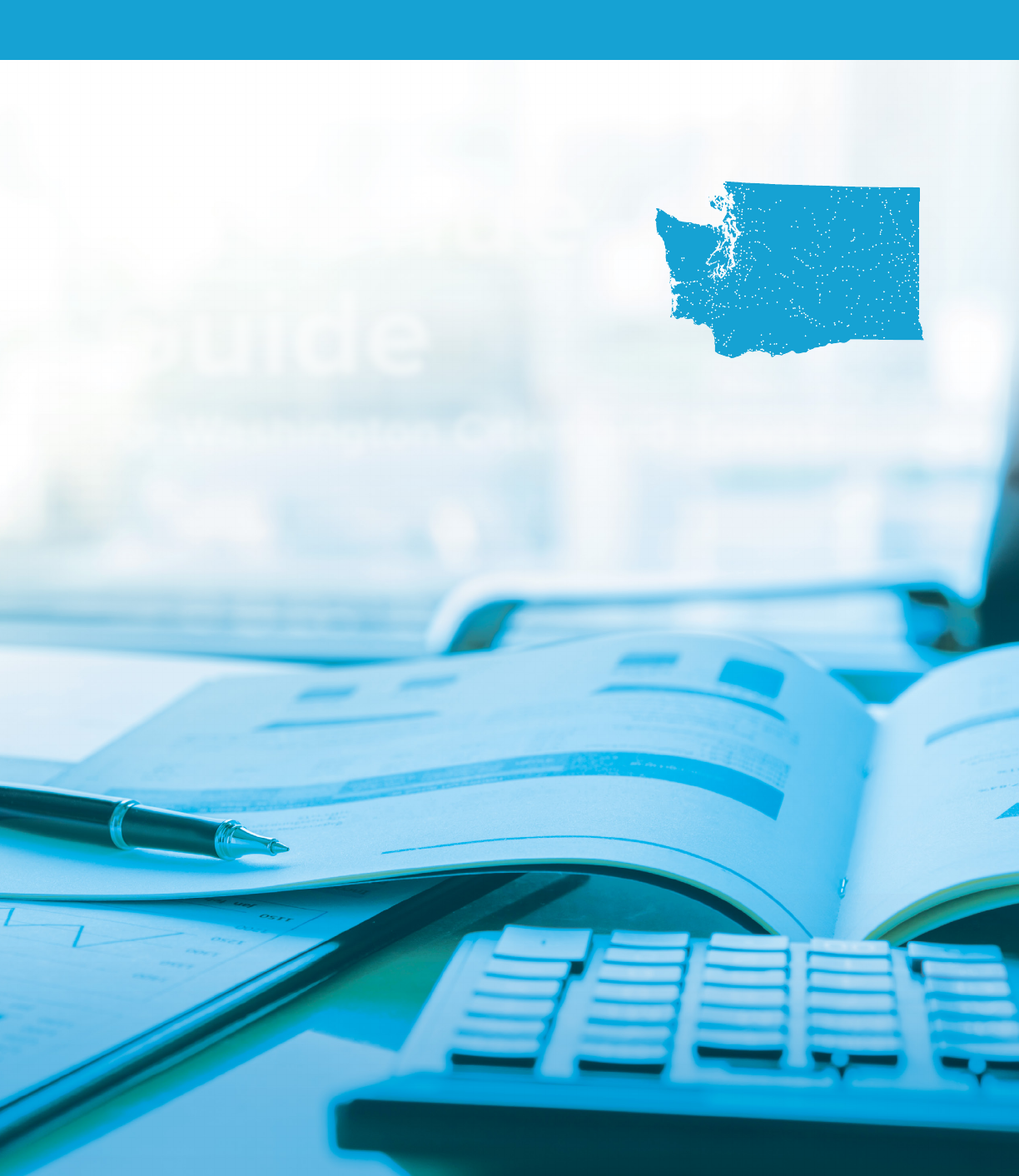
AUGUST
Revenue
Guide
for Washington Cities and Towns

I
Revenue Guide for Washington Cities and Towns | AUGUST 2024
2019 re-write created in partnership with
The Center for Government Innovation, a service of the Washington State Auditor’s Oce
REVENUE GUIDE FOR WASHINGTON CITIES AND TOWNS
Copyright © 2024 by the Municipal Research and Services Center of Washington (MRSC). All rights reserved.
Except as permitted under the Copyright Act of 1976, no part of this publication may be reproduced or
distributed in any form or by any means or stored in a database or retrieval system without the prior written
permission of the publisher; however, governmental entities in the state of Washington are granted permission
to reproduce and distribute this publication for ocial use.
DISCLAIMER
The content of this publication is for informational purposes only and does not represent criteria for legal or
audit purposes. It is intended to provide city sta and ocials with an overview of their available revenue
options, restrictions on the use of such revenues, and key questions to consider. It is not intended to replace
existing prescriptive guidance in the BARS Manual, issued by the State Auditor’s Oce. You should contact
your own legal counsel if you have a question regarding your legal rights or any other legal issue.
MRSC MISSION
Trusted guidance and services supporting local government success.
MRSC
OFFICE: 225 Tacoma Ave S., Tacoma, WA 98405
MAILING: 1712 6th Ave, Suite 100, PMB 1330, Tacoma, WA 98405
(206) 625-1300 | (800) 933-6772
www.MRSC.org
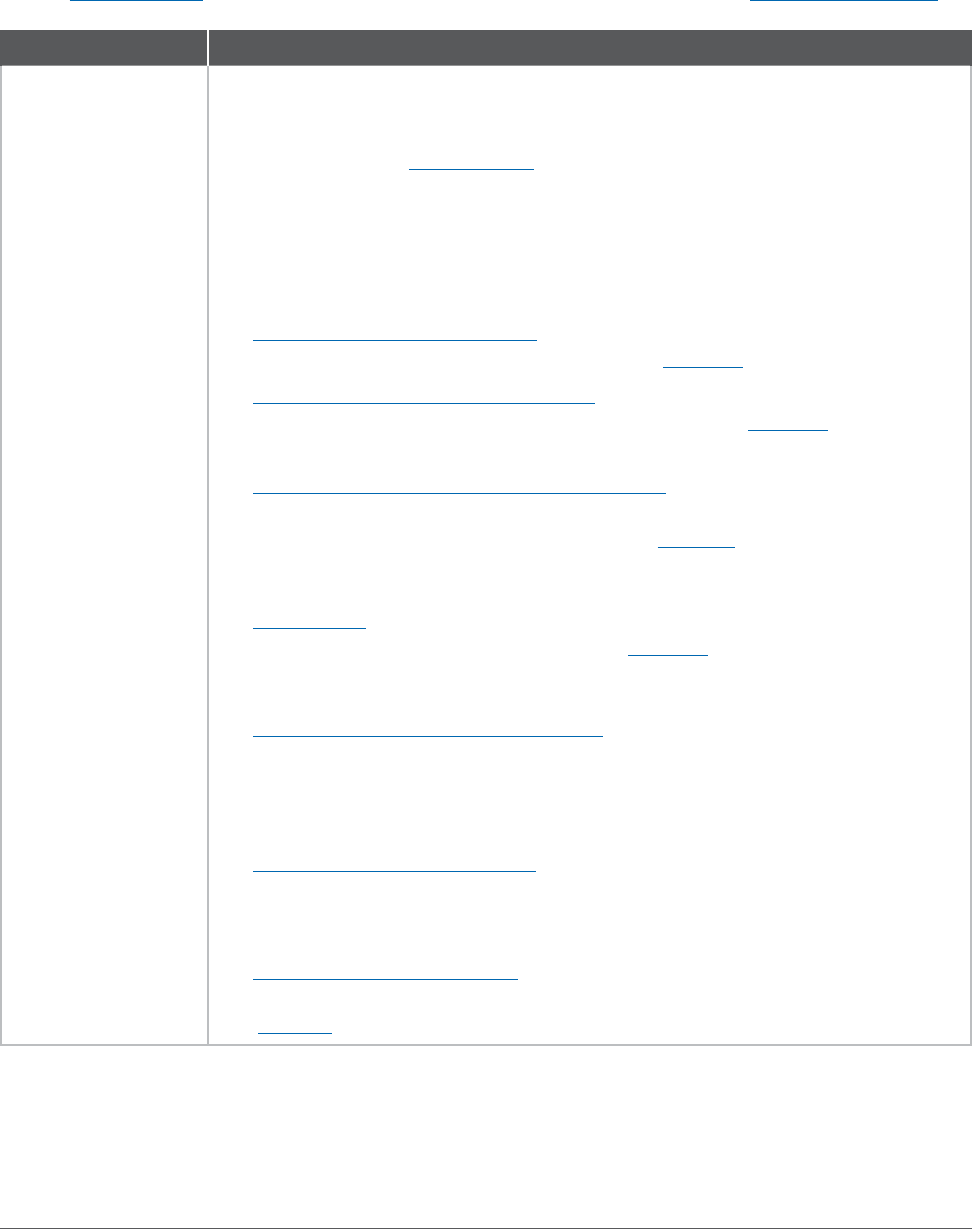
II
Revenue Guide for Washington Cities and Towns | AUGUST 2024
Revision History
MRSC does our best to update this publication every year to reflect any new legislation or other relevant
information impacting city and town revenues. Below is a summary of significant recent changes over the last three
legislative sessions. If you are aware of any other sections that you think need to be updated or clarified, please
contact [email protected]. To make sure you have the most recent version, please go to mrsc.org/publications.
DATE SUMMARY
August 2024 A Brief History of Local Taxing Power in Washington
• Cities and towns are prohibited from taxing any individual person on any form of
personal income (Initiative ).
Retail Sales and Use Taxes
• Clarified that there are certain exceptions to the destination-based sales tax,
including motor vehicle and boat sales which are taxed based on the location of
the dealership/seller.
• “Basic” Sales Tax/First Half-Cent. Cities and towns may enter into interlocal
agreements to share a portion of this revenue (HB ).
• “Optional” Sales Tax/Second Half-Cent. Cities and towns may enter into
interlocal agreements to share a portion of this revenue (HB ). All cities,
towns, and counties now impose the full .% “optional” sales tax.
• Aordable Housing Sales Tax Credit (HB ). Revenues may now be spent
on housing and services for people at or below % of local median income if
the housing is intended for owner occupancy (SB ).
Property Taxes
• Levy Lid Lifts. Supplanting restrictions for multi-year levy lid lifts have been
removed from jurisdictions in King County (HB ).
Real Estate Excise Taxes (REET)
• REET in Lieu of “Second Half” Sales Tax. Clarified that revenues are restricted in
same manner as REET 1, but that no jurisdictions are eligible any more as all cities,
towns, and counties have now imposed the optional “second half” sales tax.
“State Shared” Revenues
• Cannabis (Marijuana) Excise Tax. Updated statutory reference; clarified that first-
class cities and code cities might be able to impose local cannabis excise taxes.
Other Revenue Sources
• Tourism Promotion Area Fees. Fees do not apply to any lodging business,
lodging unit, or lodging guest designated as exempt by the legislative body
(HB 2137).
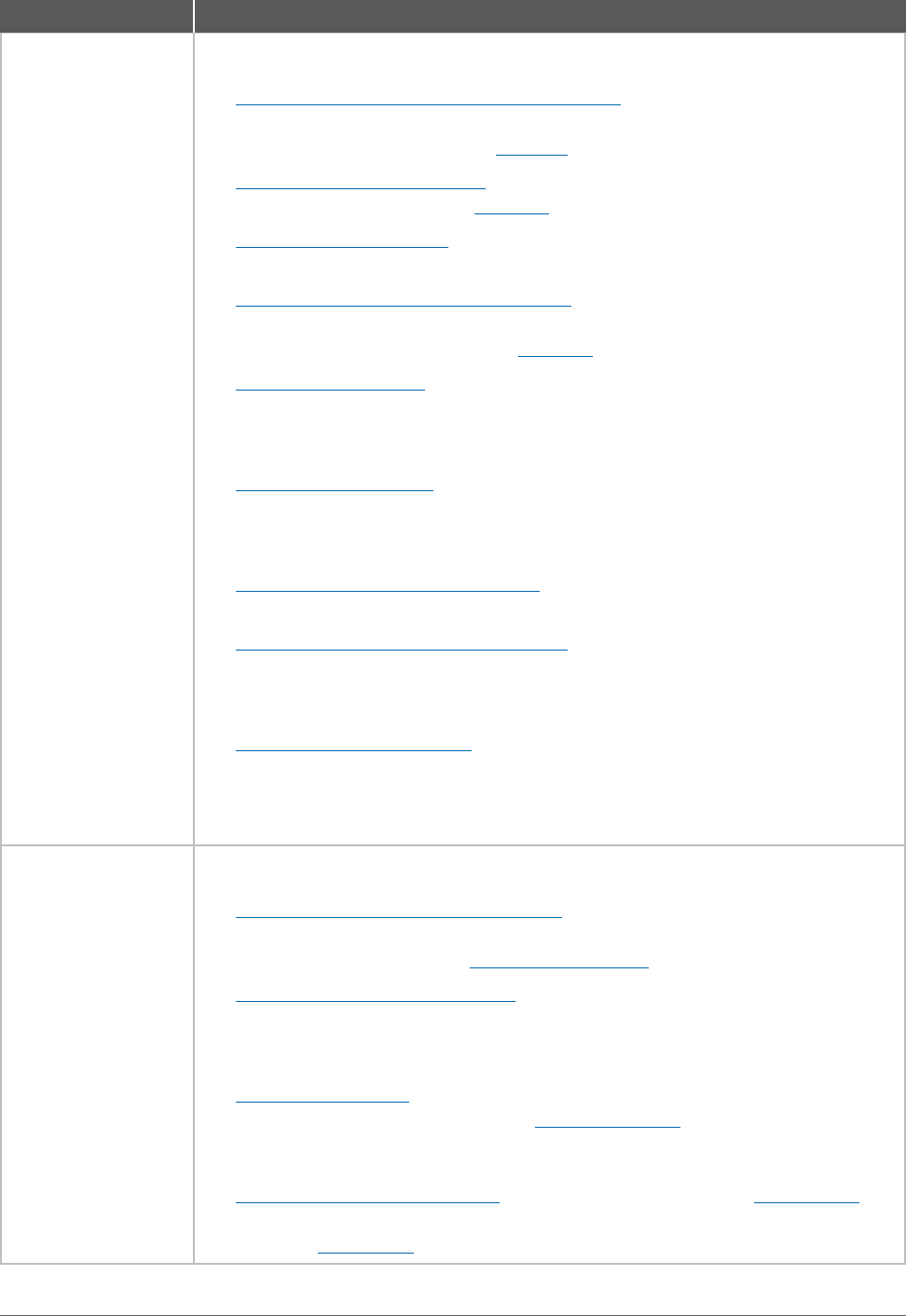
III
Revenue Guide for Washington Cities and Towns | AUGUST 2024
DATE SUMMARY
November 2023 Retail Sales and Use Taxes
• Aordable Housing Sales Tax Credit (HB ). New legislation allows all
jurisdictions to use revenues for rental assistance and limited administrative
costs, regardless of population (SB ).
• Annexation Services Sales Tax. New legislation temporarily reinstates and
expands this sales tax credit (HB ).
• Criminal Justice Sales Tax. Removed reference to “fiscal flexibility” bill,
which expires December , .
• Cultural Access Program (CAP) Sales Tax. New legislation allows jurisdictions to
impose sales tax councilmanically; through December , this sales tax
may only be imposed by counties (HB ).
• Public Safety Sales Tax. Removed reference to “fiscal flexibility” bill, which
expires December , .
Lodging Tax (Hotel/Motel Tax)
• Reporting Requirements. Removed reference to exact date of JLARC reporting
deadline. Deadline is established internally by JLARC and subject to change.
Real Estate Excise Taxes
• REET – The “First Quarter Percent.” Removed reference to “fiscal
flexibility” bill, which expires December , .
• REET – The “Second Quarter Percent.” Removed reference to “fiscal
flexibility” bill, which expires December , .
“State Shared” Revenues
• Criminal Justice Distributions. Removed reference to “fiscal flexibility” bill,
which expires December , .
• Streamlined Sales Tax (SST) Mitigation Payments. Deleted section; payments
expired June 30, 2021.
December 2022 Retail Sales and Use Taxes:
• Transportation Benefit District Sales Tax. Maximum authority increased to 0.3%;
up to 0.1% can potentially be imposed councilmanically; may be renewed in 10-
year increments indefinitely (ESSB 5974 § 406-407).
• Timing of Sales Tax Rate Changes. Updated Department of Revenue contact
information.
Other Excise Taxes:
• Border Area Fuel Tax. Maximum voter-approved tax rate increased to cents
per gallon plus inflation adjustment. (ESSB § ).
“State Shared” Revenues:
• Cannabis (Marijuana) Excise Tax. Distribution formula changed (ESSB ).
Updated terminology from “marijuana” to “cannabis” for consistency with new
state law (SHB ).

IV
Revenue Guide for Washington Cities and Towns | AUGUST 2024
Contents
Introduction
How to Use this Document
A Brief History of Local Taxing Power in Washington
Key Considerations for Evaluating Revenue Sources
Key Considerations for Voted Revenue Sources
Key Deadlines for Voted Property Taxes and Sales Taxes
Property Taxes
What is a Budget-Based Property Tax?
Maximum Aggregate Levy Rates
Regular Levy (General Fund)
Aordable Housing Levy
Cultural Access Program (CAP) Levy
Emergency Medical Services (EMS) Levy
Excess Levies (Operations & Maintenance)
G.O. Bond Excess Levies (Capital Purposes)
Refunds and Refund Levies
The 1% Annual Levy Lid Limit (“101% Limit”)
Banked Capacity
Levy Lid Lifts
Validation/Voter Turnout Requirements
Annual Levy Certification Process
Receipt of Property Tax Revenues
Retail Sales and Use Taxes
What Items Are Taxed?
Sales Tax Exemptions
What is a Use Tax?
“Basic” Sales Tax/First Half-Cent

V
Revenue Guide for Washington Cities and Towns | AUGUST 2024
“Optional” Sales Tax/Second Half-Cent
Aordable Housing Sales Tax Credit (HB 1406)
Annexation Services Sales Tax
Criminal Justice Sales Tax
Cultural Access Program (CAP) Sales Tax
Housing & Related Services Sales Tax
Mental Health & Chemical Dependency Sales Tax
Public Safety Sales Tax
Transit Sales Tax
Transportation Benefit District Sales Tax
Timing of Sales Tax Receipts
Timing of Sales Tax Rate Changes
Maximum Tax Rate for Sales of Lodging
Business and Utility Taxes & Fees
Business and Occupation (B&O) Taxes
Utility Taxes
Brokered Natural Gas Use Tax
General Business License Fees
Regulatory Business License Fees
Revenue-Generating Business License Fees (“Head Taxes”)
Lodging Tax (Hotel/Motel Tax)
“Basic” or “State-Shared” Lodging Tax
“Additional” or “Special” Lodging Tax
Lodging Tax Advisory Committees and Use of Funds
Reporting Requirements
Real Estate Excise Taxes (REET)
REET 1 – the “First Quarter Percent”
REET 2 – the “Second Quarter Percent”
REET In Lieu of “Second Half” Sales Tax
Other REET Options

VI
Revenue Guide for Washington Cities and Towns | AUGUST 2024
Other Excise Taxes
Admission Tax
Border Area Fuel Tax
Commercial Parking Tax
Gambling Tax
Leasehold Excise Tax
Local Household Tax
Local Option Gas Tax
Timber Excise Tax
“State Shared” Revenues
Cannabis (Marijuana) Excise Tax
Capron Refunds
City-County Assistance (ESSB 6050) Distributions
Criminal Justice Distributions
Fire Insurance Premium Tax
Liquor Distributions
Motor Vehicle Fuel Tax (MVFT)
Multimodal Funds and Increased MVFT
Public Utility District (PUD) Privilege Tax
Other Revenue Sources
Franchise Fees
Impact Fees – Growth Management Act (GMA)
Impact Fees – Local Transportation Act (LTA)
Investments (Interest Earnings)
Parking Meters
Surplus Transfers from Utilities and LIDs
Tourism Promotion Area Fees
Trac and Parking Fines
Transportation Benefit District Vehicle License Fees
Utility Rates and Charges
Other Fees and Charges

VII
Revenue Guide for Washington Cities and Towns | AUGUST 2024
Special Taxing Districts
Fire Protection District
Library District
Metropolitan Park District
Public Facilities District
Regional Fire Authority
Transportation Benefit District
Appendices: Major Revenue Sources by Program Area
Appendix A – Unrestricted Revenues
Appendix B – Aordable Housing
Appendix C – Arts, Science, and Cultural Programs
Appendix D – Capital Projects and Facilities
Appendix D – Capital Projects and Facilities – continued
Appendix E – Fire and Emergency Medical Services Services
Appendix F – Mental Health and Substance Abuse
Appendix G – Parks and Recreation
Appendix H – Police and Criminal Justice
Appendix I – Tourism Promotion
Appendix J – Transportation
Appendix K – Miscellaneous Revenues
Recommended Resources

1
Revenue Guide for Washington Cities and Towns | AUGUST 2024
Introduction
The foundation of any city government is its fiscal health. The revenues it receives, both present and projected
for the future, set the stage for discussing what services to provide as well as the level of those services –
including the facilities, equipment, and infrastructure that will be needed.
MRSC’s Revenue Guide for Washington Cities and Towns provides information on all the major revenue
sources and most of the minor ones that are available to cities and towns in Washington State. This guide is
intended to help city elected ocials and sta members by providing a comprehensive explanation of the
city’s revenue sources and potential new revenue options to support those services your city has determined
are essential to its taxpayers. This guide is not an administrative manual – for that level of detail, you should
refer to resources such as the Department of Revenue’s Property Tax Levies Operations Manual or the Tax
Reference Manual on State and Local Taxes.
The Revenue Guide for Washington Cities and Towns has been one of MRSC’s core publications for many
years. It was first published in 1992 with an update released in 2009. The current edition was completely
rewritten and re-organized in 2019 to help clarify the multitude of often confusing revenue options, as well as
to include new and additional revenue sources that were not addressed previously.
This publication has been written and researched by MRSC consultants, and any conclusions within this
document are MRSC’s and MRSC’s alone. The primary authors are Toni Nelson and Steve Hawley, with
subsequent contributions by Eric Lowell. Graphics and document assembly have been provided by Marissa
Roesijadi and Angela Mack.
The Center for Government Innovation of the State Auditor’s Oce contributed funding for the 2019 re-write, as
well as valuable review and feedback. We would particularly like to thank Kristen Harris and Sherrie Ard at SAO
for their review and assistance throughout this process. We would also like to thank Alice Ostdiek at Stradling,
Yocca, Carlson & Rauth, P.C. for her review of the property tax chapter, as well as all other individuals who
provided feedback and assistance.
If you have any questions, comments, concerns, or suggestions regarding this document, please contact MRSC.
Table of Contents

2
Revenue Guide for Washington Cities and Towns | AUGUST 2024
How to Use this Document
MRSC’s Revenue Guide for Washington Cities and Towns is intended to help city sta members and elected
ocials better understand their existing revenue sources and potential options for new revenues. The
document is organized by type of revenue:
• Property taxes
• Sales and use taxes
• Business and utility taxes & fees
• Lodging taxes (hotel/motel tax)
• Real estate excise taxes (REET)
• Other excise taxes
• “State-shared” revenues
• Other revenue sources
• Special taxing districts
There is also an appendix that provides a “menu” of the major revenue sources by program area, such as
transportation revenues, police and criminal justice revenues, or unrestricted revenues.
We also provide a basic history of local taxing powers in Washington, as well as a series of in-depth questions
to help you evaluate potential new revenue sources, whether voted or non-voted.
This document is designed to be viewed electronically or printed as a hard copy. However, viewing this
document electronically will provide you with maximum interactivity and functionality. (We recommend Adobe’s
free Acrobat Reader software program to ensure all features work correctly.)
If you are viewing this document electronically, the table of contents is interactive, which allows you to click on
any topic and go directly to that page. At any time, you can return to the table of contents using the navigation
button at the bottom of each page. Throughout this guide, you will also find many hyperlinks that will take you
to other sections of the document or online resources such as RCWs or helpful resources.
You can also use Ctrl-F (Windows) or Command-F (Mac) to search for specific keywords within this document.
MRSC will update this publication each year as needed to reflect new legislation, changes in interpretation
made by court decisions or Attorney General opinions, and other changes as appropriate. To make sure you
are using the most up-to-date version of this publication, please visit mrsc.org/publications. There is a revision
history near the beginning of this document that summarizes the recent changes.
If you have any questions, comments, concerns, or suggestions regarding this document, please contact MRSC.
Table of Contents

3
Revenue Guide for Washington Cities and Towns | AUGUST 2024
A Brief History of Local Taxing Power in
Washington
1
Local governments in Washington State do not possess inherent taxing authority and must obtain the authority
to impose taxes and fees from the state constitution and/or statutes adopted by the state legislature.
At the most basic level, there are two categories of taxes in Washington: property taxes and excise taxes.
Property taxes are the oldest form of taxation in Washington and are the largest single revenue source for
many local governments. Excise taxes are the broadest category of taxes and represent all other forms of taxes
except for property tax, with sales taxes being the most significant excise tax for local governments.
The history of local government taxing power in Washington dates back to territorial days, and up until the
early 1930s property taxes were the predominate form of revenue. The first state legislative session in 1890
also authorized first, second, third, and fourth class cities to impose business license taxes, and by 1932
Seattle was levying an occupation tax which is believed to be the first instance of a city imposing a business
& occupation (B&O) tax.
During the Great Depression of the 1930s, significant changes were made to the array of taxes that were
imposed by Washington State, some of which significantly impacted local government. The first change was
placing a limit on the cumulative rate of property taxes that could be imposed upon the taxpayer in any given
year – people’s Initiative 64, which reduced property taxes by almost 50%. This resulted in the second most
significant change in state taxing power – the imposition of a variety of excise taxes. The Revenue Act of 1935
reduced the state’s dependency upon property tax by authorizing a wide array of excise taxes, including a
retail sales tax and new business and occupation taxes.
However, this additional excise authority was only granted to the state. It was not until 1970 that the state finally
provided legislative authority to cities and counties allowing them to impose a sales and use tax of 0.5% for
general local government purposes. In 1982, the legislature authorized cities and counties to impose a second
0.5% on retail sales for general government purposes, resulting in a combined total of 1% that is still in place
today. During this same legislative session, there were new restrictions placed on cities’ authority to impose
B&O and utility taxes. These significant changes in taxing authority provided many local governments with
opportunities to diversify their revenue streams.
Over the course of the past several decades, the state legislature has authorized cities and towns to impose
other sales taxes and excise taxes for specific purposes, all of which will be discussed in the following pages of
this Revenue Guide.
Property taxes and excise taxes are imposed dierently – property taxes are based upon changing property
values and must be re-calculated and re-imposed every year, while excise taxes, once adopted, remain in eect
on all taxable events that occur now and in the future.
Property taxes have also seen a number of additional restrictions over the past century, beyond the cap on
the cumulative property tax rate adopted in the 1930s. In 1971, a “106% levy lid” on property tax increases from
1 This information comes primarily from The Closest Governments to the People: A Complete Reference Guide to Local
Government in Washington State, by Steve Lundin and edited by the Division of Governmental Studies and Services at
Washington State University. A copy of the full document is posted on the MRSC website.
Table of Contents
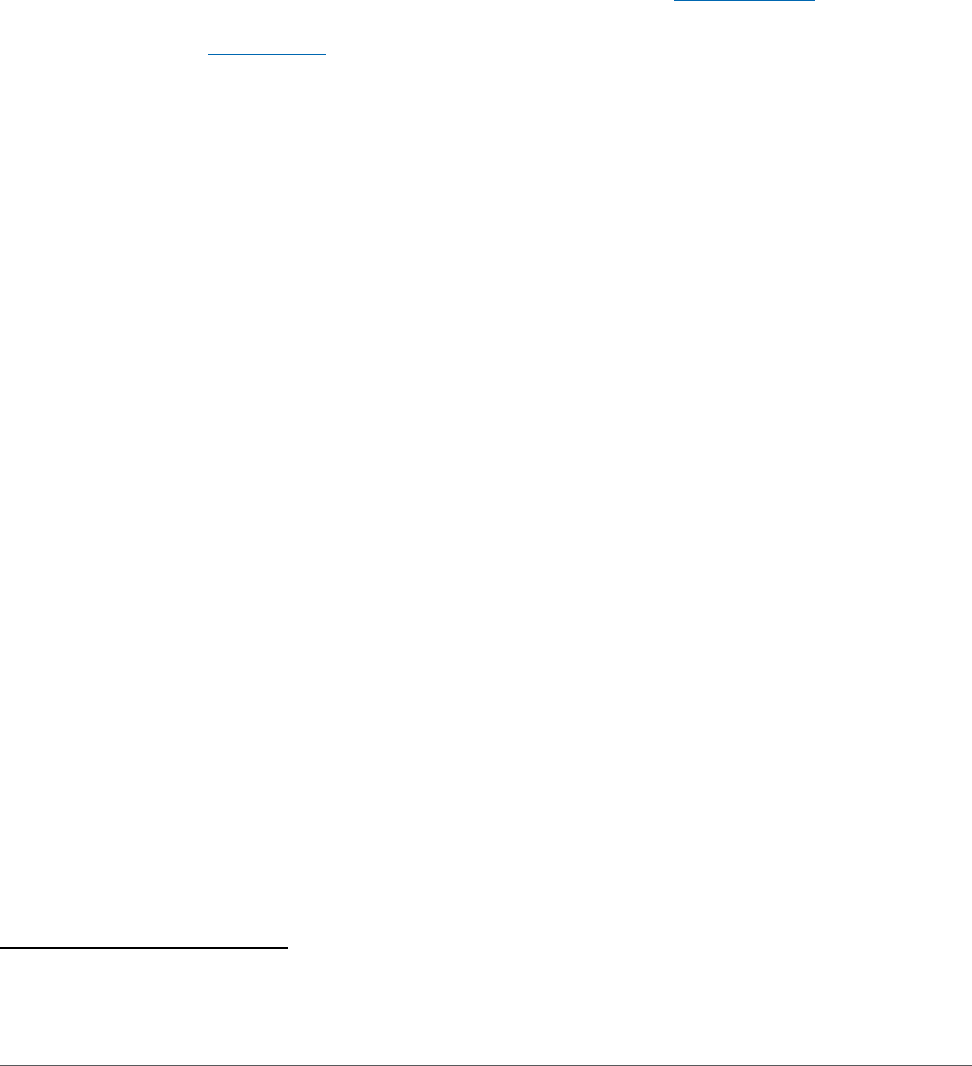
4
Revenue Guide for Washington Cities and Towns | AUGUST 2024
one year to the next was enacted, which limited the total amount of property tax revenue local governments
could generate each year. In 2001, voters approved Initiative 747, ultimately resulting in legislation that
reduced the limit on annual increases for property tax levies to 1% – also known as the “101% levy lid,” which
is still in eect today.
In addition to property taxes and excise taxes, many analysts recognize a third category of taxes: income
taxes, which have been imposed by the vast majority of states as well as a number of cities around the
country. However, income taxes are not currently used at either the state or local levels in Washington. At the
same time that voters placed the first restrictions on property taxes during the Great Depression, voters also
approved a statewide graduated income tax (Initiative 69). However, a divided state Supreme Court soon
struck the initiative down as unconstitutional, ruling that an income tax was a property tax and that, as such,
a graduated income tax violated the uniformity clause of the state constitution.
2
Later attempts to establish
an income tax were also unsuccessful. In 1984, the state legislature enacted RCW 36.65.030, which prohibits
any city or county from levying a tax on “net income,” and in response to a proposed voter initiative in 2024,
the legislature enacted RCW 1.90.100 which prohibits the state, counties, cities, or other local jurisdictions from
taxing any individual person on any form of personal income.
Local government revenues have evolved significantly throughout Washington’s history and continue to do so
today. This Revenue Guide provides the most current and up-to-date information, but each legislative session
brings new thoughts, ideas, and concepts that result in changes and additional options. We will update this
guide as needed to reflect those changes.
2 This interpretation has been criticized by legal scholars.
Table of Contents

5
Revenue Guide for Washington Cities and Towns | AUGUST 2024
Key Considerations for Evaluating
Revenue Sources
There are several factors to consider when analyzing if it’s in the city’s best interests (both fiscal and political) to
impose new taxes and fees. Local governments cannot necessarily provide all of the services requested by the
public, and of all the revenue options available, there are some that will meet your city’s goals and objectives
and others that will not.
To that end we have provided a list of key questions to consider when identifying and evaluating potential
revenue sources. Answering these questions can help you more clearly articulate your city’s revenue goals.
• What do you need the revenue for? Some revenue sources are unrestricted and may be used for any lawful
governmental purpose. Others are restricted to specific purposes under state law. Some may be imposed
permanently, while others are temporary. Are you looking to increase your general fund (current expense)
budget or pay for basic governmental services, operations, or maintenance? Creating a new program or
preparing for a major capital project? Bridging a temporary revenue shortfall or replacing lost funding? Are
you planning to supplant (replace) existing funding and re-structure how a program is financed? If so, make
sure you read the statutes carefully, as some revenue sources specifically restrict or prohibit supplanting.
• How much revenue do you need to generate? Your local revenue capacity depends on factors such as
statutory limitations, your local economy, and your demographic profile. For instance, is your city largely
residential, or does it have lots of businesses and retail sales? Do you have hotels and tourist attractions?
How active is your real estate market?
• Who will pay and who will benefit? Will the taxes or fees be paid by local property owners? Businesses
and utility companies? Shoppers? Tourists? Real estate buyers and sellers? Vehicle owners? Property
developers? Will the revenue source result in an overall tax increase, or is it a credit against an existing
state or county tax? Who will benefit from the additional spending?
• Do you need voter approval? If so, you must plan ahead and consider additional factors such as election
timing, election costs, and voter turnout as described on the next page.
• When do you need the revenue? Some revenue sources have certain deadlines set by state statute. For
instance, property taxes may only be levied once a year and must be certified to the county assessor by
November 30 for the forthcoming year, while sales tax rates may only change on January 1, April 1, or July
1 and the state Department of Revenue must receive notice at least 75 days in advance. You may have to
wait several months before you start receiving these additional revenues, or longer if you time it poorly. It
pays to include this analysis in your planning process.
• Is the revenue source subject to possible referendum? You can’t please everyone, but presumably you
need a certain level of support from local residents or businesses. If your city has adopted powers of
initiative and referendum, some revenue sources could be subject to referendum. Even if your city or town
does not have powers of initiative and referendum, some revenue options are still subject to referendum
as prescribed by statute.
• What are the limitations? For instance, property tax revenues are generally limited to a 1% annual
increase, even if your assessed valuation is increasing faster than 1%, and certain property tax levies could
potentially be reduced through prorationing. Sales taxes have no such limitations but can be significantly
Table of Contents

6
Revenue Guide for Washington Cities and Towns | AUGUST 2024
impacted during economic downturns. And “state shared” revenues could be reduced or eliminated during
any legislative session, particularly if state revenues are declining.
• Are there any unique statutory requirements? Some revenue sources may have other specific statutory
requirements – for instance, requiring revenue sharing with the county, requiring the creation of an
advisory committee, establishing a slightly dierent tax base than usual, etc.
KEY CONSIDERATIONS FOR VOTED REVENUE SOURCES
If your revenue source requires voter approval, there are additional considerations, such as:
• When is the filing deadline? For voted revenue sources, you must consider not only the notification
deadlines (such as certifying property taxes to your county assessor and notifying DOR of sales tax rate
changes), but also the election dates and filing deadlines discussed below.
To ensure timely receipt of funds, you must work backwards. For instance, if you want to increase next
year’s property tax revenues through a levy lid lift: property taxes must be certified to the county assessor
no later than November 30, which means the levy lid lift must appear before voters no later than the
general election in early November, which means you must file notice with the county auditor no later than
the date of the primary election in early August. If you wait for “budget season” in August or September to
start considering the levy lid lift, it will be too late – you will have missed the deadline, and any potential
receipts from the levy lid lift will be delayed for an entire year.
For a summary of the various deadlines, see Key Deadlines for Voted Property Taxes and Sales Taxes.
• What are the approval requirements? Does the ballot measure require a simple majority (50% plus one),
such as a sales tax or levy lid lift? Or does it require a 60% supermajority, like bond measures, excess O&M
levies, and certain EMS levies? Are there minimum validation (voter turnout) requirements?
• When should the measure appear on the ballot? There are four possible election dates for local
governments in Washington – special elections in February and April, the primary election in August, and
the general election in November (RCW 29A.04.330). Most measures may appear on the ballot at any one
of those elections, but there are a couple exceptions (such as public safety sales taxes, which by statute
may only appear at a primary or general election).
Voter turnout will almost certainly be highest in November and lowest in February and April, and the
composition of the electorate may dier for some jurisdictions. Election timing may also aect election
costs and the timing of receipts.
• What other measures or candidates are appearing on the ballot? Ask around to find out what other ballot
measures may be appearing before your city’s voters. It’s possible you might not want to go head-to-head with
certain ballot measures, as voters may not like voting on too many taxes at the same time. Alternatively, you
might want to “ride the coattails” of a popular measure or candidate by appearing on the same ballot.
• How have other ballot measures fared recently? You can research local ballot measures across the
state at MRSC’s Local Ballot Measure Database, which we update after every election once counties
certify the results. For revenue measures, you can filter by statutory authority (sales taxes, property
taxes, levy lid lifts, etc.), government type (such as city or county), subject (fire protection, libraries,
aordable housing, etc.), or even by county. You may want to contact jurisdictions that have attempted
similar measures to gain their insight.
Table of Contents

7
Revenue Guide for Washington Cities and Towns | AUGUST 2024
• What will you do if the ballot measure fails? Will you abandon your attempt or go back to the drawing
board? Will you be forced to cut services or lay o employees? Will you submit a scaled-back version to
voters in the hopes they will pass it next time?
Or will you submit the exact same measure to voters a second time, in the hopes that the result will be
dierent due to changes in turnout, the composition of the electorate, enhanced public outreach by support
groups, or news media coverage? For instance, some jurisdictions that place an item on the primary election
ballot will file an identical (or very similar) resolution for the November general election. If the measure
succeeds in August it is simply removed from the November ballot, but if it fails it will appear before voters
again in November. It is not uncommon for a ballot measure that failed by several percentage points in a
special or primary election to pass in the next general election, although passage is certainly not guaranteed.
• How much will the election cost? It costs money for counties to administer elections, and counties pass
those costs along to the jurisdictions holding the elections (see RCW 29A.04.410). These costs include
postage and printing for the ballots and voters’ pamphlets, temporary election workers and stang,
supplies, transportation, required elections notices, and administrative overhead costs.
If your city already has other city measures or candidates on the same ballot – such as city council/mayoral
elections, which typically occur at primary and general elections in odd-numbered years
3
– the additional
costs for a ballot measure will be minimal. But if the city does not have other measures or candidates on
the ballot and would not otherwise be conducting an election, the election costs will be significantly higher.
Election costs may also vary depending on whether you are submitting the measure at a special, primary,
or general election. For example, special election costs may be higher than primary or general election
costs because there are typically fewer local governments participating in special elections and sharing the
costs. Contact your county auditor to get estimates.
• What are the ballot title requirements? The ballot title is the actual text of the measure that will appear on
voters’ ballots. The ballot title must be written by the city attorney and must comply with RCW 29A.36.071
regarding ballot title composition and length. However, some revenue sources have additional ballot title
requirements set by statute.
• Will your city prepare informational materials? RCW 42.17A.555 prohibits city elected ocials and
employees from using “public facilities” to promote or oppose any ballot proposition. Broadly speaking, this
means city sta and ocials cannot support or oppose a ballot proposition during work hours, within their
ocial capacities, or using city supplies, equipment, funds, or facilities. However, cities may prepare and
distribute fact sheets or other informational materials for voters if such information is fair and objective and
the city shares the information via normal, customary means of providing information. For more information,
see our webpage on Use of Public Facilities to Support or Oppose Ballot Propositions.
3 City ocials are elected in odd-numbered years pursuant to RCW 29A.04.330.
Table of Contents
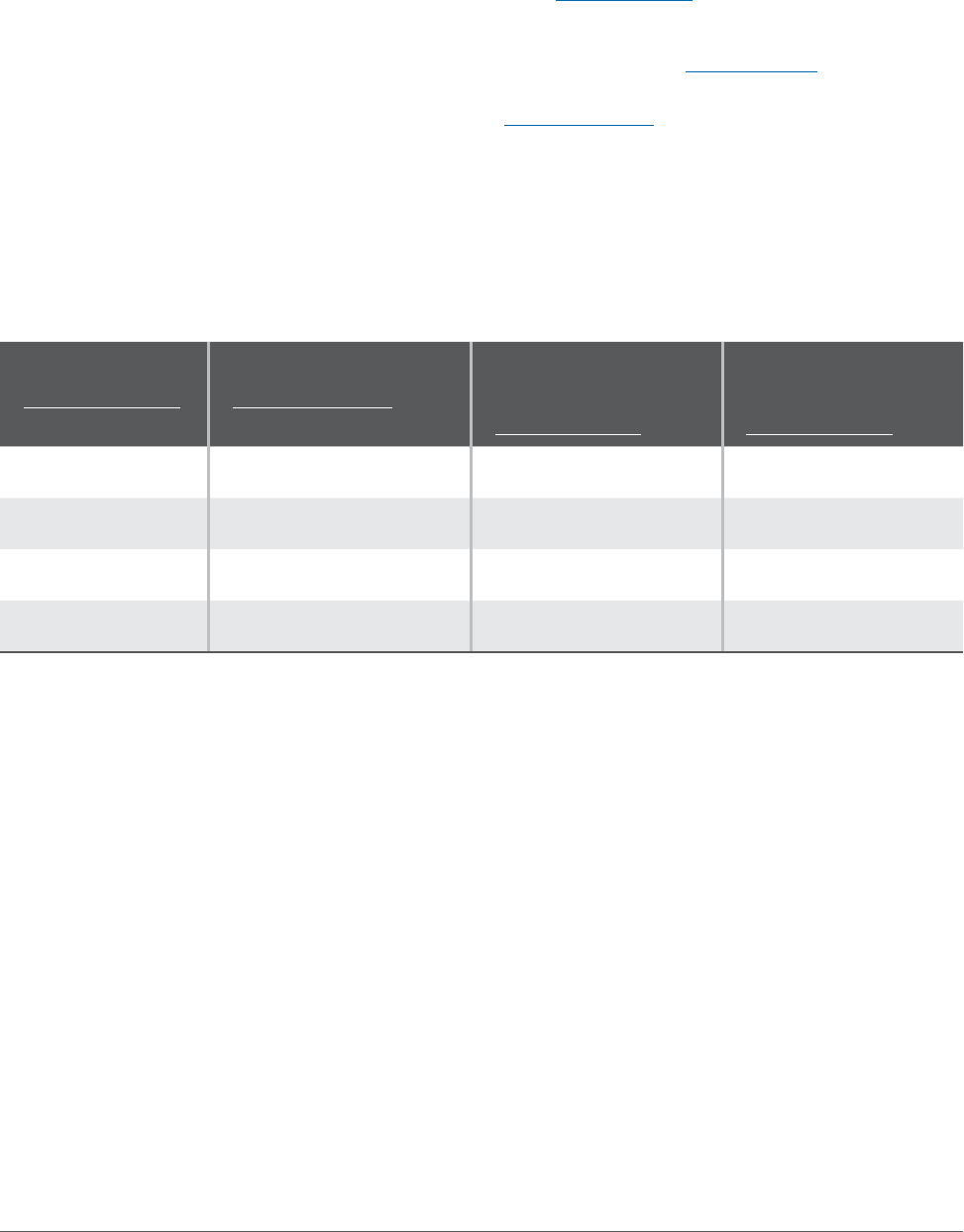
8
Revenue Guide for Washington Cities and Towns | AUGUST 2024
KEY DEADLINES FOR VOTED PROPERTY TAXES AND SALES TAXES
As mentioned previously, if you are considering a voted revenue increase you must plan ahead and keep the
various statutory requirements and deadlines in mind. Here are key dates to remember.
• Property tax levies are set on an annual basis. All city property taxes for the upcoming year must be
certified to the county assessor no later than November 30 (RCW 84.52.070).
• Sales tax rate changes may only take place on January 1, April 1, or July 1, and may not take eect until 75
days after the state Department of Revenue receives notice of the change (RCW 82.14.055).
The election dates and filing deadlines are established by RCW 29A.04.330. To place an item on the ballot
for the February or April special elections, your jurisdiction must file the resolution at least 60 days before the
election date. For the primary election, you must file the resolution no later than the Friday immediately before
the first day of regular candidate filing in May. And for the general election, you must file the resolution no later
than the date of the August primary election.
Below is a quick summary, assuming the county promptly notifies DOR of any sales tax changes and certifies its
levy to the county assessor by November 30.
Election
(RCW 29A.04.330)
Filing deadline
(RCW A..)
Approved sales tax
increases take eect
(RCW ..)
Approved property tax
increases take eect
(RCW ..)
February special Early-to-mid December July 1 of election year Next year
April special Late February January 1 of next year Next year
August primary Early-to-mid May January 1 of next year Next year
November general Date of August primary April 1 of next year Next year
Table of Contents

9
Revenue Guide for Washington Cities and Towns | AUGUST 2024
Property Taxes
Property taxes are, for many cities, the primary source of revenue. Most of a city’s property tax revenue comes
from its general fund levy, which may be used for any lawful governmental purpose, but cities also have a few
additional property tax options that may only be used for certain restricted purposes. This chapter will discuss
the property tax authority provided to cities and towns.
Washington’s “budget-based” property tax structure is very complicated. We plan to limit our discussion of
property taxes to what city ocials and sta members really need to know in order to develop property tax
levy projections and to consider potential options, and even that is pretty complicated.
For a for a more detailed look at property taxes, refer to the state Department of Revenue’s Property Tax
Publications, and particularly the Property Tax Levy Manual.
WHAT IS A BUDGETBASED PROPERTY TAX?
Perhaps the most important concept to understand regarding Washington’s property tax system is that it is a
“budget-based” property tax.
This means that cities and other taxing districts, as part of their annual budget process, must first establish the
total dollar amount of property tax revenue they wish to generate for the upcoming year, subject to several
restrictions. Once the total dollar amount is established, the county assessor calculates the levy rate – the rate
that each property owner must pay – based on the total assessed valuation of all properties.
This “budget-based” process is the reverse of most other states in the country. Almost every other state
uses a “rate-based” property tax system, in which governments establish the levy rate that each property
owner must pay, which is then multiplied by the assessed value to determine the total dollar amount of
revenues generated.
There are three main components to the property tax calculation: the levy amount, the assessed value, and
the levy rate.
Levy Amounts vs. Levy Rates
To understand this budget-based system, and in particular the various limitations on how much property tax
revenue local governments can generate, it is extremely important to understand the dierence between levy
amounts and levy rates. Some limitations are based on levy rates, while others are based on levy amounts, and
the two are often confused.
The levy amount – sometimes referred to as simply the “levy” – is the total dollar amount of property taxes to
be collected in one year. In the example on the next page, the levy amount is $1 million.
The levy rate is how much any individual property owner owes, expressed as a dollar amount per $1,000
assessed value. In the example, the levy rate is $2.50 per $1,000 assessed valuation.
Table of Contents

10
Revenue Guide for Washington Cities and Towns | AUGUST 2024
Under the budget-based system, the city establishes its desired levy amount first, and then the county assessor
uses the assessed valuation (discussed in more detail below) to calculate the subsequent levy rate. This
formula is expressed as:
Levy Amount ÷ (Assessed Value ÷ 1,000) = Levy Rate per $1,000 AV
For example:
Levy amount requested by city
for general fund
÷ (Citywide assessed value ÷ 1,000 = Levy rate
$1 million
÷
($400 million ÷ 1,000 = $400,000)
=
$2.50 per $1,000 AV
However, there are multiple restrictions placed on how fast the levy amount can increase, as well as maximum
levy rates for individual levies (such as general fund levies or EMS levies) and maximum aggregate (combined)
levy rates. These restrictions are all intended to protect citizens from excessive taxation, but they also limit
the amount of property tax revenue that local governments can generate. The property tax process can be
complicated and confusing, but we will do our best to explain it in more detail throughout this chapter.
Assessed Value
The other primary factor in determining the levy rate each year is the assessed value. Property taxes are
assessed and collected at the county level. The amount that each property owner pays, and the total property
tax revenue a city can generate, depends in large part on the value of the properties within the city, known as
the assessed value or assessed valuation and commonly abbreviated as AV or A/V.
The assessed valuation is the true and fair value as provided in Article VII, §2 of the WA State Constitution and
further defined in Chapter 458-07 WAC, which states that “true and fair value” means market value and is the
amount of money a buyer of property would pay to a willing seller.
The county assessor’s oce is responsible for assessing all property located wholly within the county, including
both the incorporated areas (cities and towns) and the unincorporated areas of the county. In determining true
and fair value, the assessor may use a sales (market data), cost, or income approach, or a combination of the
three approaches (WAC 458-07-030). In addition, the state Department of Revenue is responsible for assessing
intercounty, interstate, and foreign utility company property (known as state-assessed utilities).
Counties must update assessed valuations for all properties every year, with physical inspections of each
property at least once every six years (RCW 84.41.030 and 84.41.041). Most counties conduct inspections on a
six-year cycle, meaning that they inspect roughly one-sixth of the properties within the county each year and
update their assessed values accordingly. A few counties use a four-year inspection cycle and inspect roughly
one-quarter of the properties each year.
4
The annual revaluations in between each inspection are estimates
based on statistical analysis and market data.
4 As of 2024, 37 counties inspected properties on a six-year cycle, while two counties (Chelan and Ferry) used a shorter
four-year inspection cycle.
Table of Contents
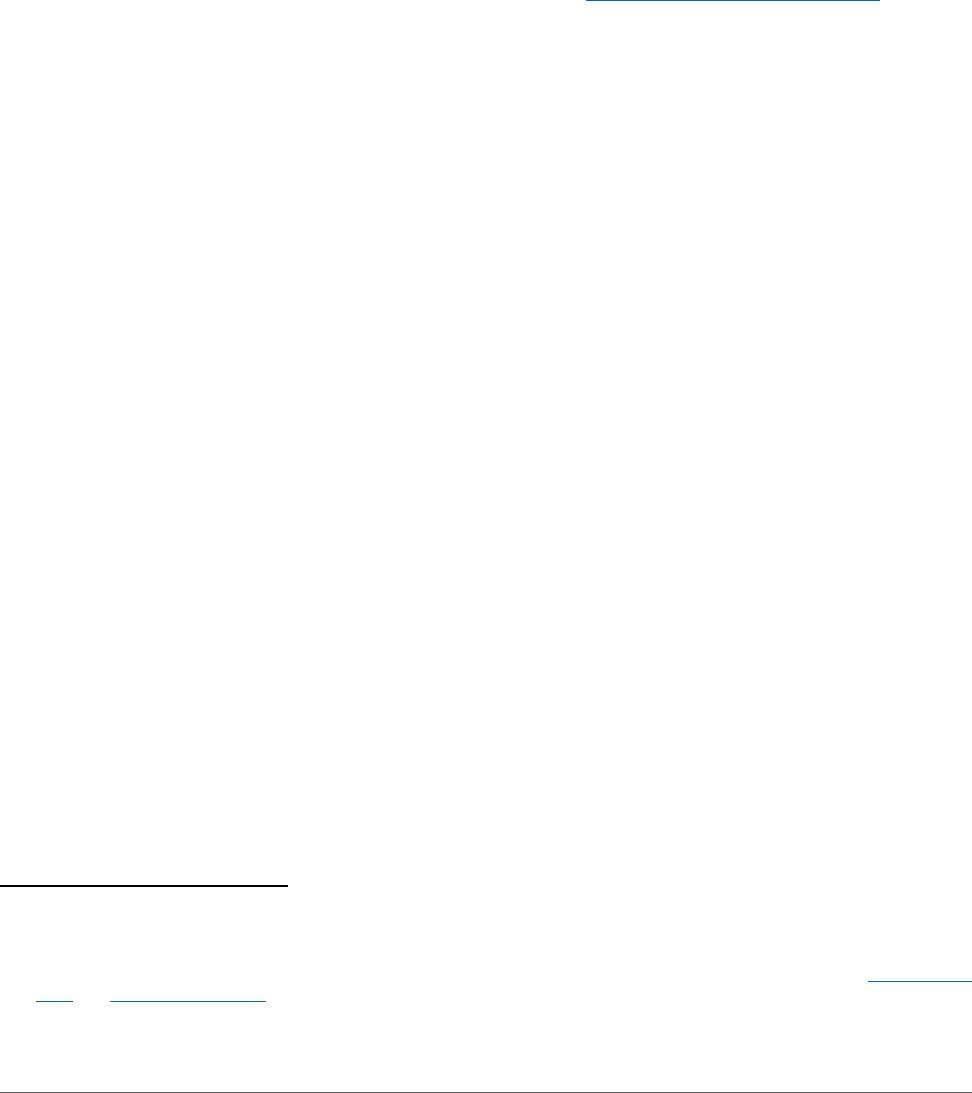
11
Revenue Guide for Washington Cities and Towns | AUGUST 2024
The levy rate for any taxing district must be uniform for each property within its boundaries (article VII, section
2 of the Washington State Constitution). That is to say, a city’s general fund levy rate per $1,000 AV must be the
same for each property within the city.
5
State law also establishes a separate valuation system for certain agricultural, timber, and open space land
based on “current use” value, which is lower than the “true and fair value.”
6
In addition, all properties owned by
federal, state, tribal, and local governments (municipal corporations); public and private schools; and churches
are exempt from property taxes.
The county assessor must notify each taxing district within the county, including every city and town, of its total
assessed value before the levy certification deadline, so the taxing district can calculate its levy amounts for
the upcoming year and certify them to the county assessor by (see Annual Levy Certification Process).
5 However, there may be some exceptions for senior, disabled, or low-income residents. There are also certain tax
abatement programs that reduce a property’s taxable value to provide financial incentives for economic development or
historic preservation.
6 Current use values are permitted under article VII, section 11 of the Washington State Constitution. See also chapter 84.34
RCW and chapter 458-30 WAC.
Table of Contents

12
Revenue Guide for Washington Cities and Towns | AUGUST 2024
MAXIMUM AGGREGATE LEVY RATES
There are several dierent limitations on the maximum levy rate (per $1,000 AV) that cities and other local
governments may impose on property located within their jurisdiction. Some of the limits are aggregate and
limit the total property tax burden on property owners, while others establish maximum levy rates for specific
types of levies such as the city general fund levy or EMS levies.
This section will discuss the aggregate (total combined) levy limitations. The rest of the property tax chapter
contains information on the various types of levies and their maximum levy rates.
Tax Code Areas
To understand maximum aggregate levy rates, it is important to understand the relationship and dierence
between “taxing districts” and “Tax Code Areas.”
• Taxing districts are individual governmental units with property tax authority, such as a county, city, fire
protection district, or library district. Governmental units without property tax authority (such as public
transportation benefit areas) are not considered taxing districts for these purposes.
• Tax Code Areas, or TCAs, are unique combinations of overlapping taxing districts.
To demonstrate how multiple taxing districts overlap to form unique Tax Code Areas, see the example on the
next page. This example shows a hypothetical county with a city and several taxing districts (fire, library, and
public hospital). The districts overlap to form seven dierent Tax Code Areas, no two of which are the same.
(Note that the county itself is actually two separate taxing districts – one for the current expense levy, which is
imposed countywide, and one for the road levy, which is only imposed within unincorporated areas.)
Of course, in reality the picture is often much more complicated, as there are many additional taxing districts
that may be involved such as school districts, park districts, cemetery districts, port districts, public utility
districts, EMS districts, and more. But the same general principles will still apply.
According to the state Department of Revenue, there are approximately 3,200 unique Tax Code Areas
throughout the state as of 2021. The number of TCAs within each county depends on the number of taxing
districts within that county, as well as how they overlap geographically, since each district may have dierent
service boundaries.
Table of Contents
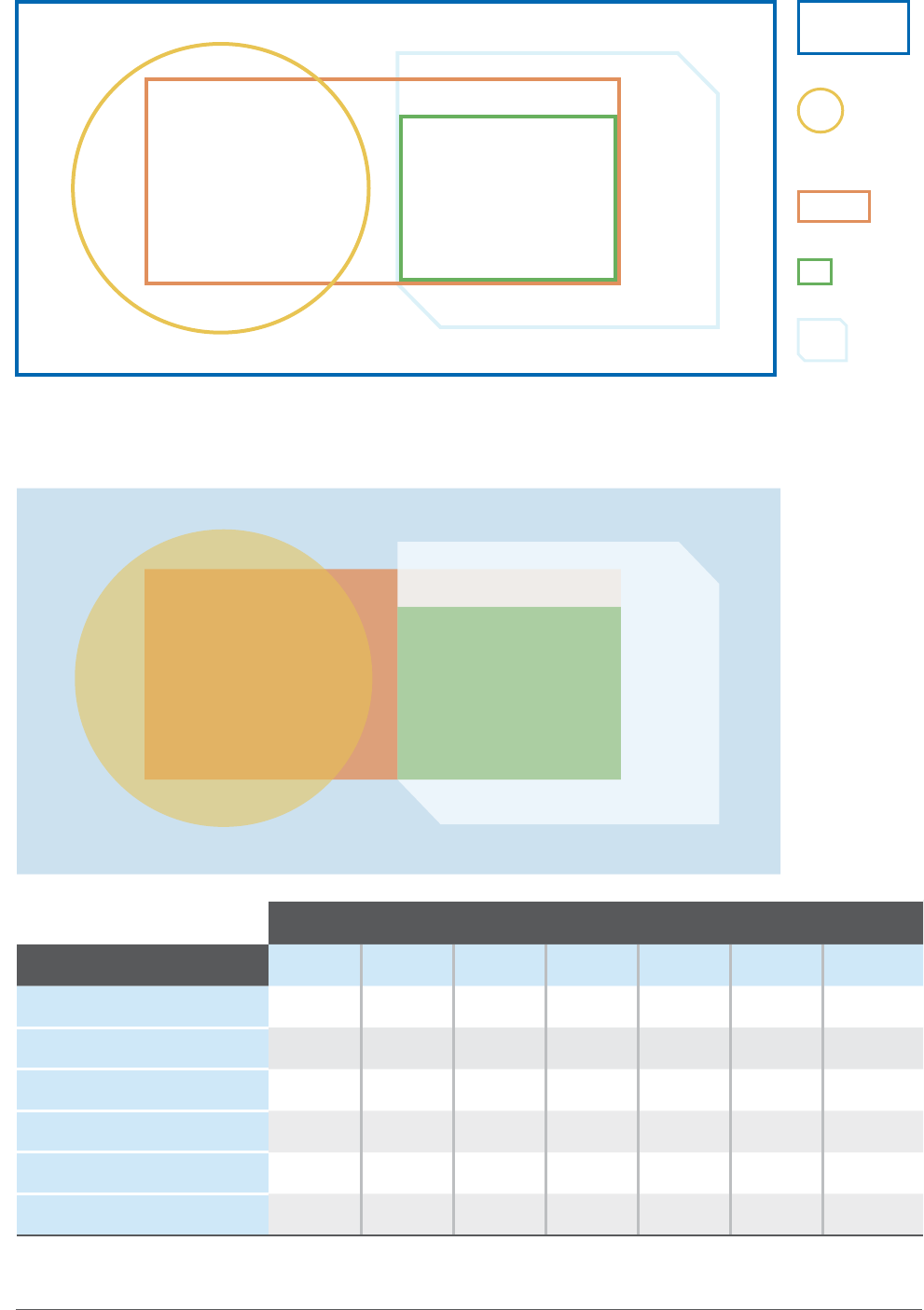
13
Revenue Guide for Washington Cities and Towns | AUGUST 2024
Taxing Districts Example
County*
Public Hospital
District
Fire District
City
Library District
A
B
C
D
E
A B C D E
*County current expense levy is countywide, but county road levy is only in unincorporated areas
Tax Code Areas
Belongs to Tax Code Area(s)
Taxing District 1 2 3 4 5 6 7
County Current Expense X X X X X X X
County Road X X X X X X
City X
Fire District X X X X
Public Hospital District X X
Library District
X X X
1 2 3 4 6
5
7
Table of Contents

14
Revenue Guide for Washington Cities and Towns | AUGUST 2024
Since Washington uses a budget-based property tax system (see What is a Budget-Based Property Tax?), each
taxing district establishes its desired levy amount for the upcoming year during the budget process. The levy
rate for that taxing district is then calculated based on the assessed valuation within that taxing district.
Once the levy rate has been determined for each taxing district, the levy rates are added together within each
TCA. This provides a total (aggregate) levy rate that each property owner within the TCA must pay.
As noted earlier, the levy rate per $1,000 AV for any individual taxing district (city, county, etc.) must be uniform
throughout the district, meaning each property owner pays the same rate. Similarly, the aggregate (total
combined) levy rate within each Tax Code Area also must be uniform.
7
However, dierent properties within a single city may belong to dierent Tax Code Areas, and the aggregate
levy rate may vary considerably between TCAs. For instance, Bothell lies partially within King County and partially
within Snohomish County. The city’s levy rate must be the same for every property within the city, regardless of
which county the property is located in. However, the counties will almost certainly have dierent property tax
rates, which means the taxpayers within the King County portion of the city will pay a dierent aggregate levy
rate than those taxpayers in the Snohomish County portion of the city.
State law and the state constitution have established two limitations on the maximum aggregate levy rate
within any individual Tax Code Area: the $10 constitutional limit (which includes both the state and local
governments) and the $5.90 local government limit (which applies to most, but not all, local government levies).
$10 Constitutional Limit
Article 7, section 2 of the Washington State Constitution (also codified at RCW 84.52.050) limits the total regular
property tax rate on any individual property (i.e., within any individual Tax Code Area) – including state, county,
city, and most local government property taxes – to 1% of the property’s true and fair value. Since the levy rate
is expressed as a dollar amount per $1,000 assessed value, and since 1% of a property’s value is equivalent to
$10.00 per $1,000 assessed value, this is often referred to as the $10 limit.
To limit the confusion between the aggregate levy rate limit and the 1% inflation increase allowed each year
(see The 1% Annual Levy Lid Limit (“101% Limit”)), we will refer to the constitutional levy rate limit as the $10 limit.
Almost every property tax levy in the state is subject to the $10 constitutional limit. However, the state
constitution establishes three important exceptions:
• Port districts and public utility districts are exempt from the $10 limit.
• Any taxing district may exceed the $10 limit with a voter-approved “excess levy” for maintenance and
operations purposes, which for cities and most other jurisdictions
8
may only be approved one year at a
time (see Excess Levies (Operations & Maintenance)).
• Any taxing district may exceed the $10 limit for the repayment of voter-approved general obligation debt,
until the debt is repaid (see G.O. Bond Excess Levies (Capital Purposes)).
7 This does not mean the tax bill is the same for all property owners, however. The levy rate is multiplied by the assessed
value for each individual property to determine the tax bill. Since dierent properties have dierent assessed values, each
property owner within the same Tax Code Area must pay the same levy rate but will owe a dierent amount of tax.
8 Fire districts and school district are the only local governments authorized to impose a multi-year excess levy. All other
taxing districts, including counties, cities, and towns, may only impose one-year excess levies.
Table of Contents

15
Revenue Guide for Washington Cities and Towns | AUGUST 2024
Everything under the $10 limit is generally referred to as a “regular” levy. Any levies above the $10 limit, which
require voter approval, are generally referred to as “excess” levies. The term “special” may be used to describe
any regular or excess levy that is levied for a specific purpose.
Of this $10, no more than $3.60 may be imposed by the state
9
(RCW 84.52.065) and no more than $5.90 may
be used by most local governments (see below). That adds up to a maximum of $9.50, which leaves at least
$0.50 extra that may be used for certain local government levies outside the $5.90 limit.
10
$5.90 Local Limit
By statute, the aggregate (total) regular levy rate for most local governments combined – including “senior
taxing districts” such as cities and counties, as well as “junior taxing districts” such as fire districts and park
districts – may not exceed $5.90 per $1,000 assessed valuation within any individual Tax Code Area (RCW
84.52.043). This $5.90 limitation is a subset of the $10 constitutional limit – in other words, all levies that are
subject to the $5.90 statutory limit are also subject to the $10 constitutional limit.
However, this statute also provides several exemptions. The following local levies are subject to the $10
constitutional limit but are not subject to the $5.90 local limit:
• Aordable housing levies
• County conservation futures levies
• County criminal justice levies
• County ferry district levies
• Emergency medical services (EMS) levies
• Up to $0.25 of a fire district or regional fire authority levy, if protected from prorationing by the legislative body
• Regional transit authority levies (Sound Transit)
There are also a few other, narrower exemptions, including certain flood control zone levies, a portion of
metropolitan park district levies for metropolitan park districts with a population of 150,000 or more (with voter
approval), and King County’s transit levy.
There are four types of local government levies that are not subject to either the $5.90 or $10 limits:
• General obligation (G.O.) bond excess levies
• Excess maintenance & operation levies
• Port district levies
• Public utility district levies
9 In 2017 and 2018, the state Legislature temporarily adjusted the state levy rate to provide additional funding for the
state’s share of K-12 education. The maximum levy rate in 2019 is $2.40/$1,000 AV and in 2020 and 2021 is $2.70/$1,000 AV.
In 2022, the maximum rate returns to $3.60/$1,000 AV.
10 In reality, there will be more than $0.50 available if the state is levying less than its maximum $3.60 and/or the local
districts are levying less than the maximum $5.90.
Table of Contents
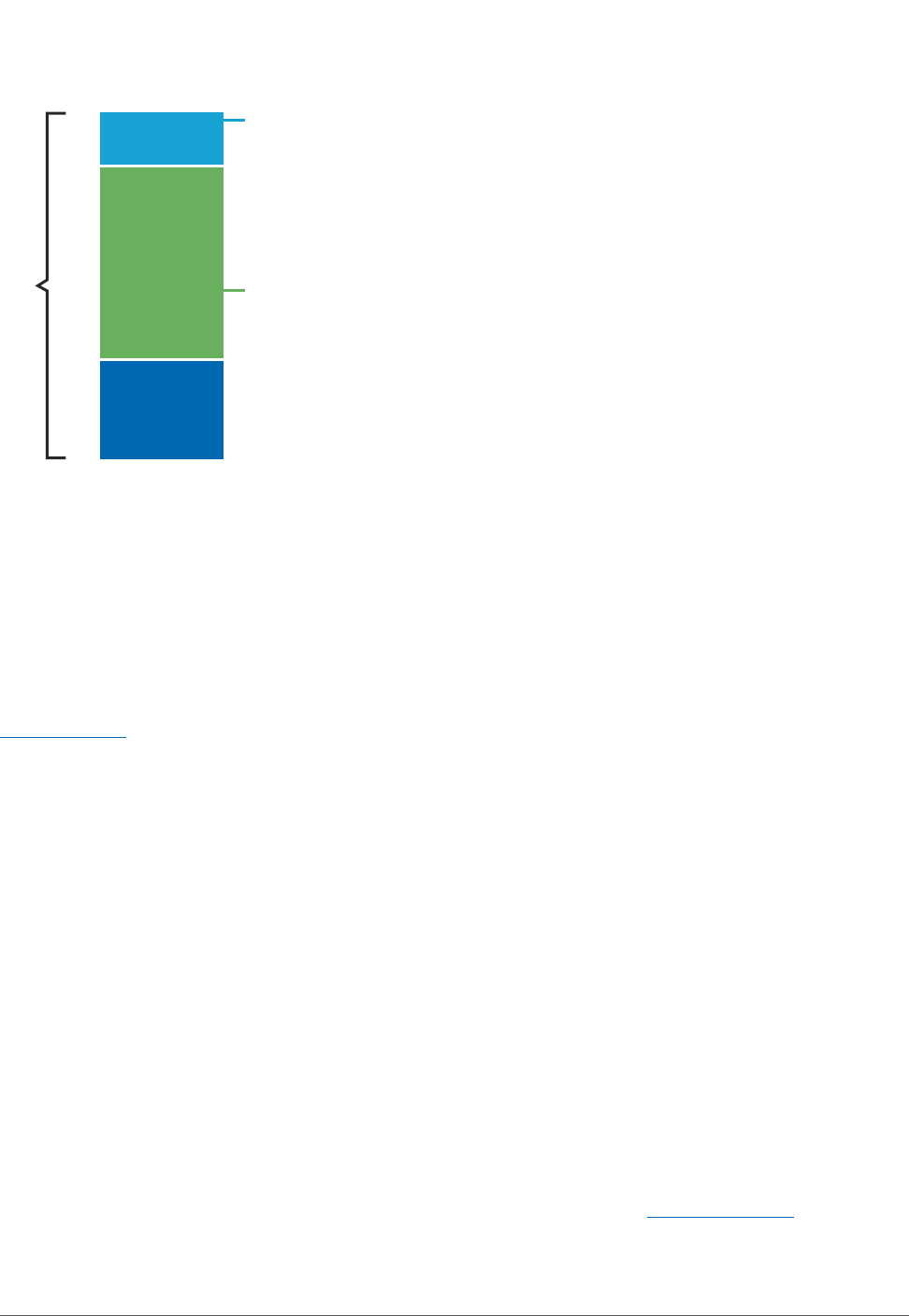
16
Revenue Guide for Washington Cities and Towns | AUGUST 2024
The chart below demonstrates both the $10 constitutional and $5.90 local government limits.
Levies above $10 limit:
• Excess levies (annual O&M or for repayment of U.T.G.O. bonds)
• Port and PUD levies
Remaining levy capacity available for:
• EMS levies
• Aordable housing levies
• County criminal justice, conservation futures, ferry, and transit levies
• Regional transit authority levies
• Protected portions of metropolitan park district, fire district, regional fire
authority, and flood control zone district levies
$5.90 limit–includes:
• City regular levy
• County current expense and road levies
• Cultural access program levies
• Most metropolitan park district levies
• Most special purpose district levies except ports and PUDs
$10 Constitutional Limit
Other
At least
$0.50
Local Districts
Up to
$5.90
State
Up to
$3.60
Prorationing
Once each taxing district establishes its desired levy amount for the upcoming year, no later than November
30 for cities, the county assessor calculates the levy rate for each taxing jurisdiction based on the assessed
valuation within that jurisdiction. The county assessor then adds up the levy rates for each Tax Code Area.
If either the $10 constitutional limit or the $5.90 statutory limit is exceeded within any individual Tax Code Area,
the county assessor must reduce the local levies to $10 or $5.90 according to the statutory formula found in
RCW 84.52.010, a process known as “prorationing.” Prorationing essentially establishes a levy hierarchy, and
levies on the lowest rungs of the ladder are reduced or eliminated until the $10 or $5.90 limit is no longer
exceeded. The formulas for prorationing depend on which limit – $10 or $5.90 – was exceeded. (Remember
that certain levies are exempt from the $5.90 or $10 limitations and are not counted for those purposes.)
First, the county assessor must check to make sure that the $5.90 local limit has not been exceeded within any
Tax Code Area. If the $5.90 limit has been exceeded, the assessor must reduce the aected levies to a total
combined rate of $5.90.
After the assessor has checked the $5.90 limit and, if necessary, conducted any prorationing, the assessor
must then make sure the $10 constitutional limit has not been exceeded. If the $10 limit has been exceeded
within any Tax Code Area, the assessor must reduce the aected levies to a total combined rate of $10.
The prorationing order for both the $5.90 and $10 limits is shown on the next page. In general, the city general
fund levy is protected from prorationing. However, some other city levies may be subject to prorationing.
Since the levy rate within each taxing district must be uniform, any taxing district aected by prorationing must
reduce its levy throughout the entire district, and not just within the aected Tax Code Area.
For a more detailed discussion of prorationing, including examples, refer to the DOR Levy Manual.
Table of Contents
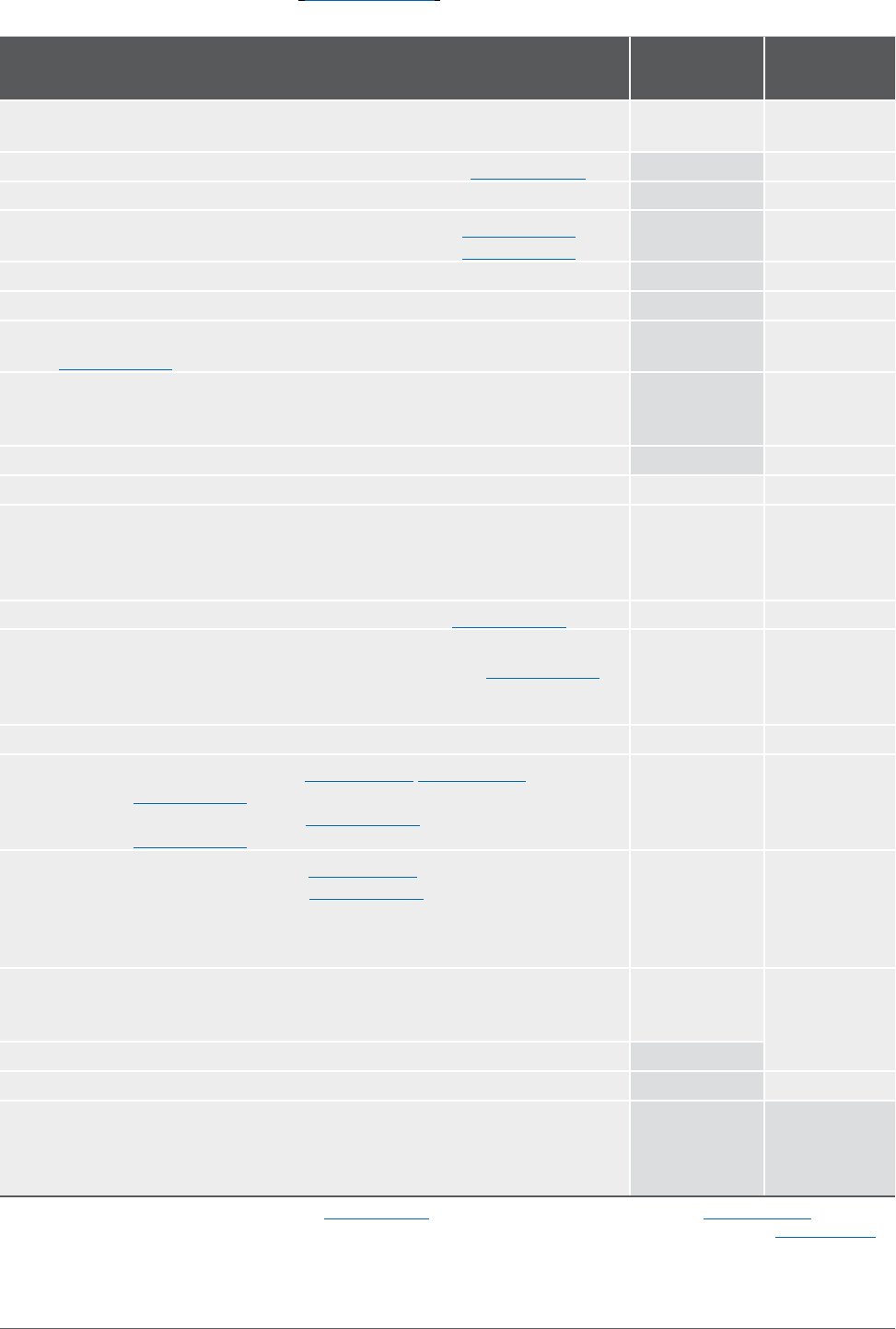
17
Revenue Guide for Washington Cities and Towns | AUGUST 2024
Property Tax Prorationing Order (RCW 84.52.010)
$5.90 reductions take place first, followed by $10 reductions
Levy Type
$5.90
Reduction
Order
$10
Reduction
Order
(a) County road levy shift*
(b) City fire pension levy* – only if city is annexed to fire/library district
st st
Flood control zone district – up to $0.25 if protected under RCW 84.52.816
—
nd
King County transit levy
—
rd
(a) Fire protection district – up to $0.25 if protected under RCW 84.52.125
(b) Regional fire authority – up to $0.25 if protected under RCW 84.52.125
—
th
County criminal justice
—
th
County ferry district — th
Metropolitan park district of 150,000+ population – up to $0.25 if protected
under RCW 84.52.120
—
th
(a) County land conservation futures
(b) Aordable housing
(c) EMS – first $0.20
—
th
EMS – remaining $0.30
—
th
Cultural access program nd th
(a) Park and recreation district
(b) Park and recreation service area
(c) Cultural arts, stadium, and convention district
(d) City transportation authority (monorail)
rd th
Flood control zone district – portion not protected under RCW 84.52.816 th th
(a) Public hospital district – first $0.25
(b) Metropolitan park district – first $0.25, if not protected under RCW 84.52.120
(c) Cemetery district
(d) All other junior taxing districts not otherwise mentioned in this chart
th th
Metropolitan park districts created in 2002 or later – remaining $0.50 th th
(a) Fire protection district – $1.00 under RCW 52.16.140/RCW 52.16.160, if not
protected under RCW 84.52.125
(b) Regional fire authority – $1.00 under RCW 52.26.140(1)(b) and (1)(c), if not
protected under RCW 84.52.125
th th
(a) Fire protection district – $0.50 under RCW 52.16.130
(b) Regional fire authority – $0.50 under RCW 52.26.140(1)(a)
(c) Library district
(d) Public hospital district – remaining $0.50
(e) Metropolitan park districts created in 2001 or earlier – remaining $0.50
th th
(a) County current expense levy
(b) City regular (general fund) levy
(c) County road levy
th
th
Regional transit authority
—
State school levies
—
th
(a) Port district
(b) Public utility district
(c) Excess levy
(d) G.O. bond levy
— —
* Not ocially considered “prorationing” under RCW 84.52.010. However, neither a road levy shift (see RCW 84.52.043) nor a city
firefighters’ pension fund levy (if the city is annexed to a library district, fire district, or regional fire authority – see RCW 41.16.060)
may cause any other taxing district to have its levy reduced. These levies must be reduced, eliminated, or “bought down” before
prorationing takes place.
Table of Contents

18
Revenue Guide for Washington Cities and Towns | AUGUST 2024
Buy-Down Agreements
If either the $5.90 or $10 limits are going to be exceeded, state law allows taxing districts to potentially
reduce the impacts of prorationing through the use of levy “buy-down” agreements (RCW 39.67.010 and
RCW 39.67.020). A buy-down agreement allows a taxing district to avoid prorationing by paying another
taxing district to reduce its levy so that the $5.90 or $10 levy limits are no longer exceeded.
If a city levy is in danger of being reduced or eliminated through prorationing, the city can potentially buy down
the levy rate of a smaller taxing district (such as a park district or cemetery district) within the aected Tax Code
Area. We suggest buying down the levy rate of the jurisdiction with the lowest assessed valuation, which will
minimize the city’s buy-down costs.
A levy buy-down also may be politically prudent in case a city levy increase, such as a levy lid lift, might cause
the levy of a junior taxing district to be reduced through prorationing.
If a buy-down agreement is signed, the city must notify the governing bodies of every taxing district whose
property tax levy could be adversely impacted by the agreement.
For examples of buy-down agreements, visit MRSC’s Sample Document Library.
Table of Contents

19
Revenue Guide for Washington Cities and Towns | AUGUST 2024
REGULAR LEVY GENERAL FUND
Quick Summary
• Primary source of property tax revenues for cities – revenues are unrestricted and may generally be
used for any lawful governmental purpose.
• Maximum levy rate varies between $1.60 and $3.825 depending on whether city is annexed to a fire
district/library district, participates in a regional fire authority, and/or has a fire pension fund.
RCW: 84.52.043(1); other statutes may apply
The general fund levy – often referred to as simply the “regular” property tax levy – is the primary source of
property tax revenue for any city or town.
11
The maximum levy rate depends on whether the city is annexed
to a fire protection district or library district, participates in a regional fire authority (RFA), or has a pre-LEOFF
firefighter’s pension fund.
12
• If your city IS NOT annexed to a fire district or library district and does not participate in a regional fire
authority: Your maximum levy rate is $3.375 per $1,000 assessed value (RCW 84.52.043(1)).
• If your city IS annexed to a fire district or library district or participates in a regional fire authority: Your
maximum levy rate is $3.60 per $1,000 assessed value, minus the actual regular levy rate(s) imposed
that year by those districts that the city is annexed to.
13
Fire districts and regional fire authorities have a
maximum regular levy rate of $1.50,
14
while library districts have a maximum regular levy rate of $0.50.
15
Depending on which districts your city is annexed to and what their levy capacity is, your city’s levy rate
may be reduced as low as $1.60.
Note: Your city levy rate is not impacted by any library/fire excess levies, voted general obligation bond
levies, or fire district EMS levies.
• If your city has a pre-LEOFF firefighters’ pension fund: You may impose an additional levy of up to $0.225
on top of the rates listed above (RCW 41.16.060). The use of these funds has been extended to include
LEOFF 1 medical benefits, and the city’s fire pension levy authority will expire when there are no longer any
pre-LEOFF or LEOFF 1 retiree medical obligations remaining.
See the table on the next page for a summary.
11 Technically speaking, most local government levies (except for voted excess levies) are considered to be “regular” levies.
This includes some other levies that may be imposed by cities, such as EMS levies. See the definition in RCW 84.04.140.
12 The firefighters’ pension fund levy under RCW 84.52.763 and RCW 41.16.060 is available to all cities and towns that had
a regularly organized, full-time, paid fire department employing firefighters entitled to benefits under a pension system in
existence before March 1, 1970 – the date that the statewide Law Enforcement Ocers’ and Fire Fighters’ Retirement System
(LEOFF) took eect.
13 See RCW 84.52.769/RCW 52.04.081 for fire protection districts, RCW 84.52.044 for regional fire authorities, and RCW
27.12.390 for library districts.
14 The maximum fire protection district levies are provided in RCW 52.16.130, RCW 52.16.140, and RCW 52.16.160. The
maximum regional fire authority levies are provided in RCW 52.26.140. However, the maximum levy rates will be reduced to
$1.00 if the fire district/RFA imposes fire benefit charges (see RCW 52.18.065 and RCW 52.26.240).
15 The maximum library district levies are provided in RCW 27.12.050, RCW 27.12.150, and RCW 27.12.420.
Table of Contents
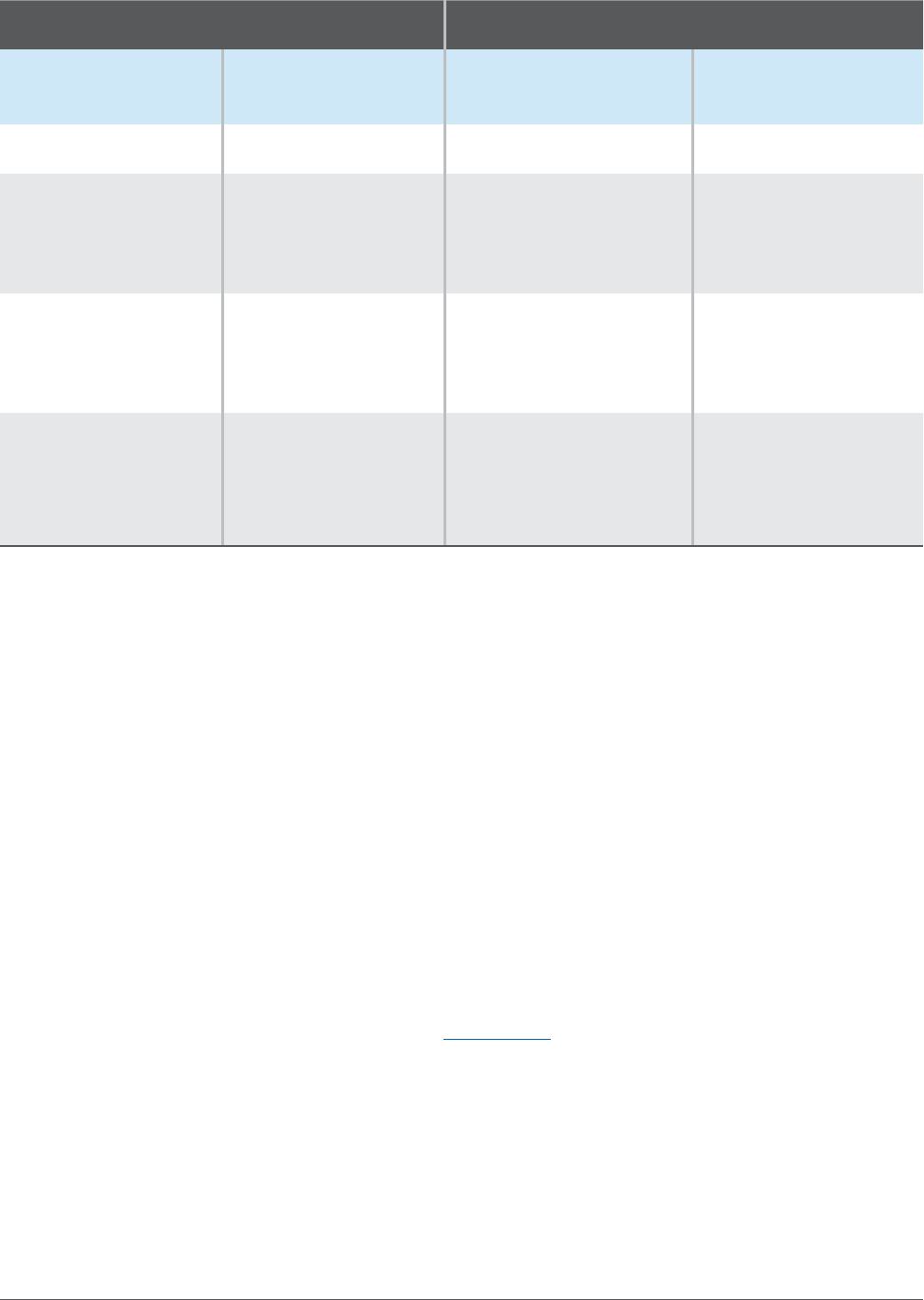
20
Revenue Guide for Washington Cities and Towns | AUGUST 2024
Summary of Maximum Regular (General Fund) Levy Rates for Cities
City is: Maximum levy rate per $1,000 AV
Annexed to library
district?
Annexed to fire
district/RFA?
Without fire pension
fund
With fire pension fund
No No $. $.
Ye s No
$.*
($3.60 minus $0.50
library levy)
$.*
($3.60 plus 0.225 fire
pension levy minus
$0.50 library levy)
No Ye s
$.*
($3.60 minus $1.50 fire
levy)
$.*
($3.60 plus $0.225 fire
pension levy minus
$1.50 fire levy)
Ye s Ye s
$.*
($3.60 minus $1.50 fire
levy minus $0.50 library
levy)
$.*
($3.60 plus $0.225 fire
pension levy minus
$1.50 fire levy minus
$0.50 library levy)
* Maximum “safe” levy rate, assuming fire/library districts levy their maximum rates.
Note that this table shows the maximum “safe” levy rates, assuming that the fire district, library district, and/or
regional fire authority levies its maximum possible rate. For instance, if your city does not have a firefighters’
pension levy and is annexed to a fire district that only levies $1.00, your maximum statutory levy rate will
increase to $2.60 per $1,000 AV ($3.60 minus $1.00). Likewise, if your city has a firefighter’s pension fund and
is annexed to a library district that only levies $0.30, your maximum statutory levy rate will increase to $3.525
per $1,000 AV ($3.60 minus $0.30 plus $0.225).
While this might provide your city with extra revenue potential, you should proceed cautiously. If your city levy
rate is higher than the “safe” levy rate, you may be forced to reduce your levy in the future if the fire/library
district or RFA increases its levy rate. This can cause significant fiscal distress if the city had not strategically
anticipated the possibility.
Use of Revenues
General fund levy revenues are generally unrestricted and may be used for any lawful governmental purpose,
with two possible exceptions:
• Levy lid lifts. If voters approved a levy lid lift (see Levy Lid Lifts) for the general fund where the revenues
were authorized for a specific purpose, the extra revenue resulting from the levy lid lift must be used for
the purpose(s) stated in the ballot measure.
• City fire pension levy. While this is considered part of the general fund levy, the extra levy rate up to
$0.225 is restricted for the firefighters’ pension fund unless the city has a qualified actuary make a
determination that all or part of the additional levy is unnecessary to meet the requirements of the
pension fund, in which case the levy may be omitted, reduced, or used for any other municipal purpose.
Table of Contents

21
Revenue Guide for Washington Cities and Towns | AUGUST 2024
If the city no longer has any pre-LEOFF firefighter beneficiaries receiving benefits, the levy may be used
for LEOFF 1 medical benefits (RCW 41.26.150(1)), and any amount remaining after the LEOFF 1 medical
benefits may be spent for any other municipal purpose. The city’s fire pension levy authority will expire
when there are no longer any LEOFF 1 retiree medical obligations remaining.
1% Annual Levy Limit
The general fund levy is subject to the 1% annual “levy lid” (see The 1% Annual Levy Lid Limit (“101% Limit”)). If
your city’s assessed value is increasing more than 1% per year, excluding new construction and state-assessed
utilities, your levy rate will begin to decrease as a result. However, if you are levying less than your statutory
maximum rate, your city can potentially increase its regular levy above the 1% annual levy lid using non-voted
banked capacity (if available – see Banked Capacity) or a voted levy lid lift (see Levy Lid Lifts).
Prorationing
The general fund levy is subject to both the $5.90 local limit and $10 constitutional limit (see Maximum
Aggregate Levy Rates). However, it is among the very last levies that would be ever subject to prorationing. In
the event that either the $5.90 or $10 constitutional limits are exceeded, there should be no impact on the city
general fund levy.
However, the firefighters’ pension levy (for those few cities that levy it) does not have the same protection. If
the city is annexed to a library district or fire protection district, RCW 41.16.060 states that the city may not levy
the firefighters’ pension tax if it causes the combined levies of all taxing districts to exceed the $5.90 or $10
limits. This provision does not apply to cities that are not annexed to a library district or fire protection district.
16
If the city is annexed and either the $5.90 or $10 limits are exceeded, the fire pension levy must be reduced,
eliminated, or “bought down” before any prorationing can be calculated by the county assessor.
16 To understand why, consider that the general fund statutory maximum levy rate for a city that has a firefighters’
pension fund and is not annexed is $3.60 per $1,000 AV ($3.375 plus $0.225). If the city is annexed, on the other hand,
the maximum combined levy rate for the city, fire district, and library district combined increases to $3.825 per $1,000 AV
($3.60 plus $0.225).
Table of Contents

22
Revenue Guide for Washington Cities and Towns | AUGUST 2024
AFFORDABLE HOUSING LEVY
Quick Summary
• Property tax – additional levy up to $0.50 per $1,000 assessed valuation.
• Revenues restricted to finance aordable housing for “low-income” and “very low-income” households.
• Requires simple majority voter approval.
• Subject to $10 constitutional limit but not $5.90 limit.
RCW: 84.52.105
Any city or town may impose a property tax levy up to $0.50 per $1,000 of assessed valuation to finance
aordable housing for “very low-income” households and aordable homeownership for “low-income”
households (RCW 84.52.105). The levy may be imposed each year up to 10 consecutive years and requires
voter approval.
Counties also have similar authority under the same statute, but the combined city/county levy rate may not
exceed $0.50 per $1,000 AV.
Use of Revenues
Originally, the revenues could only be used to finance aordable housing for very low-income households. The
statute defines “very low-income household” as:
[A] single person, family, or unrelated persons living together whose income is at or below fifty percent of
the median income, as determined by the United States department of housing and urban development,
with adjustments for household size, for the county where the taxing district is located.
Eective October 1, 2020 the state legislature also authorized the revenues to be used for aordable
homeownership, owner-occupied home repair, and foreclosure prevention programs for “low-income
households.” The definition of “low-income household” is identical except that households are eligible if their
income is at or below 80% of the county median income.
Before imposing the levy, the city must declare the existence of an emergency with respect to the availability
of aordable housing for low-income or very low-income households within its jurisdiction and adopt an
aordable housing finance plan for the expenditure of the levy funds to be raised. The adopted plan must
be consistent with either the locally adopted or state-adopted comprehensive housing aordability strategy,
required under the National Aordable Housing Act (42 U.S.C. Sec. 12701)).
Ballot Measure Requirements
An aordable housing levy must be approved by a simple majority vote, and there are no validation/minimum
voter turnout requirements. The statute does not specifically address when this levy may be presented to the voters,
which leads us to conclude that the ballot measure can be presented at any special, primary, or general election.
According to MRSC’s Local Ballot Measure Database, Bellingham and Vancouver are the only two cities that
have presented this levy to the voters in recent years, and both were successful (although other cities have
used levy lid lifts, sales taxes, or other revenue sources for aordable housing purposes).
Table of Contents

23
Revenue Guide for Washington Cities and Towns | AUGUST 2024
1% Annual Levy Lid Limit
The aordable housing levy is subject to the 1% annual “levy lid” (see The 1% Annual Levy Lid Limit (“101%
Limit”)). If your city’s assessed value is increasing more than 1% per year, excluding new construction and “add-
ons,” your levy rate will begin to decrease as a result. However, since aordable housing levies are temporary
and will expire after no more than 10 years, the 1% levy lid is probably not a big concern. Any adjustments to
produce more revenue can be made in the reauthorization ballot measure.
Prorationing
The aordable housing levy is not subject to the $5.90 local limit, but it is subject to the $10 constitutional limit
and may be subject to prorationing if the $10 limit is exceeded (see Maximum Aggregate Levy Rates). However,
this levy is fairly high on the prorationing “ladder” and there are a number of other local government levies that
would be reduced or eliminated prior to the aordable housing levy.
In the event that both a county, and a city or town within the county, pass aordable housing levies, the
combined rates of these levies may not exceed $0.50 per $1,000 of assessed valuation in any area within the
county. If the combined rates exceed $0.50, the levy of the last jurisdiction to receive voter approval must be
reduced or eliminated so that the combined rate does not exceed $0.50.
Table of Contents

24
Revenue Guide for Washington Cities and Towns | AUGUST 2024
CULTURAL ACCESS PROGRAM CAP LEVY
Quick Summary
• Property tax – additional levy with maximum rate based on retail sales.
• Revenues are restricted and may only be used for specified cultural purposes.
• Subject to $5.90 limitation and $10 constitutional limit.
• Requires voter approval.
RCW: 84.52.821; chapter 36.160
Any city may impose an additional property tax levy for up to seven consecutive years to benefit or expand
access to nonprofit cultural organizations (RCW 84.52.821; chapter 36.160 RCW). The measure requires
voter approval.
Every county except King County
17
has similar authority under the same statute. While the statutory language is
not entirely clear, it is our interpretation that a city and a county may not impose this levy concurrently. In other
words, if the county has enacted this levy and created a cultural access program, no city within that county may
impose this levy as long as the county’s levy is in place. But if the county has not imposed such a levy, or if the
county’s levy expires and is not renewed, the city may submit this measure to voters.
While most of the provisions within chapter 36.160 RCW refer specifically to counties, not cities, RCW 36.160.030
states that if a city creates a cultural access program, “all references in this chapter to a county must include a
city that has exercised its authority under this subsection, unless the context clearly requires otherwise.”
Use of Revenues
The revenues must be used in accordance with RCW 36.160.110, which is very detailed. Originally King County had
separate funding criteria than the rest of the state, but eective June 11, 2020 all cities and counties statewide are
subject to the same criteria. The funds may be used for a number of purposes related to cultural access programs,
including start-up funding, administrative and program costs, capital expenditures or acquisitions, technology,
and public school programs to increase cultural program access for students who live in the city.
A “cultural organization,” as defined in RCW 36.160.020, must be a 501(c)(3) nonprofit corporation with its
principal location(s) in Washington State and conducting a majority of its activities within the state. The primary
purpose of the organization must be the advancement and preservation of science or technology, the visual or
performing arts, zoology (national accreditation required), botany, anthropology, heritage, or natural history.
State-related cultural organizations are eligible, but the funding may not be used for local or state government
agencies, radio/TV broadcasters, cable communications systems, internet-based communications services,
newspapers, magazines, or fundraising organizations that redistribute money to multiple cultural organizations.
The city may not use the funding to replace or supplant existing funding (RCW 36.160.050). The city must arm
that any funding it usually and customarily provides to cultural organizations will not be replaced or materially
17 King County may only impose a cultural access program sales tax and may not impose a cultural access program levy.
See RCW 36.160.080(1)(b).
Table of Contents

25
Revenue Guide for Washington Cities and Towns | AUGUST 2024
diminished. If the organization receiving funds is a state-related cultural organization, the funds received may
not replace or materially diminish state funding.
Ballot Measure Requirements
The city must adopt an ordinance to impose the levy and the ballot proposition must set the total levy amount
and estimated levy rate to be collected in the first year of the levy. The levy amount for the first year may not
exceed an amount equal to:
The total taxable retail sales and taxable uses in the county or the city levying the property tax for the most
recent calendar year as reported by the department multiplied by one-tenth of one percent. Any county or
city levying the property tax in this section must calculate the total dollar amount to be collected using the
most recent calendar year publicly available data of taxable retail sales published on the department’s web
site. (RCW 84.52.821(1))
The property tax may be submitted at any special, primary,
18
or general election and must be approved by a simple
majority of voters. There are no validation/minimum voter turnout requirements. According to MRSC’s Local Ballot
Measure Database, as of 2022 no cities, towns, or counties have attempted to use this property tax option.
1% Annual Levy Limit
The cultural access program levy is subject to the 1% annual “levy lid” (see The 1% Annual Levy Lid Limit
(“101% Limit”)). If your city’s assessed value is increasing more than 1% per year, excluding new construction
and “add-ons,” your levy rate will begin to decrease as a result. However, since cultural access program
levies are temporary and must be re-submitted to voters after no more than seven years anyways, the
1% levy lid is probably not a big concern. Any adjustments to produce more revenue can be made in the
reauthorization ballot measure.
Prorationing
The cultural access program levy is subject to both the $5.90 local limit and $10 constitutional limit and may be
subject to prorationing if either limit is exceeded (see Maximum Aggregate Levy Rates). In particular, if the $5.90
limitation is exceeded, the cultural access levy will be the very first levy to be reduced or eliminated (unless the
county has a road levy shift in place, in which case the road levy shift must be reduced or eliminated first).
Sales Tax Alternative
Any city, town, or county may also impose a retail sales tax under RCW 82.14.525 for cultural access programs
(see Cultural Access Program (CAP) Sales Tax). From a revenue standpoint, the property tax and sales tax
options are roughly equivalent: the amount of revenue generated by the property tax may not exceed 0.1% of
the retail sales in the city for the most recent calendar year and both are capped at seven-year increments.
However, the property tax option requires voter approval, while voter approval is optional for the sales tax. In
addition, the property tax levy could potentially be reduced or eliminated through prorationing if the $5.90 or
$10 property tax caps are exceeded.
Counties (and, by extension, cities) may not implement the property tax and the sales tax options concurrently
(RCW 36.160.080).
18 RCW 84.52.821 states that the tax must be submitted at “a special or general election,” which at first glance might seem
to rule out the August primary election. However, RCW 29A.04.321(2), which establishes the election schedule for local
governments, authorizes the county to call up to four “special elections” each year, including the primary election. So for
these purposes, “special election” includes the primary election.
Table of Contents

26
Revenue Guide for Washington Cities and Towns | AUGUST 2024
EMERGENCY MEDICAL SERVICES EMS LEVY
Quick Summary
• Property tax – additional levy up to $0.50 per $1,000 assessed valuation.
• Revenues are restricted to the provision of emergency medical care or services.
• May be imposed for 6 years, 10 years, or permanently.
• Requires voter approval.
• Subject to $10 constitutional limit but not $5.90 limit.
RCW: 84.52.069
Any city or town – as well as any county, emergency medical service district, public hospital district, urban
emergency medical service district, regional fire protection service authority, or fire protection district – may
impose a property tax levy up to $0.50 per $1,000 of assessed valuation to provide for emergency medical
care or emergency medical services (EMS, RCW 84.52.069). The levy may be imposed for 6 years, 10 years, or
permanently, and it requires voter approval.
However, no city may impose an EMS levy if it is located within another taxing district that imposes an EMS levy.
The only exception is for countywide EMS levies: If the county has imposed an EMS levy less than the $0.50
statutory maximum, any taxing district within the county may impose a levy so long as the combined levies do
not exceed $0.50. For instance, if the county imposes a $0.30 EMS levy, a city within the county may impose an
EMS levy up to $0.20 per $1,000 AV.
19
Use of Revenues
EMS levies must be used for emergency medical care or emergency medical services, including related
personnel costs, equipment, supplies, vehicles and structures associated with emergency medical care and
services.
Ballot Measure Requirements
An EMS levy may be presented to the voters at any special, primary,
20
or general election. The ballot measure
must conform to RCW 29A.36.210, including specifying whether the levy will be imposed for 6 years, 10 years,
or permanently.
No city or other taxing district may place an EMS levy on the ballot at the same election as a countywide
EMS levy. If the county imposes a temporary 6-year or 10-year EMS levy below the maximum $0.50 rate, any
subsequent temporary EMS levy approved by a taxing district within the county must expire at the same time
as the countywide levy.
19 There are also two specific exceptions for Bothell (urban EMS district under RCW 35.21.762) and Milton (RCW
84.52.069(10)) to address the fact that they are both located partially within King County (which has a countywide EMS levy)
and partially within another county that does not impose an EMS levy (Snohomish County and Pierce County, respectively).
20 RCW 84.52.069 states that the levy must be submitted at “a special or general election,” which at first glance might
seem to rule out the August primary election. However, RCW 29A.04.321(2), which establishes the election schedule for local
governments, authorizes the county to call up to four “special elections” each year, including the primary election. So for these
purposes, “special election” includes the primary election.
Table of Contents
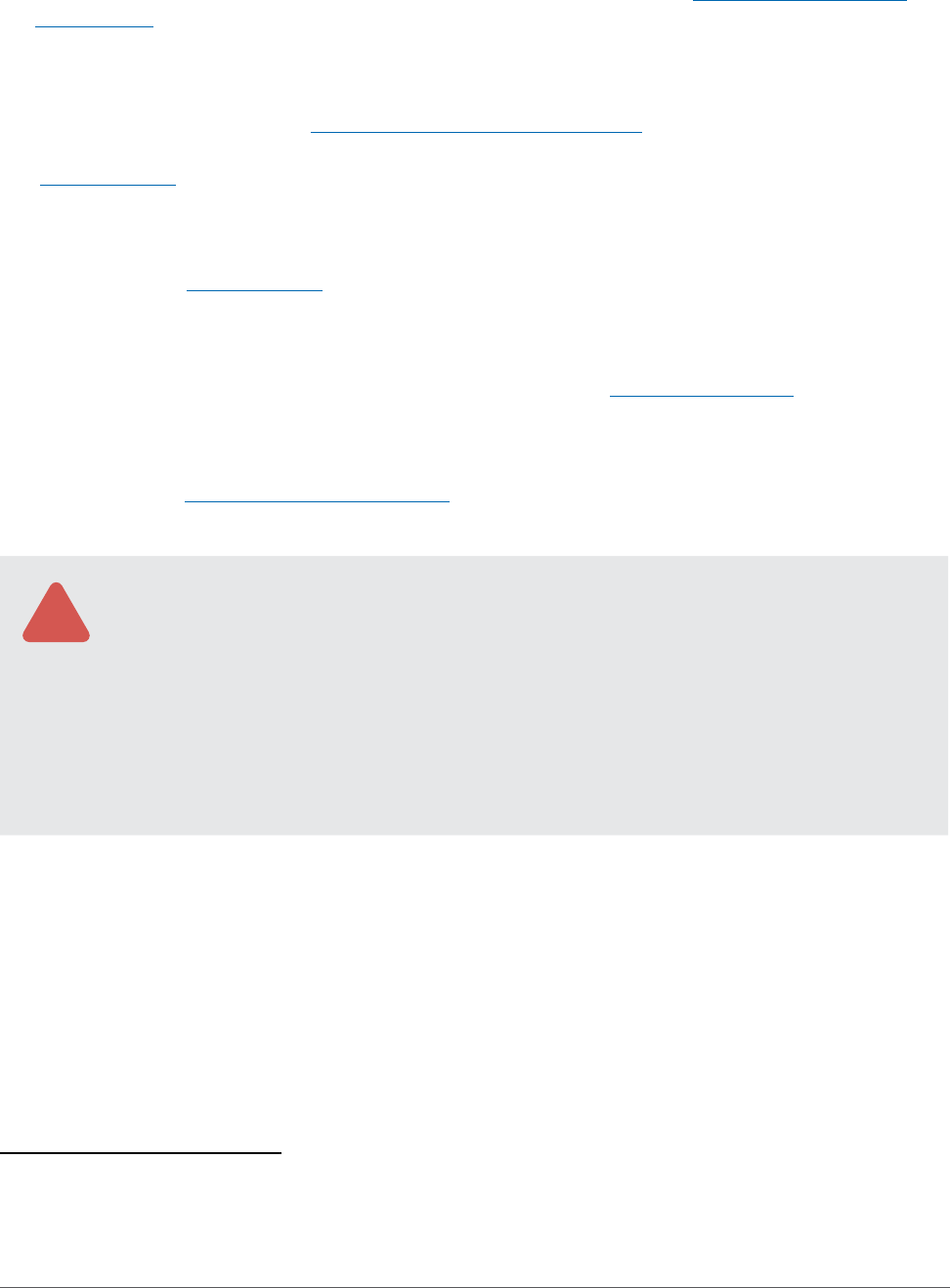
27
Revenue Guide for Washington Cities and Towns | AUGUST 2024
The ballot language and approval requirements depend on several factors:
For 6-year or 10-year EMS levies: The initial imposition of a 6-year or 10-year EMS levy requires a
60% supermajority vote, subject to minimum voter turnout requirements (see Validation/Voter Turnout
Requirements). For the “subsequent renewal” of a previously imposed EMS levy, at the same levy rate that
voters already approved (or less), a simple majority vote is all that is required, with no validation.
21
For a permanent EMS levy: A permanent EMS levy requires a 60% supermajority vote, subject to minimum
voter turnout requirements (see Validation/Voter Turnout Requirements). In addition, if a city imposes a
permanent EMS levy, it must account separately for the receipt and expenditure of the EMS levy monies
(RCW 84.59.069(3)) and provide a statement of accounting that is updated at least every two years and
made available to the public upon request at no charge.
For a permanent EMS levy, you must also provide for a referendum procedure to apply to the ordinance
imposing the tax (RCW 84.52.069(4)), regardless of whether your city has otherwise adopted powers of
initiative and referendum. The referendum procedure must specify that a referendum petition may be
filed at “any time.” The procedures and requirements of this referendum provision are unique to the EMS
levy and supersede the procedures provided under all other statutory or charter provisions for initiative
or referendum. For examples of referendum language, see MRSC’s EMS Levies webpage. However, EMS
levies tend to be pretty popular, and we are not aware of any EMS levy referendums that have been
attempted recently.
According to MRSC’s Local Ballot Measure Database, voters have approved the vast majority (approximately
90%) of city EMS levies in recent years.
!
If your initial ballot proposition established an EMS levy rate less than $0.50 per $1,000
assessed value, any future increases above the initial levy rate approved by voters would
be considered the initial imposition of a new levy, requiring 60% supermajority approval with
validation. For instance, if a city imposes a permanent EMS levy with an initial rate of $0.30 per
$1,000 AV and later decides to increase the levy to $0.50, it would have to submit a new $0.50
permanent EMS levy to voters. Likewise, if a city imposed a 10-year EMS levy at an initial rate of
$0.30 and then, upon its expiration 10 years later, submits another 10-year levy for $0.50, the
$0.50 levy is considered the initial imposition of a new levy, rather than the continuation of a
previously approved levy.
21 Previously, a simple majority vote was only allowed for an “uninterrupted continuation,” but that language changed with
2018 legislation.
Table of Contents
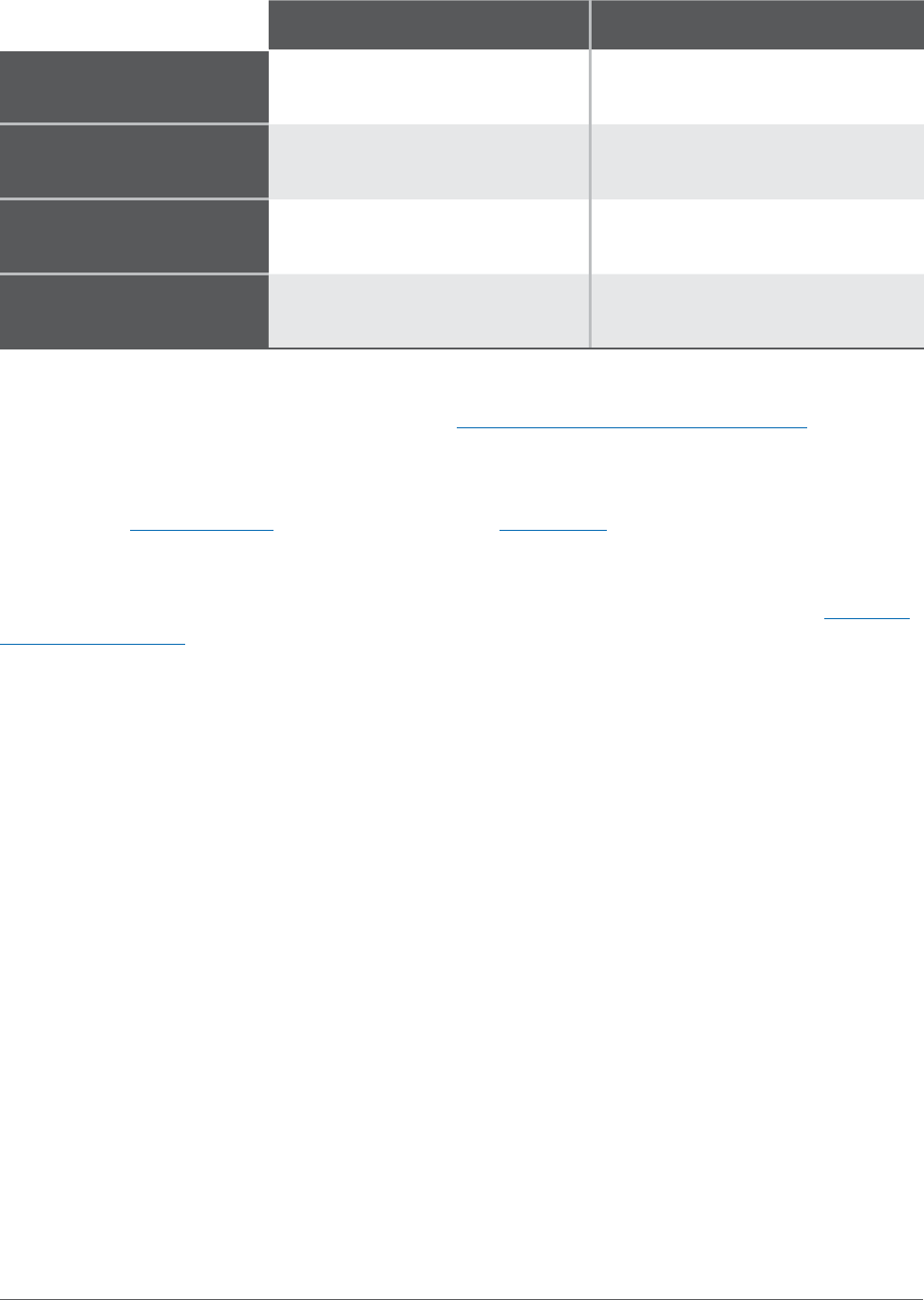
28
Revenue Guide for Washington Cities and Towns | AUGUST 2024
Comparison of 6-Year, 10-Year, and Permanent EMS Levies
6-Year or 10-Year Levy Permanent Levy
Requirements for initial
imposition:
60% supermajority with validation 60% supermajority with validation
Requirements for
subsequent renewal:
Simple majority; no validation N/A
Separate accounting
required?
No Ye s
Referendum procedure
required?
No Ye s
1% Annual Levy Lid Limit
The EMS levy is subject to the 1% annual “levy lid” (see The 1% Annual Levy Lid Limit (“101% Limit”)). If your city’s
assessed value is increasing more than 1% per year, excluding new construction and “add-ons,” your EMS levy
rate will begin to decrease as a result. However, if you are levying less than the maximum $0.50 rate, your
city can potentially increase its EMS levy above the 1% annual levy lid through non-voted banked capacity (if
available – see Banked Capacity) or a voted levy lid lift (see Levy Lid Lifts).
Prorationing
EMS levies are not subject to the $5.90 local limit but are subject to the $10 constitutional limit (see Maximum
Aggregate Levy Rates). If the $10 constitutional limit is exceeded, the EMS levy could potentially be reduced
through prorationing, although this is unlikely as there are many other local levies that would be reduced first.
Table of Contents

29
Revenue Guide for Washington Cities and Towns | AUGUST 2024
EXCESS LEVIES OPERATIONS & MAINTENANCE
Quick Summary
• Property tax – additional levy with no specific levy rate cap.
• Revenues may be used for any lawful governmental purpose, but must be spent in accordance with
the purpose(s) specified in the ballot measure.
• Requires voter approval.
RCW: 84.52.052, 84.52.054
“Excess” or “special” levies, frequently referred to as “maintenance and operations” or “O&M” levies, are
one-year levies
22
that impose property taxes over and above the $5.90 and $10 constitutional property tax
limits. Excess levies are authorized by RCW 84.52.052 and RCW 84.52.054, as well as article VII, section
2(a) of the state constitution. Any city may impose a one-year excess levy with voter approval. There is no
restriction on the levy rate or levy amount for an excess O&M levy.
Use of Revenues
Excess O&M levies may be used for any lawful governmental purpose; however, the revenues must be spent in
accordance with the purpose(s) specified in the ballot measure.
Because each levy is only for one year, excess O&M levies are often best suited for temporary purposes,
such as a short-term project, a one-time expense or purchase, or bridging a temporary revenue shortfall or
similar funding emergency. They have also been used eectively to fund gaps created when the timing of
an annexation, formation of a special purpose district (such as a metropolitan park district or a regional fire
authority), or other boundary change does not match with the assessors’ schedules for adjusting boundaries,
leaving a one-year delay before the new property taxes can be levied and collected within the new
annexation area or newly formed special purpose district.
Excess O&M levies are generally not ideal for recurring expenses or critical governmental services such as
public safety due to the 60% supermajority requirement (see next page) and the fact that the city must go
before the voters every single year. If you are relying on excess levies and more than 40% of your voters say
“no” one year, your city could face significant fiscal challenges.
However, there are a number of smaller, primarily rural cities and towns with limited revenue options that use
excess O&M levies to fund basic general fund services such as public safety and transportation.
If your city is levying its statutory maximum rates and your revenue sources are still not sucient to fund your
ongoing maintenance and operations costs, salaries, etc., it may be prudent to consider other, more permanent
revenue sources instead of annual excess O&M levies. However, for some cities with supportive voters, excess
levies may still be an option for recurring expenses.
22 For cities, counties, and almost all other taxing districts, excess levies may only be imposed for one year at a time.
However, school districts and fire protection districts have separate statutes allowing for multi-year excess levies.
Table of Contents

30
Revenue Guide for Washington Cities and Towns | AUGUST 2024
Ballot Measure Requirements
An excess O&M levy may be submitted at any special, primary,
23
or general election and requires 60%
supermajority approval, subject to minimum voter turnout requirements (see Validation/Voter Turnout
Requirements).
According to MRSC’s Local Ballot Measure Database, about 80% of excess O&M levies submitted by cities
have passed in recent years. However, these results are significantly skewed by the small number of cities that
are responsible for the vast majority of these levies, as well as the historical custom of the voters in those cities
and towns.
1% Annual Levy Limit
Because excess levies may only be imposed for one year at a time, the 1% annual levy lid limit (see The 1%
Annual Levy Lid Limit (“101% Limit”)) does not apply. To impose an excess levy in subsequent years, the city
would have to submit a new excess levy to voters every year.
Prorationing
Excess O&M levies are not subject to the $5.90 or $10 limits (see Maximum Aggregate Levy Rates), so they are
not subject to prorationing and will not be aected if either limit is exceeded.
23 RCW 84.52.052 states that the levy must be submitted at “a special or general election,” which at first glance might
seem to rule out the August primary election. However, RCW 29A.04.321(2), which establishes the election schedule for local
governments, authorizes the county to call up to four “special elections” each year, including the primary election. So for these
purposes, “special election” includes the primary election.
Table of Contents

31
Revenue Guide for Washington Cities and Towns | AUGUST 2024
G.O. BOND EXCESS LEVIES CAPITAL PURPOSES
Quick Summary
• Property tax – excess levy to repay unlimited tax general obligation (G.O.) bonds.
• Revenues are restricted to capital purposes.
• Requires voter approval.
RCW: 84.52.056
Any city, with voter approval, may issue unlimited tax general obligation (G.O.) bonds – also known as U.T.G.O.
bonds – for capital purposes (see RCW 84.52.056 and article VII, section 2(b) of the state constitution). Once
the bond has been approved and issued, it is repaid through annual excess levies for the duration of the bond.
G.O. bond excess levies provide a stable revenue stream to repay debt and are automatically sized to pay the
principal and interest on the bonds due each year (unlike other revenue sources such as levy lid lifts or sales
taxes). As soon as the debt has been repaid, the excess levies cease.
If you are considering issuing G.O. bonds for a capital project, it is extremely important to consult your city’s
bond counsel early in the planning process.
Use of Revenues
U.T.G.O. bonds may only be used for capital purposes, which does not include the replacement of equipment.
Ballot Measure Requirements
A U.T.G.O. bond may be submitted at any special, primary, or general election and requires 60% supermajority
approval, subject to minimum voter turnout requirements (see Validation/Voter Turnout Requirements). Such an
election may not be held more often than twice per calendar year.
The ballot measure should typically be drafted by your city’s bond counsel, since it has peculiar requirements
and must authorize both the issuance of the bonds and the excess property tax levies.
1% Annual Levy Limit
G.O. bond excess levies are not subject to the 1% annual levy lid limit. The levy amount for each year is
calculated according to the length of the obligation and the associated amortization schedule prepared at the
time of the bond sale. The annual levy amounts are “right-sized” so that they will repay the exact amount of the
debt, including both the principal and the interest.
Prorationing
G.O. bond excess levies are not subject to the $5.90 or $10 limits (see Maximum Aggregate Levy Rates), so
they are not subject to prorationing and will not be aected if either limit is exceeded.
Table of Contents

32
Revenue Guide for Washington Cities and Towns | AUGUST 2024
REFUNDS AND REFUND LEVIES
Quick Summary
• Taxing districts may increase one or more of their levies to pay for any property tax administrative
refunds or refunds due to judgments.
• Refund levies are not subject to the 1% annual levy lid, but may not exceed the district’s normal
statutory maximum levy rates.
• Does not require voter approval.
RCW: 84.69.020 and chapter 84.68 RCW
In some situations, the city may have to refund property taxes paid by individual property owners or cancel
property taxes that were due but not yet paid. There are two types of refunds: administrative refunds (RCW
84.69.020) and refunds of taxes recoverable by judgment (chapter 84.68 RCW).
The city may impose additional “refund levies” to pay for these refunds. In eect, this allows the taxing district
to collect extra revenue to oset the financial loss from the refunds so that it does not suer any negative
budgetary impacts.
Administrative Refunds
Administrative refunds are made on the order of the county treasurer when taxes were paid more than once or
as the result of an error in description, a clerical error in extending the tax rolls, or other errors and mistakes as
defined within RCW 84.69.020.
A city may choose whether an administrative refund should be included in the following year’s levy, thereby
reducing the levy amount received by the amount of the administrative refund, or to levy for the refund. Should
the city choose to include the refund in the following year’s levy, it must contact the county treasurer to obtain
the refund amounts and additionally notify the county assessor of the district’s intent. It will be important for the
city to work closely with the county on the options available for administrative refunds.
Refunds Recoverable by Judgment
All property taxes placed on the tax roll must be paid; however, the owner of the property being taxed may file
a written protest laying out the grounds for either an unlawful or excessive levy amount (RCW 84.68.020) and
bring the issue before the superior or federal court. If the court rules in favor of the property owner, the city
must refund the taxes, plus interest, due to the judgment (RCW 84.68.030).
RCW 84.68.030 and RCW 84.68.040 provide for the creation and maintenance of a fund within the county
treasury known as the “Refund Fund.” The fund is to be used to refund to taxpayers the amount of all taxes
recoverable by judgments rendered against the taxing district within the preceding 12 months including interest
and costs allowed by judgment.
Every year the county shall make a levy for judgment refunds (RCW 84.68.040) and these levies shall take
precedence over all other tax levies for taxing districts that are part of the judgment.
Table of Contents

33
Revenue Guide for Washington Cities and Towns | AUGUST 2024
1% Annual Levy Lid Limit
Refund levies are basically a one-year levy and therefore are not subject to the annual 1% levy lid (see The 1%
Annual Levy Lid Limit (“101% Limit”)).
Prorationing
Refund levies are subject to the $5.90 and $10 limitations (see Maximum Aggregate Levy Rates), as well as
the statutory maximum rate for each respective levy. For instance, if a city’s maximum general fund levy rate is
$3.10 per $1,000 AV, the general fund levy rate including any refund levies cannot exceed $3.10.
For examples and further details, refer to the DOR Property Tax Levy Manual.
Table of Contents

34
Revenue Guide for Washington Cities and Towns | AUGUST 2024
THE 1% ANNUAL LEVY LID LIMIT “101% LIMIT”
The “levy lid” – also known as the “1% increase limit” or “101% limit” – restricts how much your city’s levy
amount (the total property tax revenue received) can grow each year and was enacted due to concerns about
property taxes levies rising faster than inflation.
The levy lid was originally established by the state legislature in 1971, and at that time it essentially stated that
a taxing district could not increase its total levy amount more than 6% per year, plus an additional amount for
any new construction or improvements. For jurisdictions over 10,000 population, that was further restricted
by voters in 1997 with the approval of Referendum 47, which limited the increase to 6% or the rate of inflation,
whichever was less, unless the legislative body made a finding of substantial need with a supermajority vote.
Then in 2001, voters passed Initiative 747, which lowered the 6% limit to 1%. In 2007, the initiative was ruled
unconstitutional by the state Supreme Court, which stated that the voters had been misled. However, the
governor quickly convened a special session of the legislature, which reinstated the 1% limit as approved by
voters and established the limitation we know now (RCW 84.55.010 and WAC 458-19-020).
The 1% annual levy lid applies to all city levies except one-year excess O&M levies, excess levies for the
repayment of general obligation bonds, and refund levies.
Here’s how it works:
• For cities with a population of less than 10,000: You may not increase your levy amount – the total dollar
value of property taxes you receive – more than 1% each year, plus an additional levy amount generated by
new construction and “add-ons.”
• For cities with a population of 10,000 or more: You may not increase your levy amount – the total dollar
value of property taxes you receive – more than 1% or the rate of inflation each year, whichever is lower,
plus an additional levy amount generated by new construction and “add-ons.” The rate of inflation is
measured by the implicit price deflator (IPD). However, if the IPD falls below 1% you may be able to increase
your levy amount the full 1% through a finding of “substantial need” (see The Implicit Price Deflator and
“Substantial Need”).
The city may only exceed these limits through the use of non-voted banked capacity (if available – see Banked
Capacity) or, if the city does not have banked capacity available, a levy lid lift approved by voters (see Levy Lid Lifts).
The “add-ons,” established primarily in RCW 84.55.010, refer to increases in assessed valuation from the
previous year due to:
• New construction and property improvements,
• New annexations (RCW 84.55.030 and WAC 458-19-035)
• Changes in state-assessed utility valuations,
• Construction of certain renewable energy electricity-generating facilities, and
• Increases in assessed value within a tax increment financing area (for more information, see our webpage
on Tax Increment Financing).
Table of Contents
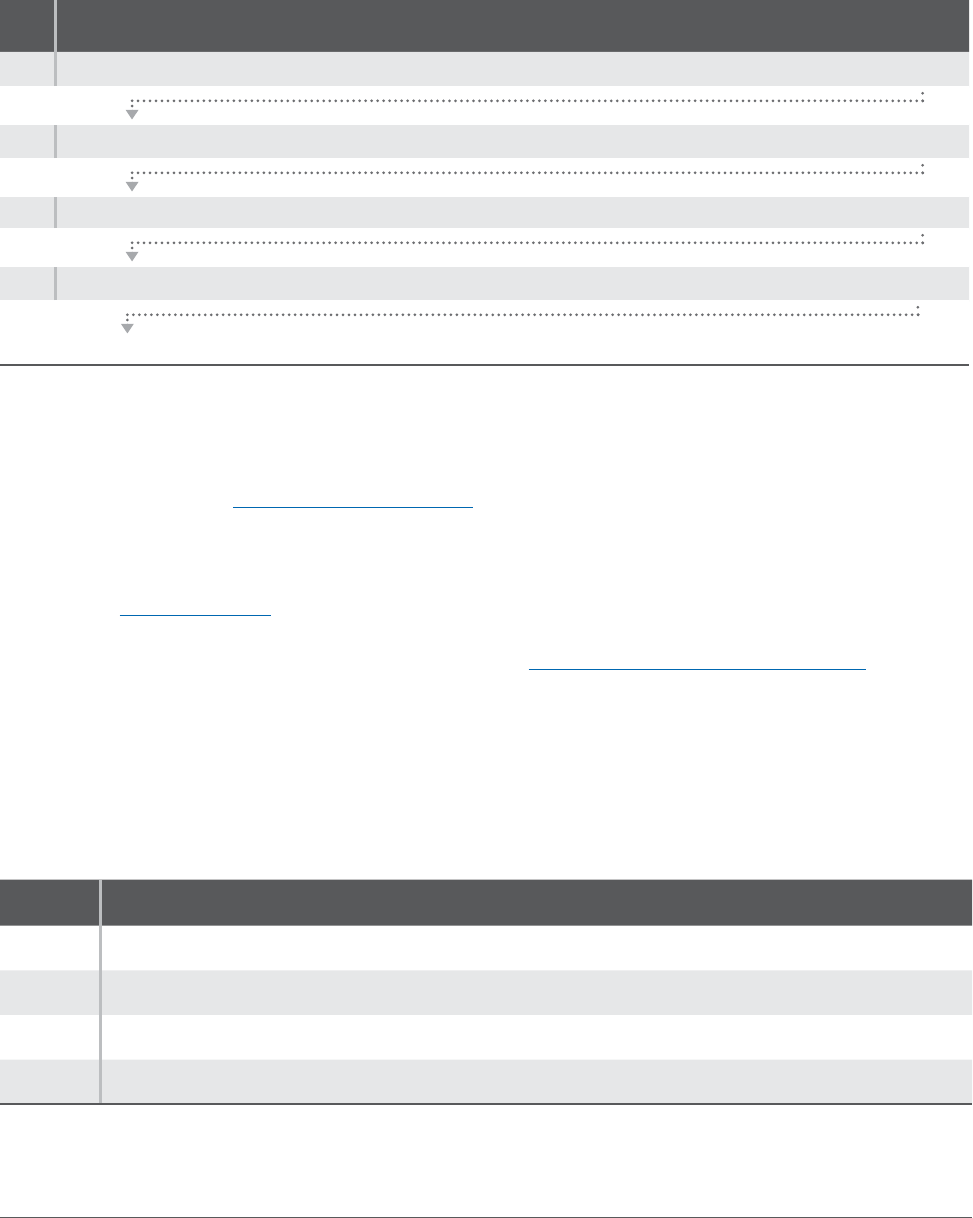
35
Revenue Guide for Washington Cities and Towns | AUGUST 2024
The change in assessed valuation due to these add-ons is multiplied by the prior year’s levy rate, and the
resulting amount is then added to the 1% annual increase to generate the maximum allowable levy for the next
year. In practice, this means that a city’s total levy amount will typically increase a bit more than 1% each year.
See the example on the next page for a simplified example of how the 1% annual limit works, including add-ons.
Example of Hypothetical 1% Levy Lid Limit for City Regular Levy (General Fund)
(assumes city takes maximum possible increase and does not exceed its statutory maximum levy rates)
Year Levy amount x . = 1% increase + Increase due to add-ons = Next Year’s Maximum Allowable Levy
,, x . = ,, + , = ,,
,, x . = ,, + , = ,,
,, x . = ,, + , = ,,
,, x . = ,, + , = ,,
etc...
In this example, the city increased its prior year’s levy the full 1% every year as allowed by statute, but the total
levy amount increased roughly 2-3% per year due to the additional amount gained from add-ons. (The example
does not include refund levies, if any, which are added on to the city’s levy but are not part of the annual 1%
levy limit calculations. See Refunds and Refund Levies.)
Your city is not required to increase its levy the full 1% each year, however. If your city decides to levy less
than the maximum 1% increase, you can preserve your future levying capacity through the concept of banked
capacity (see Banked Capacity).
Under Washington’s budget-based property tax system (see What is a Budget-Based Property Tax?), the 1%
levy limit can cause a city’s levy rate (per $1,000 assessed value) to fluctuate over time. The levy amount each
year is divided by the assessed value to calculate the levy rate that property owners must pay. If your assessed
valuation is increasing rapidly enough, the 1% limit can result in steady decreases in your levy rate.
For instance, we have added some hypothetical assessed values to the levy amounts from the previous table:
Example of 1% Levy Limit Eect on City Regular (General Fund) Levy Rates
Year Levy amount ÷
Assessed value
= Levy rate per $, AV
,, ,, .
,, ,, .
,, ,, .
,, ,, .
Table of Contents
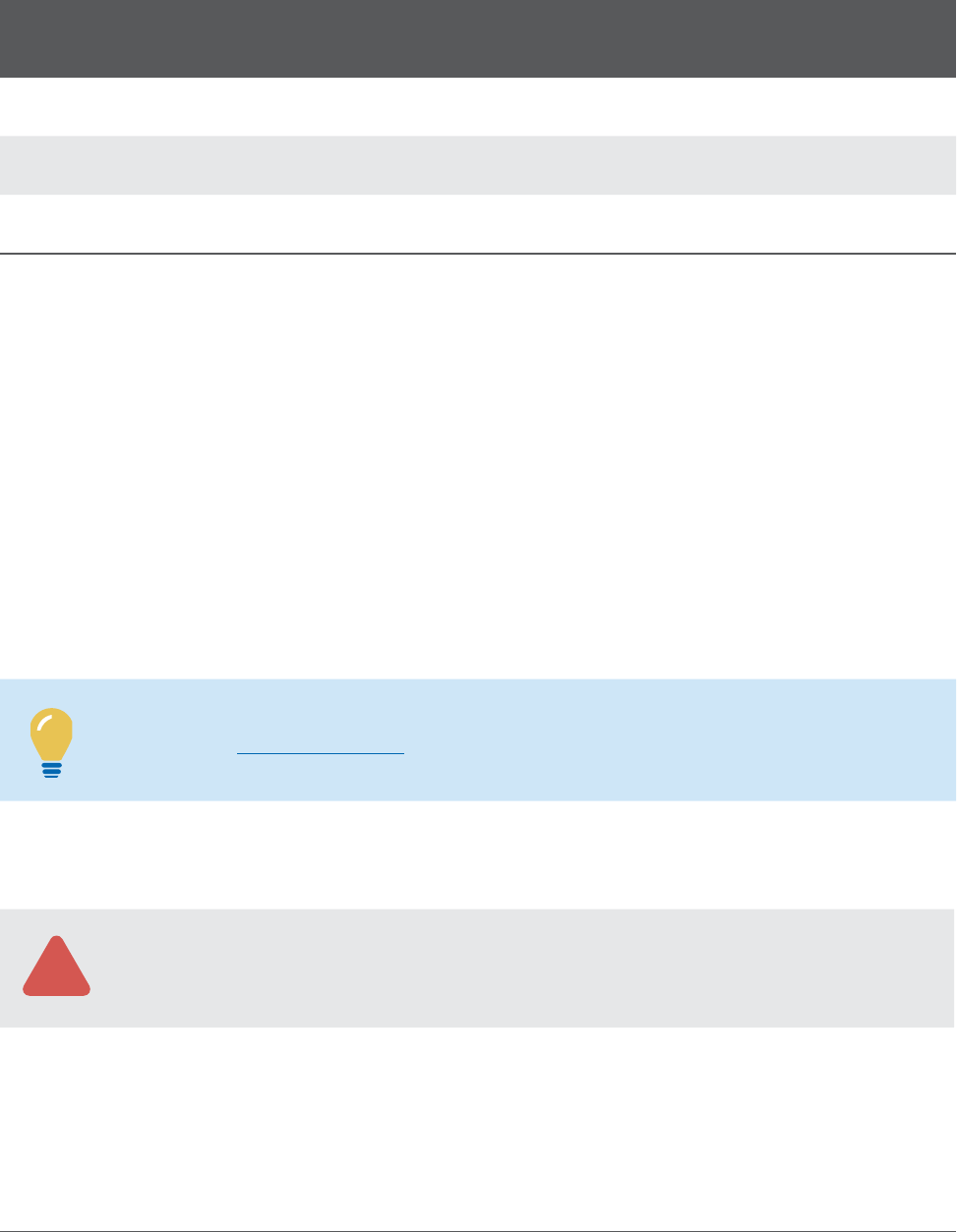
36
Revenue Guide for Washington Cities and Towns | AUGUST 2024
In Years 2 and 3, the city’s total levy amount (including the increase due to add-ons) increased roughly 2-3%
per year, but the city’s total assessed value increased 4-5% per year. Because the assessed value grew
faster than the levy amount, the levy rate decreased each year. But in Year 4, the levy amount grew about 3%
while the assessed value increased less than 2%. Since the levy amount increased faster than the assessed
valuation, the levy rate increased.
The interaction of the assessed value (AV), levy amount (total dollar amount of property tax revenues
collected), and levy rate (per $1,000 AV) can be broadly summarized like this:
If assessed value % increase > levy amount % increase:
levy rate ↓
If assessed value % increase = levy amount % increase:
levy rate unchanged
If assessed value % increase < levy amount % increase:
levy rate ↑ (not to exceed max. levy rate)
It’s important to note that while assessed values can fluctuate, the city may never exceed its normal statutory
maximum levy rates. For instance, if your city has a statutory maximum levy rate of $3.10 for its general fund
levy, and increasing your general fund levy the full 1% plus add-ons would cause you to exceed that maximum
rate, you would not be able to levy the full 1% increase.
The 1% levy lid obviously restricts revenue growth, which creates challenges when expenses are increasing
faster than 1% per year due to inflation, criminal justice costs, labor and benefit costs, and other factors.
While the 1% levy lid places a limitation on the city’s total levy amount that may be collected, it does not
limit the property taxes due from individual property owners. Because the assessed valuations of dierent
properties fluctuate at dierent rates depending upon market conditions, some property owners may see their
property taxes go up much more than 1%, while other property owners may simultaneously see their property
tax bills decrease.
Practice Tip: To determine your city’s maximum allowable levy: Talk to your county assessor and
refer to DOR’s Property Tax Forms webpage, which contains a Highest Lawful Levy Calculation
spreadsheet (64 0007).
The Implicit Price Deflator and “Substantial Need”
!
The implicit price deflator (IPD) only impacts cities with a population of 10,000 or more. If your
city or town has a population of less than 10,000, this section does not apply to you.
As noted earlier, the 1% annual levy lid means that cities with a population of 10,000 or more may not increase
their levy amounts – excluding the tax increase resulting from new construction and “add-ons” – more than 1%
or the rate of inflation, whichever is lower.
Table of Contents

37
Revenue Guide for Washington Cities and Towns | AUGUST 2024
The definition of “inflation” for setting a property tax levy (RCW 84.55.005) is:
“Inflation” means the percentage change in the implicit price deflator for personal consumption
expenditures for the United States as published for the most recent twelve-month period by the bureau of
economic analysis of the federal department of commerce by September 25th of the year before the taxes
are payable.
The state Department of Revenue (DOR) calculates the IPD using the most recent quarterly numbers reported
by the federal Bureau of Economic Analysis (BEA).
Every month BEA publishes an estimate of the quarterly IPD numbers. These quarterly numbers are seasonally
adjusted each year in July, and these seasonal numbers form the basis for the prior year IPD number that is
used by DOR to calculate inflation. The most recent publication available on September 25 is typically the
August publication.
For the most recent IPD information, refer to our Implicit Price Deflator webpage. We will also inform you
through our blog posts or e-newsletters each year when the IPD numbers are ocially calculated in September.
If the annual IPD rate is above 1% on September 25: No action is needed. Because the inflation rate
exceeded 1%, your city may increase its levy amount the full 1% for next year (plus new revenue generated
by “add-ons”).
If the annual IPD rate is below 1% on September 25: Your city may not increase next year’s levy amount
above the IPD rate without a finding of “substantial need” (see below). For instance, if the inflation rate is
0.5%, you may not increase next year’s levy amount more than 0.5% (plus new revenue generated by “add-
ons”). If deflation occurs and the IPD is negative – which is rare but can happen in a recession – you will
actually have to decrease your levy amount.
24
If the IPD falls below 1%, cities of 10,000 or more may still increase their levy amounts the full 1% if they adopt a
resolution or ordinance of “substantial need” (RCW 84.55.0101). The statute does not define “substantial need,”
so each city council must interpret “substantial need” according to its needs and requirements. The city must
document its evidence support those needs in written findings that are included within the city ordinance/
resolution. For instance, one example of a substantial need finding would be a documented increase in the
costs of services in excess of current inflation factors.
For local governments with five or more members of the legislative body – which is to say, all cities and towns
– the substantial need finding requires a “majority plus one” supermajority for passage. For instance, if your city
council has seven members, approval requires a vote of at least 5-2 in favor.
For examples of resolutions and ordinance of substantial need, see our Implicit Price Deflator webpage.
If the IPD is less than 1% and your city is not levying the maximum allowable amount – for instance, the IPD
is 0.5% and your city is not increasing its levy at all – but you want to preserve your future levy capacity, you
can adopt a resolution or ordinance of “future substantial need” using the same process described above and
subject to the same supermajority requirements to “bank” the capacity (see Banked Capacity).
24 For information on negative inflation, see DOR’s 2009 special notice entitled Determining the Limit Factor for Increases in
Property Tax Levies.
Table of Contents

38
Revenue Guide for Washington Cities and Towns | AUGUST 2024
BANKED CAPACITY
Quick Summary
• Allows cities to exceed 1% annual levy limit for any of their levies.
• May be restricted depending upon the type of levy being imposed.
• Only available to cities that are levying less than their maximum allowable levy amount and less than
their maximum statutory levy rates.
• Does not require voter approval.
RCW: 84.55.092
One way that some cities can exceed the 1% levy lid is through the use of “banked capacity.” This mechanism
is available to cities that have levied less than the maximum amount allowed over the years.
Prior to 1986, local governments felt compelled to raise their property tax levies by the maximum amount
each year (6% at that time), even if they did not need the revenue, because if they did not levy the
maximum increase they would lose that extra levy capacity in the future. It created a “use it or lose it”
approach to levy setting.
But now, any city may take less than the maximum allowed 1% levy increase in any given year and preserve
(“bank”) the remaining dollar amount to use at some future date (RCW 84.55.092). With this mechanism, the
city’s “maximum allowable levy” calculated under state statute increases the full 1% each year, plus add-ons, as
long as it has adopted the required levy ordinance requesting some percentage less than the maximum allowed.
Essentially, a city’s banked capacity is the dierence between its maximum allowable levy and its actual levy.
If the city is levying its maximum allowable levy, it has no banked capacity available. If a city is levying less
than its maximum allowable levy, it has banked capacity available.
In Example #1 on the next page (which is simplified and does not include add-ons), the city does not increase
its levy in years 1-5. Each year, the city “banks” the dierence between its maximum allowable levy and its
actual levy amount. For Year 6, the city faces a revenue shortfall and needs to increase its levy amount, so it
uses its banked capacity to increase the levy amount back to the maximum allowable levy, resulting in a one-
time levy increase of more than 6%.
Table of Contents
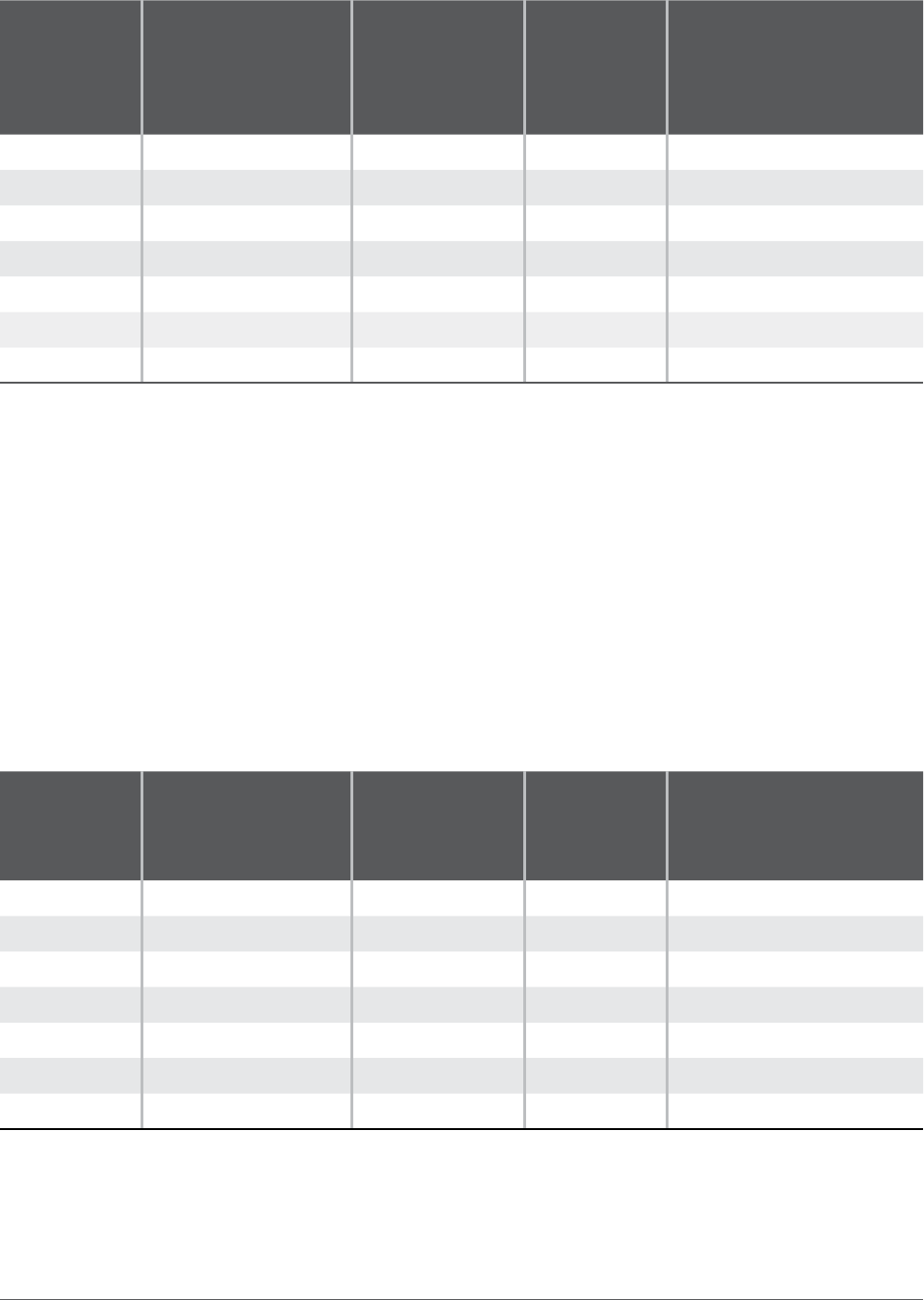
39
Revenue Guide for Washington Cities and Towns | AUGUST 2024
Banked Capacity Example #1
Year Maximum allowable
levy
1% increase each
year*
Actual levy
amount
Levy
increase
Future banked capacity
available:
maximum allowable levy
minus actual levy
(baseline) ,, ,, N/A
,, ,, % ,
,, ,, % ,
,, ,, % ,
,, ,, % ,
,, ,, % ,
,, ,, .%
* For simplicity, does not include “add-ons”
The same principles apply if the city decides to lower its levy amount, or if it increases its levy but by less than
the maximum allowable amount. In Example #2, the city has experienced a revenue windfall in Year 0 and has
more money than it needs for the Year 1 budget. Rather than putting the excess funds in a contingency fund or
a “rainy day” fund, the city decides to give the taxpayers a break by lowering the property tax.
In Year 1, it lowers the tax by $50,000, resulting in $60,000 of banked capacity. In Years 2-5, the city gradually
increases the levy amount by $5,000 per year, or roughly 0.5%. Since this is still less than the allowable 1%
increase, the city’s banked capacity continues to grow. For Year 6, the city faces a revenue shortfall and
decides to use most of its banked capacity, resulting in a one-time levy increase of over 7%. However, the city
did not use all of its banked capacity, so it will still have some banked capacity available in future years.
Banked Capacity Example #2
Year Maximum allowable
levy
1% increase each
year*
Actual levy
amount
Levy
increase
Future banked capacity
available:
maximum allowable levy
minus actual levy
(baseline) ,, ,, N/A
,, , -.% ,
,, , .% ,
,, , .% ,
,, , .% ,
,, , .% ,
,, ,, .% ,
* For simplicity, does not include “add-ons”
Table of Contents

40
Revenue Guide for Washington Cities and Towns | AUGUST 2024
There are no special procedures a city must follow or resolutions it must adopt to bank capacity – you can
simply bank capacity by following the normal levy-setting process (see Annual Levy Certification Process).
When you certify the property tax levy to the county assessor (for cities, no later than November 30 under RCW
84.52.070), you simply state how much you are increasing your levy, both in dollars and in percent. If you are
not increasing your levy at all, you would state that you are increasing your levy by $0, which is a 0% increase.
If the percent increase is less than 1%, you automatically bank the excess capacity.
However, if you miss the November 30 deadline or fail to adopt an annual levy ordinance, you cannot increase
your levy above the current level, and you cannot bank the capacity for the next year.
To find out whether your city has banked capacity available – and how much – contact your county assessor. If
you have banked capacity available, you can use it by simply including some or all of your banked capacity in
your annual levy certification ordinance due to the assessor by November 30.
Practice Tip: As noted earlier, cities with a population of 10,000 or more may only increase the
maximum allowable levy by 1% or the rate of inflation as measured by the implicit price deflator,
whichever is less. This applies to banked capacity, too, since your banked capacity is the
dierence between your maximum allowable levy and your actual levy.
For instance, if the IPD increases only 0.5% and your city does not increase its levy at all for
next year, you may only bank the extra 0.5% capacity next year. However, you can still bank the
full 1% capacity if you adopt a resolution or ordinance of “future substantial need,” just as you
would a normal resolution or ordinance of “substantial need” (see The Implicit Price Deflator and
“Substantial Need”).
Table of Contents

41
Revenue Guide for Washington Cities and Towns | AUGUST 2024
LEVY LID LIFTS
Quick Summary
• Allows cities to exceed the 1% annual levy lid for any of their levies.
• Two basic options:
– “Single-year” lid lifts allow you to exceed the 1% annual lid for one year only.
– “Multi-year” lid lifts allow you to exceed the 1% annual lid for up to six years.
• Cannot use a levy lid lift if city is levying its statutory maximum rate.
• Revenues are either unrestricted or restricted depending upon the levy lid being increased.
• Requires voter approval.
RCW: 84.55.050
If your city is levying less than its statutory maximum levy rate per $1,000 AV, you can exceed the 101% levy lid
limit through a voter-approved “levy lid lift.” (See RCW 84.55.050and WAC 458-19-045, which provides a better
understanding of the process than the statute.)
A levy lid lift is not a separate property tax, but rather a way of increasing an existing property tax, such as
your general fund levy or EMS levy, above the 1% increase limit. Any city levying a tax rate below its statutory
maximum rate may ask the voters to “lift” the levy lid by increasing the tax rate to some amount less than or equal
to its statutory maximum rate. If your city is already levying its maximum rate, you cannot use a levy lid lift.
Your city would need to do a separate levy lid lift for each of its respective levies. For instance, you could
submit one ballot measure for your general fund levy, but you would have to submit a separate ballot measure
for your EMS levy.
Beginning in 2018, cities can exempt senior citizens, disabled veterans, and other people with disabilities
(as defined inRCW 84.36.381) from the tax increase resulting from a levy lid lift if desired. This exemption is
optional, and if your jurisdiction is planning a levy lid lift and you want to exempt these individuals, you must
state the exemption in the ballot measure placed before the voters. If you choose this option, this will result in
two separate assessed valuations for your levy – one that applies to the levy amount below the lid lift, and a
somewhat smaller assessed valuation that applies to the levy lid lift portion only.
Levy lid lifts can be quite confusing. Cities have two main options: “single-year” and “multi-year” lid lifts.
However, these names can be confusing too, since “single-year” lid lifts typically last for multiple years and can
be made permanent.
A good way to think of the dierence between “single-year” and “multi-year” lid lifts is: How many years can
your total levy increase by more than 1 percent? With a single-year lid lift, you can exceed the 1% annual limit
for one year only, and then future increases are limited to 1% (or inflation) for the remainder of the levy. With a
multi-year lid lift, you can exceed the 1% annual limit for up to 6 consecutive years.
Table of Contents
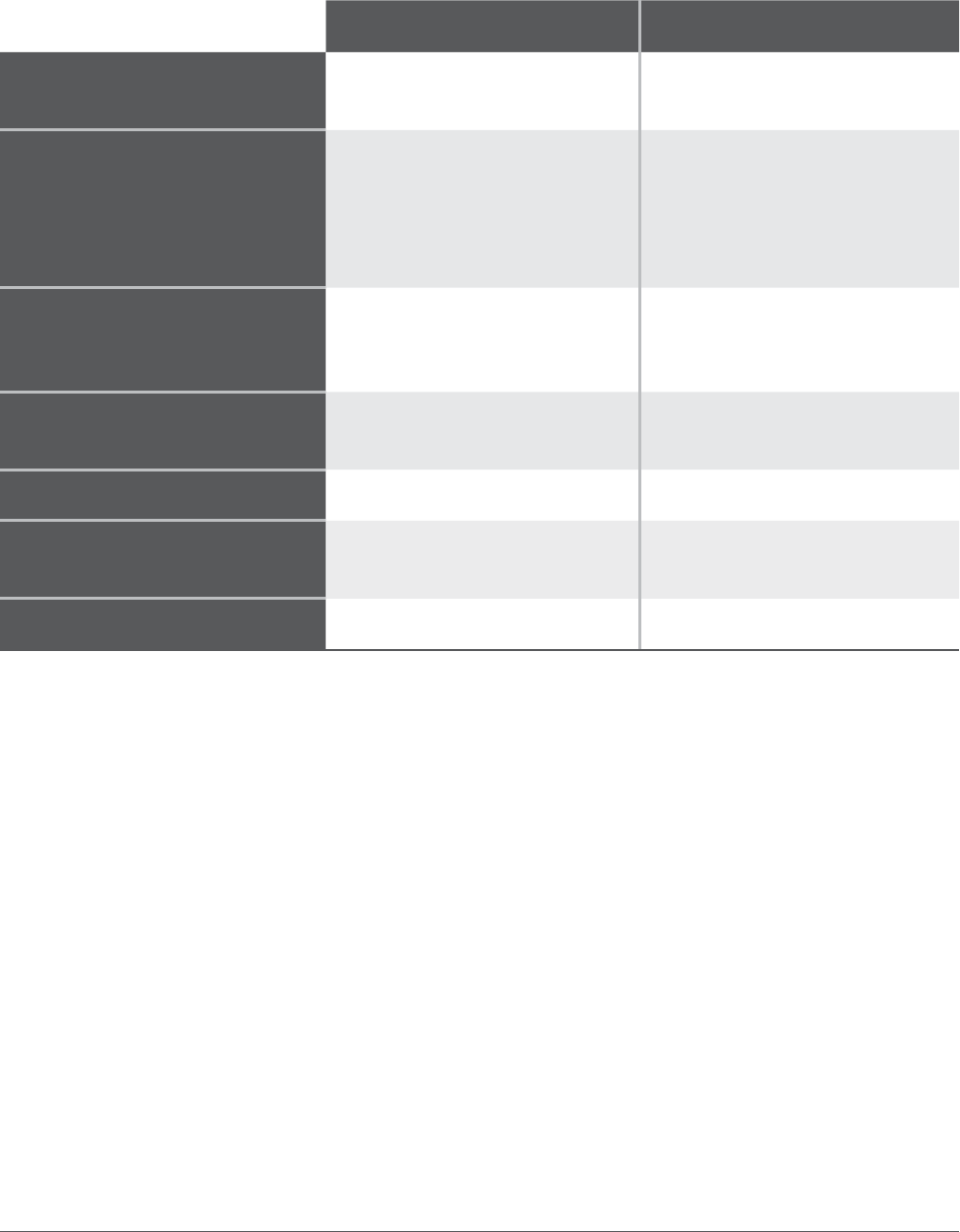
42
Revenue Guide for Washington Cities and Towns | AUGUST 2024
Which Option is Better?
The answer, of course, is “it depends.” There are a number of key dierences between single-year and multi-
year lid lifts. A brief summary is below, with more details on the following pages.
Comparison of Levy Lid Lift Options
“Single-Year” Option “Multi-Year” Option
Number of years you can exceed
the 1% annual levy limit
1 Up to 6
Temporary option After Year 1, levy amount in-
creases up to 1% annually for
specified number of years. After
measure expires, levy reverts as
if lid lift never occurred.
Lid lift lasts up to 6 years, with
annual limit factor specified
by city. After measure expires,
levy reverts as if lid lift never
occurred.
Permanent option Year 1 levy is used to calculate
all future 1% levy increases
Levy amount in final year is used
to calculate all future 1% levy
increases
May be used for Any lawful governmental
purpose
Any limited purpose stated in
the ballot measure
Supplanting restrictions? None None
Election date Any special, primary, or general
election
Primary or general election only
Voter approval required Simple majority Simple majority
Setting a specific time period (a temporary lid lift) may make the ballot measure more attractive to the voters.
But, making it permanent means you can use the funds for ongoing operating expenditures without having to
be concerned that you will have to go back to the voters for another lid lift.
When selecting the right levy lid lift option for your city, here are a few key factors to consider:
• How much money you need to raise;
• What you need the revenue for, and for how long (for instance, continued operating costs versus a capital
project that will only last a few years);
• How quickly your costs, and property values, are increasing;
• Your desired election date (special, primary, or general); and
• How you think voters will respond to the dierent alternatives (for instance, a permanent versus
temporary tax).
Table of Contents

43
Revenue Guide for Washington Cities and Towns | AUGUST 2024
Using Levy Lid Lifts to Repay Debt
Both single-year and multi-year levy lid lifts can be used to repay debt. However, if the levy lid lift is used to
repay debt, it may not exceed nine years.
Practice Tip: Many cities consider whether they can use a levy lid lift to circumvent the
supermajority voter approval and minimum turnout requirements of a voted general obligation
(G.O.) bond. However, if you can get the required 60% approval from voters, a voted G.O. bond
repaid by an excess levy (see G.O. Bond Excess Levies (Capital Purposes)), provides several
advantages over a levy lid lift:
• Because the excess levy is automatically sized to be sucient to pay the principal and
interest on the bonds due in each year, it is a more stable revenue stream. The amount of
revenue generated by a levy lid lift, by comparison, is subject to fluctuation based on the
interplay of assessed valuation and levy rate limits or the 1% levy lid (see The 1% Annual Levy
Lid Limit (“101% Limit”)).
• Because an excess levy is a dedicated revenue stream that cannot be used for other
purposes, it will likely be seen as more secure by the bond market and may result in a better
rating, and thus lower interest rates for your city to pay.
• The excess levy will be collected as long as necessary to repay the bonds, which is often 20
years or more. If you plan to use a levy lid lift to repay bonds, the levy lid lift cannot last for
more than nine years.
Table of Contents

44
Revenue Guide for Washington Cities and Towns | AUGUST 2024
Single-Year Levy Lid Lifts
Quick Summary
• Allows cities to exceed the 1% annual levy lid for any of their levies for one year only.
– If lid lift is temporary, all subsequent levies are limited to a 1% annual increase until the measure
expires, at which point the maximum allowable levy reverts to what it would have been without
the lid lift.
– If lid lift is permanent, all subsequent levies are limited to a 1% annual increase and the levy
increase never expires or reverts.
• Cannot use a levy lid lift if city is levying its statutory maximum rate.
• Revenues are unrestricted and may be used for any lawful governmental purpose, but must
be spent in accordance with the purpose(s) specified in the ballot measure (if any).
• Requires voter approval.
RCW: 84.55.050(1)
The single-year levy lid lift is the original version, created in 2001 by Initiative 747 (which lowered the annual
levy limit from 6% to 1%). Some people refer to it with a variety of other names, such as “one-bump,” “one-year,”
“basic,” “original flavor,” or “plain vanilla.”
The single-year lid lift allows your city to increase its maximum levy by more than 1% for one year only. The
resulting amount is then used as a base to calculate all subsequent 1% levy limitations for the duration of
the levy.
Single-year levy lid lifts can be temporary or permanent. With a temporary single-year lid lift, the city sets
an expiration date for the levy. The temporary lid lift can last for any number of years, but if used to repay
debt service it may not exceed nine years.
25
The levy lid bumps up more than 1% in the first year, and then
that amount is used to calculate all subsequent 1% levy limitations until the measure expires. When the lid
lift expires, the levy lid reverts to what it would have been if the levy lid lift never existed and the city had
increased its levy by the maximum allowable amount each year in the meantime.
With a permanent single-year levy lid lift, the levy lid bumps up more than 1% in the first year, and then that
amount is used to calculate all future 1% levy limitations. The measure never expires and the levy lid never
reverts. However, future annual increases may not exceed 1% without going to the voters for another lid lift.
See the examples on the next page.
25 Except Thurston County, which may use a levy lid lift up to 25 years for debt service. This exception only applies to the
county itself and not to any cities within Thurston County. See RCW 84.55.050(4)(c)(i).
Table of Contents

45
Revenue Guide for Washington Cities and Towns | AUGUST 2024
Use of Revenues
Single-year lid lifts may be used for any of the city’s levies, including the general fund levy, and there are no
restrictions on supplanting funds. For instance, you could say a general fund levy lid lift would be for public
health programs or for additional money for general government purposes, or you could say nothing at all. In
the latter case, by default, it would be for general government purposes. Stating a particular purpose, however,
may improve your chances of getting the voters to approve it. If you do state a purpose, the revenues must be
spent in accordance with that purpose.
If the single-year levy lid lift is used for debt service, it may not exceed 9 years. However, note that the amount
of revenue generated by a levy lid lift is not guaranteed to provide the precise amount of revenue needed to
repay the debt, since the revenues generated by the levy lid lift depend upon assessed valuation, levy rate
limitations, and the 1% annual levy lid.
Ballot Measure Requirements
Single-year lid lifts may be submitted at any special, primary, or general election and require a simple majority
approval. There are no validation (minimum voter turnout) requirements.
A single-year lid lift ballot measure must:
• State themaximum tax rateto be imposed in the first year (for instance, $1.50 per $1,000 AV).
• If temporary, state the total duration of the levy (number of years).
• If permanent, state that it is permanent or that the dollar amount of the levy will be used for the purpose of
computing the limitations for subsequent levies.
• State the exemption for senior citizens and persons with disabilities underRCW 84.36.381, if the city wishes
to exempt these individuals
The ballot measure also must comply with RCW 29A.36.071 regarding ballot title composition and length.
The ballot measure does not have to state:
• The purpose, although doing so is a good idea.
• The increase in the levy rate (for instance, an increase of $0.20 per $1,000 AV), although some
jurisdictions do so.
• The maximum total levy amount (for instance, a total levy amount of $300,000). In fact, including the total
dollar amount can lead to confusion and even legal challenges if the levy lid lift passes. For instance, if
there are significant increases to assessed valuation in Year 1 of the levy lid lift, multiplying the levy rate
stated in the ballot measure by the new assessed valuation might result in a levy amount that is higher than
the dollar amount approved by voters.
For examples of levy lid lift resolutions and supporting materials, see our Levy Lid Lifts webpage. To see how
levy lid lifts have performed in recent years, refer to MRSC’s Local Ballot Measure Database.
Table of Contents
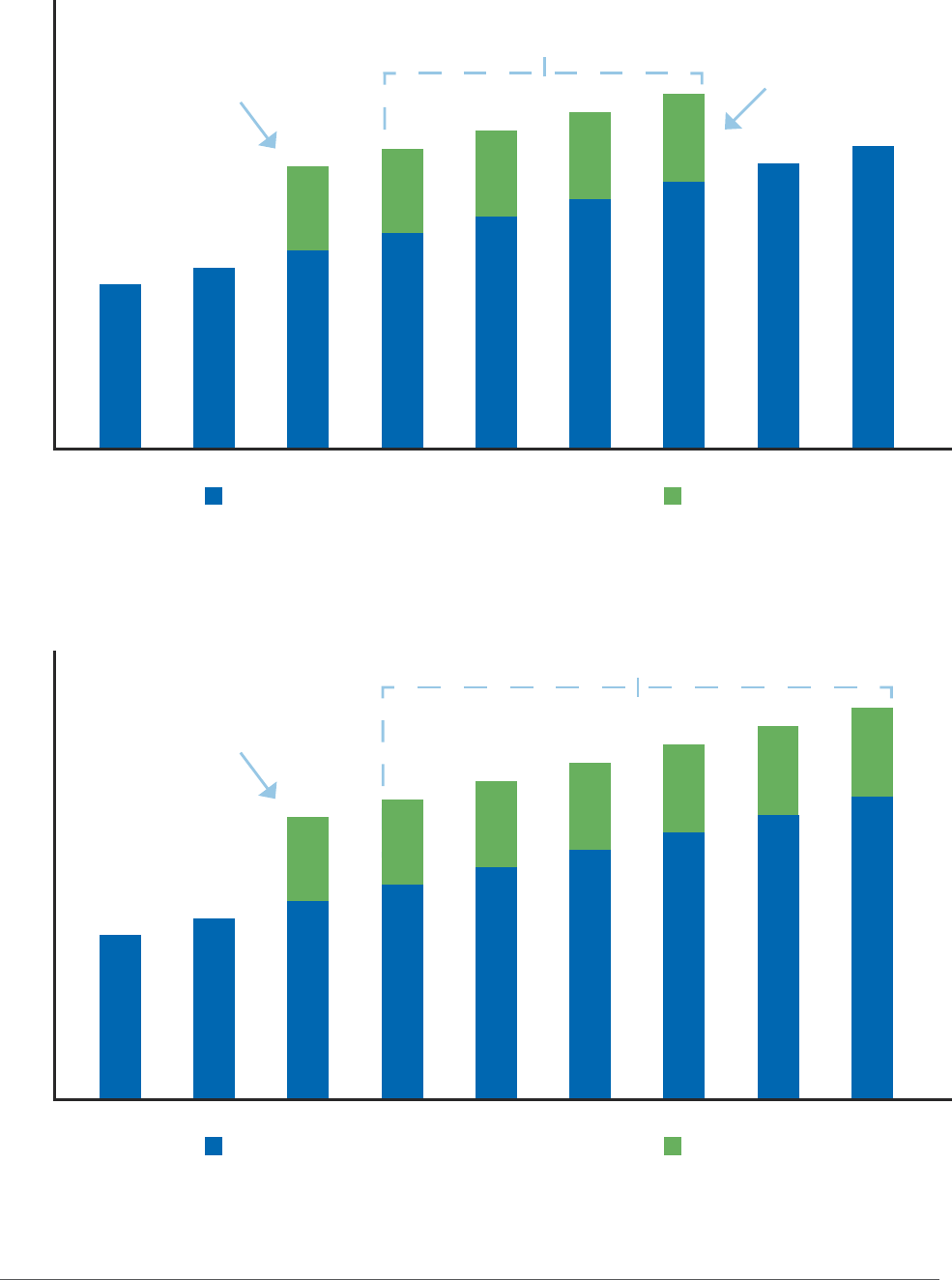
46
Revenue Guide for Washington Cities and Towns | AUGUST 2024
Resumes 1% annual increase for number
of years specified in ballot measure
1% annual increase going forward, never expires
SINGLE-YEAR TEMPORARY LEVY LID LIFT
SINGLE-YEAR PERMANENT LEVY LID LIFT
Total Dollar Amount of Levy
(scale exaggerated for illustration purposes)
Total Dollar Amount of Levy
(scale exaggerated for illustration purposes)
Can never exceed statutory maximum levy rate per $1,000 assessed value
Without lid lift (1% annual increase plus “add-ons”) With lid lift
Can never exceed statutory maximum levy rate per $1,000 assessed value
Without lid lift (1% annual increase plus “add-ons”) With lid lift
Levy “cli,” levy reverts
to what it would have
been without the lid lift
One-time “bump”
exceeds 1% annual limit
One-time “bump”
exceeds 1% annual limit
Table of Contents

47
Revenue Guide for Washington Cities and Towns | AUGUST 2024
Multi-Year Levy Lid Lifts
Quick Summary
• Allows cities to exceed the 1% annual levy lid for any of their levies for up to 6 years.
– If lid lift is temporary, all subsequent levies are limited to a 1% annual increase until the measure
expires, at which point the maximum allowable levy reverts to what it would have been without
the lid lift.
– If lid lift is permanent, all subsequent levies are limited to a 1% annual increase and the levy
increase never expires or reverts.
• Cannot use a levy lid lift if city is levying its statutory maximum rate.
• Revenues are must be used for any limited purpose.
• Requires voter approval.
RCW: 84.55.050(2)
The state legislature added the “multi-year” levy lid lift option in 2003. Unlike the single-year (“one-bump”)
levy lid lift, which bumps up once and is then used to calculate the 1% limitation for the remainder of the levy,
a multi-year levy lid lift authorizes a jurisdiction to bump up or exceed the 1% limitationeach yearfor up to six
consecutive years.
Multi-year lid lifts may be temporary or permanent. With a temporary multi-year lid lift, the levy lid bumps up
more than 1% each year (up to the limit factor specified in the ballot measure) for up to six years. When the
lid lift expires, the levy lid reverts to what itwould have beenif the levy lid lift never existed and the city had
increased its levy by the maximum allowable amount each year in the meantime (RCW 84.55.050(5)).
With a permanent multi-year lid lift, the levy lid bumps up more than 1% each year (up to the limit factor
specified in the ballot measure) for up to six years. However, the lid lift does not revert and the maximum levy in
the final year of the lid lift is then used as the base to calculate all future 1% levy limitations.
See the examples on the next page. Occasionally, a jurisdiction may adopt a “hybrid” approach, in which the
levy amount increases more than 1% for up to six years, followed by several years of 1% increases, and then the
levy lid lift expires and reverts to what it would have been without the lid lift.
Table of Contents

48
Revenue Guide for Washington Cities and Towns | AUGUST 2024
Use of Revenues
A multi-year levy lid lift may be used for any limited purpose, and the ballot must state the limited purposes for
which the increased levy will be used. Both requirements are more restrictive than a single-year lid lift, which
can be used for any lawful governmental purpose with no requirement to state the purpose. The statute does
not define how limited a “limited purpose” must be, but some attempt should be made to identify a purpose
that is narrower than “any general fund purpose” or “general governmental purposes.”
Multi-year lid lifts may also be used for debt service for up to nine years, in which case they may fall
somewhere in between “temporary” and “permanent.” If a multi-year lid lift is used to pay debt service, the
increased levy may not last for more than 9 years total. The multi-year lid lift would exceed the 1% limit for up
to 6 years, and then the lid would increase up to 1% annually for the remaining years. After no more than nine
years, the levy would expire and the levy lid would revert to what it would have been without the lid lift.
However, note that the amount of revenue generated by a levy lid lift is not guaranteed to provide the precise
amount of revenue needed to repay the debt, since the revenues generated by the levy lid lift depend upon
assessed valuation, levy rate limitations, and the 1% annual levy lid.
Choosing a Limit Factor
The lift must state the total tax ratefor the first year only– itcannotstate the maximum rate in future years. For
all subsequent years, the measure must identify a maximum “limit factor” which the total levy amount cannot
exceed, which temporarily overrides the normal 1% annual levy lid. If the amount of the increase for a particular
year would require a levy rate that is above the city’s maximum levy rate, the assessor will levy only the
maximum amount allowed by law.
The limit factor can be stated as an annual percent increase or the rate of change in a specific inflation index,
and it does not have to be the same each year. For instance, the limit factor might be 3% annually, or 6%
annually for the first two years and 4% annually after that, or the annual inflation increase as measured by an
index such as the Consumer Price Index (CPI). However, the ballot title may only have 75 words, so you do not
have much space to get too creative or provide too much detail.
Table of Contents
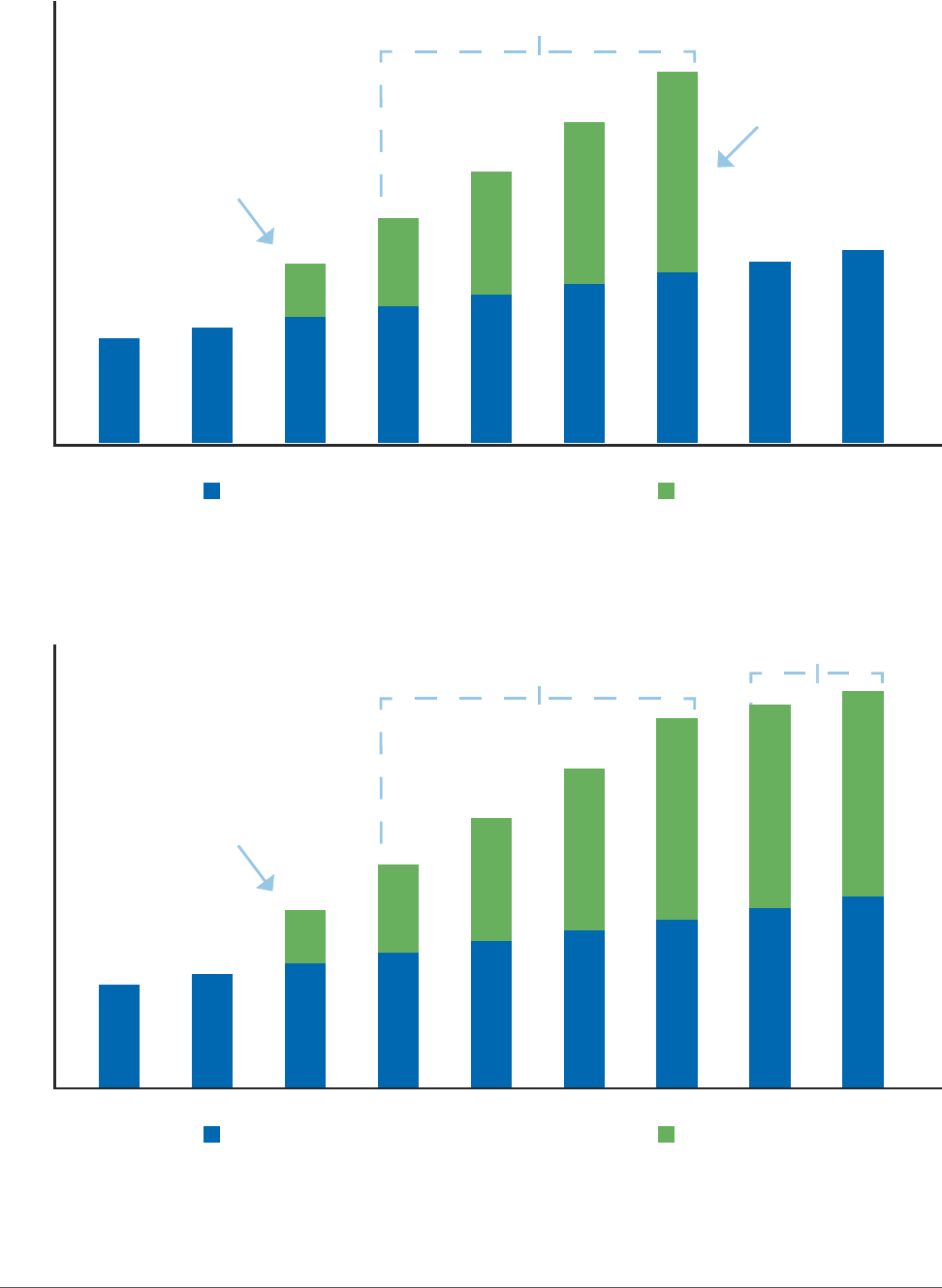
49
Revenue Guide for Washington Cities and Towns | AUGUST 2024
Levy increases more than 1% annually (up
to limit factor specified in ballot measure)
for up to 5 additional years
1% annual increase going
forward, never expires
Levy increases more than 1% annually (up
to limit factor specified in ballot measure)
for up to 5 additional years
MULTI-YEAR TEMPORARY LEVY LID LIFT
MULTI-YEAR PERMANENT LEVY LID LIFT
Total Dollar Amount of Levy
(scale exaggerated for illustration purposes)
Total Dollar Amount of Levy
(scale exaggerated for illustration purposes)
Can never exceed statutory maximum levy rate per $1,000 assessed value
Without lid lift (1% annual increase plus “add-ons”) With lid lift
Can never exceed statutory maximum levy rate per $1,000 assessed value
Without lid lift (1% annual increase plus “add-ons”) With lid lift
Levy “cli,” levy reverts
to what it would have
been without the lid lift
Initial “bump” exceeds
1% annual limit
Initial “bump” exceeds
1% annual limit
Table of Contents

50
Revenue Guide for Washington Cities and Towns | AUGUST 2024
Practice Tip: If you are using an inflation index such as the CPI for your limit factor, make sure to
specify exactly which inflation index (Seattle CPI-U, U.S. City Average CPI-W, etc.) you are using.
The federal Bureau of Labor Statistics recommends using a national CPI index for measuring
inflation, rather than a regional CPI index such as Seattle-Tacoma-Bellevue. Not only is the
Seattle-Tacoma-Bellevue index published less frequently (every two months instead of every
month), but it is based on a smaller sample and is therefore more volatile and subject to more
measurement error. However, some local jurisdictions within Washington do use the Seattle CPI
index for inflation.
In addition, you may want to consider including a provision to the eect of, “the percentage
change in the [CPI-U, CPI-W, etc.] or 1%, whichever is greater,” which would allow you to take
the normal 1% increase even if inflation falls below 1%. Otherwise, you could be limiting your
jurisdiction’s ability to increase its levy if inflation drops below 1% during the multi-year lid lift
timeframe. For instance, if the CPI only increases by 0.5% in the second year of your lid lift, you
may be limited to a 0.5% increase in your levy amount, which would also reduce your maximum
allowable levies in future years.
Ballot Measure Requirements
Multi-year lid lifts may be submitted at any primary or general election, but they may not be submitted at a
February or April special election. Multi-year lid lifts require a simple majority vote, and there are no validation
(minimum voter turnout) requirements.
A multi-year lid lift ballot measure must:
• State the total levy duration (number of years).
• If permanent, state that it is permanent or that the dollar amount of the levy will be used for the purpose of
computing the limitations for subsequent levies.
• State the maximum taxrateto be collected in the first year (for instance, $1.50 per $1,000 AV)
• State thelimit factorto be used for all subsequent years (stated as an annual percent increase or inflation
index). The amounts do not need to be the same for each year.
• State the exemption for senior citizens and persons with disabilities underRCW 84.36.381, if the city wishes
to exempt these individuals
The ballot measure also must comply with RCW 29A.36.071 regarding ballot title composition and length. For
examples of levy lid lift resolutions and supporting materials, see our Levy Lid Lifts webpage.
The ballot measurecannotstate the maximum levyratefor subsequent years after the first year, since future
rates cannot be calculated without first knowing the levy amount and the assessed valuation for each year.
For instance, the ballot measure can state that it will increase the first year levy to $3.10 per $1,000 AV, but it
cannot state that it will maintain the $3.10 rate for the next five years.
26
26 If the intention were to maintain the same levy rate over the lid lift period, the closest you could come would be to
choose a “limit factor” in the ballot measure that would be equal to the year-over-year rate of increase in assessed value for
your jurisdiction, excluding new construction and other “add-ons.” However, in jurisdictions with rapidly increasing assessed
values, the rate could be so high that it might be politically unpalatable to voters.
Table of Contents
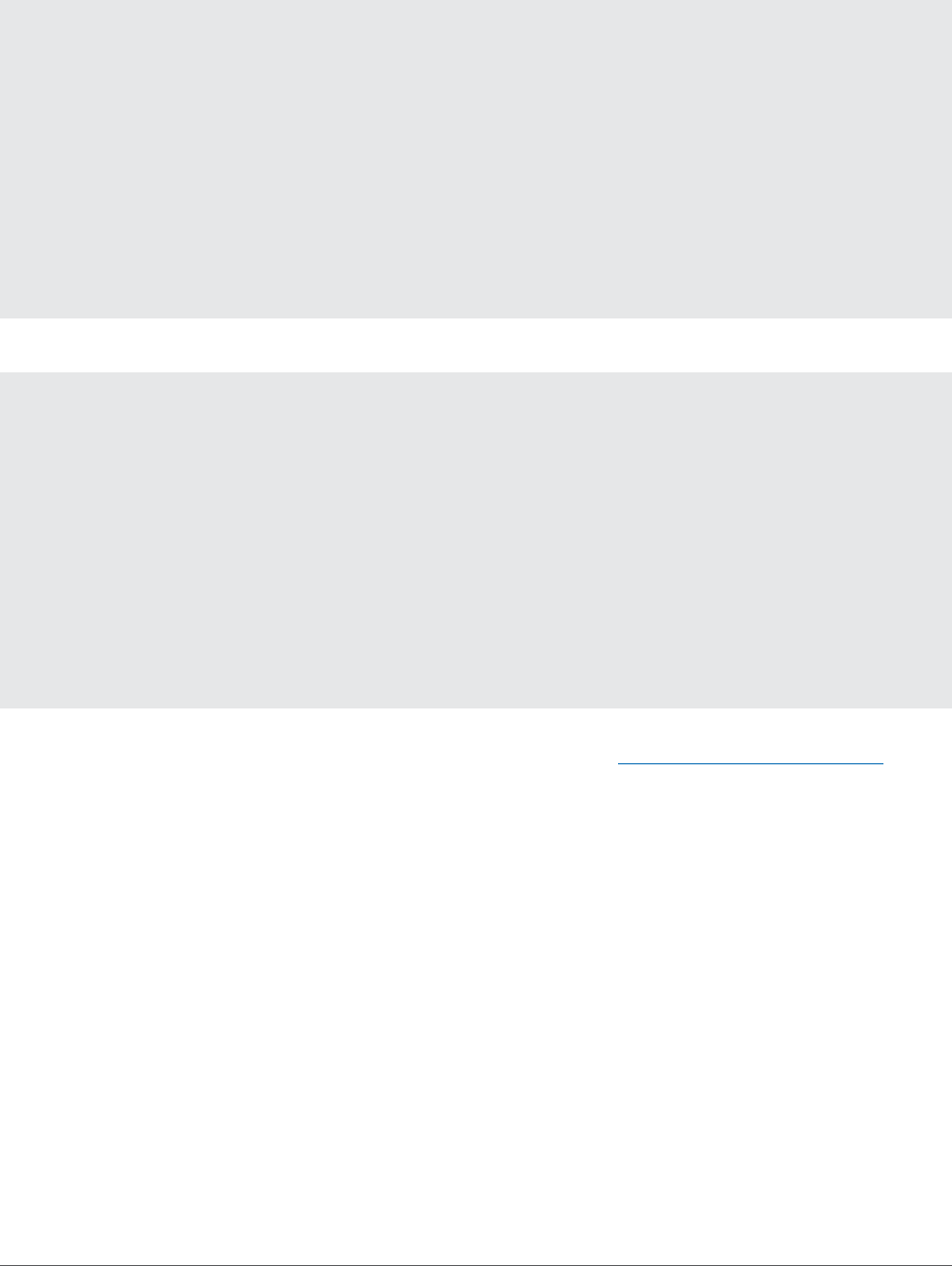
51
Revenue Guide for Washington Cities and Towns | AUGUST 2024
Below are examples of correct and incorrect ballot measure language for multi-year levy lid lifts. These are
examples only, based on real-life instances we have seen. Cities have some flexibility in how they phrase a levy
lid lift ballot measure and do not have to follow this exact wording.
CORRECT
This proposition would restore the city’s regular property tax levy rate to $3.00 per $1,000 of
assessed valuation for collection in 2020 and authorizes annual increases up to 6% for each of the
succeeding five years…
This proposition would authorize a maximum regular property tax levy rate of $2.10 per $1,000 of
assessed valuation for collection in 2020 and sets the limit factor for the five succeeding years at 100%
plus the annual percentage change in the CPI-W or 1%, whichever is greater…
Both of these ballot measures correctly establish a levy rate for the first year, with a limit factor (percentage
increase) for the next 5 years.
INCORRECT
This proposition would increase the city’s regular property tax levy rate to $2.25 per $1,000 of
assessed valuation for collection in 2020, 2021, and 2022…
This measure incorrectly establishes a levy rate for three years.
This proposition would authorize a regular property tax levy rate of $2.00 per $1,000 assessed value for
collection in 2020, increase the 2021-2023 maximum levies by $0.30 per $1,000 assessed value, and
increase the 2024-2025 maximum levies by $0.20 per $1,000 assessed value…
This measure correctly establishes a levy rate for the first year but then incorrectly increases the levy rate
for the next 5 years, instead of establishing a limit factor (percentage increase).
To see how levy lid lifts have performed in recent years, refer to MRSC’s Local Ballot Measure Database.
Table of Contents
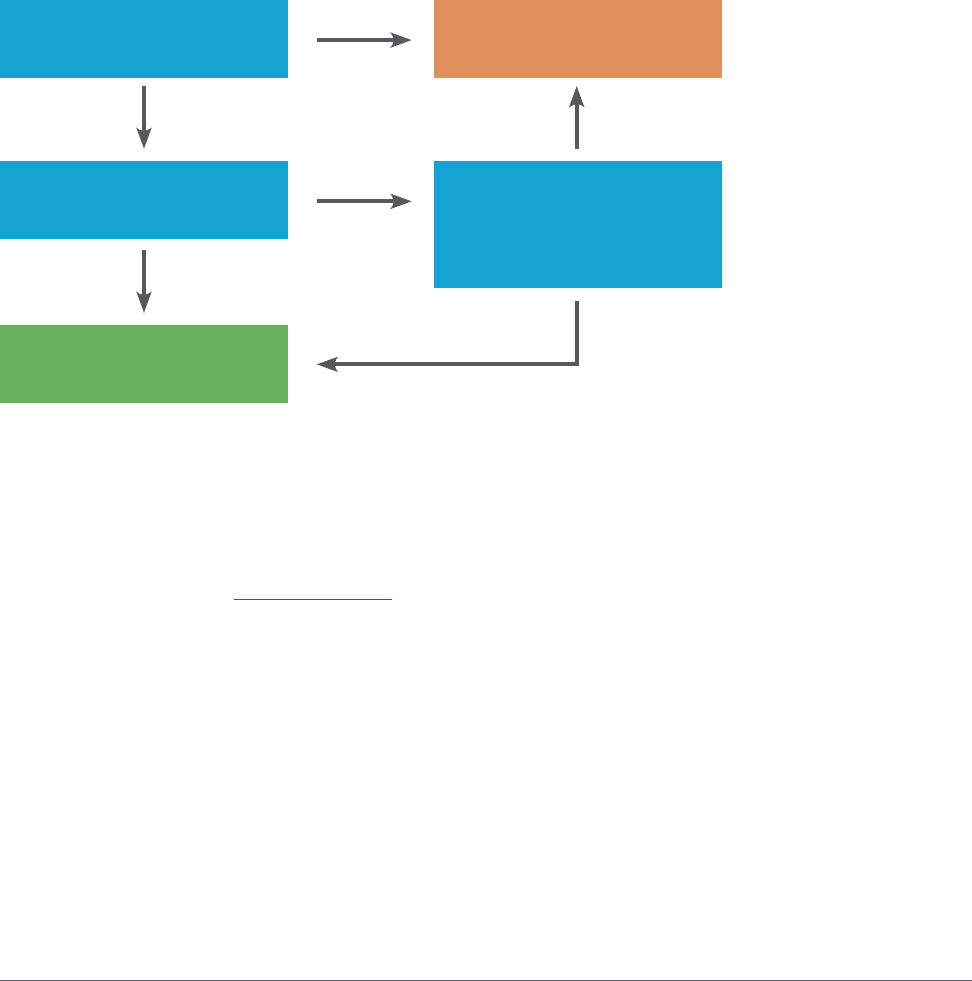
52
Revenue Guide for Washington Cities and Towns | AUGUST 2024
VALIDATION/VOTER TURNOUT REQUIREMENTS
Voted bond measures, and certain voted property taxes, require a 60% supermajority and a minimum level of
voter turnout, known as “validation.” If voter turnout is too low and a ballot measure does not meet its validation
requirements, it will fail.
The only city revenue options requiring validation are bond measures, excess O&M levies, permanent EMS
levies, or the initial imposition of a 6-year or 10-year EMS levy. (There are also some other county and special
purpose district levies that require validation.) Levy lid lifts, sales taxes, and other voted revenue sources have
no minimum turnout requirements and do not require validation.
Below is a fairly simple test to help you figure out which ballot measures require validation. While there is no
one single statute addressing validation, it appears the various ballot measure statutes all follow these rules:
Does Your Ballot Measure Require Validation (Minimum Voter Turnout)?
Validation is calculated by comparing the voter turnout in the current election to the most recent general
election, which means the validation requirements change from year to year depending on voter turnout the
preceding November. Following each general election, the county auditor must determine the number of
voters participating in the election for each taxing district (including each city or town) and provide that number
to each taxing district (see WAC 434-262-017).
However, it is up to each taxing district to determine the validation requirements for any of its upcoming ballot
measures and to determine whether the measure passed. The county auditor’s oce counts the number of
“yes” and “no” votes for each ballot measure but is not responsible for determining the minimum validation
requirements or determining whether the measure passed. Consult your legal counsel and make sure you know
whether your ballot measure requires validation and, if it does, what the minimum approval thresholds are.
Is your ballot measure a
property tax?
Is your ballot measure a
bond (debt) measure?
Validation is REQUIRED
Does it require a simple
majority (50% plus one)
for passage, or a 60%
supermajority?
YES
YES
NO
Validation is NOT required
NO
60% SUPERMAJORITY
SIMPLE MAJORITY
Table of Contents

53
Revenue Guide for Washington Cities and Towns | AUGUST 2024
Practice Tip: Validation is not a problem for most jurisdictions in most years, but it can
occasionally create diculties, particularly in low-turnout elections in years immediately
following high-turnout general elections. The highest turnout general elections, invariably, are
those corresponding to the United States presidential election and Washington gubernatorial
election, which occur on the same cycle every four years. So, pay particular attention to
validation if your city is planning to run a bond measure or 60% voted property tax in the year
following a presidential election!
Validation Requirements for 60% Voted Property Taxes (Except Bonds)
The validation requirements for EMS levies (RCW 82.52.069(2)) and excess O&M levies (Washington State
Constitution, Article VII, Section 2(a)) are spelled out separately, but the requirements are the same. Note that
validation is required for permanent EMS levies or the initial imposition of a 6-year or 10-year EMS levy, but not
for an EMS levy lid lift or the “subsequent renewal” of an EMS levy at a rate previously approved by voters.
For excess O&M levies and EMS levies requiring validation, the measure must meet one of the following
requirements:
• 40% minimum turnout: The number of voters voting on the proposition must be at least 40% of the
number of voters who cast ballots in the taxing district in the most recent state general election, AND the
measure must receive at least a 60% “yes” vote.
• “Backdoor” provision if turnout is under 40%: If the number of voters voting on the proposition is less
than 40% of the number of voters who cast ballots in the taxing district in the most recent state general
election, the number of “yes” votes must be at least 60% of 40% (or, in plain English, 24%) of the number
of votes cast in the most recent state general election. This means that the measure can still pass with less
than 40% turnout, but the required “yes” percentage starts climbing above 60%. Theoretically, a property
tax measure could pass with as little as 24% turnout using the “backdoor” method, but that would require
the support of 100% of the voters. (This backdoor provision does not apply to bond measures.)
For an illustration of how validation works for 60% voted property taxes, see the examples below. In these
examples, the number of voters who cast ballots in the city in the most recent general election is 1,000. If
the number of voters voting on the proposition is at least 400 (40% of 1,000), the measure requires a 60%
supermajority to pass. If the number of voters voting on the proposition is less than 400, the “backdoor”
provision kicks in and the measure requires at least 240 “yes” votes (24% of 1,000) for passage.
Table of Contents

54
Revenue Guide for Washington Cities and Towns | AUGUST 2024
Examples of Validation for 60% Voted Property Taxes (Except Bonds)
Number of voters casting ballots in most recent general election = 10,000
Number of
voters voting
on proposition
“Yes” votes “No” votes Election result
(%) (%)
PASSED
received 60% yes vote
(%) (%)
FAILED
did not receive 60% yes vote
(%) (%)
PASSED
received 60% yes vote
Turnout ≥ 40% of
last general election
(%) (%)
FAILED
did not receive 240 yes votes
Turnout < 40% of
last general election
(%) (%)
PASSED
received 240 yes votes
“Backdoor” method
Validation Requirements for Bond Measures
The validation requirements for bond measures are stricter. Every voted bond measure requires a 60%
supermajority in favor and minimum turnout of 40% compared to the most recent general election. There is no
“backdoor” provision for bond measures. If turnout is below the 40% threshold, the bond measure will fail no
matter how many “yes” votes it receives.
However, there is a slight discrepancy between the statutory and constitutional requirements for bonds,
which creates some uncertainty as to exactly how to calculate bond measure turnout. The Washington State
Constitution, Article VII, Section 2(b) states that “the total number of voters voting on the proposition shall
constitute not less than forty percent of the total number of voters voting in such taxing district at the last
preceding general election” [emphasis added].
But RCW 84.52.056(1) states that “the total number of persons voting at the election must constitute not less
than forty percent of the voters in the municipal corporation who voted at the last preceding general state
election” [emphasis added].
The statutory requirement is slightly less stringent than the constitutional requirement, as the number of
people voting at the election may be slightly greater than the number of people voting on the proposition.
This is because ballot propositions sometimes have a small number of “undervotes” (voters who cast a ballot
in the election but left that particular measure blank) or “overvotes” (voters selecting more than one choice,
in which case the vote is not counted). The dierence between the two standards is slight, but to be prudent
we recommend using the more restrictive constitutional standard and counting the number of voters voting
on the proposition.
For an illustration of how bond measure validation works, see the examples below, using the exact same
numbers as in the property tax example on the previous page. Again, the number of voters who cast ballots
Table of Contents
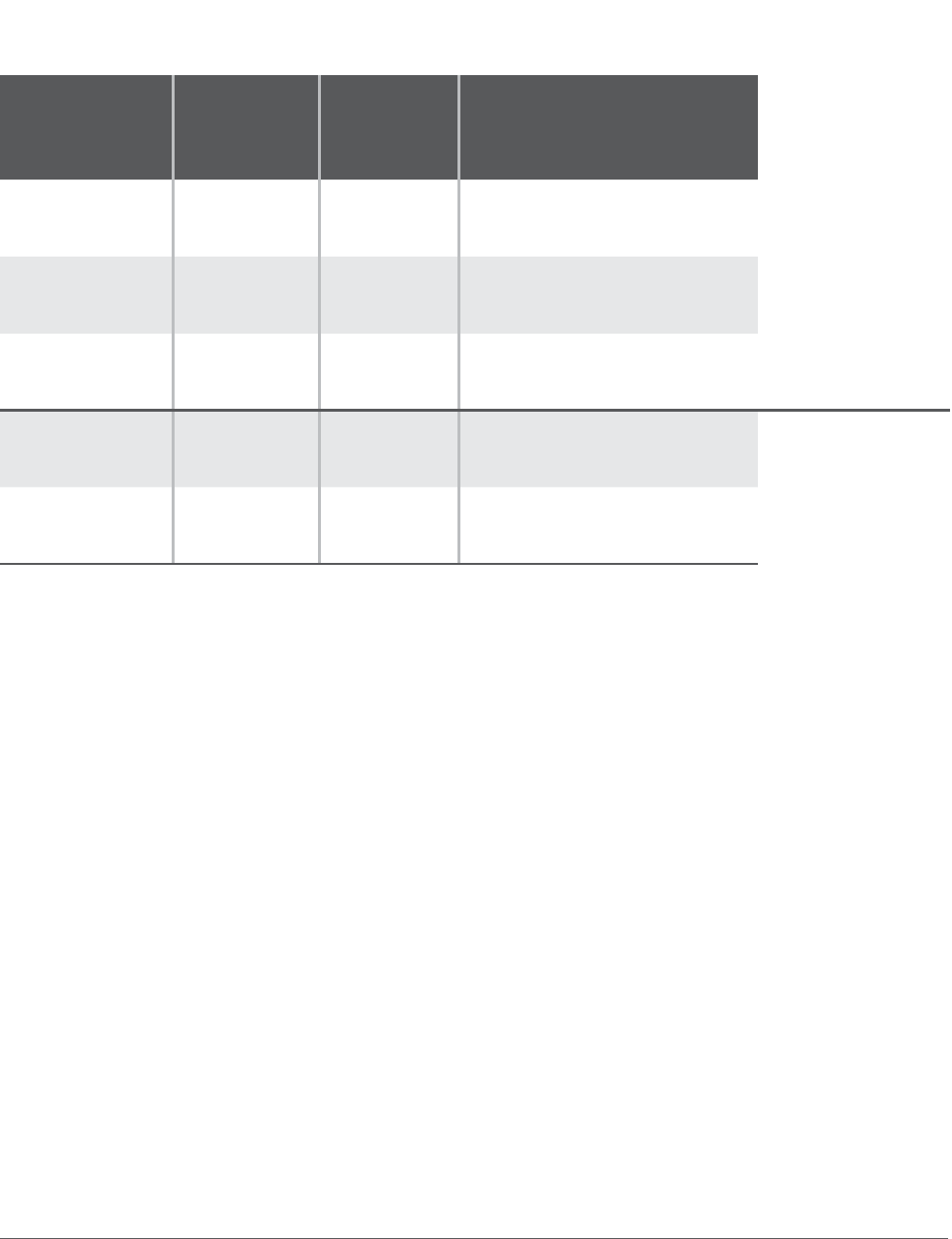
55
Revenue Guide for Washington Cities and Towns | AUGUST 2024
within the city in the most recent general election is 1,000. If the number of voters voting on the proposition
is at least 400 (40% of 1,000), the measure requires a 60% supermajority to pass. But this time there is no
“backdoor” provision. If the number of voters voting on the proposition is less than 400, the bond measure fails
no matter how many “yes” votes it receives.
Examples of Validation for Voted Bond Measures
Number of voters casting ballots in most recent general election = 10,000
Number of
voters voting
on proposition
“Yes” votes “No” votes Election result
(%) (%)
PASSED
received % yes vote
(%) (%)
FAILED
did not receive % yes vote
(%) (%)
PASSED
received % yes vote
Turnout ≥ % of
last general election
(%) (%)
FAILED
did not receive % turnout
Turnout < % of
last general election
(%) (%)
FAILED
did not receive % turnout
Measure fails
Table of Contents

56
Revenue Guide for Washington Cities and Towns | AUGUST 2024
ANNUAL LEVY CERTIFICATION PROCESS
As noted earlier, Washington uses a budget-based property tax system (see What is a Budget-Based Property
Tax?). This means that cities and other taxing districts, as part of their annual budget process, must first
establish the total dollar amount of property tax revenue they wish to generate for the upcoming year, subject
to several restrictions. Once the total dollar amount is established, the levy rate is calculated based on the
assessed valuation and other factors.
All cities must follow certain statutory procedures when setting their budgets, but one of the first steps in the
budget process is the forecasting of revenues which includes the amount to be raised by property taxes. For
details, see our Budget Preparation Procedures for Cities and Towns webpage.
When forecasting the amount to be raised by property taxes, all taxing jurisdictions including cities must
consider whether they want to increase their levy amounts over last year’s and by how much. Upon making this
determination and holding the required public hearing (RCW 84.55.120), you must adopt an ordinance stating
both the dollar increase for each levy and the percentage change from the prior year (RCW 84.55.120).
27
This
levy increase requirement is separate from the levy certification requirement that states the total property tax
levy being adopted within the budget. We know many attorneys want to combine these two requirements into
one document, but it is a good idea to follow the statutory language and keep them separate.
According to the statutory language, the ordinance for the levy increase may cover a period of up to two years, but it
must state the dollar increase and the percent change for each year individually.
28
The state Department of Revenue
(DOR) Property Tax Forms webpage, under “Levy Forms,” includes sample property tax ordinances (64 0101).
In addition, the city council must certify its desired levy amount for each of its levies to the county assessor no
later than November 30 each year (RCW 84.52.070)(2)). If the city fails to follow these requirements or misses
the November 30 deadline, it may not increase next year’s levy above the current levels.
29
DOR encourages cities to use its Levy Certification Form (64 0100) on its Property Tax Forms webpage.
30
DOR
likes cities and other taxing districts to use this form because it is cuts down on errors. The county assessors
can easily see how much property tax each taxing district is asking for, rather than having to plow through an
ordinance trying to find the relevant numbers. So, if you submit your DOR levy certification form and property
tax levy ordinance together, you will make DOR and your county assessor happy. Be sure the amounts match
27 RCW 84.55.120 states that the taxing district must adopt an “ordinance or resolution,” However, the language in this
statute was written with all taxing districts in mind. For special purpose districts and some counties, a resolution is the highest
level of authority. For cities and towns, an ordinance is the highest level of authority. It is our conclusion that any taxing district
must use its highest level of authority to pass this document, which means cities must specifically adopt an ordinance rather
than a resolution.
28 Note that the percent change from the prior year’s levy expressed in this separate ordinance may be much greater
than 1%, even if the taxing district is only taking the maximum allowable 1% increase. That is because the percent expressed
in this ordinance is a percentage above the absolute dollar amount levied in the previous year, while the maximum
allowable 1% increase is calculated on top of adjustments for new construction, annexations and changes in value of certain
state-assessed property. If a taxing jurisdiction is utilizing “banked capacity,” the percent expressed in this ordinance will
also be greater than 1%. Neither of these situations is cause for alarm and neither violates the 101% levy lid.
29 Counties and certain special purpose districts have December levy certification deadlines, but for cities the deadline is
November 30.
30 Note that this form was written on the assumption that the taxing districts adopt their budgets before the levy
certification deadline. However, cities are not required to adopt their budgets until December 31, and many cities have not
yet adopted their final budgets by November 30, so you might need to edit the last sentence. Rather than saying “which
was adopted following a public hearing held on ____________,” you might say “which will be adopted following a public
hearing scheduled to be held on ___________.”
Table of Contents

57
Revenue Guide for Washington Cities and Towns | AUGUST 2024
those in your levy ordinance. These documents may be submitted electronically or via postal service, but either
way we recommend you get confirmation that they were received.
If your city has more than one levy – such as an EMS levy or aordable housing levy in addition to your
general fund levy – you must adopt a separate ordinance for each levy and fill out a separate levy certification
form for each.
Cities with a population of 10,000 or more may also need to adopt a separate ordinance of “substantial need” if
the annual inflation rate falls below 1% on September 25 (see The Implicit Price Deflator and “Substantial Need”).
The levy that your city imposes will be collected during the upcoming calendar year. The year that the levy
ordinance is adopted is sometimes referred to as the “levy year,” with the following year when revenues are
received referred to as the “collection year.”
Practice Tip: Even if your city is not increasing its levy at all, you should still adopt an ordinance
stating that you are increasing your levy by $0 (a 0% increase) plus the increase due to new
construction and add-ons. Doing so will automatically preserve, or “bank,” your future levying
capacity, should you decide you need those funds at a later date (see Banked Capacity).
RECEIPT OF PROPERTY TAX REVENUES
Property taxes are due on April 30 and October 31, with penalties incurred if the payment is more than
one month late (RCW 84.56.020). In some counties, the treasurer transfers the city’s share of the revenue
received on a daily basis. In other counties, the treasurer makes the transfer on the 10th day of the month,
paying interest on the balances it has held until that time.
31
This means that cities receive the bulk of their
property tax revenue in May and June (for the April deadline) and in November and December (for the
October deadline).
Because these revenues are primarily received during two times of the year, cities that are heavily dependent
on property taxes should budget in a strategic way to ensure sucient ending fund balance (cash carryover)
and maintain a healthy cash flow from the end of the year to the next property tax receipting cycle. For
guidance, see MRSC’s Fund Balance and Reserve Policies webpage.
31 See RCW 84.56.230; RCW 36.29.110; Seattle v. King County, 52 Wn. App. 628 (1988), rev. denied, 112 Wn.2d 1002 (1989)
(Cities entitled to interest accumulated on tax collection prior to distribution).
Table of Contents
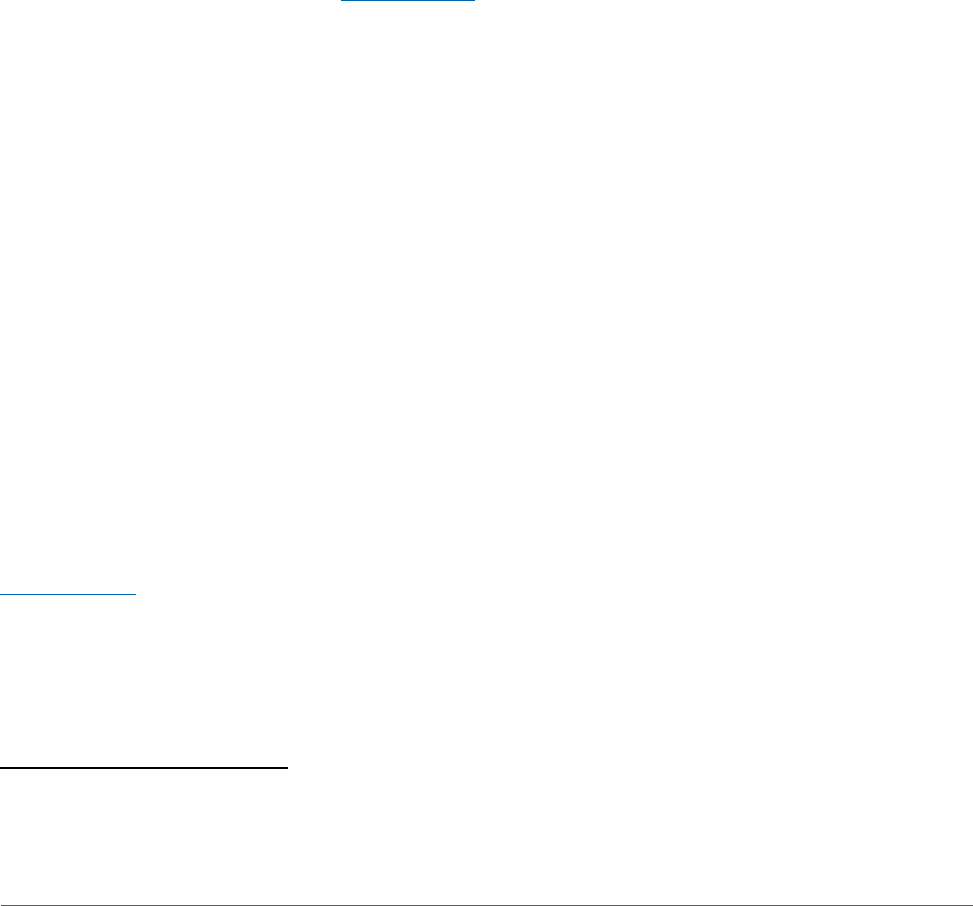
58
Revenue Guide for Washington Cities and Towns | AUGUST 2024
Retail Sales and Use Taxes
The State of Washington imposes a 6.5% sales tax on most retail sales within the state, and cities and towns (as
well as counties, transit districts, and public facilities districts) can impose local sales taxes on top of the state
rate. (For the purposes of this section, “sales tax” means a “sales and use tax” unless otherwise noted.)
Sales tax rates vary from city to city depending on exactly which taxes have been imposed – and at what rates
– by the city, county, and other taxing districts.
Most of a city’s sales tax revenue is generated from the “basic” (or “first half”) and “optional” (or “second half”)
sales taxes, which are unrestricted and may be used for any lawful governmental purpose. In addition, cities
and towns also have a number of other sales tax options available. However, these tax options are less flexible
and must be used for certain designated purposes.
Generally speaking, most sales taxes beyond the “first half” and “second half” require voter approval with a
simple majority approval. Most sales taxes may be imposed permanently with no maximum duration, but there
are some exceptions. The Department of Revenue collects and distributes these local sales taxes, retaining 1%
as an administrative fee in most cases (RCW 82.14.050).
32
Cities and towns were first granted the authority to impose a local sales and use tax in 1970, and at the time it
was considered the most significant change in taxing authority in Washington State. Sales taxes are classified
as excise taxes by the Washington State Supreme Court. Excise taxes are the broadest category of taxes and
include all taxes other than property tax, and the sales and use tax is the largest sector of excise tax.
For the majority of cities and towns in Washington, sales taxes represent the second-largest revenue source
in the general fund, preceded only by property taxes. However, there are a significant number of cities where
sales taxes represent the largest general fund revenue source. As retail shopping continues to evolve and shift
to an Internet-based market, some cities may see shifts in the amount of sales tax income and its importance
to the city budget.
In 2008 the State of Washington adopted a destination-based sales tax system known as the “streamlined
sales tax.” Under this agreement, the point of sale (the location where sales tax is calculated) is considered to
be the point of delivery (i.e. the destination). For example, if you buy oce furniture online that is shipped from
a warehouse in Auburn and have it delivered to Port Angeles, you will pay the local sales tax rate applicable for
the City of Port Angeles. But if you take possession of the merchandise at a retail business location in Auburn,
you will pay the local sales tax rate applicable in the City of Auburn.
However, there are certain exceptions, of which the most notable is that motor vehicle and boat sales are taxed
based on the location of the dealership/seller, regardless of whether delivery is made to another location. See
RCW 82.32.730(7).
Sales taxes can be especially advantageous for cities with significant shopping or commercial centers due to
the large sales volumes and significant tax revenues that can be generated. They can also be helpful for cities
with tourist attractions, since sales taxes can generate extra tax revenue from out-of-town visitors.
32 By statute, the DOR administrative fee is capped at a maximum rate of 2%. However, by contract DOR has established an
administrative fee of 1%.
Table of Contents

59
Revenue Guide for Washington Cities and Towns | AUGUST 2024
Sales taxes also have some drawbacks. In particular, sales tax revenues are particularly sensitive to economic
conditions, which means that if the economy slows down or a major retailer closes, city budgets may be hard
hit. In addition, Washington’s tax structure – and particularly its heavy reliance on sales taxes and lack of a
state income tax – has been criticized as one of the most regressive in the country, meaning the tax burden
(as a percent of income) falls hardest upon low-income households, who have to spend a large portion of their
income on retail goods and basic needs.
But regardless, under current state law sales taxes are one of the largest and most important revenue sources
available to cities and towns in Washington State.
WHAT ITEMS ARE TAXED?
Sales taxes apply to most retail sales of “tangible personal property” within Washington, as defined in RCW
82.04.050. In addition, beginning in 2018 the Marketplace Fairness Act requires all “remote sellers” without a
physical presence in the state (such as Internet or mail-order retailers) to either collect and remit sales taxes on
all purchases or to prominently post and track information on use taxes.
Services to individuals and businesses – things like haircuts, medical bills, consultant fees, etc. – are not
“personal property,” and most services are not subject to sales tax. However, some services are subject to
sales tax, as listed in RCW 82.04.050. For example, lodging and all other services provided by a hotel, motel,
etc. are subject to the retail sales tax, as are landscape maintenance and physical fitness activities. See the
DOR webpage Services Subject to Sales Tax.
Local governments must pay and collect sales tax on all taxable purchases, just like any business or consumer,
unless there is a specific exemption written into state law. See RCW 82.08.010(3), which defines “buyer,”
“purchaser,” and “consumer” to include local government entities, and WAC 458-20-189 which discusses sales
tax applicability to local governments and exemptions.
SALES TAX EXEMPTIONS
There are a large number of specific sales tax exemptions listed in chapter 82.08 RCW. These exemptions
change with some frequency as new exemptions are written and older ones expire or are repealed. Perhaps
the most visible exemptions for consumers are prescription drugs (RCW 82.08.0281) and groceries (RCW
82.08.0293), although alcohol, restaurant meals, and prepared foods sold in grocery stores are taxable.
Sales tax exemptions that may be of particular interest to cities include:
• Copies made in response to public records requests (RCW 82.08.02525);
• Sales from one political subdivision to another (or use of another jurisdiction’s personal property)
directly or indirectly due to annexations, mergers, incorporations, or contractual consolidations (see RCW
82.08.0278 and RCW 82.12.0274); and
• Labor and services on transportation projects (RCW 82.04.050(10) and WAC 458-20-171).
In addition, there is a qualifying sales tax exemption for residents of other states or Canadian provinces for
goods they purchase that are to be used out-of-state if those states or provinces either have no sales tax or if
the sales tax is less than 3% (RCW 82.08.0273). The most notable examples are Alaska, Montana, and Oregon
residents, who are eligible for this exemption because they do not have a state sales tax.
Table of Contents

60
Revenue Guide for Washington Cities and Towns | AUGUST 2024
However, this nonresident exemption was significantly changed eective July 1, 2019. All sales to out-of-state
customers must now be taxed at the time of purchase, and the customer must apply for a refund from the
state Department of Revenue at a later date. The refund only applies to the 6.5% state portion of the sales tax;
there is no refund provided for any local sales taxes the customer pays (which are described in more detail in
the rest of this chapter).
To claim the exemption, the nonresident buyer must keep records of all their taxable purchases in Washington
over the course of the calendar year. Once per year, the buyer may request a refund for sales taxes paid on
all purchases made in Washington during the previous calendar year. The request must include appropriate
documentation of all purchases along with proof of nonresidency.
The minimum refund that may be claimed is $25 – in other words, nonresidents must spend approximately
$385 or more in Washington, before tax, during a single calendar year to be eligible for this refund. (Since only
the 6.5% state portion of the sales tax is refunded, and 6.5% of $385 is just over $25.)
WHAT IS A USE TAX?
If purchases are made out-of-state by a Washington resident, business, or governmental entity for use in
Washington, and the sales tax paid is less than the rate being levied within their local jurisdiction, state law
requires that a “use tax” be calculated and paid to make up the dierence (see chapter 82.12 RCW and
WAC 458-20-178).
For example, if you buy oce furniture or equipment in Oregon (where there is no sales tax) and bring it back
to Washington, and the sales tax rate in your city is 8.2%, you owe a use tax of 8.2% on the purchase price.
Likewise, if you buy similar furniture or equipment in Idaho, where the sales tax rate is 6%, and your local sales
tax rate is 8.2%, you owe a 2.2% use tax.
Practically speaking, few individual consumers pay a use tax, unless the purchase is a car or truck where the
use tax must be paid before the vehicle can be licensed. Otherwise, use taxes paid by individuals depend on
voluntary compliance and remote sellers’ compliance with the Marketplace Fairness Act (see below).
However, Washington businesses typically do pay use taxes on out-of-state purchases because they are
subject to regular auditing by the Department of Revenue (DOR). Similarly, cities should be aware that DOR
audits local governments on a regular basis to ensure compliance with state tax filing requirements. Failure to
pay the appropriate use tax can result in fines and interest due.
Prior to 2018, “remote sellers” without a physical presence in Washington State and those “marketplace
facilitators” who facilitated the sale of products provided by remote sellers were not required to charge any
sales tax for Internet or mail-order sales, although some opted to do so voluntarily. In situations where neither
the remote sellers nor the facilitators charged sales tax, use tax was due but seldom collected.
Beginning in January 2018, the Marketplace Fairness Act in Washington State required almost all remote
sellers to either collect sales taxes on purchases delivered to Washington, or to inform consumers that use
taxes were due and to provide annual reports on this activity to both the consumer and the state Department
of Revenue (DOR). Most remote sellers opted to collect and remit sales taxes directly to DOR, rather than
track and report use taxes.
Table of Contents

61
Revenue Guide for Washington Cities and Towns | AUGUST 2024
The collection of sales and use tax from remote sellers and marketplace facilitators was reinforced with the
2018 U.S. Supreme Court decision in South Dakota v. Wayfair, Inc., No. 17-494, wherein the Court determined
that state and local governments could require remote and Internet sellers to collect sales taxes. As a result
of this decision, DOR released notice that remote sellers and marketplace facilitators with $100,000 or more
of gross retail sales or 200 or more retail transactions during a calendar year are required to collect and remit
sales tax on all taxable sales and no longer have the option to report use taxes.
The Marketplace Fairness Act, coupled with the Wayfair decision, has resulted in a significant increase in
sales tax revenues and should eliminate the vast majority of use tax noncompliance issues for Internet and
catalog orders.
Table of Contents
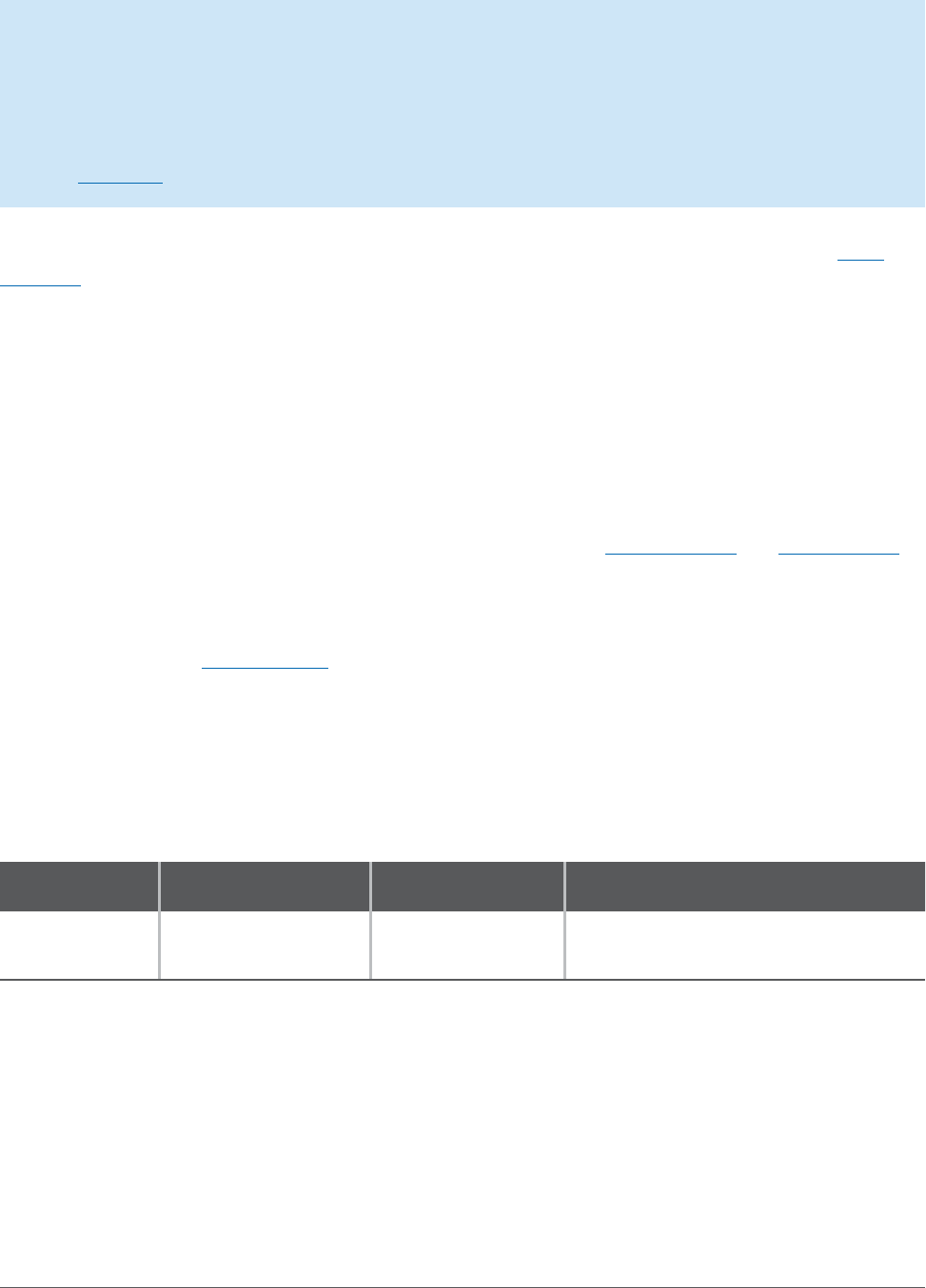
62
Revenue Guide for Washington Cities and Towns | AUGUST 2024
“BASIC” SALES TAX/FIRST HALFCENT
Quick Summary
• Sales tax of 0.5% – revenues are unrestricted and may be used for any lawful governmental purpose.
• Currently imposed by all counties.
• Revenue shared with county.
RCW: 82.14.030(1)
Any city or town may impose a non-voted sales and use tax at the rate of 0.5% on any taxable event (RCW
82.14.030(1)). The Department of Revenue calls this tax the “basic” or “regular” 0.5% in its reports, but it is
also commonly referred to as the “first half-cent” or “first half” to dierentiate it from the “second half-cent”
described on the next page.
Counties have the same authority, and every city, town, and county in Washington has imposed the first half-
cent. However, the combined city/county rate may not exceed 0.5 percent, so cities and counties must share
the revenues as described below.
Use of Revenues
The revenues are unrestricted and may be used for any lawful governmental purpose. Cities and towns may
enter into interlocal agreements to share a portion of this revenue under RCW 39.34.250 and RCW 82.14.412.
Revenue Sharing with Counties
When both the city and county are levying the first half, the county must credit back the full amount of the city’s
first half sales tax under RCW 82.14.040(1) so that the combined rate does not exceed 0.5%. However, 15% of
the first half-cent collected within the city must then be distributed to the county. In eect, this drops the city’s
first half-cent authority to 0.425% (85% of 0.5%), with the remaining 0.075% (15% of 0.5%) going to the county.
See the table below. In addition, the Department of Revenue retains 1% as an administrative fee.
Revenue-sharing for “first half” sales taxes
If city imposes and county imposes City taxpayers pay City’s eective sales tax rate is
.% .% .%
.%
(% of .%)
Table of Contents

63
Revenue Guide for Washington Cities and Towns | AUGUST 2024
“OPTIONAL” SALES TAX/SECOND HALFCENT
Quick Summary
• Sales tax up to 0.5% – revenues are unrestricted and may be used for any lawful governmental purpose.
• Currently imposed at the maximum rate by all cities and towns.
• Revenue shared with county.
RCW: 82.14.030(2)
Any city or town may impose an additional non-voted sales tax in increments of 0.1% up to 0.5% (RCW
82.14.030(2)). DOR refers to this as the “optional” sales tax – often referred to as the “second half-cent” or
“second half.”
Counties have the same authority to adopt this optional second half sales tax, and every city, town, and county
in Washington has imposed the second half-cent. However, the combined city/county rate may not exceed 0.5
percent, so cities and counties must share the revenues as described below.
As of 2022, every city or town has imposed the full 0.5% second half-cent except for Asotin and Clarkston
(which have both imposed 0.3%), while every county has imposed the full 0.5% second half-cent except for
Asotin County (which imposes 0.3%).
Implementation requires a majority vote of the legislative body and does not require voter approval. However,
changes to the tax rate are subject to possible referendum even if your city has not otherwise adopted powers
of initiative and referendum (RCW 82.14.036).
Use of Revenues
The revenues are unrestricted and may be used for any lawful governmental purpose. Cities and towns may
enter into interlocal agreements to share a portion of this revenue under RCW 39.34.250 and RCW 82.14.412.
Revenue Sharing With Counties
The revenue-sharing provision is similar to the first half/basic 0.5% sales tax. When the county imposes the
second half at a rate equal to the city – which all counties have – the county must credit back the full amount
of the city’s second half sales tax under RCW 82.14.040(2). The city will then receive 85% of its second half
revenues, with the remaining 15% distributed to the county.
All cities, towns, and counties have imposed the full 0.5% second half, so each city’s rate eectively drops to
0.425% (85% of 0.5%), with the remaining 0.075% (15% of 0.5%) going to the county.
33
See the table on the next page. In addition, the Department of Revenue retains 1% as an administrative fee.
33 Also see AGO 2006 No. 18 for a comprehensive explanation of how the county and city rates interrelate under dierent
scenarios.
Table of Contents
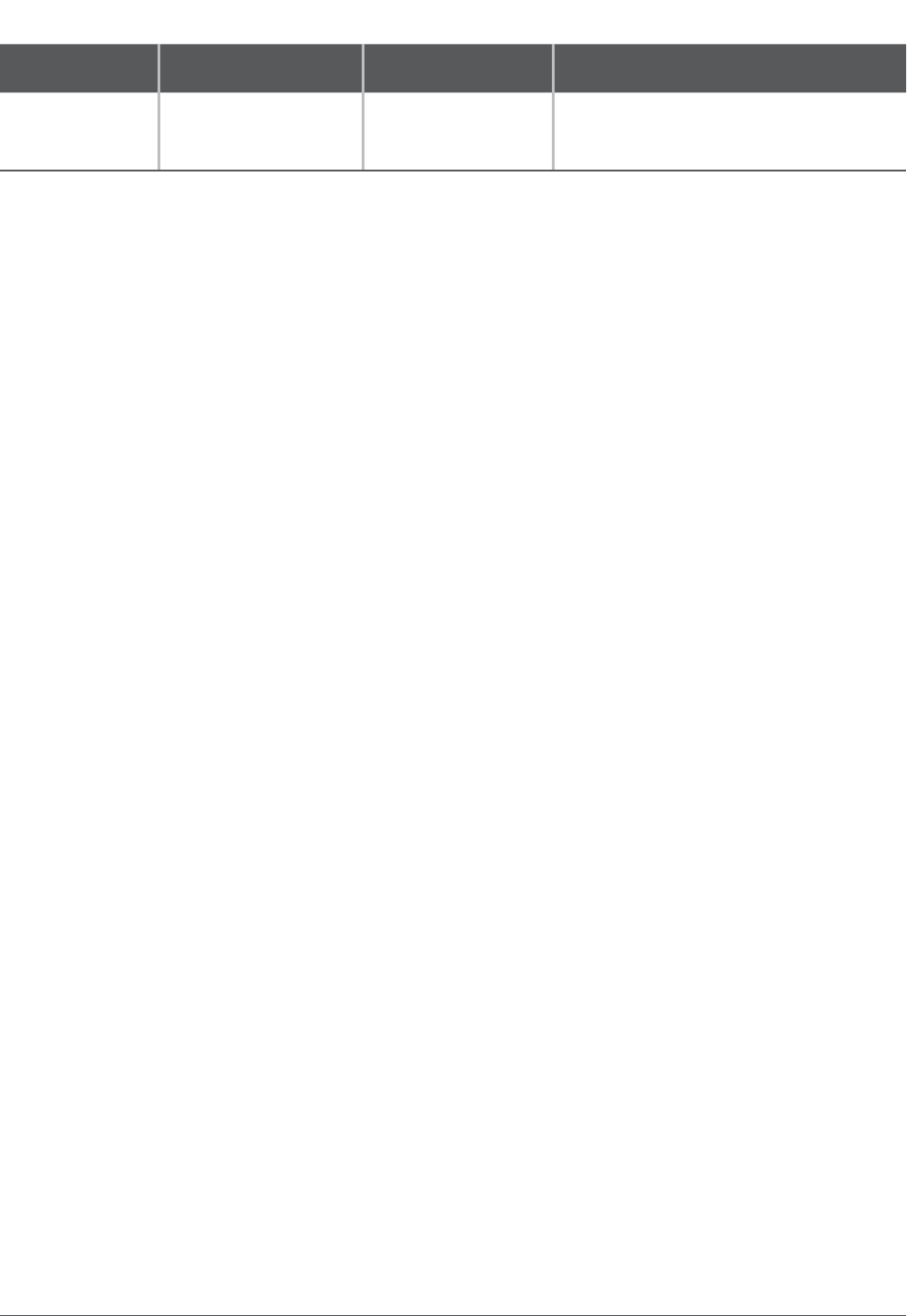
64
Revenue Guide for Washington Cities and Towns | AUGUST 2024
Revenue-sharing for “second half” sales taxes
If city imposes and county imposes City taxpayers pay City’s eective sales tax rate is
.% .% .%
.%
(% of .%)
Table of Contents

65
Revenue Guide for Washington Cities and Towns | AUGUST 2024
AFFORDABLE HOUSING SALES TAX CREDIT HB 1406
Quick Summary
• Credit against 6.5% state sales tax. Credit is either 0.0073% or 0.0146% depending on whether city
had a “qualifying local tax” in place by July 28, 2020.
• Had to be adopted no later than July 27, 2020; expires after 20 years.
• Revenues are restricted and must be used for aordable and supportive housing, including rental
assistance. Cities and counties may pool resources.
RCW: 82.14.540
Eective 2019, SHB 1406 established a new aordable housing sales tax credit available to all cities, towns,
and counties that that chose to participate and adopted an ordinance no later than July 27, 2020. This is a
credit against the 6.5% state sales tax rate, so it does not increase the tax rate for consumers but instead shares
a portion of the state sales tax with cities, towns and counties. This sales tax distribution will expire 20 years
after the jurisdiction first imposed the tax (in either 2039 or 2040).
Participating jurisdictions must submit a report to the state Department of Commerce each year on the
collection and use of the revenues by October 1, as prescribed in detail by WAC 365-240-030.
Tax Rate
For participating cities that had a “qualifying local tax” in place by July 27, 2020: the tax rate is 0.0146%
of taxable retail sales. A “qualifying local tax” (QLT) is a local property or sales tax that the city has imposed
prior to July 27, 2020, with the revenues dedicated solely to aordable housing or related uses. The four QLT
options are:
• An aordable housing levy (see Aordable Housing Levy);
• A housing & related services sales tax (see Housing & Related Services Sales Tax);
• A levy lid lift (see Levy Lid Lifts) that is restricted solely to aordable housing; or
• A mental health and chemical dependency sales tax (see Mental Health & Chemical Dependency Sales
Tax ), which only applies to Tacoma.
For participating cities that do not have a qualifying local tax: the tax rate is 0.0073% of taxable retail sales
within their jurisdiction, but only if your county also elected to participate. If your county does not participate,
the city will receive the full 0.0146% through July 27, 2020, but after that the city will not receive any further
sales tax credit revenues. According to AWC, this was due to a drafting error in the legislation; a bill to fix the
drafting error and extend the deadline to adopt a qualifying local tax passed the legislature during the 2020
session but was vetoed by the governor due to the unexpected fiscal impacts of the coronavirus pandemic on
the state budget.
For participating counties: the tax rate is 0.0146% of taxable retail sales within the unincorporated areas.
(Counties do not need a qualifying local tax to receive the maximum distribution.) Within the incorporated areas,
participating counties receive 0.0146% minus the city’s tax rate. For instance, if a city has a QLT and receives the
full 0.0146%, the county will not receive any revenues from that city’s taxable sales. If a city does not have a QLT,
Table of Contents

66
Revenue Guide for Washington Cities and Towns | AUGUST 2024
the participating city will receive the 0.0073% “half share” and the county will also receive a 0.0073% half share
within that city.
Maximum Distribution Cap
The legislation sets a cap on the maximum revenues any jurisdiction may receive per state fiscal year (July 1 to
June 30). The cap is either 0.0073% or 0.0146% of the taxable retail sales within the jurisdiction during the 2019
state fiscal year (July 1, 2018 – June 30, 2019) depending upon whether the city has a qualifying local tax or not.
If the county adopts the imposing legislation prior to the city(s) within its boundaries, the county’s maximum
revenue cap will be calculated based on the total countywide taxable retail sales in FY 2019, including both
the unincorporated and incorporated areas of the county. However, if any city adopts their enabling ordinance
before the county, that city’s taxable retail sales will be subtracted from the county’s taxable retail sales,
resulting in the county’s annual maximum distribution cap being reduced for the entire 20-year state tax
sharing period.
Just like state shared revenues, distributions begin in the month of July each year, and if any jurisdiction
reaches the maximum cap before the end of the fiscal year (the following June 30), the state will cease
distributions to that jurisdiction until the beginning of next state fiscal year.
Use of Revenues
The funds may only be used for:
• Acquiring, rehabilitating, or constructing aordable housing, which may include new units within an existing
structure or facilities providing supportive housing services under RCW 71.24.385;
• Operations and maintenance costs of new units of aordable or supportive housing;
• Rental assistance to tenants; and
• Administrative costs, not to exceed 10% of the annual tax distribution.
The housing and services may only be provided to people at or below 60% of the jurisdiction’s median income,
or up to 80% of the median income if the housing is intended for owner occupancy.
Participating cities and counties may finance loans or grants to nonprofit organization or public housing
authorities to carry out the purposes of the bill and may pledge the tax proceeds for repayment of bonds in
accordance with debt limitations imposed by the state constitution or statute.
Any participating city or county may enter into an interlocal agreement with other cities, counties, and/or housing
authorities to pool and allocate the tax revenues received under SHB 1406 to fulfill the intent of the legislation.
Table of Contents

67
Revenue Guide for Washington Cities and Towns | AUGUST 2024
ANNEXATION SERVICES SALES TAX
Quick Summary
• Credit against state sales tax; temporarily reinstated and expanded in 2023 but may not begin to be
imposed after July 1, 2028.
• Maximum credit is 0.1 - 0.2% and may not exceed 10 years.
• Revenues must be used for providing municipal services to the annexed area.
RCW: 82.14.415
Any city that annexes an area may impose an “annexation services tax” (RCW 82.14.415) under the following situations:
• The annexation was consistent with its comprehensive plan required by the Growth Management Act
(chapter 36.70A RCW),
• City council determined by resolution or ordinance that the projected cost of providing municipal services
to the annexed area exceeded the projected general revenue that the city would otherwise receive from
the area on an annual basis, and
• The city has entered into an interlocal agreement with the county regarding the proposed annexation area.
The annexation services tax is a credit against the 6.5% state sales tax rate, which means the total sales tax rate
within the annexed area will not change. The maximum sales tax credit is 0.1% for eligible annexed areas with
a population of greater than 2,000 and less than 10,000 and 0.2% for eligible annexed areas with a population
greater than 10,000
The tax must be imposed at the beginning of the next state fiscal year (July 1) following the eective date of the
annexation and may be imposed for a maximum of 10 state fiscal years.
However, the total tax revenues received may not exceed the “threshold amount” – the dierence between
the projected cost of providing services to the area and the projected general revenues generated in the area.
If the tax revenues exceed the threshold amount in any year, the city must notify the Department of Revenue
(DOR) and DOR will suspend the tax distribution for the remainder of the state fiscal year.
No later than March 1 each year, the city must provide DOR with a certification of the city’s true and actual costs
of providing municipal services to the annexed area, projections for the next state fiscal year, and notice of any
applicable rate changes.
!
2023 legislation (SB 1425) temporarily reinstated and expanded the annexation services sales
tax credit. The tax under this legislation can only begin to be imposed between July 1, 2023 and
July 1, 2028.
Use of Revenue
All revenues must be used solely to provide, maintain, and operate municipal services for the annexed area.
Table of Contents

68
Revenue Guide for Washington Cities and Towns | AUGUST 2024
CRIMINAL JUSTICE SALES TAX
Quick Summary
• Sales tax of 0.1% – revenues are restricted and must be used for criminal justice.
• May only be imposed by county, but revenue shared with cities.
• Does not require voter approval.
RCW: 82.14.340
Any county may impose a non-voted 0.1% sales tax for criminal justice purposes (RCW 82.14.340), and most
counties currently do so. This sales tax may only be imposed by the county, but the county must share its
revenues with all cities and towns in the county.
The sales tax is subject to possible referendum under RCW 82.14.340 and RCW 82.14.036, regardless of
whether or not the county otherwise has powers of initiative and referendum.
Use of Revenues
The statute defines “criminal justice purposes” as:
[A]ctivities that substantially assist the criminal justice system, which may include circumstances where
ancillary benefit to the civil justice system occurs, and which includes domestic violence services such as
those provided by domestic violence programs, community advocates, and legal advocates, as defined in
RCW70.123.020.
Revenue Sharing
10% of the revenues are distributed to the county, while the remaining 90% is split between the county and its
cities on a per capita (population) basis. The county’s per capita share is based on unincorporated population.
See the example on the next page. In addition, the Department of Revenue retains 1% as an administrative fee.
Table of Contents
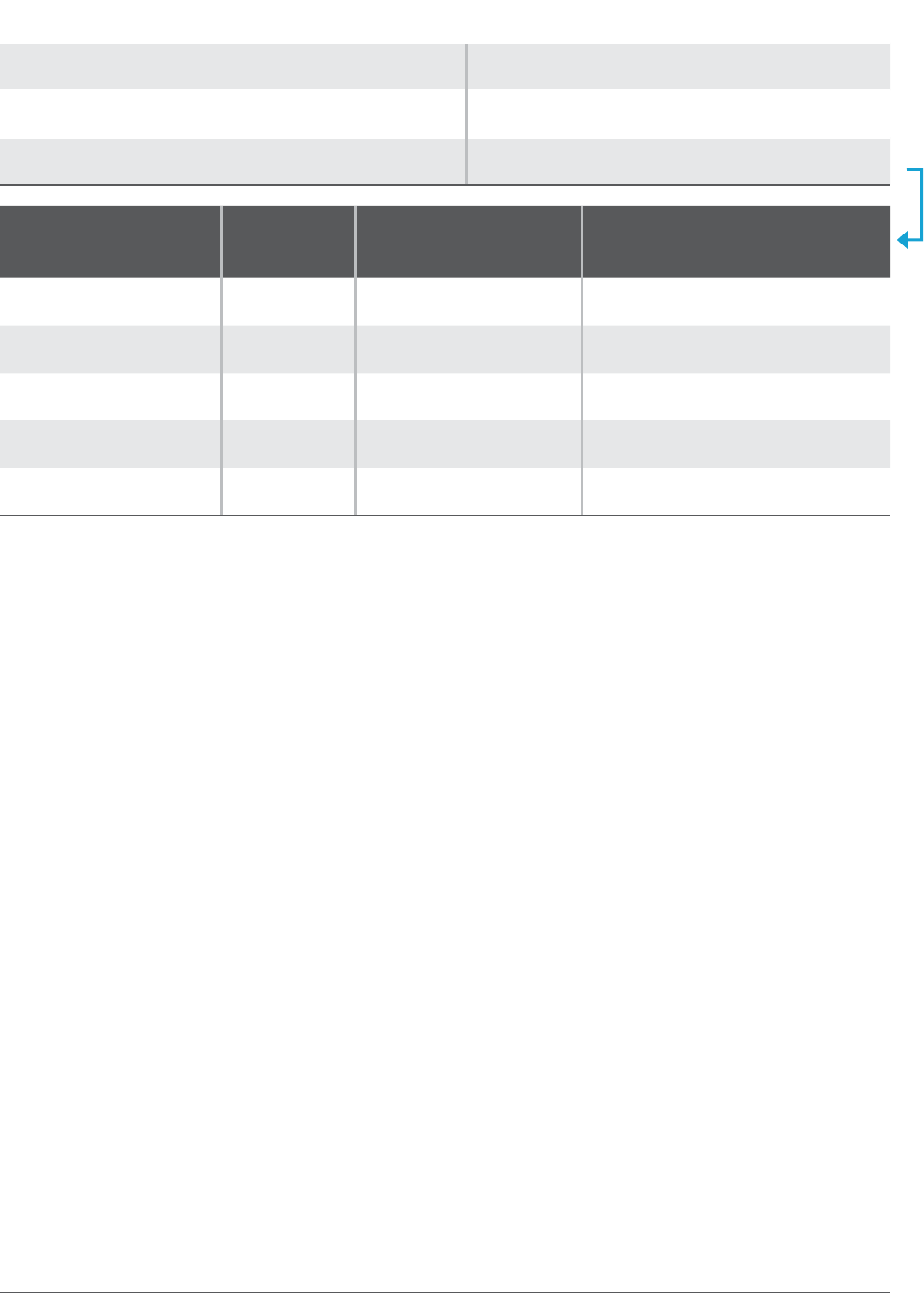
69
Revenue Guide for Washington Cities and Towns | AUGUST 2024
Example of Revenue-Sharing for County Criminal Justice Sales Tax
Total sales tax revenues $,,
County receives 10% $,
Remainder for distribution $,
Jurisdiction Population Percent of Countywide
Population
Remaining Revenues Distributed
(% population x $900,000)
City A , % $,
City B , % $,
City C , % $,
Unincorporated county , % $,
TOTAL , % $,
Table of Contents
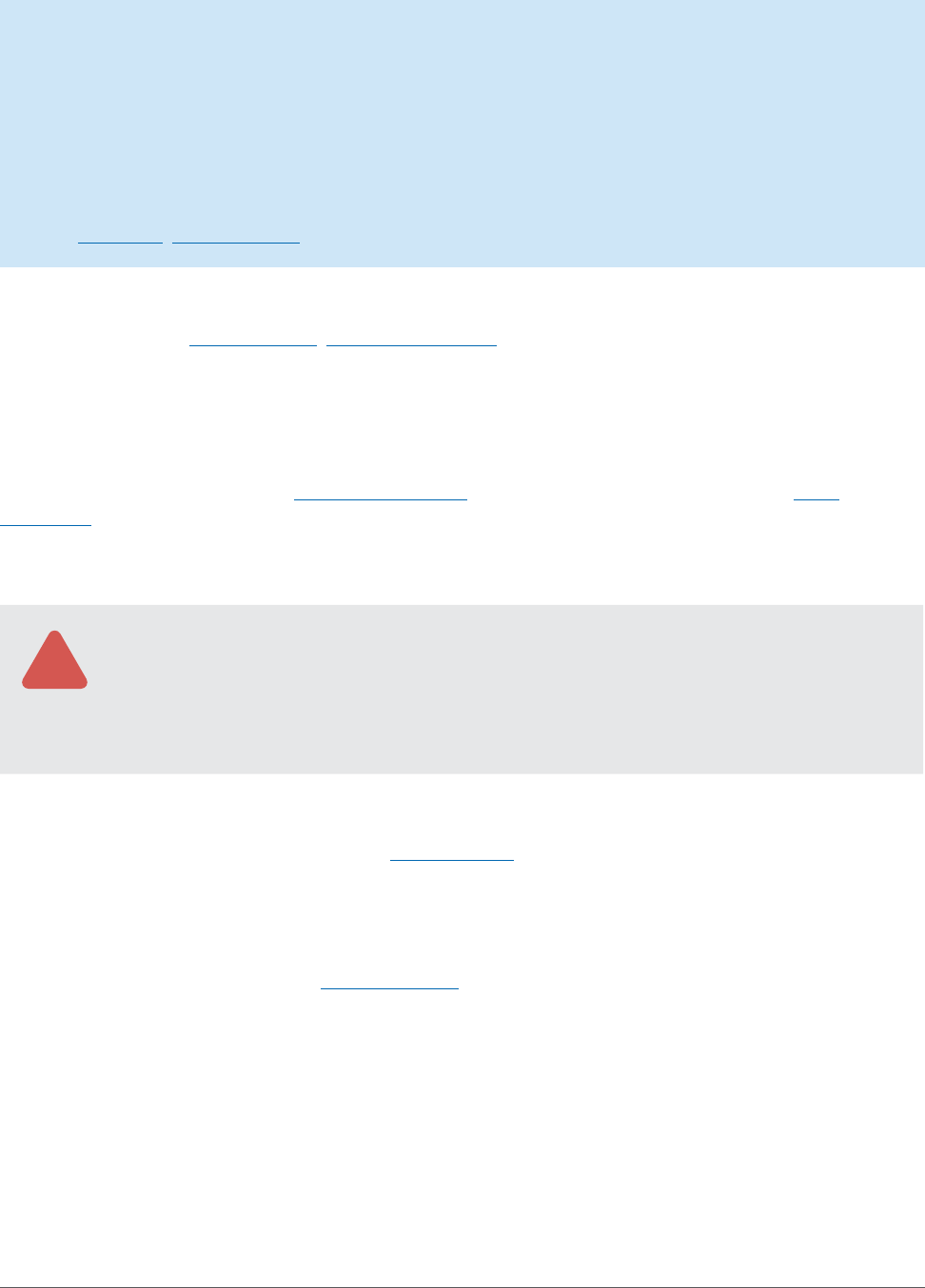
70
Revenue Guide for Washington Cities and Towns | AUGUST 2024
CULTURAL ACCESS PROGRAM CAP SALES TAX
Quick Summary
• Sales tax up to 0.1% – revenues are restricted and must be used to benefit or expand access to
nonprofit cultural organizations.
• Maximum duration of 7 years; may be renewed for additional 7-year periods.
• May be imposed by any city or town.
• May be approved by voters or legislative body.
RCW: 82.14.525; chapter 36.160
Any city or town may impose a sales tax up to 0.1% for up to seven years to benefit or expand access to nonprofit
cultural organizations (RCW 82.14.525; chapter 36.160 RCW). This sales tax originally required voter approval,
but eective July 23, 2023 it may (optionally) be imposed by the legislative body without voter approval.
Counties also have similar authority, but a county and a city within that county may not impose this sales tax at
the same time.
While most of the provisions within chapter 36.160 RCW refer specifically to counties, not cities, RCW
36.160.030 states that if a city creates a cultural access program, “all references in this chapter to a county
must include a city that has exercised its authority under this subsection, unless the context clearly requires
otherwise.” changes.
!
Between July 23, 2023 and December 31, 2024, cities and towns are temporarily prohibited
from imposing a CAP sales tax. During that timeframe, only counties may impose this sales tax.
After December 31, 2024, cities and towns may impose a CAP sales tax, but only if the county
has not done so first. This legislation does not apply to any CAP sales taxes adopted before
July 23, 2023.
Use of Revenues
The revenues must be used in accordance with RCW 36.160.110, which is very detailed. The funds may be used
for a number of purposes related to cultural access programs, including start-up funding, administrative and
program costs, capital expenditures or acquisitions, technology, and public school programs to increase
cultural program access for students who live in the city.
A “cultural organization,” as defined in RCW 36.160.020, must be a 501(c)(3) nonprofit corporation with its
principal location(s) in Washington State and conducting a majority of its activities within the state. The primary
purpose of the organization must be the advancement and preservation of science or technology, the visual or
performing arts, zoology (national accreditation required), botany, anthropology, heritage, or natural history.
State-related cultural organizations are eligible, but the funding may not be used for local or state government
agencies, radio/TV broadcasters, cable communications systems, internet-based communications services,
newspapers, magazines, or fundraising organizations that redistribute money to multiple cultural organizations.
Table of Contents

71
Revenue Guide for Washington Cities and Towns | AUGUST 2024
Ballot Measure Requirements
If a city or town chooses to seek voter approval, the sales tax must be approved by a simple majority of voters
and may be submitted at any special, primary,
34
or general election. It may be re-imposed for one or more
additional 7-year periods. According to MRSC’s Local Ballot Measure Database as of 2022, Olympia and
Tacoma are the only cities to attempt a voted CAP sales tax, and both ballot measures passed. King County
also attempted a countywide sales tax, which narrowly failed.
Revenue Sharing
There are no revenue-sharing provisions. The city retains 100% of the revenue, and unlike most local sales
taxes that have a 1% administrative fee withheld by the Department of Revenue, this sales tax must be collected
and distributed to the city or town at no cost.
Property Tax Alternative
As an alternative, any city or town may also levy a property tax under RCW 84.52.821 for cultural access
programs (see Cultural Access Program (CAP) Levy). From a revenue standpoint, the property tax and sales
tax options are roughly equivalent: the amount of revenue generated by the property tax may not exceed 0.1%
of the retail sales in the city for the most recent calendar year and both are capped at seven-year increments.
However, the property tax option requires voter approval, while voter approval is optional for the sales tax. In
addition, the property tax levy could potentially be reduced or eliminated through prorationing if the $5.90 or
$10 property tax caps are exceeded.
The sales tax and property tax options are mutually exclusive. If a city imposes the sales tax option it may not
impose the property tax option for as long as the sales tax is in eect, and vice versa (RCW 36.160.080).
34 RCW 82.14.525 states that the tax must be submitted at “a special or general election,” which at first glance might seem
to rule out the August primary election. However, RCW 29A.04.321(2), which establishes the election schedule for local
governments, authorizes the county to call up to four “special elections” each year, including the primary election. So for these
purposes, “special election” includes the primary election.
Table of Contents

72
Revenue Guide for Washington Cities and Towns | AUGUST 2024
HOUSING & RELATED SERVICES SALES TAX
Quick Summary
• Sales tax up to 0.1% – revenues are restricted and must be used for aordable housing, behavioral
health, and related services.
• May be imposed by any city or town as long as county has not imposed it first.
• May be approved by voters or legislative body.
RCW: 82.14.530
Any city or town may levy a sales tax up to 0.1% for aordable housing and related services (RCW
82.14.530), as long as the county has not done so first. This option may be approved by voters or by the
legislative body with a simple majority vote.
Use of Revenues
At least 60% of the revenue must be used for constructing or acquiring aordable housing, constructing or
acquiring behavioral health-related facilities, acquiring land for those purposes, or funding the operation and
maintenance costs of new aordable housing units and facilities within which housing-related programs are
provided. The aordable housing and facilities may only be provided to people within specified population
groups whose income is 60% or less of the county median income. For specific eligibility language, see RCW
82.14.530(2)(b).
The remaining funds must be used for the operation, delivery, or evaluation of behavioral health treatment
programs and services or housing-related services. No more than 10% of the revenue may be used to supplant
existing local funds.
Ballot Measure Requirements
If a city chooses to (optionally) submit this sales tax to voters, the ballot measure must be approved by a simple
majority of voters and may be submitted at any special, primary,
35
or general election. According to MRSC’s
Local Ballot Measure Database, voters have approved this sales tax in four cities as of August 2024 (Anacortes,
Ellensburg, Olympia, and Port Angeles). A fifth measure in Stevenson was narrowly rejected by voters. At least
16 other cities have enacted this tax councilmanically.
Revenue Sharing
The city retains 100% of the revenue, minus a 1% administrative fee for the Department of Revenue. If King
County imposes this tax it is required to spend a certain percentage of the revenues within the boundaries of
cities over 60,000 population.
35 RCW 82.14.530 states that the tax must be submitted at “a special or general election,” which at first glance might seem
to rule out the August primary election. However, RCW 29A.04.321(2), which establishes the election schedule for local
governments, authorizes the county to call up to four “special elections” each year, including the primary election. So for
these purposes, “special election” includes the primary election.
Table of Contents

73
Revenue Guide for Washington Cities and Towns | AUGUST 2024
MENTAL HEALTH & CHEMICAL DEPENDENCY SALES TAX
Quick Summary
• Sales tax of 0.1% – revenues are restricted to and must be used for mental health and drug
treatment purposes.
• Primarily a county revenue source; also adopted by Tacoma but may no longer be adopted by any
other cities.
RCW: 82.14.460
Mental health and chemical dependency sales taxes (RCW 82.14.460) are almost entirely imposed by and
distributed to counties. The statute also authorizes any city with a population over 30,000, located within a
county with a population over 800,000 (King, Pierce, and Snohomish counties), to impose a sales tax up to
0.1% for mental health and drug treatment purposes if the county has not already done so. However, all three
of those counties have now imposed a county-level mental health sales tax. Only one city (Tacoma) previously
imposed this sales tax, and no other cities are eligible anymore.
Some jurisdictions may refer to this sales tax with other names, such as the “mental illness and drug
dependency” (MIDD) sales tax or the “treatment sales tax.” This sales tax is imposed by the city council and
does not require voter approval.
Use of Revenues
The revenues must be used for expenses related to the operation or delivery of chemical dependency or
mental health treatment programs and services as defined in statute, including but not limited to therapeutic
court programs, treatment services, case management, transportation, and housing that are components of a
treatment program or service. Revenues may also be used for modifications to existing facilities.
Revenue Sharing
There are no revenue-sharing provisions. The city retains 100% of the revenues, minus a 1% administrative fee
for the Department of Revenue.
Table of Contents

74
Revenue Guide for Washington Cities and Towns | AUGUST 2024
PUBLIC SAFETY SALES TAX
Quick Summary
• Sales tax up to 0.1% – revenues are partially restricted; 1/3 must be used for criminal justice and/or
fire protection.
• May be imposed by any city or town, but only if county has not previously imposed a 0.3% public
safety sales tax.
• Revenue shared with county.
• Motor vehicle sales and first 36 months of motor vehicle leases are exempt.
• Requires voter approval.
RCW: 82.14.450
Any city or town may impose a sales tax of up to 0.1% for public safety with voter approval (RCW 82.14.450).
Motor vehicle sales and the first 36 months of motor vehicle leases are exempt. For instance, if the local sales
tax rate is 8.7%, including a 0.1% public safety sales tax, the sales tax rate for motor vehicle sales and leases
would be 8.6%.
Counties may also impose a public safety sales tax under the same statute, with a higher maximum rate of
0.3 percent. However, the combined city/county rate may not exceed 0.3 percent. For instance, if the county
imposes a rate of 0.2% and the city imposes a rate of 0.1%, the total combined rate will be 0.3%. However, if
the city imposed a 0.1% sales tax first and then the county imposes a 0.3% sales tax at a later date, the county
must credit the 0.1% back to the city (eectively lowering the county’s rate to 0.2% within the city) so it does not
exceed the combined 0.3% rate. If the county already levies the full 0.3%, no city within the county may impose
a new public safety sales tax because doing so would exceed the maximum 0.3% rate.
Use of Revenues
At least one-third of the revenue must be used solely for criminal justice purposes (as defined in RCW
82.14.340), fire protection purposes, or both. The statute does not provide a specific definition of “fire
protection purposes,” but it defines “criminal justice purposes” as:
[A]ctivities that substantially assist the criminal justice system, which may include circumstances where
ancillary benefit to the civil justice system occurs, and which includes domestic violence services such as
those provided by domestic violence programs, community advocates, and legal advocates, as defined in
RCW 70.123.020
The remaining two-thirds are unrestricted and may be used for any lawful governmental purpose, but must be
spent in accordance with the purpose(s) specified in the ballot measure.
Ballot Measure Requirements
The sales tax may only be submitted at a primary or general election; it may not appear in any February or April
special election. The ballot measure must clearly state the purposes for which the tax is to be used and must
be approved by a simple majority of the voters. According to MRSC’s Local Ballot Measure Database, voters
have approved the majority of these measures.
Table of Contents
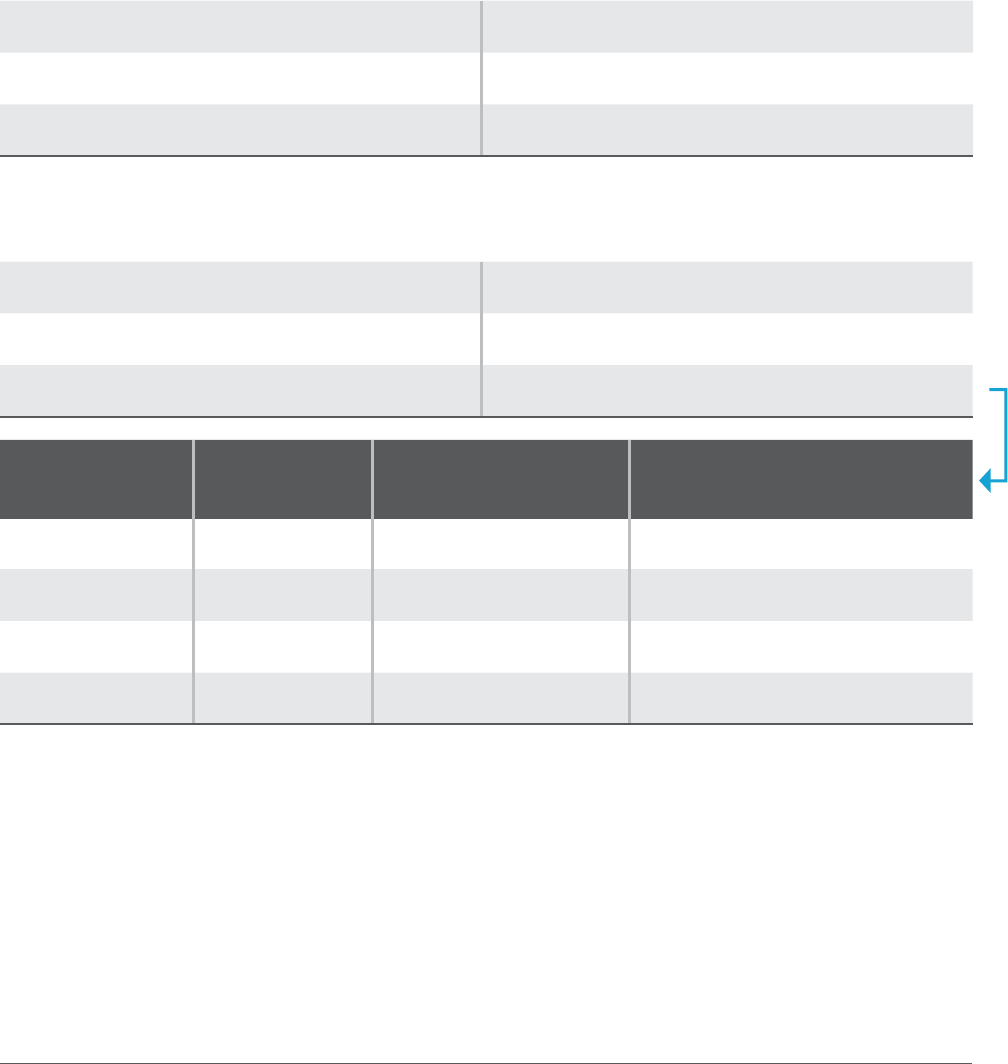
75
Revenue Guide for Washington Cities and Towns | AUGUST 2024
Revenue Sharing
The revenues must be shared between the city and the county, but the exact formula depends on which
jurisdiction (city, county, or both) placed the issue on the ballot. The county retains 60% of any countywide
public safety sales tax revenues, while the remaining 40% is distributed to the cities within the county on a per
capita (population) basis. If a city imposes a public safety sales tax, the city retains 85% of the revenues and
must share 15% of the revenue with the county.
In addition, the Department of Revenue retains 1% as an administrative fee. Below you will find examples of a
few dierent scenarios to help demonstrate the revenue-sharing provisions.
Example #1. City imposes public safety sales tax. City receives 85% of the revenue, with the remaining 15%
distributed to the county.
Total CITY sales tax revenues $,
City receives % $,
County receives % $,
Example #2. County imposes public safety sales tax. County receives 60% of the revenue, with the remaining
40% distributed on a per capita basis to the cities within the county.
Total COUNTYWIDE sales tax revenues $,,
County receives 60% $,
Remainder for distribution $,
Jurisdiction Population Percent of Incorporated
Population
Remaining Revenues Distributed
(% population x $400,000)
City A , % $,
City B , % $,
City C , % $,
TOTAL , % $,
Example #3. Both city and county have imposed a public safety sales tax. The same principles apply as
above. The city keeps 85% of the city sales tax revenue, shares 15% with the county, and also receives a
proportional share of the county’s sales tax revenue based on population size. This example reflects a city
imposing a 0.1% sales tax first and then the county imposing the maximum 0.3% sales tax later. The county
must credit 0.1% back to the city so that the maximum rate is no greater than 0.3% within the city.
Table of Contents
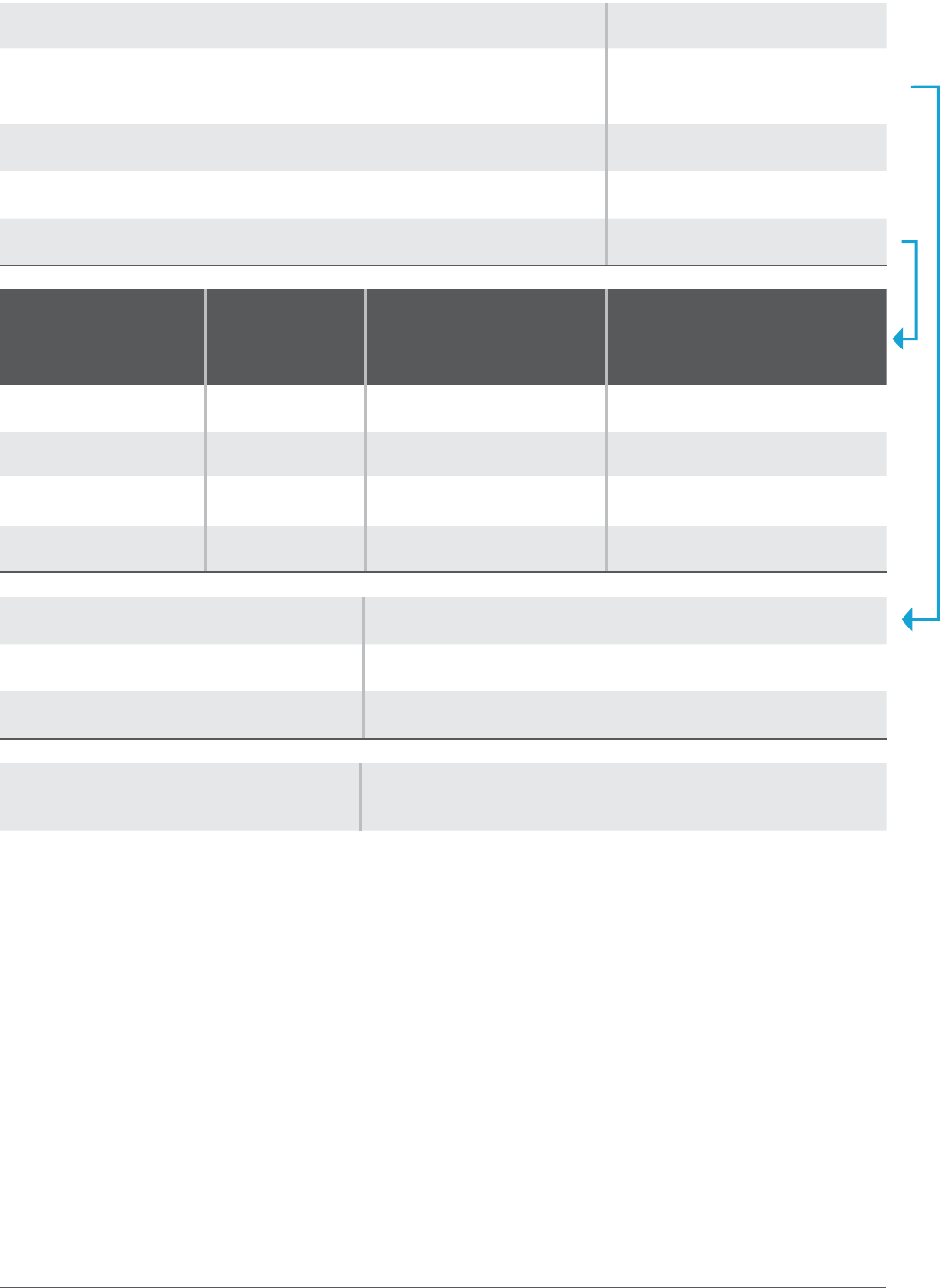
76
Revenue Guide for Washington Cities and Towns | AUGUST 2024
Total COUNTYWIDE sales tax revenues at .% $,,
Total “CITY A” sales tax revenues at 0.1%
Imposed prior to county sales tax; county must credit back to City A
$,
Revised COUNTYWIDE sales tax revenues $,
County receives % $,
Remaining COUNTYWIDE revenues for distributio $,
Jurisdiction Population Percent of Incorporated
Population
Remaining COUNTYWIDE
Revenues Distributed
(% population x $360,000)
City A , % $,
City B , % $,
City C , % $,
TOTAL , % $,
Total “CITY A” sales tax revenues $,
City A receives 85% $,
County receives 15% $,
“CITY A” GRAND TOTAL
City A receives $175,000 ($85,000 from city sales tax and
$90,000 from county sales tax)
Table of Contents

77
Revenue Guide for Washington Cities and Towns | AUGUST 2024
TRANSIT SALES TAX
Quick Summary
• Sales taxes up to 0.9% for transit and 1.0% for high-capacity transit – revenues are restricted and
must be used for transit.
• Requires voter approval.
RCW: 82.14.045
A city or town may levy a sales tax between 0.1 and 0.9% (in increments of 0.1%) for public transportation
purposes (RCW 82.14.045). The measure requires voter approval.
Few cities provide transit service directly, so more commonly this sales tax authority is used by public
transportation benefit areas (PTBAs) or other transit providers. A city may not impose this sales tax if it is
located within a PTBA, county transportation authority, or metropolitan municipal corporation (King County
Metro) that already imposes a sales tax under this statute.
As of 2022, MRSC’s Tax and Population Data shows that the only cities to impose this sales tax are Everett,
Selah, Union Gap, and Yakima.
Use of Revenues
The revenues must be used for the sole purpose of providing funds for the operation, maintenance, or capital
needs of public transportation systems or public transportation limited to persons with special needs under
RCW 36.57.130 and RCW 36.57A.180.
Ballot Measure Requirements
The sales tax must be approved by a simple majority of voters. The statute does not specifically address when
the sales tax may be presented to voters, which leads us to conclude that the ballot measure can be submitted
at any special, primary, or general election. According to MRSC’s Local Ballot Measure Database, no cities or
towns have submitted transit sales tax measures to voters in recent years.
Revenue Sharing
There are no revenue-sharing provisions. The city retains 100% of the revenues, minus a 1% administrative fee
for the Department of Revenue.
High-Capacity Transit Sales Tax
Cities that provide transit service may also impose an additional sales tax up to 1.0% with voter approval for
the purpose of providing high-capacity transit service operating principally on exclusive rights-of-way (RCW
81.104.170). However, this option is unlikely to apply to most cities, and as of 2022 the only transit agency in the
state that has implemented a high-capacity transit sales tax is Sound Transit.
Table of Contents

78
Revenue Guide for Washington Cities and Towns | AUGUST 2024
TRANSPORTATION BENEFIT DISTRICT SALES TAX
Quick Summary
• Sales tax up to 0.3% – revenues are restricted and must be used for transportation.
• May be imposed by any city or town that has established a transportation benefit district.
• Maximum duration of 10 years unless used for repayment of debt; may be renewed.
• Up to 0.1% may generally be approved by legislative body; beyond that requires voter approval.
RCW: 82.14.0455, 36.73.040(3)(a), 36.73.065(1)
Any city that has formed a transportation benefit district (TBD) may impose a sales tax up to 0.3% to fund TBD
projects (RCW 82.14.0455, RCW 36.73.040(3)(a), and RCW 36.73.065(1)). This sales tax generally requires voter
approval. However, for any TBD that encompasses all of the territory within the boundaries of the jurisdiction(s)
that established it, the governing body may impose 0.1% of the sales tax without voter approval.
A TBD sales tax may only be imposed for a maximum of 10 years, although it may be renewed for subsequent
10-year periods. However, a TBD sales tax may exceed 10 years if it is used for the repayment of debt.
Use of Revenues
The revenues may be used for eligible “transportation improvements” listed in a local, regional, or state
transportation plan in accordance with chapter 36.73 RCW. Improvements can range from roads and transit
service to sidewalks and transportation demand management. Construction, maintenance, and operation costs
are eligible.
Ballot Measure Requirements
The voted portion of this sales tax must be approved by a simple majority of voters and may be placed on the
ballot at any special, primary,
36
or general election (RCW 36.73.065). The proposition must include a specific
description of the transportation improvement(s) proposed by the district and the proposed tax to be imposed.
If the sales tax will be used for the repayment of debt in excess of 10 years, the ballot measure should state so
and provide the length of the tax obligation.
According to MRSC’s Local Ballot Measure Database, cities have submitted dozens of these measures in
recent years, and voters have approved the vast majority of them.
Revenue Sharing
There are no revenue-sharing provisions. The TBD (or city, if the city has “assumed” the TBD under chapter
36.74 RCW) retains 100% of the revenues, minus a 1% administrative fee for the Department of Revenue.
36 RCW 36.73.065(1) states that the tax must be submitted at “a general or special election,” which at first glance might
seem to rule out the August primary election. However, RCW 29A.04.321(2), which establishes the election schedule for local
governments, authorizes the county to call up to four “special elections” each year, including the primary election. So for these
purposes, “special election” includes the primary election.
Table of Contents

79
Revenue Guide for Washington Cities and Towns | AUGUST 2024
TIMING OF SALES TAX RECEIPTS
Most retailers remit their sales taxes to the Department of Revenue (DOR) on a monthly basis, with remittance
due by the 25th of the following month.
37
The DOR distributes those collections, plus interest, to local
governments on the last business day of the following month after subtracting a small administrative fee.
38
This means that for most purchases, there is somewhere between a 60-day to 90-day time lag between
collection (the actual retail sale) and the city’s receipt of the sales tax revenue from that sale. For instance,
if a sale is made in January – regardless of whether the sale took place on January 1 or January 31 – the
sales tax is typically remitted to DOR by February 25, and DOR would then distribute the money (minus the
administrative fee) to the city around March 31.
Local sales tax revenues are in DOR’s possession for approximately one month prior to distribution and accrue
interest during that time. Interest earned on the funds collected is paid to the city under the provisions of
RCW 82.14.050.
TIMING OF SALES TAX RATE CHANGES
Increases in sales tax rates require some timing considerations. RCW 82.14.055 provides that a local sales tax
change may take eect no sooner than 75 calendar days after DOR receives notice of the change, and sales tax rate
changes may only take eect on January 1, April 1, or July 1. (Note that sales tax rates no longer change on October 1.
Summary of Sales Tax Rate Change Deadlines
Sales tax takes eect DOR must be notified no later than: (For voted measures) Voters must
approve no later than:
January 1 October 18 August primary election
April 1 January 16 (January 17 during leap years) November general election
July 1 April 17 February special election
However, if a sales tax is a credit against the 6.5% state sales tax (such as the “basic” lodging tax discussed
later in the Revenue Guide), it may take eect no sooner than 30 days after DOR receives notice, and only on
the first day of a month.
Notifying DOR is a key step to ensure your city receives its sales tax revenues on time. Cities should submit
copies of the sales tax ordinance (or ballot measure resolution) to Jason Hartwell, manager of the Local Sales
Tax team, at jasonh@dor.wa.gov. For non-voted sales taxes, the sales tax ordinance should be submitted to
DOR as soon as city council adopts it. For voted sales taxes, the ballot measure resolution should be submitted
to DOR as soon as possible following certification of the election results.
For additional guidance, see Key Considerations for Voted Revenue Sources.
37 RCW 82.32.045 and WAC 458-20-22801. The Department of Revenue can waive tax remittance for persons with gross sales
less than $28,000 per year or make the administrative decision to put smaller taxpayers on an annual or quarterly payment schedule.
38 RCW 82.14.050 - .060
Table of Contents

80
Revenue Guide for Washington Cities and Towns | AUGUST 2024
MAXIMUM TAX RATE FOR SALES OF LODGING
In addition to the authorized sales taxes, state law also authorizes most cities, towns, and counties to impose
an “additional” lodging tax of up to 2% on the sales of lodging (see Lodging Tax (Hotel/Motel Tax)). This lodging
tax is treated as a sales tax, and under state law the maximum combined rate of all state and local sales and
lodging taxes upon sales of lodging may not exceed the greater of 12% or the total sales tax rate that would
have applied to the sale of lodging if the sale were made on December 1, 2000 (RCW 82.14.410). However,
housing & related services sales taxes (see RCW 67.28.181(4)) and the first 0.4% of the Sound Transit high-
capacity sales tax (adopted prior to December 1, 2000 – see RCW 82.14.410(2)(c)) are not included within this
12% cap.
Most jurisdictions are not that close to the 12% cap. However, any sales tax increase adopted after December
1, 2000 that would cause the total sales tax rate upon sales of lodging to exceed the 12% cap must provide an
exemption for sales of lodging (RCW 82.14.410).
Table of Contents

81
Revenue Guide for Washington Cities and Towns | AUGUST 2024
Business and Utility Taxes & Fees
Any city or town may impose a variety of taxes and fees upon local businesses and utility companies. The
general authority for cities to impose business and occupation (B&O) taxes, utility taxes, and business license
charges can be found in:
• RCW 35.22.195 and RCW 35.22.280(32) – First class cities “shall have all of the powers which are
conferred upon incorporated cities and towns by Title 35 RCW, or other laws of the state, and all such
powers as are usually exercised by municipal corporations of like character and degree” and may “grant
licenses for any lawful purpose, to fix by ordinance the amount to be paid therefor, and to provide for
revoking the same…”
39
• RCW 35.23.440(8) – Second class cities may “fix and collect a license tax for the purposes of revenue and
regulation, upon all occupations and trades, and all and every kind of business authorized by law…”
• RCW 35.27.370(9) – Towns may “license, for the purposes of regulation and revenue, all and every kind of
business, authorized by law and transacted and carried on in such town…”
• RCW 35A.82.020 – Code cities may “exercise the authority authorized by general law for any class of
city to license and revoke the same for cause, to regulate, make inspections and to impose excises for
regulation or revenue in regard to all places and kinds of business, production, commerce, entertainment,
exhibition, and upon all occupations, trades and professions and any other lawful activity…”
Other statutes provide additional authority or restrictions as described in the rest of this chapter.
B&O taxes and utility taxes in particular are major revenue sources for a number of cities, and they comprise
two of the four main revenue sources provided to cities by the state legislature (the other two being property
taxes and sales taxes).
Business licenses are a separate but closely related topic. There are three general categories of business
licenses: general licenses, regulatory licenses, and revenue-generating licenses. General business licenses
and regulatory business licenses are typically designed to regulate business activity and recoup administrative
costs. However, some cities have established revenue-generating business licenses (such as so-called “head
taxes”) that are based on a variety of criteria such as number of employees, employee hours worked, or
business square footage.
The remainder of this chapter will discuss the various options for B&O taxes, utility taxes, and business licenses.
39 The statute for first class cities, unlike the other city classifications, does not specifically mention “revenue” purposes.
However, the language for first class cities has been construed by the Washington Supreme Court as authorizing licenses for
revenue purposes as well as regulation. The Court has in at least three decisions upheld a business and occupation tax under
the above language: Fleetwood v. Read, 21 Wash. 547, 552-553 (1899); Seattle v. King, 74 Wash. 277, 279 (1913); and Pacific
Telephone and Telegraph v. Seattle, 172 Wash. 649, 653 (1933).
Table of Contents

82
Revenue Guide for Washington Cities and Towns | AUGUST 2024
BUSINESS AND OCCUPATION B&O TAXES
Quick Summary
• Cities may impose a B&O tax for revenue purposes upon those conducting business within their
jurisdiction, in addition to any state business and occupation tax.
• Revenues are unrestricted and may be used for any lawful governmental purpose.
• Rates must be the same within a single business class (manufacturing, retail, etc.) but may vary
between classes.
• Imposition of tax generally does not require voter approval, but may be subject to referendum.
RCW: 35.21.710 and other statutes
Any city or town may impose general business and occupation (B&O) taxes on local businesses, which are
typically levied as a percentage of the businesses’ gross receipts, less some deductions.
40
According to the
Association of Washington Cities (AWC), 49 of Washington’s 281 cities levy this tax as of 2022.
Utility businesses have separate provisions (see Utility Taxes) and are exempt from the general B&O tax
provisions (RCW 35.102.020).
B&O taxes are generally imposed by the legislative body, although voter approval may be required if the tax
upon retail businesses exceeds 0.2% as discussed below.
All ordinances that impose a B&O tax for the first time or raise rates should provide for a referendum procedure
(RCW 35.21.706), regardless of whether or not the city has otherwise adopted powers of initiative and
referendum. While this RCW section is followed by sections specifically discussing retail sales measured by
gross receipts, MRSC believes that a conservative analysis of the statute would have the referendum apply to
anything that might be defined as a B&O tax regardless of the taxable event or the measure of the tax.
Cities thinking of levying a local B&O tax should consider whether they have the sta time and expertise
necessary to administer this tax. Establishing a B&O tax system requires routine audits by city sta to ensure
compliance with the regulations and proper collection of B&O tax income.
Business and occupation taxes tend to be unpopular with businesses, whether because the B&O tax is based
upon their gross receipts rather than net profits or because it is another tax imposed upon local businesses.
Local businesses must decide whether to pass along this tax to the consumer in the form of higher prices,
which can raise concerns over competitive pricing for smaller businesses. On the opposite side of this
discussion is the fact that the B&O tax helps fund general governmental services that benefit local businesses,
such as police and fire.
Maximum Tax Rates
RCW 35.21.710 establishes a maximum B&O tax rate upon “business activities consisting of the making of retail
sales of tangible personal property which are measured by gross receipts or gross income from such sales.”
Note that this statute only applies to retail businesses, and only if the tax is calculated based on gross receipts/
40 The statutory authority for B&O taxes is found in the same places as that for general business licenses.
Table of Contents

83
Revenue Guide for Washington Cities and Towns | AUGUST 2024
income. It does not apply to other business classes, nor does it apply to B&O taxes upon retail businesses that
are based on activities other than retail sales, or that are measured by something other than gross receipts.
For retail businesses where the B&O tax is based on gross receipts/income, the maximum tax rate may not
exceed 0.2% of gross receipts or gross income unless approved by a simple majority of voters (RCW 35.21.711).
Seattle is currently the only city with a voter-approved B&O tax higher than 0.2%. However, the law allows cities
that had a retail B&O tax rate greater than 0.2% on January 1, 1982 to continue to impose those rates and to
increase their rate without voter approval. The increase is limited to a total of 10% of the January 1982 rate, with
an annual incremental increase limited to 2% of the current rate.
Model Ordinance Provisions
In 2003, the legislature passed a bill that required the Association of Washington Cities (AWC) to convene a
committee to develop a model ordinance that must be adopted by all cities imposing a B&O tax upon the value
of products, the gross income of the business, or the gross proceeds of sales. The legislature was concerned
about the lack of uniformity of city B&O tax ordinances and about the possibility that some business income
was subject to multiple taxation.
The model ordinance, which had to be adopted by all cities with an existing B&O tax no later than December
31, 2004, exempted gross receipts under $20,000 per year and provided certain mandatory definitions, penalty
and interest provisions, and payment periods. The model ordinance cannot be updated more often than every
four years and was last updated in 2019.
Cities that levy the B&O tax must allow for allocation and apportionment – meaning that they must allow
businesses that operate within multiple jurisdictions to apportion, or divide, their taxable income among the
jurisdictions in which they do business. (See RCW 35.102.130.) In 2019, the model ordinance was updated to
simplify the current two-factor method of allocation and apportionment.
Some of the model ordinance provisions are mandatory, while others are non-mandatory (RCW 35.102.040).
Any city that adopts an ordinance that deviates from the non-mandatory provisions of the model ordinance
must make a description of such dierences available to the public, in written and electronic form (RCW
35.102.040(4)).
For the latest information on the model B&O tax ordinance and apportionment provisions, refer to the AWC
website and MRSC’s City Business and Occupation Tax webpage.
Use of Revenues
B&O tax revenues are unrestricted and may be used for any lawful governmental purpose.
Table of Contents

84
Revenue Guide for Washington Cities and Towns | AUGUST 2024
UTILITY TAXES
Quick Summary
• Any city may impose a tax on the income of utility companies.
• Revenues are unrestricted and may be used for any lawful governmental purpose.
• Maximum tax rate may not exceed 6% for electric, gas, steam, and telephone services unless
approved by voters.
• No limitation on the tax rate for water, sewer, solid waste, or stormwater utilities.
• Internet and satellite TV may not be taxed; cable TV has special provisions.
RCW: 35.21.870 and other statutes
Any city or town may impose a business and occupation tax upon the income (as defined by local ordinance)
of public and private utilities providing services within the boundaries of a city, and/or upon the city’s own
municipal utilities (referred to as a “utility tax”). The statutory authority for the utility tax is found in the same
places as that for general business licenses and B&O taxes (see Business and Utility Taxes & Fees).
Cities and towns are also authorized by statute to impose utility taxes upon public utility districts (PUDs) that
operate works, plants, or facilities within the city or town for the sale of electricity (RCW 54.28.070). The state
supreme court has also armed that code cities may impose taxes on other municipalities providing utility
services within their boundaries, on revenues derived from the utilities’ proprietary activities. This reasoning
should apply equally to other classes of cities. See Lakehaven Water & Sewer District et al. v. City of Federal
Way (2020).
A city may also levy taxes on revenues generated by the city’s own utility services provided both inside and
outside the city limits.
41
The utilities that may be taxed include electricity, water, sewer, solid waste, stormwater,
gas, telephone, cable TV, and steam. Any city or town that imposes a utility tax on the gross revenues of its
own municipal water, sewer/wastewater, or stormwater utility must disclose the tax rate to its utility customers
as provided in RCW 35.92.460.
A city that imposes a utility tax for the first time or that increases a tax rate may be required to include a
referendum clause in the ordinance, regardless of whether the city has otherwise adopted powers of initiative
and referendum. The basic authority for the utility tax is located within the general B&O tax authority (RCW
35.21.706), which requires an ordinance imposing or increasing the city’s B&O tax to provide for a referendum
procedure. Although it is unclear whether RCW 35.21.706 applies to utility tax ordinances, MRSC has a long
history of providing conservative guidance, so until a court decision or legislative amendment clarifies this
issue, we recommend including referendum language in the ordinance. However, several cities have not
included a referendum clause.
41 See Burba v. Vancouver, 113 Wn.2d 800 (1989). Court upheld utility tax imposed by the city on its water and sewer
utility where the measure of the tax was gross revenues derived by the utility from providing service to both resident and
nonresident customers. Also see Burns v. City of Seattle, 161 Wn.2d 129 (2007) (“the Cities could have generated revenue for
their general funds through the imposition of a utility tax on their own municipal utilities”).
Table of Contents

85
Revenue Guide for Washington Cities and Towns | AUGUST 2024
Practice Tip: Utility taxes, like other business and occupation taxes, are imposed upon the
utility business itself, and not upon the individual utility customers. City-owned/operated utilities
will often break out the amount of the utility tax on a customer’s bill, which frequently creates
confusion about who is being taxed and can cause miscalculation of the utility tax. Cities must be
mindful of this subtle but important dierence.
Allowable Utility Tax Rates
There are no restrictions on the tax rates for water, sewer, solid waste, and stormwater utilities. The tax rate for
electric, gas, steam, and telephone utilities may not exceed 6% without voter approval (RCW 35.21.870). The
city may ask voters to approve a rate higher than 6% for these utilities, as described later in this section. As
of 2022, we are aware of nine cities that have passed a voted utility tax greater than 6% on these statutorily
regulated utilities.
42
For brokered natural gas, there is an equivalent “use tax” provision (see Brokered Natural
Gas Use Tax).
Cell phone and pager services may be taxed at the same rate as other telephone services.
43
However, with cell
phone services a city must take care within its ordinance not to tax Internet services. The federal Internet Tax
Freedom Act prohibits local and state governments from taxing Internet services, under a moratorium that was
made permanent in 2016 (47 U.S.C. §151 – see permanent moratorium under “Notes” tab).
The rate on cable TV is governed by the Cable Communications Policy Act of 1984 (47 U.S.C. §542(g)(2)(A)),
which simply requires that the rate not be “unduly discriminatory against cable operators and subscribers.” If a
city has set all its tax rates at 6%, the rate on cable TV should probably be no higher than that. However, if rates
on utilities other than electric, gas, or telephone are higher than 6%, an argument can be made that the tax on
cable TV can be higher than six percent without being “unduly discriminatory,” because all the rates over which
the jurisdiction’s legislative body has control are higher than six percent. However, the Telecommunications Act
of 1996 preempts local government taxation of direct broadcast satellite television services, except for sales of
equipment such as satellite reception dishes (see 47 U.S.C. §152 under “Notes” tab).
42 The cities we are aware of are: Cheney, Federal Way, Grandview, Kennewick, Pasco, Pullman, Richland, Tacoma, and Toppenish.
43 In Western Telepage, Inc. v. City of Tacoma, 140 Wn.2d 599 (2000), the Washington State Supreme Court found that one-
way paging services fall within the statutory definition of “telephone business.”
Table of Contents
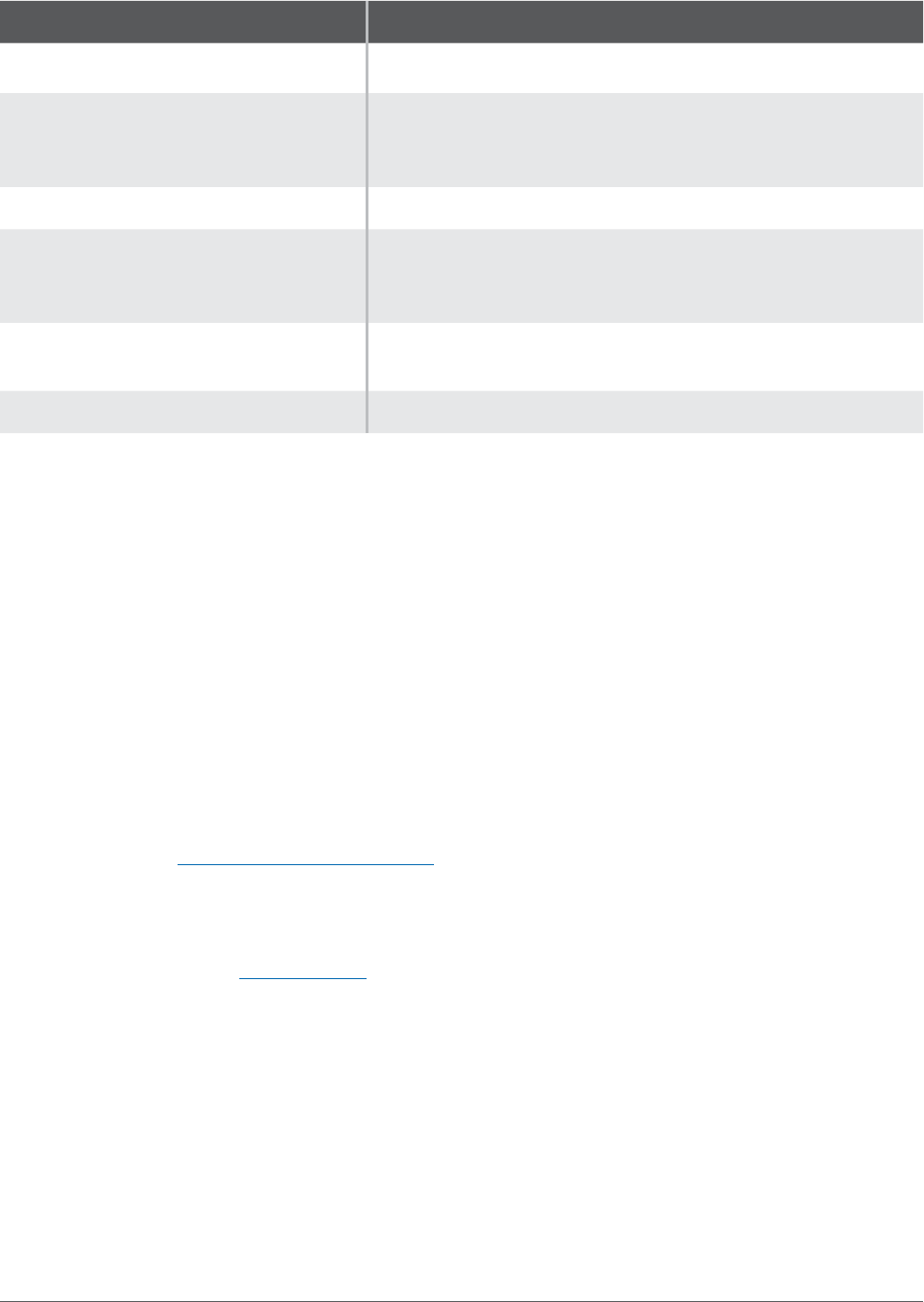
86
Revenue Guide for Washington Cities and Towns | AUGUST 2024
The table below provides a summary of allowable utility tax rates:
Type of Utility Maximum Utility Tax Rate
Electricity; Natural gas; Steam 6% unless voters approve higher rate (RCW 35.21.870)
Telephone (including cell phone/pager)
6% unless voters approve higher rate (RCW 35.21.870), but
when taxing cell phone services cities may not tax Internet
services (see below)
Broadcast satellite TV May not be taxed (see 47 U.S.C. §152 under “Notes” tab)
Cable TV
Tax rate may not be “unduly discriminatory” (see 47 U.S.C.
§542(g)(2)(A)); we suggest it should not exceed your other
utility tax rates
Internet
May not be taxed (Internet Tax Freedom Act moratorium made
permanent in 2016 – see 47 U.S.C. §151 under “Notes” tab)
Sewer; Solid waste; Stormwater; Water No limit prescribed by state or federal law
Use of Revenues
Utility tax revenues are unrestricted and may be used for any lawful governmental purpose. However, if the
city is submitting a utility tax increase ballot measure to voters on one of the specific utilities in RCW 35.21.870,
specifying a purpose might make voters more likely to approve it. If the city does specify a purpose in the ballot
measure, the extra revenues resulting from the increase would be considered restricted and must be spent in
accordance with the purpose stated in the ballot measure.
Ballot Measure Requirements to Increase Utility Tax Above 6%
To increase the utility tax above 6% for electric, gas, steam, or telephone utilities, the city must submit a ballot
measure which must be approved by a simple majority of voters. The statute does not specifically address
when the utility tax must be presented to voters, which leads us to conclude that the ballot measure can be
presented to the voters at any special, primary, or general election.
As noted earlier, a number of cities have successfully approved utility tax increases above 6%. However,
according to MRSC’s Local Ballot Measure Database, most attempts have been unsuccessful in recent years.
Timing of Rate Changes
Any tax changes for electric, telephone, and gas utilities cannot take eect until the end of 60 days after
enactment of the ordinance (RCW 35.21.865). If the utilities are private utilities, they need this time to apply to
the Washington Utilities and Transportation Commission for a rate adjustment to reflect the tax change.
Table of Contents

87
Revenue Guide for Washington Cities and Towns | AUGUST 2024
BROKERED NATURAL GAS USE TAX
Quick Summary
• Any city that has a natural gas utility tax may impose an equivalent “use tax” upon brokered natural
gas sales that are otherwise not subject to the utility tax.
• Use tax rate must be equal to the natural gas utility tax rate.
• Revenues are unrestricted and may be used for any lawful governmental purpose.
RCW: 82.14.230
In 1986, the federal government deregulated the natural gas industry, allowing large customers to bypass gas
utilities and bargain directly with independent brokers. Some of these sales were no longer taxable under
existing state statute, which resulted in some cities losing a considerable amount of revenue.
In response, the state legislature enacted RCW 82.14.230, which allows cities that tax natural gas to (optionally)
impose an equivalent “use tax” on brokered natural gas sales that are not otherwise subject to the utility tax.
The use tax is imposed by the legislative body and does not require voter approval.
The use tax rate must be equal to the city’s utility tax rate on natural gas. For instance, if the city imposes a 5%
utility tax on natural gas, it must impose a 5% use tax on brokered natural gas. If a city has imposed an 8% utility
tax on natural gas with voter approval, it must impose an 8% use tax on brokered natural gas.
This tax only applies to brokered natural gas sales that are not otherwise subject to the utility tax, and
the use tax must be paid by the consumer. However, the use tax does not apply to the use of natural gas,
compressed natural gas, or liquefied natural gas if the consumer uses the gas for transportation fuel as
defined in RCW 82.16.310.
The brokered natural gas use tax statute was amended in 2010 to define “use” as “the first act within this
state by which the taxpayer consumes the gas by burning the gas or storing the gas in the taxpayer’s own
facilities for later consumption by the taxpayer” (see RCW 82.12.010(6)(h)). In other words, the use or taxable
event occurs wherever the customer consumes the gas or stores it for later consumption.
Use of Revenues
As with utility taxes, all revenues from the brokered natural gas use tax are unrestricted and may be used for
any lawful governmental purpose.
Timing of Receipts
Cities must contract with the state Department of Revenue to collect brokered natural gas use taxes. The state
distributes the revenue to participating cities at the end of every month.
Table of Contents

88
Revenue Guide for Washington Cities and Towns | AUGUST 2024
GENERAL BUSINESS LICENSE FEES
Quick Summary
• Cities may require individuals or businesses conducting business within their jurisdiction to obtain a
local business license.
• Revenues are used to recoup administrative costs.
RCW: 35.22.280(32) – First class cities
35.23.440(8) – Second class cities
35A.82.020 – Code cities
35.27.370(9) – Towns
Most individuals or companies that conduct business in Washington State must obtain a state business license
from the Business Licensing Service (BLS), a division of the State Department of Revenue.
In addition to a state business license, most cities require an additional city business license to legally conduct
business within their jurisdiction. These city business licenses can serve several dierent functions, including
monitoring business operations within the city’s jurisdiction, regulating certain types of business activities to
ensure public safety, and generating revenue.
A general business license, as defined in RCW 35.90.010(4), is “a license, not including a regulatory license or
a temporary license, that a city requires all or most businesses to obtain to conduct business within that city.”
Most cities charge a fee for such licenses, as described below.
Any city may require a general business license for any person or company “engaging in business” within
its boundaries. This includes businesses that are physically located within the city, as well as businesses
that are physically located elsewhere but engage in business within the city. However, cities may not
require licenses for entities that are not engaging in business within the jurisdiction (RCW 35.90.060).
Model Ordinance Provisions
Businesses that operate in multiple cities need to obtain separate licenses from each city that requires a
business license. In response to business complaints that this process is too burdensome, in 2017 the state
legislature adopted legislation to simplify the administration of city general business licenses.
The legislation, codified at chapter 35.90 RCW, requires all cities and towns with general business license
requirements to adopt a uniform “model ordinance” identifying what types of commercial activity are and are
not subject to business licensing requirements. However, it should be noted that this is not a comprehensive
model ordinance – rather, it consists of just two provisions that must be incorporated into the rest of the city’s
business licensing regulations:
1. The model ordinance includes a uniform definition of “engaging in business within the city,” including
examples of activities that are considered “engaging in business” as well as business activities that do not
require licensing. This definition is based on the model ordinance for B&O taxes.
2. For businesses that “engage in business” within the city but at not physically located within the city, the city
must establish a minimum dollar threshold below which the businesses must be partially or fully exempted
Table of Contents

89
Revenue Guide for Washington Cities and Towns | AUGUST 2024
from licensing requirements. The minimum threshold of business activity in the model ordinance is $2,000
per year, but some cities have adopted a higher threshold. Below this threshold, cities may either require
a business license at no cost to the business (a $0 fee), or alternatively they may exempt those businesses
from the general business license requirements entirely.
Aside from the model ordinance provisions, cities and towns may adopt any other business license provisions
that they see fit, including, but not limited to:
• Fees and thresholds (provided that they comply with the model ordinance)
• Approval process and conditions
• License terms and expiration dates
• Penalties
• Suspension, revocation, and appeals
• Exemptions (again, provided that they comply with the model ordinance)
While many cities currently issue their business licenses directly, chapter 35.90 RCW requires all cities to
partner with either the state BLS by December 31, 2022 or FileLocal (a business license and B&O tax service
created by interlocal agreement between several larger cities in the Puget Sound region) by July 1, 2020.
By the end of 2022, all cities will be enrolled in BLS or FileLocal and businesses will be able to obtain local
business licenses for any city in the state through these two registration portals. Cities will still retain the ability
to set their own general business license fees, business exceptions, and/or exemptions with either BLS or
FileLocal, and they will also be able to set thresholds higher than the model ordinance provisions if desired.
For more information, including examples of local business license ordinances and fee schedules and the
complete text of the model business license, see our City Business Licenses and Fees webpage.
Use of Revenues
General business license fees are generally designed to recover the administrative costs of registering the
businesses, such as issuing the licenses and maintaining the files. Cities may charge a flat or tiered fee for
general business licenses, but the fees charged should be fair and bear a reasonable relation to the costs.
44
However, some cities charge variable fees designed to generate revenues (see Revenue-Generating Business
License Fees (“Head Taxes”)).
44 See McQuillin, Municipal Corporations §26.46 (July 2018); see, generally, Patton v. Bellingham, 179 Wash. 566 (1934), and
Homes Unlimited v. Seattle, 90 Wn.2d 154 (1978).
Table of Contents

90
Revenue Guide for Washington Cities and Towns | AUGUST 2024
REGULATORY BUSINESS LICENSE FEES
Quick Summary
• Cities may require certain classes of business that need additional regulation and oversight to obtain
an additional regulatory business license, in addition to the general business license.
• Revenues are intended to recoup administrative costs.
RCW: 35.22.280(32) – First class cities
35.23.440(8) – Second class cities
35A.82.020 – Code cities
35.27.370(9) – Towns
Some cities also impose additional regulatory licenses and fees upon certain classes of business that, in their
analysis, require additional regulation and oversight for code enforcement or public safety purposes.
RCW 35.90.010(6) defines a “regulatory business license” as “a license, other than a general business license,
required for certain types of businesses that a city has determined warrants additional regulation…”
Examples include, but are not limited to: adult entertainment, fireworks stands, home-based businesses,
cannabis-based businesses, massage parlors, mobile food vendors, and short-term rentals. For examples and
more information, see our City Business Licenses and Fees webpage.
Use of Revenues
As with general business licenses, regulatory business license fees are generally designed to recover
administrative costs and should be fair and bear a reasonable relation to the costs. However, the fees may be
higher than the fees for general business licenses due to added regulatory costs such as inspections and code
compliance.
Table of Contents

91
Revenue Guide for Washington Cities and Towns | AUGUST 2024
REVENUEGENERATING BUSINESS LICENSE FEES “HEAD TAXES”
Quick Summary
• Some cities impose business license charges on a sliding scale to generate revenue.
• Revenues are unrestricted and may be used for any lawful governmental purpose.
• Charges may be based on number of employees, type of business, square footage, and other criteria.
RCW: 35.22.280(32) – First class cities
35.23.440(8) – Second class cities
35A.82.020 – Code cities
35.27.370(9) – Towns
Instead of recouping administrative costs, some cities generate revenue by imposing business license charges
on a variable scale. The charges are based on one or more criteria such as the number of employees or
number of employee hours worked (sometimes referred to as a “head tax”), the type of business, or the square
footage of a business. Sometimes the charges are based on a true sliding scale, while other times the charges
are broken into multiple tiers.
The law allows for a good deal of creativity in designing these charges. However, classes of businesses must
be clearly defined, and each business within each class must pay the same charge.
45
For examples and more
information, see our City Business Licenses and Fees webpage.
The charge may be imposed by the legislative body and does not require voter approval. However, if the city
has adopted powers of initiative and referendum, it may be subject to a voter referendum.
Use of Revenues
The revenues from a revenue-generating business license charge are unrestricted and may be used for any
lawful governmental purpose.
45 See McQuillin, Municipal Corporations §26.76 (July 2018).
Table of Contents

92
Revenue Guide for Washington Cities and Towns | AUGUST 2024
Lodging Tax (Hotel/Motel Tax)
Quick Summary
• Most cities or towns may impose a lodging tax up to 4%, of which:
– 2% is a credit against the state sales tax.
– 2% is in addition to the sales tax rate.
• A few jurisdictions have been grandfathered in with varying rates.
• Revenues are restricted and must generally be used for tourism activities or tourism-related facilities.
• May also be used to repay debt for aordable workforce housing within ½ mile of a transit station.
• Cities of 5,000 or more must establish a lodging tax advisory committee (LTAC) to review funding
applications and recommend awards.
• Does not require voter approval.
RCW: 67.28.180 and 67.28.181(1)
Any city or town has the authority to levy lodging taxes, also known as “hotel/motel taxes,” on all charges for
furnishing lodging at hotels, motels, and short-term rentals (STR), including such activities as Airbnb, bed and
breakfasts (B&Bs), RV parks, and other housing and lodging accommodations for periods of time less than 30
days. The tax is collected as a sales tax and paid by the customer at the time of the transaction. These taxes
may be imposed by the legislative body and do not require voter approval.
In addition, counties and certain public facilities districts also have lodging tax authority.
There are two lodging tax options:
• A “basic” or “state-shared” lodging tax up to 2% that is taken as a credit against the 6.5% state sales tax
rate, so that the lodging patron does not see any tax increase.
• An “additional” or “special” lodging tax up to 2% on top of the state sales tax rate that results in a higher
tax bill for the patron.
If a city imposes both options at the maximum rate, that would bring the total local lodging tax rate to 4%. Both
the “basic” and the “additional” lodging taxes will be discussed further in the following pages, along with the
use and distribution of funds, lodging tax advisory committees (LTACs), and reporting requirements.
Lodging taxes are dierent than tourism promotion area fees (see Tourism Promotion Area Fees), and lodging
taxes may be imposed in addition to tourism promotion area fees.
Table of Contents

93
Revenue Guide for Washington Cities and Towns | AUGUST 2024
“BASIC” OR “STATESHARED” LODGING TAX
Most cities and towns have the authority to levy a “basic” or “state-shared” lodging tax up to 2% (RCW
67.28.180), which is taken as a credit against the 6.5% state sales tax (RCW 67.28.1801) so that there is no
tax increase and the total tax paid by the patron is equal to the retail sales tax in the jurisdiction in which the
lodging is located. The state’s portion of the sales tax rate on lodging eectively drops from 6.5% to 4.5%
within those jurisdictions.
Counties have similar “basic” lodging tax authority. The city’s basic rate is credited against the county’s basic
rate (RCW 67.28.180(2)). For instance, if both the city and the county impose the full 2% basic lodging tax, the
total rate will be 2% countywide, but the county will not receive revenues from the incorporated area because it
must credit those revenues back to the city.
The basic lodging tax has a few exceptions:
• No city located within King County may impose the basic lodging tax (see RCW 67.28.180(2)(c)(ii)), except
for Bellevue which has legislation allowing it to collect a rate up to 2% until its related debt is retired
(subsection (2)(c)(iii).
• No city that is located within a county that is exempt under RCW 67.28.180(2)(b) may impose the basic
lodging tax so long as the county remains exempt. As of 2018, Yakima County is the only county exempt
under that subsection, so no city within Yakima County may impose this tax. However, there is also an
exception that grandfathers in the City of Yakima and allows it to collect a basic lodging tax up to 2%
until its related debt is retired (subsection (2)(c)(iii)).
• For Bellevue/King County and City of Yakima/Yakima County, the statutory exemptions allow the
jurisdictions to “double-dip,” meaning that the city lodging tax is not taken as a credit against the county
rate. Instead, the city and county rates are added together, resulting in a credit of up to 4% against the state
sales tax rate within Bellevue and the City of Yakima. This means the state only receives a 2.5% sales tax
on lodging in those two cities.
Table of Contents

94
Revenue Guide for Washington Cities and Towns | AUGUST 2024
“ADDITIONAL” OR “SPECIAL” LODGING TAX
In addition to the “basic” 2% lodging tax, most cities may impose an “additional” or “special” lodging tax up
to 2% in increments no smaller than 0.1% (RCW 67.28.181(1)). Unlike the “basic” lodging tax, which is taken as a
credit against the 6.5% state sales tax, the “additional” lodging tax is not a credit and results in a tax increase
for the lodging patron. If the basic and additional lodging tax are each levied at a rate of 2%, the combined
lodging tax rate would be 4%, and the total tax paid by the patron would be equal to the retail sales tax in the
jurisdiction plus the additional/special lodging tax of 2%.
Counties also have similar authority, and if the county has imposed the “additional” lodging tax, the city’s
additional lodging tax must be taken as a credit against the county’s additional rate (RCW 67.28.181(3)). For
example, if both the city and the county impose the full 2% “additional” lodging tax, the total additional rate will
be 2% countywide, but the county will not receive revenues from the incorporated area because it must credit
those revenues back to the city.
The additional lodging tax option has a few exceptions:
• Counties and cities that imposed a combined lodging tax greater than 4% before July 27, 1997 were
grandfathered in under RCW 67.28.181(2)(a). This includes Grays Harbor and Pierce counties (and the
cities within them), plus the cities of Airway Heights, Bellevue, Chelan, Leavenworth, Long Beach,
Winthrop, and Yakima.
• Any city located within a county that had the authority to levy a countywide 4% lodging tax before January
1, 1997 may not impose the additional 2% (RCW 67.28.181(2)(b)). This applies to all cities in Cowlitz and
Snohomish counties.
• Cities that imposed a combined lodging tax rate of 6% before January 1, 1998 are grandfathered in under
RCW 67.28.181(2)(d). This occurred due to a unique set of circumstances and only applies to the cities of
Wenatchee and East Wenatchee.
The maximum combined sales and lodging tax rate upon sales of lodging may not exceed 12% (RCW
67.28.181(1)).
46
The statutes included within the 12% cap are chapter 36.100 RCW (public facilities districts),
chapter 82.08 RCW (state sales tax), chapter 82.14 RCW (local sales taxes), chapter 67.28 RCW (lodging taxes),
and chapter 67.40 RCW (convention and trade center tax – repealed in 2010). However, housing & related
services sales taxes (see RCW 67.28.181(4)) and the first 0.4% of the Sound Transit high-capacity sales tax
(adopted prior to December 1, 2000 – see RCW 82.14.410(2)(c)) are not included within the 12% cap.
Most cities are not that close to the 12% cap, and the cap does not aect the ability of any cities to impose the
maximum “basic” lodging tax allowed by law since it is taken as a credit against the state sales tax and does
not increase the sales tax rate. However, the 12% cap may limit the “additional” lodging tax rate that some
cities, particularly within King County, may impose. RCW 82.14.410 provides that any local sales and use tax
increase adopted after December 1, 2000 must exempt lodging sales if the increase would cause the total
combined lodging/sales tax rate to exceed the greater of the 12% cap or the actual combined lodging/sales tax
rate in eect on December 1, 2000.
46 There is an exception for Seattle, where the convention center lodging tax is higher. The city may impose an “additional”
lodging tax up to 4%, and the combined lodging and sales tax rate may not exceed 15.2% under RCW 67.28.181(2)(c).
Table of Contents

95
Revenue Guide for Washington Cities and Towns | AUGUST 2024
LODGING TAX ADVISORY COMMITTEES AND USE OF FUNDS
Lodging tax revenues are unlike most other local revenue sources in that many cities do not have complete
control over how the revenues are spent. The money can be awarded to nonprofits, tourism organizations, and
to the city or county for those activities associated with tourism facilities and tourism promotion. All prospective
lodging tax recipients must apply for funding.
Any city with a population of 5,000 or more that has imposed lodging taxes – either the basic/state-shared or
the additional/special taxes – must establish a lodging tax advisory committee (LTAC) comprised primarily of
representatives of the local lodging and tourism industries. All prospective funding recipients must apply to the
LTAC for consideration. The LTAC will review the applications and make funding recommendations to the city
legislative body for consideration.
Cities with a population of less than 5,000 are not required to establish an LTAC, although they may do so if
desired. If the city does not have an LTAC, prospective applicants must apply directly to the city legislative body
for consideration and funding. This section will discuss the use of revenues and the LTAC award process.
Use of Revenues
All lodging tax revenues – including both the “basic” and “additional” lodging taxes – must be used for tourism
promotion, acquisition of tourism-related facilities, or operation of tourism-related facilities (RCW 67.28.1815 and
RCW 67.28.1816), including:
• Tourism marketing;
• Marketing and operations of special events and festivals designed to attract tourists;
• Operations and capital expenditures of tourism-related facilities owned or operated by a municipality
or a public facilities district; or
• Operations of tourism-related facilities owned or operated by nonprofit organizations (but not capital
expenditures).
Cities and towns may use the funds either directly, or indirectly through a convention and visitor’s bureau or
destination marketing organization. Chapter 67.28 RCW demonstrates that it was the state legislative intent to
provide local control over the use of lodging tax revenues and to provide for the distribution of this tax back to
those organizations and agencies that promote tourism within the city.
Definitions are provided in RCW 67.28.080. Of particular note are the following definitions:
“Tourism promotion” means activities, operations, and expenditures designed to increase tourism, including
but not limited to advertising, publicizing, or otherwise distributing information for the purpose of attracting
and welcoming tourists; developing strategies to expand tourism; operating tourism promotion agencies;
and funding the marketing of or the operation of special events and festivals designed to attract tourists.
“Tourism-related facility” means real or tangible personal property with a usable life of three or more
years, or constructed with volunteer labor that is: (a)(i) Owned by a public entity; (ii) owned by a nonprofit
organization described under section 501(c)(3) of the federal internal revenue code of 1986, as amended;
or (iii) owned by a nonprofit organization described under section 501(c)(6) of the federal internal revenue
code of 1986, as amended, a business organization, destination marketing organization, main street
Table of Contents

96
Revenue Guide for Washington Cities and Towns | AUGUST 2024
organization, lodging association, or chamber of commerce and (b) used to support tourism, performing
arts, or to accommodate tourist activities.
Practice Tip: The guiding principle is that these facilities should be used by tourists. So, for
example, a municipal golf course would likely be a permitted lodging tax expenditure in Chelan,
while it probably would not be if it were in a residential neighborhood in Spokane. Each situation
is unique and requires careful assessment.
After conferring with the State Auditor’s Oce, we have also concluded that lodging tax revenues may be
used to pay for sta support of the lodging tax advisory committee (LTAC), provided that proper application
and reporting requirements are followed. Our conclusion comes from RCW 67.28.1815, which states that the
revenues must be used “solely for the purpose of paying all or any part of the cost of tourism promotion…” It is
our opinion that the primary function of an LTAC is to promote and market tourism.
To avoid any concerns with Article 8, Section 7 of the state constitution, which prohibits gifts of public funds,
a city should enter into a contract with any organization receiving lodging tax funds. The contract should spell
out the tourism-related services to be provided in exchange for city funding as well as the required reports
that must be filed by the recipient with the city that quantifies the services in terms of the number of tourists
generated as a result of the funding.
Cities and counties may use lodging tax funds to repay debt associated with tourism related facilities owned
by the municipality, and the 2015 legislation session provided cities with an additional option to use lodging
tax revenues to repay general obligation bonds (RCW 67.28.150) or revenue bonds (RCW 67.28.160) issued for
aordable workforce housing within a half mile of a transit station (RCW 67.28.180).
King County has a separate mandatory provision that requires at least 75% of the revenues to be used for
aordable housing and the arts beginning in 2021. However, these provisions only apply to the county itself
and do not apply to any cities within King County.
Application and Award Process
The entities that may apply for lodging tax funding are:
• Convention and visitors’ bureaus;
• Destination marketing organizations;
• Nonprofits, including main street organizations, lodging associations, or chambers of commerce; and
• Municipalities (defined as any city, town, or county).
In cities with a population of 5,000 or more, applications for lodging tax funding must be submitted to a lodging
tax advisory committee (LTAC). The LTAC must be appointed by the city council and must contain at least five
members, including one elected city ocial who serves as chair, at least two representatives of businesses that
are required to collect the lodging tax, and at least two people who are involved in activities that are authorized
to be funded by the lodging tax (RCW 67.28.1817). The city may optionally appoint one county elected ocial as
Table of Contents

97
Revenue Guide for Washington Cities and Towns | AUGUST 2024
a nonvoting member. The city council must review the committee’s membership annually and makes changes
as appropriate.
In cities of less than 5,000, applications are submitted to the city legislative body, unless the city voluntarily
chooses to establish an LTAC.
Practice Tip: Cities with a population less than 5,000 that voluntarily establish an LTAC are not
required to follow the LTAC provisions in state law and may adopt their own LTAC processes and
requirements by policy.
All applications must include estimates of how funding the activity will result in increases to the number of
people staying overnight, traveling 50 miles or more, or coming from another state or country. To ensure that
the applicants are compliant with this statutory requirement, this information should be included in the lodging
tax application form that will be filed with the city or the LTAC.
There is no requirement that priority for funding be given to applicants expected to generate the largest
number of tourists, and lodging tax revenue may still be awarded to recipients who provide services that
indirectly increase tourism such as destination marketing organizations.
Practice Tip: The State Auditor’s Oce interprets the law to mean that all users of lodging tax
funds, including municipalities, are considered applicants and must follow the relevant application
procedures. So, cities should submit applications for their own projects to the LTAC.
For those cities required to establish an LTAC, the LTAC receives all applications for lodging tax revenue and
recommends a list of candidates and funding levels to city council for final determination. The statute says that
city council “may choose only recipients from the list of candidates and recommended amounts provided by
the local lodging tax advisory committee” (RCW 67.28.1816(2)(b)(ii), emphasis added). The city council may not
award funds to any recipient that was not recommended by LTAC.
However, an informal opinion from the Attorney General’s Oce in 2016 states that the legislative body may
award amounts dierent from the LTAC’s recommended amounts, but only after satisfying the procedural
requirements of RCW 67.28.1817(2). This requires the municipality to submit its proposed change(s) to the LTAC
for review and comment at least forty-five days before final action is taken.
The city is not required to fund the full list of recommended recipients and may choose to make awards to only
some or even none of the recommended recipients.
The law is silent on the frequency of the awards. Some jurisdictions choose to make the award process a
part of their annual budget cycle while others may incorporate a mid-year awards procedure to account for
unexpected increases or decreases in lodging tax revenues.
Table of Contents

98
Revenue Guide for Washington Cities and Towns | AUGUST 2024
Rate Changes and Exemptions
For those cities required to establish an LTAC, any proposal to impose a new lodging tax, raise the rate of
an existing tax, repeal an exemption from the lodging tax, or change the use of the tax proceeds, must be
submitted to the lodging tax advisory committee for review and comment (RCW 67.28.1817(2)).
This submission must occur at least 45 days before final action will be taken on the city council’s proposal.
Even if the committee finishes its work before the 45 days are up, the city council still must wait 45 days.
The committee’s comments must include an analysis of the extent to which the proposal will accommodate
activities for tourists or increase tourism, and of the extent to which it will aect the long-run stability of the fund
to which the hotel-motel taxes are credited. If the advisory committee does not submit comments within the 45-
day deadline, city council may proceed with final action.
REPORTING REQUIREMENTS
All cities and towns receiving lodging tax revenues must report annually to the Joint Legislative Audit & Review
Committee (JLARC) (RCW 67.28.1816). JLARC has established an online reporting system, and the reporting
requirements include:
• All lodging tax revenues received;
• All lodging tax revenues distributed and/or expended;
• All recipients of lodging tax monies, including the city itself, that may have directly used lodging tax funds
for qualifying facilities, tourist events, or tourism administration; and
• For all recipients, the actual number of people traveling for business or pleasure on an overnight trip in
paid accommodations, traveling 50 or more miles away from their business or place of residence for the
day or overnight, or traveling from another country or state.
Practice Tip: The JLARC online filing system can record and store lodging tax activity throughout
the calendar year. As part of your contract with recipients, we recommend that you require the
recipient to file the actual number of attendees, overnight stays, and/or other associated tourism
data as soon as the event or activity has been completed. This will make it easier to file the
annual report.
In the event that your city received lodging tax revenues but did not have any distributions or expenses during
the calendar year, the JLARC report must still be completed and filed by the deadline indicating no activity.
Table of Contents

99
Revenue Guide for Washington Cities and Towns | AUGUST 2024
Real Estate Excise Taxes (REET)
The State of Washington levies a real estate excise tax (REET) upon all sales of real estate under chapter 82.45 RCW.
The tax rate used to be a flat 1.28%, but eective January 1, 2020 the state implemented a graduated tax scale
based on the selling price of the property, with the sale price thresholds adjusted on a four-year schedule (see
RCW 82.45.060). However, the sale of real property classified as timberland or agricultural land remains taxed
at a flat 1.28% regardless of the sale price.
A portion of the proceeds are deposited into the public works assistance account (RCW 43.155.050) for loans and
grants to local government for public works projects; the city-county assistance account (see City-County Assistance
(ESSB 6050) Distributions) for distribution to qualifying cities and counties; and the education legacy trust account
for the support of the common schools, expanding higher education, and other educational improvement eorts.
In addition, chapter 82.46 RCW authorizes cities and towns to impose local real estate taxes on top of the
state rate. The tax is calculated based on the full selling price, including the amount of any liens, mortgages,
and other debts given to secure the purchase (RCW 82.46.010(5) and RCW 82.45.030). However, the rate that
the city can levy and the way it can use the revenues depends on the city’s population and whether or not it is
planning under the Growth Management Act (GMA).
The tax is due at the time of sale and is collected by the county when the documents of sale are presented
for recording (WAC 458-61A-301). Real estate excise taxes are typically the responsibility of the seller of the
property, not the buyer, although the buyer is liable if the tax is not paid. However, sometimes the buyer pays
some or all of the tax as part of the negotiated sale agreement.
Some real estate property transfers are exempt from REET under chapter 458-61A WAC. For instance, gifts of
real property are generally exempt from REET (WAC 458-61A-201), as are transfers of property through wills or
inheritance (WAC 458-61A-202) and transfers due to divorce settlement agreements (WAC 458-61A-203).
Any property sold by a government agency is exempt from REET, but generally any real property purchased
by a government agency is subject to REET unless otherwise exempted (WAC 458-61A-205).
REET revenues can be somewhat volatile, since they depend on both the volume of real estate sales and the
sale value of the properties sold. If the local real estate market is strong, tax revenues will be strong too. But if
the local real estate market is weak, tax revenues will decline in direct proportion to the activity in the market.
The two main REET options for cities and towns are:
• REET 1 (“first quarter percent”) – Any city or town may levy a 0.25% real estate excise tax primarily for
capital projects and limited maintenance.
• REET 2 (“second quarter percent”) – Additional 0.25% real estate excise tax primarily for capital projects
and limited maintenance, but may only be imposed by cities that are fully planning under GMA.
Because these revenue sources are restricted to specific purposes, they must be accounted for separately in a
capital projects fund for REET 1 proceeds (RCW 82.46.030(2) and/or a special revenue fund for REET 2 income.
Those cities and counties that are planning under GMA and levying both REET 1 and REET 2 need to keep
track of each of these revenues separately because the uses to which they may be applied are dierent.
State statute also provides a few additional but narrowly focused REET options, as described later in this chapter.
Table of Contents

100
Revenue Guide for Washington Cities and Towns | AUGUST 2024
REET 1 THE “FIRST QUARTER PERCENT”
Quick Summary
• Any city or town may impose a 0.25% excise tax upon all real estate sales.
• Revenues are restricted and may only be used for certain capital purposes and housing relocation
assistance, depending on the city’s population and whether it fully plans under GMA.
• May also be used for limited capital facility maintenance, with additional reporting requirements.
• Does not require voter approval.
RCW: 82.46.010(2)
Any city or town may impose an excise tax of 0.25% – known as “REET 1” or the “first quarter percent” – upon all
real estate sales (RCW 82.46.010(2)). REET 1 may be imposed by the legislative body and does not require voter
approval. Almost all cities in the state have imposed REET 1, except for a few very small cities and towns.
Use of Revenues
REET 1 revenues are restricted and may only be used for certain purposes. However, the exact purposes depend
on the city’s population and whether or not it is fully planning under the Growth Management Act (GMA).
Cities with a population of more than 5,000 that are fully planning under GMA: According to RCW
82.46.010(2)(b), these jurisdictions must spend the REET 1 revenues on “capital projects” that are listed in the
capital facilities plan (CFP) element of their comprehensive plan.RCW 82.46.010(6) defines “capital projects” as:
[T]hose public works projects of a local government for planning, acquisition, construction, reconstruction, repair,
replacement, rehabilitation, or improvement of streets; roads; highways; sidewalks; street and road lighting
systems; trac signals; bridges; domestic water systems; storm and sanitary sewer systems; parks; recreational
facilities; law enforcement facilities; fire protection facilities; trails; libraries; administrative facilities, judicial
facilities, river flood control projects […] and technology infrastructure that is integral to the capital project.
Sub-section (2)(b) also states that REET 1 funds may be spent on housing relocation assistance as defined
within RCW 59.18.440 and 59.18.450, which in summary provides assistance to low-income tenants under
specific circumstances defined by statute and local ordinance.
In addition, a portion of the REET 1 proceeds may be used for the maintenance of capital facilities as described
on the next page, with additional reporting requirements.
Note that REET 1 funds may not be used for developing or updating a capital facilities plan (CFP) or capital
improvement plan (CIP), but they can be used for design, engineering, surveys, etc. associated with a specific
qualifying project listed in a CFP or CIP.
Cities that are not required to fully plan under GMA, or that are fully planning under GMA and have a
population of 5,000 or less: According to RCW 82.46.010(2)(a), these jurisdictions must use REET 1 funds
“for any capital purpose identified in a capital improvements plan and local capital improvements, including
those listed inRCW 35.43.040.” RCW 35.43.040lists local improvements that can be funded through a local
improvement district (LID), which includes projects such as streets, parks, sewers, water mains, swimming pools,
Table of Contents

101
Revenue Guide for Washington Cities and Towns | AUGUST 2024
and gymnasiums. Local capital improvements include the acquisition of real and personal property associated
with such improvements – so for instance, land acquisition for parks is a permitted expenditure.
Capital projects not listed in the local improvement statute (for example, a fire station, city hall, courthouse,
or library) are also permitted usesas long asthey are included in the city’s capital improvement plan.
Expenditures that are not allowed are such things as the purchase of police cars or backhoes. Accountants
may consider these to be “capital” for accounting purposes, but they are not considered “capital purposes” or
“local capital improvements” as defined in the REET statute.
A 1984 letter between the Attorney General’s oce and a county prosecutor,
47
and confirmed in an Attorney
General’s Memorandum in 1991, defines “local capital improvements” as “various kinds of things which may be
done to a tract or parcel of tangible real property as an improvement thereto.”
48
In addition, a portion of the REET 1 proceeds may be used for the maintenance of capital facilities as described
below, with additional reporting requirements.
Note that REET 1 funds may not be used for developing or updating a capital improvement plan (CIP), but they
can be used for design, engineering, surveys, etc. associated with a specific qualifying project listed in a CIP.
Use of REET 1 for maintenance: Any city or town, regardless of its population or whether it fully plans under GMA,
may use up to $100,000 or 25% of its available REET 1 funds – whichever is greater, but not to exceed $1 million
per year – for the maintenance of capital projects (RCW 82.46.015). The definition of capital projects is the
same as in RCW 82.46.010(6)(b). The definition of maintenance is provided in RCW 82.46.015(6):
For purposes of this section, “maintenance” means the use of funds for labor and materials that will
preserve, prevent the decline of, or extend the useful life of a capital project. “Maintenance”does not
include labor or material costs for routine operations of a capital project [emphasis added].
To use REET 1 funds for maintenance, the city must fulfill additional reporting requirements defined within RCW
82.46.015, including preparing and adopting a written report that includes:
• Information necessary to demonstrate that the city has, or will have, adequate funding from all sources to
pay for all capital projects identified in its capital facilities plan.
• How revenues collected under REET 1 have been used during the prior two-year period.
• How revenues collected under REET 1 will be used for the succeeding two-year period.
• What percentage of funds for capital projects is attributed to REET 1 revenues compared to all other
sources of capital project funding.
This report must be adopted as part of the city’s public budget process. Additionally, the city must declare that
it has not enacted any requirement on the listing or sale of real property; or any requirement on landlords, at
the time of executing a lease, to perform or provide physical improvements or modifications to real property
or fixtures, except if necessary to address an immediate threat to health or safety; unless the requirement is
specifically authorized by other state and federal laws.
47 Informal opinion dated March 6, 1984, from Philip H. Austin, Senior Deputy Attorney General, to Alan A. Hancock, Deputy
Prosecuting Attorney for Island County.
48 Memorandum opinion dated July 16, 1991, from Maureen Hart, Senior Assistant Attorney General, Legal/Fiscal Division, to
Steven Marcotte, Assistant Chief Examiner, State Auditor's Oce
Table of Contents

102
Revenue Guide for Washington Cities and Towns | AUGUST 2024
REET 2 THE “SECOND QUARTER PERCENT”
Quick Summary
• Any city or town that is fully planning under GMA may impose an additional 0.25% excise tax upon all
real estate sales, in addition to the tax imposed under REET 1.
• Revenues are restricted and may only be used for certain transportation, water/storm/sewer, and
park capital purposes.
• May also be used, with additional reporting requirements, for:
– Limited capital facility maintenance.
– REET 1 capital projects.
– Aordable housing and homelessness (through January 1, 2026 only).
• Does not require voter approval for cities required to plan under GMA, but does require voter
approval for cities voluntarily planning under GMA.
RCW: 82.46.035(2)
In addition to REET 1, any city or town that is fully planning under the Growth Management Act (GMA) may
impose an additional 0.25% – known as “REET 2” or the “second quarter percent” (RCW 82.46.035). For cities
that are required to fully plan under GMA, REET 2 may be imposed by the legislative body and does not require
voter approval. However, any city that is voluntarily choosing to plan under GMA must submit the REET 2
proposition to voters.
Ballot Measure Requirements for Voluntary GMA Cities
Voter approval for REET 2 is only required for cities and towns that are voluntarily planning under GMA.
The proposition may be submitted at any special, primary,
49
or general election and must be approved by a
simple majority of voters. According to MRSC’s Local Ballot Measure Database, no voluntary GMA cities have
attempted a voted REET 2 ballot measure recently.
Use of Revenues
REET 2 revenues are restricted and may only be used for financing “capital projects” specified in the capital
facilities plan element of the city’s comprehensive land use plan. RCW 82.46.035(5) defines “capital project” as:
(a) Planning, acquisition, construction, reconstruction, repair, replacement, rehabilitation, or improvement
of streets, roads, highways, sidewalks, street and road lighting systems, trac signals, bridges, domestic
water systems, storm and sanitary sewer systems;
(b) Planning, construction, reconstruction, repair, rehabilitation, or improvement of parks; and
(c) Until January 1, 2026, planning, acquisition, construction, reconstruction, repair, replacement,
rehabilitation, or improvement of facilities for those experiencing homelessness and aordable housing projects.
49 RCW 82.46.035(2) states that the proposition must be submitted “at a general election held within the district or at a special
election within the taxing district,” which at first glance might seem to rule out the August primary election. However, RCW
29A.04.321(2), which establishes the election schedule for local governments, authorizes the county to call up to four “special
elections” each year, including the primary election. So for these purposes, “special election” includes the primary election.
Table of Contents

103
Revenue Guide for Washington Cities and Towns | AUGUST 2024
The definition of “capital project” for REET 2 is more restrictive than it is in the REET 1 statute. REET 2 funds
are more specifically directed to infrastructure and parks capital projects. (However, note that park lands
“acquisition” is not an allowed use for REET 2.) REET 2 omits public facilities such as law enforcement, fire
protection, libraries, administration, and courts that were listed within the REET 1 statute.
However, REET 1 projects may be funded with REET 2 revenues as described below if certain limitations
and additional reporting requirements are met. REET 2 revenues may also be used for limited maintenance
expenses as well as aordable housing and homelessness purposes as described below.
Note that REET 2 funds may not be used for developing or updating a capital facilities plan (CFP) or capital
improvement plan (CIP), but they can be used for design, engineering, surveys, etc. associated with a specific
qualifying project listed in a CFP or CIP.
Use of REET 2 for maintenance and REET 1 projects: Any city may use may use up to $100,000 or 25% of
its available REET 2 funds – whichever is greater, but not to exceed $1 million per year – for the following
purposes (RCW 82.46.037(1)):
• The maintenance of REET 2 capital projects, as defined in RCW 82.46.035(5). The statute defines
“maintenance” as “the use of funds for labor and materials that will preserve, prevent the decline of, or
extend the useful life of a capital project. ‘Maintenance’ does not include labor or material costs for routine
operations of a capital project” [emphasis added].
• Planning, acquisition, construction, reconstruction, repair, replacement, rehabilitation, improvement, or
maintenance of REET 1 capital projects (see REET 1 – The “First Quarter Percent”) that are not also included
within the REET 2 definition of capital projects.
To use REET 2 funds for these limited purposes, the city must fulfill additional reporting requirements defined
within RCW 82.46.037, including preparing and adopting a written report that includes:
• Information necessary to demonstrate that the city has, or will have, adequate funding from all sources to
pay for all capital projects identified in its capital facilities plan for a two-year period.
• How revenues collected under REET 2 have been used during the prior two-year period.
• How revenues collected under REET 2 will be used for the succeeding two-year period.
• What percentage of funds for capital projects is attributed to REET 2 revenues compared to all other
sources of capital project funding.
The report must be adopted as part of the city’s public budget process. Additionally, the city must declare that
it has not enacted any requirement on the listing or sale of real property; or any requirement on landlords, at
the time of executing a lease, to perform or provide physical improvements or modifications to real property
or fixtures, except if necessary to address an immediate threat to health or safety; unless the requirement is
specifically authorized by other state and federal laws.
Use of REET 2 for aordable housing and homelessness: New legislation in 2019 expanded the use of
revenues for homeless housing to also include aordable housing. Until January 1, 2026 any city may
now use up to $100,000 or 25% of its available REET 2 funds – whichever is greater, but not to exceed $1
million – for aordable housing projects and the planning, acquisition, construction, reconstruction, repair,
replacement, rehabilitation, or improvement of facilities for those experiencing homelessness, as long as
Table of Contents

104
Revenue Guide for Washington Cities and Towns | AUGUST 2024
such projects are listed in the capital facilities plan. (These dollar limits do not apply to any city that used
REET 2 revenue for homeless housing prior to June 30, 2019.)
To use REET 2 for aordable housing and homelessness, the city must document in its capital facilities plan
that it has funds during the next two years for capital projects in subsection (5)(a) of the section – which is to
say, all REET 2-eligible capital projects except park projects (which are listed in subsection (5)(b)). Note that
these documentation requirements are much less stringent than the reporting requirements necessary to use
REET 2 for maintenance/REET 1 projects.
Table of Contents

105
Revenue Guide for Washington Cities and Towns | AUGUST 2024
REET IN LIEU OF “SECOND HALF” SALES TAX
Any city or town that has not imposed the 0.5% “second half” sales tax may impose an additional 0.5% excise
tax upon all real estate sales under RCW 82.46.010(3). The revenues are restricted in the same manner as
REET 1. However, all cities and counties have levied the “second half” sales tax and are ineligible to use this
revenue source.
OTHER REET OPTIONS
There are also two additional REET options that are only available to counties, but which cities should be
aware of. These measures require voter approval and are applied to all properties countywide (including within
incorporated cities). The county must consult city elected ocials while developing a plan for the expenditure
of the proceeds.
• 1.0% REET for conservation areas: Any county may impose an additional real estate excise tax of up to
1.0% for the acquisition and maintenance of conservation areas (RCW 82.46.070).
• 0.5% REET for aordable housing: Any county that imposed the full 1.0% REET for conservation areas
no later than January 1, 2003, may also impose a real estate excise tax up to 0.5% for aordable housing
(RCW 82.46.075). San Juan County is the only county that is eligible.
Table of Contents

106
Revenue Guide for Washington Cities and Towns | AUGUST 2024
Other Excise Taxes
ADMISSION TAX
Quick Summary
• Any city may impose an admission tax up to 5% of the admission charge for various events and
facilities.
• Revenues may generally be used for any lawful governmental purpose.
• Does not require voter approval.
RCW: 35.21.280
Any city may levy an admission tax in an amount no greater than 5% of the admission charge for various
facilities and events (RCW 35.21.280). The tax may be imposed by the legislative body and does not require
voter approval.
This tax can be levied on admission charges (including season tickets or subscriptions) to venues such as
theaters, dance halls, circuses, clubs that have cover charges, observation towers, stadiums, and any other
activity where an admission charge is made to enter the facility or where a charge is made for food and drinks
in a place where free entertainment, recreation, or amusement is provided. An admission charge may also be
made on rental or use of equipment or facilities for the purposes of recreation or amusement, if the rental is a
necessary component of the enjoyment.
50
The statute exempts cities from placing an admission tax on any elementary or secondary school activity and
on any public facility district (PFD) of a city for which the PFD has levied an admission tax under RCW 35.57.100.
However, a city may impose its own tax on admissions to activities at a PFD, in addition to the district’s, if the
revenue is used for the construction, operation, maintenance, repair, replacement, or enhancement of that
public facility or to develop, support, operate, or enhance programs in that public facility (RCW 35.21.280(1)).
50 Counties have similar authority under RCW 36.38.010. In Ski Acres v. Kittitas County, 118 Wn.2d 852 (1992), the
Washington State Supreme Court ruled that the county could not levy its admission tax on ski lift tickets and/or rental
equipment under RCW 36.38.010(2), which states, in part that the term “admission charge” includes:
a charge made for rental or use of equipment or facilities for purpose of recreation or amusement, and where the
rental of the equipment or facilities is necessary to the enjoyment of the privilege for which a general admission is
charged, the combined charges shall be considered as the admission charge.
The court agreed with the plainti that, because one could enter the ski area without a charge, the county could not charge
an admission tax on the ski lift price (or equipment rental). This same argument could apply to facilities such as bowling alleys
and skating rinks.
Because the language in the city statute is similar, a court might possibly find that cities also cannot levy an admission tax in
cases where people can enter a place without paying even though they have to pay to participate in the activity in that place.
The statute authorizing the admission tax for cities and towns, however, is dierent from the statute authorizing the county
tax, and the area of dierence is found in the language used by the Supreme Court to invalidate Kittitas County’s application
of the tax to ski lifts. Without additional guidance by the courts, it is dicult to conclude whether cities possess greater taxing
authority. An argument to that eect certainly could be made.
Table of Contents

107
Revenue Guide for Washington Cities and Towns | AUGUST 2024
For cities located within King County (a county with a population of 1 million or more), the statute prohibits the
levy of an admission tax on events in stadiums built after January 1, 1995 that have seating capacity greater
than 40,000 and are owned by a PFD.
A city-imposed admission tax is administered at the local level, so collections and auditing are the city’s
responsibility and the city should include appropriate language within the enabling ordinance to require
collection and remittance. Some cities have been known to exempt certain events such as those sponsored by
nonprofits, but this is an option that is determined individually by each city that decides to impose the tax.
Use of Revenues
Admission tax revenues are unrestricted and may be used for any lawful governmental purpose. However,
if the admission tax is levied upon activities at a PFD as described above, the revenue must be used for the
construction, operation, maintenance, repair, replacement, or enhancement of that public facility or to develop,
support, operate, or enhance programs in that public facility (RCW 35.21.280(1)).
Table of Contents

108
Revenue Guide for Washington Cities and Towns | AUGUST 2024
BORDER AREA FUEL TAX
Quick Summary
• Any city within 10 miles of a Canadian border crossing, or any transportation benefit district encompassing
a Canadian border crossing, may impose a gas tax up to 2 cents per gallon, adjusted for inflation.
• Revenues are restricted and must be used for street maintenance and construction.
• Requires voter approval.
RCW: 82.47.020
Any city or town within 10 miles of a Canadian border crossing, or any transportation benefit district that
includes a Canadian border crossing within its boundaries, may establish a special gas tax in addition to any
other federal, state, or local gas taxes (RCW 82.47.020). This tax requires voter approval. The maximum tax rate
may not exceed 2 cents per gallon for ballot propositions submitted in calendar year 2022; for ballot measures
submitted in later years, the maximum tax rate may be adjusted to reflect the percentage change in the implicit
price deflator for personal consumption expenditures since calendar year 2022.
As of 2022, this tax has been implemented by the cities of Blaine, Nooksack, and Sumas, as well as the Point
Roberts Transportation Benefit District.
The intent of this tax is help oset street maintenance and construction costs due to high border-crossing
trac volumes, with a portion of the costs borne by Canadian residents (many of whom buy gas in Washington
border jurisdictions because fuel prices are generally lower than in British Columbia).
Use of Revenue
The entire proceeds of the tax, minus refunds authorized by the resolution imposing the tax and minus any
amounts for administration and collection expenses, must be used solely for border area jurisdiction street
maintenance and construction (RCW 82.47.030).
Ballot Measure Requirements
The border area fuel tax must be approved by a simple majority of voters and may be submitted at any special,
primary,
51
or general election. The election must be held no more than 12 months before the tax is to take eect,
and the proposition must state the proposed tax rate. According to MRSC’s Local Ballot Measure Database,
Ferndale is the only city to attempt this revenue source in recent years and the measure failed.
51 RCW 82.47.020 states that the tax must be submitted at “a general or special election,” which at first glance might seem
to rule out the August primary election. However, RCW 29A.04.321(2), which establishes the election schedule for local
governments, authorizes the county to call up to four “special elections” each year, including the primary election. So for these
purposes, “special election” includes the primary election.
Table of Contents

109
Revenue Guide for Washington Cities and Towns | AUGUST 2024
COMMERCIAL PARKING TAX
Quick Summary
• Any city may impose a tax on commercial parking businesses.
• Revenues are restricted and must be used for transportation purposes.
• Does not require voter approval but is subject to possible referendum.
RCW: 82.80.030
Any city or town may impose a tax on commercial parking businesses located within its boundaries (RCW
82.80.030). This tax may be imposed by the legislative body and does not require voter approval. However, it
is subject to possible referendum under RCW 82.80.090.
There is no limit on the tax rate, and there are many ways that a city can assess the tax. The city may impose
the tax directly on parking businesses (RCW 82.80.030(1)), or it may impose a tax on the driver of the vehicle
using the commercial parking facility (RCW 82.80.030(2)).
If the tax is imposed on the parking business, the rate must be based upon either gross proceeds or the
number of vehicle stalls available for commercial parking use. The rates charged must be uniform for the same
class or type of commercial parking business (RCW 82.80.030(4)).
If the tax is imposed on the driver, the tax may be a flat fee or a percentage amount, and the operator of the
parking facility collects and remits the tax revenues to the city (RCW 82.80.030(2)). The tax rates may vary
by any “reasonable factor,” including zoning, the location of the facility, parking duration, time of entry or exit,
and the type or use of the vehicle. Cities may also exempt carpool vehicles, vehicles with a disabled parking
placard, or government vehicles.
As of 2022, we are aware of 11 cities imposing a commercial parking tax: Bainbridge Island, Bremerton, Burien,
Milton, Mukilteo, Port Angeles, Ruston, SeaTac, Seattle, Sumner, and Tukwila.
The city is responsible for administering the tax and adopting rules by resolution or ordinance. The city may
provide for payment on a monthly, quarterly, or annual basis.
Use of Revenues
The revenue must be used for transportation purposes as defined in RCW 82.80.070. This includes, but is
not limited to:
• Operation and preservation of roads, streets, and other transportation improvements;
• New construction, reconstruction, and expansion of streets and highways and other transportation improvements;
• Development and implementation of public transportation and high capacity transit improvements and programs;
• Planning, design, and acquisition of right-of-way and sites for transportation purposes; and
• Transportation improvements in accordance with a transportation benefit district.
Table of Contents

110
Revenue Guide for Washington Cities and Towns | AUGUST 2024
The statute prohibits the supplanting of funds. No city may use the commercial parking tax revenues to replace,
divert, or loan any revenues currently being used for transportation purposes to non-transportation purposes
(RCW 82.80.070(6)).
Any city with a population greater than 8,000 that levies a commercial parking tax must develop and adopt a
specific transportation program identifying the geographic area where the tax revenues will be collected and
expended, proposed transportation improvements and costs, how the plan is coordinated with other applicable
local and regional transportation plans, and a six-year funding plan updated every year (RCW 82.80.070(3)-(5)).
Table of Contents
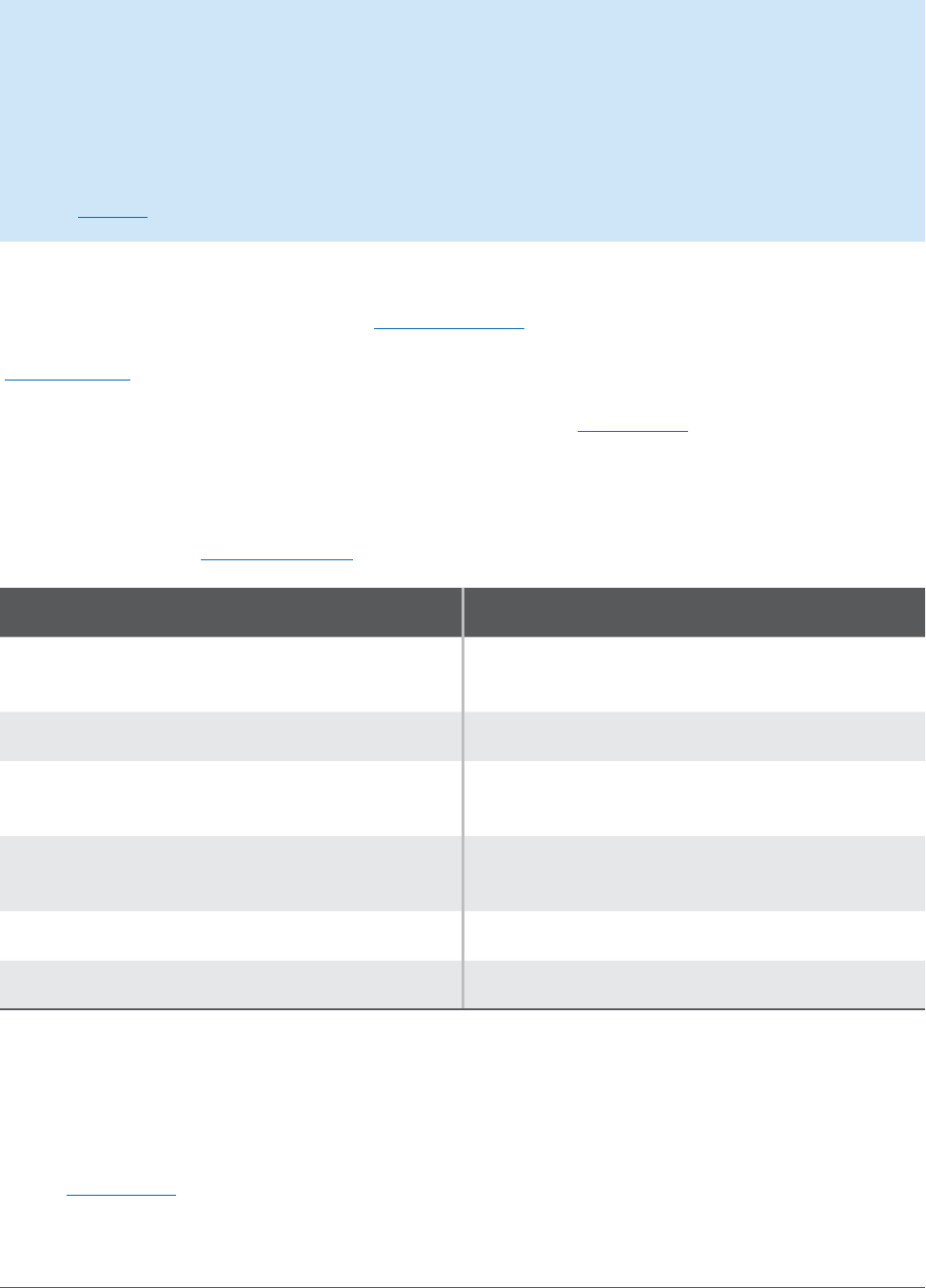
111
Revenue Guide for Washington Cities and Towns | AUGUST 2024
GAMBLING TAX
Quick Summary
• Any city or town may tax gambling activities within its jurisdiction.
• Maximum tax rates depend upon type of gambling activity.
• Revenues are restricted and must be used for public safety purposes.
• Does not require voter approval.
RCW: 9.46.110
Gambling activities are regulated by the state, with the Washington State Gambling Commission regulating
and licensing most gambling activities under chapter 9.46 RCW. Cities and towns are limited in their authority
to regulate gambling, but they may prohibit any or all gambling activities for which licenses are required
(RCW 9.46.295).
Cities that choose to allow gambling may tax the gambling proceeds (RCW 9.46.110). Such gambling taxes may
be imposed by the legislative body and do not require voter approval.
The maximum rates are set by statute and are listed below. Note that some of the maximum tax rates are
based on net receipts (gross receipts minus prizes), while others are based on gross receipts. For definitions
of each activity, refer to chapter 9.46 RCW.
Gambling Activity Maximum Tax Rate
Amusement games Actual costs of enforcement, not to exceed % of
net receipts*
Bingo % of net receipts*
Punch boards and pull-tabs by charitable or
nonprofit organizations
% of net receipts
Punch boards and pull-tabs by commercial
stimulant operators
% of gross receipts or 10% of net receipts
Raes % of net receipts**
Social card games % of gross receipts
* For amusement and bingo games, charitable or nonprofit organizations with no paid operating or management personnel and
combined net receipts of $5,000 or less are exempt from taxation.
** For raes conducted by a bona fide charitable or nonprofit organization, the first $10,000 of net receipts are exempt from taxation.
Use of Revenues
Cities that implement this gambling tax “must use the revenue from such tax primarily for the purpose of public
safety” (RCW 9.46.113).
Table of Contents

112
Revenue Guide for Washington Cities and Towns | AUGUST 2024
LEASEHOLD EXCISE TAX
Quick Summary
• Any city or town may levy an excise tax up to 4% on most leases of tax-exempt properties.
• Tax is credited against state and county leasehold excise taxes.
• Revenues are unrestricted and may be used for any lawful governmental purpose.
• Does not require voter approval.
RCW: 82.29A.040
Under state law, all publicly owned properties, as well as certain privately owned properties, are exempt from
property tax under Title 84 RCW. However, most leases of publicly-owned real and personal property in the
state, as well as certain specified privately owned real or personal properties, are subject to a leasehold excise
tax in lieu of property taxes, as long as the lessee (the tenant) would otherwise be subject to property tax if the
lessee owned the property instead of leasing it (chapter 82.29A RCW).
The State of Washington imposes a 12.84% leasehold excise tax on the act or privilege of occupying or using
publicly owned, or specified privately owned, real or personal property (RCW 82.29A.030).
52
In addition, any city or town is authorized to levy and collect a leasehold excise tax of up to 4% of the taxable
rent on the occupancy or use of the same publicly owned, or specified privately owned, real or personal
property within its jurisdictional limits. Counties have similar leasehold excise tax authority up to a rate of 6%.
These local leasehold excise taxes do not require voter approval.
“Taxable rent” means the contract rent (when the lease is established by competitive bidding) or, in certain
circumstances, rent as determined by the Department of Revenue (DOR) when a leasehold interest has not
been established through competitive bidding and the compensation to the lessor does not represent fair
market value of the lease or when a lease has not been renegotiated for at least 10 years. (See definitions in
RCW 82.29A.020.)
Publicly owned real or personal property also includes real or personal property owned by federally recognized
Indian tribes, nonprofit fair associations, and community centers, as long as they are exempt from property tax.
RCW 82.29A.130 provides for exemptions on certain specified properties, while RCW 82.29A.120 allows certain
lessees to receive credits that reduce their leasehold excise tax payments.
Allocation of Leasehold Excise tax
Leasehold excise taxes imposed by cities and counties are credited against the 12.84% state leasehold excise
tax. This credit is applied in layers, which is to say the county rate (with a maximum rate of 6%) is credited against
the state rate, and the city rate (with a maximum rate of 4%) is credited against the county. For example, if the
county imposes its maximum of 6% and no city has imposed a leasehold excise tax, the county will receive 6%
countywide and the state will receive the remaining 6.84%. However, if a city also imposes its 4% maximum rate,
the city will receive 4% and the county will receive 2%. The state would still receive the remaining 6.84%.
52 RCW 82.29A.030 establishes a tax rate of 12% plus an additional tax equal to the rate specified in RCW 82.02.030 (which
is 7%) multiplied by 12%. 12% times 7% is 0.84%, which brings the total tax rate to 12.84%.
Table of Contents

113
Revenue Guide for Washington Cities and Towns | AUGUST 2024
Use of Revenues
Leasehold excise tax revenues are unrestricted and may be used for any lawful governmental purpose.
Timing of Receipts
For any city-owned properties, the city collects the 12.84% leasehold tax and remits the full amount to the
Department of Revenue. For other eligible tax-exempt properties located within the city, the tax must be
collected by the lessor and remitted to DOR on a quarterly basis, and federal property reports directly to the
DOR on an annual basis. The DOR, after deducting an administrative fee (RCW 82.29A.080), distributes the
taxes back to cities on a monthly basis (RCW 82.29A.090).
Table of Contents

114
Revenue Guide for Washington Cities and Towns | AUGUST 2024
LOCAL HOUSEHOLD TAX
Quick Summary
• Excise tax of up to $1.00 per month per household; may not be imposed concurrently with transit
sales tax.
• Revenues must be used for public transportation improvements.
• Does not require voter approval but may be subject to referendum.
RCW: 35.95.040
Any city or town that provides transit service may impose a local household tax of up to $1.00 per month
per household (RCW 35.95.040) to support its transit system. However, any jurisdiction imposing a transit
sales tax under RCW 82.14.045 (see Transit Sales Tax), or located within a transit district that imposes such a
sales tax, may not impose a local household tax and vice versa. As of 2022, we are not aware of any cities
or counties that impose this local household tax, and most transit agencies rely on sales taxes instead, which
generate far more revenue.
Local household taxes may be imposed by city council ordinance. While a public vote is not explicitly
required,
53
state statute says that any municipality adopting a local household tax “may” refer the ordinance
to voters before making the ordinance eective (RCW 35.95.090). In addition, the measure may be subject to
possible referendum (RCW 35.95.080).
The tax is administered by the city clerk or treasurer, and the tax is billed and collected at such times and in
the manner determined by the city (RCW 35.95.050).
Use of Revenues
The revenues must be used for the operation, maintenance, and capital needs of its municipally owned or
leased and municipally operated public transportation system.
53 RCW 35.95.040 requires a public vote for local household taxes imposed by public transportation benefit areas or county
transportation authorities, but not for cities or towns.
Table of Contents
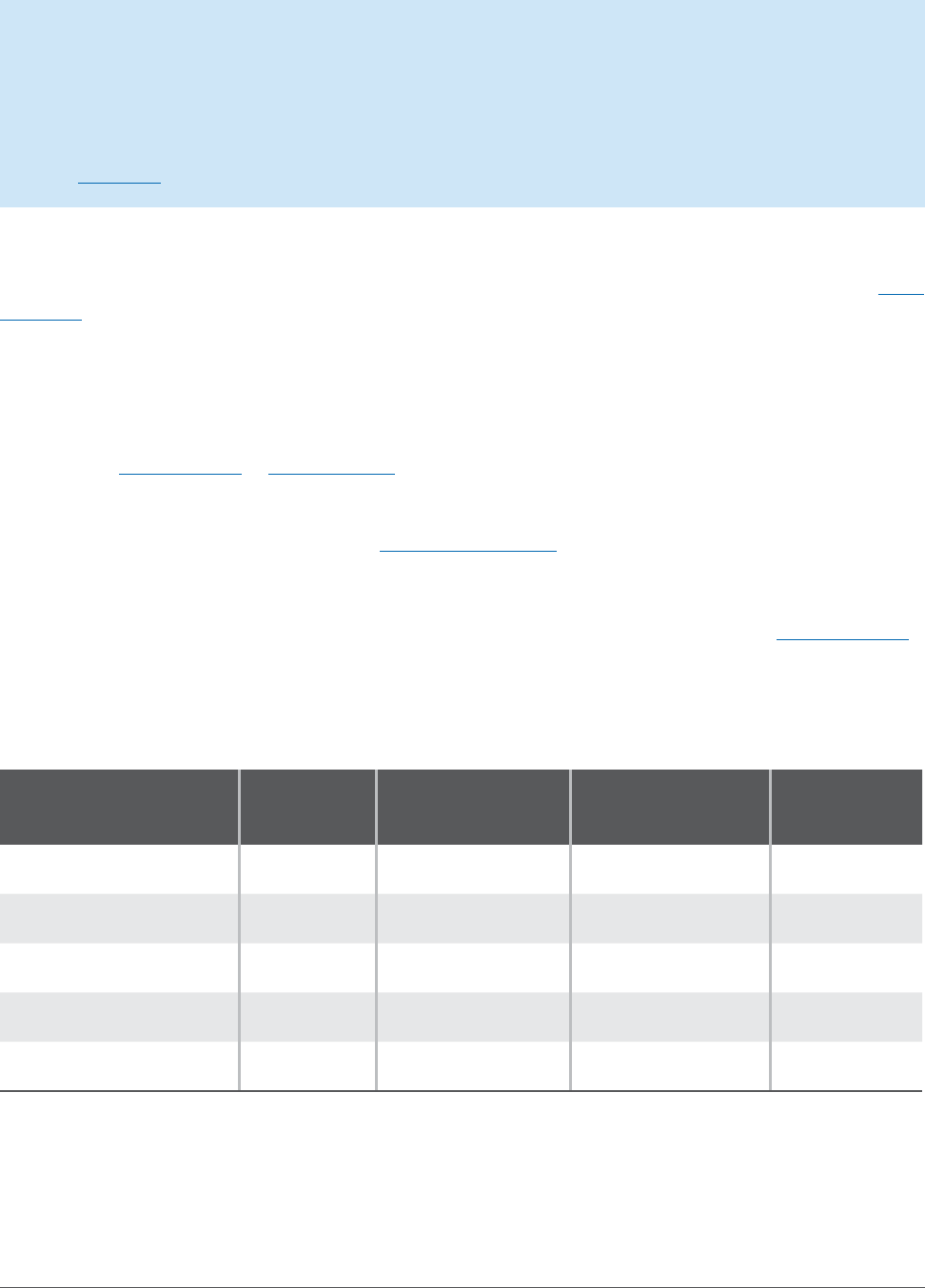
115
Revenue Guide for Washington Cities and Towns | AUGUST 2024
LOCAL OPTION GAS TAX
Quick Summary
• Counties may impose a local option gas tax of 10% of the state gas tax rate.
• Revenues are shared with cities and must be used for transportation purposes.
• Requires voter approval.
RCW: 82.80.010
Any county may impose a countywide local option motor vehicle fuel excise tax (gas tax) at a rate equal to 10% of
the current state gas tax rate, with some of the revenue shared with the cities and towns within the county (RCW
82.80.010). As of 2024 the state gas tax is 49.4 cents per gallon, so the local option gas tax would be 4.94 cents
per gallon. This tax is in addition to any other federal, state, or local gas taxes and requires voter approval.
A local option gas tax must be approved by a simple majority of voters, and the increased gas tax may only be
implemented on January 1, April 1, July 1, or October 1. A county may not levy this tax if it is participating in a
regional transportation investment district and the county or district has imposed the motor vehicle and special
fuel tax under RCW 82.80.110 or RCW 82.80.120.
Cities and transportation benefit districts near the Canadian border have separate authority to impose an
additional gas tax up to 1 cent per gallon (see Border Area Fuel Tax).
Revenue Sharing
The revenues are shared between the county and the cities on a per capita (population) basis (RCW 82.80.080).
The county’s share is calculated based on 1.5 times the unincorporated population, as shown in the example below.
Example of Revenue Sharing for Local Option Gas Tax
Total revenue: $,
Jurisdiction Population Adjusted
Population
Percent of Adjusted
Population
Revenues
Received
City A , , % $,
City B , , % $,
City C , , % $,
Unincorporated county , x. = , % $,
TOTAL , , % $,
Prior to the imposition of the local option gas tax, the county must contract with the Department of Revenue
(DOR) for the administration and collection of the tax, with DOR withholding up to 1% as an administrative fee.
Table of Contents

116
Revenue Guide for Washington Cities and Towns | AUGUST 2024
Use of Revenues
The revenues are restricted and must be used strictly for transportation purposes in accordance with RCW
82.80.070. This includes, but is not limited to:
• Operation and preservation of roads, streets, and other transportation improvements;
• New construction, reconstruction, and expansion of streets and highways and other transportation
improvements;
• Development and implementation of public transportation and high capacity transit improvements and
programs;
• Planning, design, and acquisition of right-of-way and sites for transportation purposes; and
• Transportation improvements in accordance with a transportation benefit district.
However, the statute goes on to say that proceeds from the local option gas tax under RCW 82.80.010 “shall
be used exclusively for ‘highway purposes’ as that term is construed in Article II, section 40 of the state
Constitution.” The constitutional definition is narrower than the “transportation purposes” identified in the
beginning of the statute. Until this inconsistency is addressed or clarified, we would recommend using the
narrower, more conservative constitutional definition.
Timing of Receipts
The distribution is made by the State Treasurer’s Oce on a monthly basis to the county and its cities.
Table of Contents

117
Revenue Guide for Washington Cities and Towns | AUGUST 2024
TIMBER EXCISE TAX
Quick Summary
• Credit against state timber excise tax.
• May only be imposed by counties, which share the revenue with other taxing districts (including
some cities) based on timber sales, timber assessed value, and levy rates.
RCW: 84.33.041, 84.33.051, 84.33.081
The State of Washington imposes a 5% excise tax upon all timber sales on public or private land. However, any
county may take a credit of 4% against the state timber excise tax (see RCW 84.33.041 and RCW 84.33.051).
This means that the excise tax paid by the harvester remains 5%, but that the state excise tax rate is eectively
reduced to 1% while the county receives the remaining 4%.
The county must share the revenue with all taxing districts within the county that have timber assessed value
(TAV) – primarily school districts and special purpose districts. Most cities and towns will receive little to no
revenue from the timber excise tax due to the lack of timberlands within incorporated areas.
The distribution amounts depend on each district’s levy rate for the current year as well as the district’s TAV
and the actual amount of timber excise taxes collected. RCW 84.33.081 establishes five distribution tiers:
• Priority 1: Taxing districts with general obligation (G.O.) bond levies, and school districts with excess levies
for capital purposes.
• Priority 2: School districts.
• Priority 3: All taxing districts with a regular or excess levy not listed in Priority 1 or 2.
• Priority 4 (if any): County reserve for next year’s timber excise tax distributions.
• Priority 5 (if any): All excess funds after Priority 4 will be distributed to Priority 3 jurisdictions.
Many cities have no timber assessed value and will not receive any distributions. However, if a city does have
timber assessed value, it will be eligible for distributions. If an eligible city has an excess levy for the repayment of
voted G.O. bonds, it will receive a Priority 1 distribution. In addition, an eligible city will receive Priority 3 distributions
for all of its levies (for instance, the general fund levy and the EMS levy) based on the city’s levy rate(s).
If there are enough timber revenues for a full distribution, each eligible city will receive (for each levy) an
amount equal to its timber assessed value multiplied by its levy rate. If there are insucient funds for the full
distribution, each taxing district’s distribution(s) will be reduced proportionately.
Use of Revenues
The revenues must be used for the same purposes as the levy itself. For instance, a Priority 1 distribution for
a city’s G.O. bond excess levy must be used for repayment of bonds, a Priority 3 distribution for a city’s EMS
levy must be used for emergency medical services, and a Priority 3 distribution for the city’s general fund levy
is unrestricted and may be used for any lawful governmental purpose.
Table of Contents

118
Revenue Guide for Washington Cities and Towns | AUGUST 2024
Timing of Receipts
The county distributes timber excise tax payments to eligible jurisdictions four times per year: in February
and August (for Priority 1) and May and November (for Priority 3).
Table of Contents

119
Revenue Guide for Washington Cities and Towns | AUGUST 2024
“State Shared” Revenues
Intergovernmental revenues are revenues that come from another government entity outside of the umbrella of
your local government entity. Federal and state governments are the two primary sources of intergovernmental
revenues. In particular, the State of Washington has distributed a number of “state shared” revenues to cities
and counties over the past several decades.
Depending upon who is discussing the topic of “state shared” revenues, the definition may vary to some
degree. For our purposes, we will generally consider state shared revenues to be any revenues distributed
and allocated to cities, towns, and counties by a formula set in state statute or appropriated by the legislature
through the state budget process.
However, there are also other revenues that some consider to be “state shared.” For instance, there are certain
credits against state taxes that some consider to be state shared revenues, such as the basic 2% lodging tax
(see Lodging Tax (Hotel/Motel Tax)) or the timber excise tax (see Timber Excise Tax). We have placed those
revenue sources elsewhere within the Revenue Guide, as these resources are provided for by statute and are
not subject to legislative appropriation. In those examples, cities and counties have greater statutory authority
and the local legislative body must take specific action (adopting a resolution or ordinance) to begin collecting
these revenues.
While a few state shared revenues are influenced by local policies (such as cannabis excise taxes), most are
distributed based on population or other factors that are beyond the city’s direct control.
Some distributions are established as a flat dollar amount, while others are automatically indexed to inflation or
are distributed as a percentage of actual state tax receipts. Many state shared revenues are distributed to all
cities in the state, while others are distributed only to those jurisdictions that meet certain criteria.
State shared revenues are valuable revenue sources for local governments and provide funding for many
city programs. However, these revenue streams depend upon the state legislative process, the economy, and
political factors. Remember that these resources are vulnerable during any legislative session, especially when
the economic forecasts start decreasing.
Table of Contents

120
Revenue Guide for Washington Cities and Towns | AUGUST 2024
CANNABIS MARIJUANA EXCISE TAX
Quick Summary
• A portion of the state’s cannabis excise tax is distributed to cities and counties depending on their
cannabis policies.
• Two separate components:
– Per capita share distributed to all cities and counties that do not prohibit cannabis businesses.
– Retail share distributed to cities and counties where cannabis retailers are located, in proportion
to statewide cannabis revenues.
• No clear guidance on use of revenues, but stated intent of I-502 is that cannabis legalization will
“[allow] law enforcement resources to be focused on violent and property crimes [and generate] new
state and local tax revenue for education, health care, research, and substance abuse prevention.”
RCW: 69.50.540(3)(c)
The state imposes a 37% excise tax on the retail sale of cannabis, cannabis concentrates, and cannabis-infused
products (RCW 69.50.535 and WAC 314-55-089) and shares some of the excise tax revenues with cities and
counties, as mandated by I-502.
54
Beginning in 2022, cities receive a percentage of the excise tax revenues
(after various deductions), which means these revenues will fluctuate with cannabis sales activity. Previously,
the excise tax distributions were fixed by legislative appropriation.
Cannabis excise tax distributions depend in significant part upon local cannabis policies and regulations. The
regulatory approach that each city adopts, as well as the number of local cannabis retailers, will determine
whether the city receives any cannabis excise tax revenue (and how much).
There is no specific authority that allows cities or towns to impose additional local excise taxes on the sale
of cannabis. However, first-class cities and code cities might be able to do so under Watson v. City of Seattle
(2017), Lakehaven Water and Sewer v. City of Federal Way (2020), and Greater Seattle Chamber v. City of
Seattle (2022).
Eligibility and Distribution Formula
There are two separate components to cannabis excise tax distributions:
• Per capita share: Distributed on a strictly per capita (population) basis to all cities, towns, and counties that
allow the siting of cannabis producers, processors, AND retailers. Any jurisdiction that prohibits cannabis
producers, processors, OR retailers is not eligible.
• Retail share: Distributed to all cities, towns, and counties where licensed cannabis retailers are physically
located, and in proportional share to total statewide cannabis retail sales.
The dierent distribution formulas mean that some jurisdictions will receive both the per capita and retail
distributions, while others may receive only one or the other, and some jurisdictions will receive neither. The
chart below shows a few hypothetical scenarios to illustrate the dierences.
54 The intent of I-502 states, among other things, that it will “[generate] new state and local tax revenue” [emphasis added],
although it does not specify how the revenue will be shared with local governments or how much will be shared.
Table of Contents
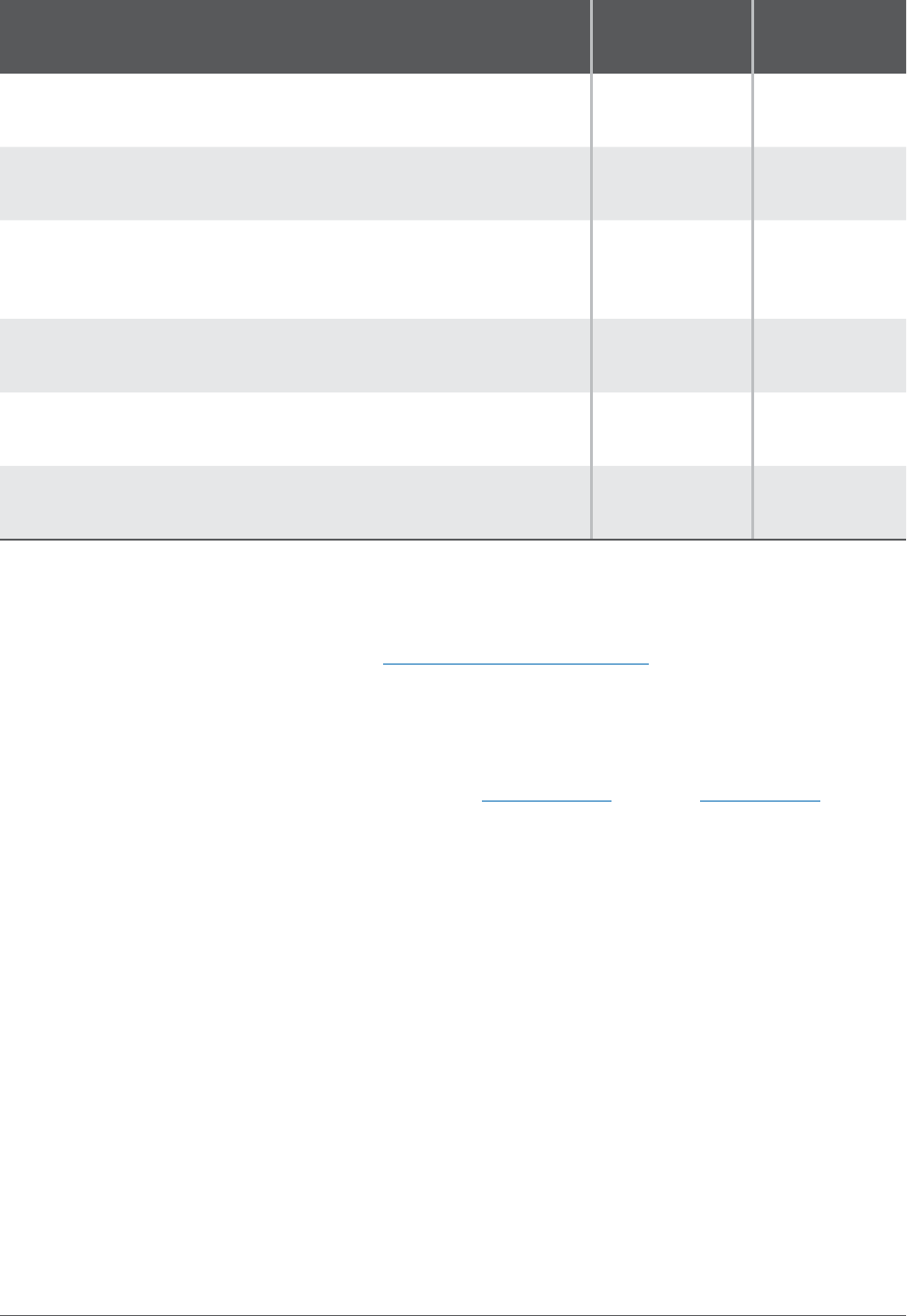
121
Revenue Guide for Washington Cities and Towns | AUGUST 2024
Hypothetical Cannabis Excise Tax Distribution Scenarios Eligible for per
capita share?
Eligible for
retail share?
City allows cannabis production, processing, and retail and has at
least one retailer located within the jurisdiction.
Ye s Ye s
City prohibits cannabis entirely and has no retailers located within
the jurisdiction.
No No
Town took no action to prohibit cannabis, but is small enough that
no cannabis businesses can locate there under state law due to the
buer requirements.
Ye s No
City prohibits cannabis producers and processors but allows
retailers and has at least one retailer located within the jurisdiction.
No Yes
City currently prohibits new cannabis businesses but has existing
retailers that are grandfathered in.
No Yes
City prohibits cannabis retail and has no retailers but allows
cannabis production and processing.
No No
Each year by September 15, the LCB must provide the state treasurer with the annual distribution amount for
each county and city, but according to LCB these annual distribution amounts are estimates only and actual
payments will fluctuate each quarter depending on retail sales. For the most recent legislative appropriations
and distribution estimates, refer to our annual Budget Suggestions publication, released every year at the
end of July.
Use of Revenues
The restrictions on the use of cannabis excise tax revenues are somewhat murky, as there is no clear statute
stating how the funds must be used. However, the notes in RCW 69.50.540 reference RCW 69.50.101 and the
stated intent of I-502, which states that cannabis legalization will “[allow] law enforcement resources to be
focused on violent and property crimes [and generate] new state and local tax revenue for education, health
care, research, and substance abuse prevention.”
Timing of Receipts
Payments are distributed quarterly on the last business day of March, June, September, and December. The
State Treasurer’s Oce distributes both the “per capita” and “retail” shares together in one payment using the
same BARS code.
Table of Contents

122
Revenue Guide for Washington Cities and Towns | AUGUST 2024
CAPRON REFUNDS
Quick Summary
• Island counties and cities receive refunds of state gas taxes and motor vehicle license fees to
compensate for their lack of state highways and state highway investment.
• Only distributed to San Juan and Island counties and their cities.
RCW: 46.68.080
San Juan and Island counties (counties composed entirely of islands), and the cities located within those
counties, receive a share of the state gas tax and vehicle license fees called Capron refunds
55
to compensate
for their lack of state highways and state highway investments (RCW 46.68.080). This is a significant source of
transportation funding for these jurisdictions, and revenues are shared between the cities and the county.
To calculate the gas taxes paid by island residents, the state uses the ratio of vehicle license fees paid by
county residents compared to the total vehicle license fees collected statewide. It then multiplies that ratio by
the total statewide gas tax collections to generate an estimate of gas taxes paid by island residents.
San Juan County
In San Juan County, which has no state highway or physical connection to the mainland, the state refunds all of
the vehicle license fees (RCW 46.17.350 and RCW 46.17.355) and the first 23 cents per gallon of motor vehicle
fuel taxes (RCW 82.38.030(1)) directly or indirectly paid by its residents, minus the state’s administrative costs
of collecting the taxes and fees. The remaining revenue is then distributed to the county treasurer and split
between the county and Friday Harbor based on their proportional assessed valuation.
Island County
In Island County, which has some state highways and a physical connection to the mainland, the state refunds
half of the vehicle license fees (RCW 46.17.350 and RCW 46.17.355) and the first 11.5 cents per gallon of motor
vehicle fuel taxes (half of the tax in RCW 82.38.030(1)) directly or indirectly paid by its residents, minus the
state’s administrative costs of collecting the taxes and fees. The remaining revenue is then distributed to the
county treasurer and split between the county and its cities based on their proportional assessed valuation.
Use of Revenues
Since Capron refunds are paid from the state motor vehicle fund, they must be placed in the city street fund
and used for the same purposes as the motor vehicle fuel tax (see Motor Vehicle Fuel Tax (MVFT)).
55 These are called “Capron” refunds because the original legislation creating these refunds was sponsored by Rep. Victor
J. Capron of San Juan County.
Table of Contents

123
Revenue Guide for Washington Cities and Towns | AUGUST 2024
CITYCOUNTY ASSISTANCE ESSB 6050 DISTRIBUTIONS
Quick Summary
• Portion of the state real estate excise tax (REET) is shared with certain cities that have relatively low
per capita assessed values.
• Originally intended to mitigate the loss of motor vehicle excise tax (MVET) revenues following I-695
in 1999.
• Distribution formula is complicated and depends upon population, assessed value, sales tax receipts,
and historical budget distributions.
• Revenues are unrestricted and may be used for any lawful governmental purpose.
RCW: 82.45.230, 43.08.290
The State of Washington imposes a real estate excise tax (REET) on each sale of real property (see Real Estate
Excise Taxes (REET)), of which the state shares 1.4% of the revenues with certain cities and counties with
relatively low taxing capacity based on a complicated formula (RCW 82.45.230 and RCW 43.08.290). These
distributions are known as “city-county assistance,” or occasionally “distressed city assistance” or “ESSB 6050
distributions” after the original 2005 legislation.
These funds were originally intended to mitigate the loss of motor vehicle excise taxes (MVET), commonly
known as “car tab fees,” that were distributed to local governments. The state used to impose a 2.2% MVET
annually upon the value of each vehicle within the state, of which a significant portion was shared with cities
and counties.
Initiative 695, approved by voters in 1999, repealed the statewide MVET vehicle licensing system and replaced
it with a flat $30 annual license tab fee. This initiative had a significant impact on local governments including
cities, towns, and counties. A good portion of the MVET was used to equalize the disparity between smaller
jurisdictions that did not meet statewide averages for assessed property values or retail sales tax income. At
the beginning of 2000, some cities saw a reduction in general fund revenues as high as 60%. The initiative
was later ruled unconstitutional, but the state legislature retained the intent of the initiative and maintained the
reduced car tab fees.
To compensate for the loss of MVET, the state legislature appropriated a portion of the state REET revenues to
support “local government assistance” for the aected entities, also known as “MVET backfill.” During the 2005
legislative session, the legislature adopted ESSB 6050 establishing the current city-county assistance program.
Because the city-county assistance program depends upon actual real estate sales, this revenue source can
be somewhat volatile during economic downturns. When the statewide real estate market is strong, there
are sucient revenues to fund the entire distribution. But if the market is weaker, there is often not enough
revenue to fund the entire distribution, and each city or county will see its distribution reduced proportionately.
Eligibility and Distribution Formula
The formula for distributing city assistance funds is rather complicated. A city’s eligibility depends upon its per
capita assessed valuation, as shown in the table below.
Table of Contents

124
Revenue Guide for Washington Cities and Towns | AUGUST 2024
City Assistance Funding Eligibility
City/town population Only eligible if city’s per capita assessed value is:
, or less Less than 2x the statewide average for all cities
Greater than , Less than the statewide average for all cities
The exact distribution amount each eligible city receives depends upon its population, per capita assessed
value, per capita “first half” sales tax receipts (see “Basic” Sales Tax/First Half-Cent) and streamlined sales tax
mitigation payments (which cities and towns no longer receive), and historical “MVET backfill” distributions from
the 2004-2005 state biennial budget.
The key terms to understand are:
• 2005 MVET backfill: The local government assistance moneys (if any) received by each city in state fiscal
year 2005 under section 721, Ch. 25, Laws of 2003 1st special session (amended state budget).
• Property tax equalization: For cities with an assessed value (AV) less than 55% of the per capita average
for all cities, an amount determined by subtracting the city’s per capita AV from 55% of the statewide AV,
dividing that amount by 1,000, and multiplying the result by the city’s population.
• Sales tax equalization: The amount of money required to increase a city’s combined per capita sales
tax receipts from the “first half” sales tax plus per capita streamlined sales tax mitigation payments to a
designated percentage of the weighted “first half” per capita average for all cities statewide.
No city may receive more than $100,000 (in 2005 dollars) plus inflation, and any city that incorporates after
August 1, 2005 is not eligible. The exact formulas are summarized below. Note that the sales tax equalization
thresholds are slightly dierent depending on the city’s population, and that the MVET backfill only applies to
cities with a population of 5,000 or less.
City Assistance Distribution Formulas
City/town population Amount received
5,000 or less
Per capita AV less than 2x the statewide average
Greater of:
• % sales tax equalization,
• % property tax equalization, or
• 2005 MVET backfill
Not to exceed $100,000 (2005 dollars) plus inflation
Greater than 5,000
Per capita AV less than the statewide average
Greater of:
• % sales tax equalization, or
• % property tax equalization
Not to exceed $100,000 (2005 dollars) plus inflation
If there are not enough state REET revenues to fund the entire distribution, then each city’s individual distribution
will be reduced proportionately. If there are more than enough revenues to fund the entire distribution, the
excess funds will be distributed on a per capita (population) basis to all eligible cities that have imposed the
Table of Contents

125
Revenue Guide for Washington Cities and Towns | AUGUST 2024
full 0.5% “second half” sales tax (see “Optional” Sales Tax/Second Half-Cent). Any city or town that has not
imposed the full 0.5% “second half” will still receive its regular city assistance distribution but is not eligible
to receive any excess funds.
For the most recent distribution estimates, refer to our annual Budget Suggestions publication, released each
year at the end of July.
Use of Revenues
City-county assistance revenues are unrestricted and may be used for any lawful governmental purpose.
Timing of Receipts
Payments are distributed quarterly on the last business day of March, June, September, and December. The
actual legislation requires the funds to be distributed on January 1, April 1, July 1, and October 1. However,
the State Treasurer’s Oce regularly distributes funds to local governments on the last business day of
the month, so in order to meet these deadlines the funds are distributed on the last business day of the
preceding month.
Table of Contents

126
Revenue Guide for Washington Cities and Towns | AUGUST 2024
CRIMINAL JUSTICE DISTRIBUTIONS
Quick Summary
• Five separate programs:
– High Crime for certain cities with crime rates above 125% of the state average.
– Population for all cities and towns on a per capita basis, with each city receiving a minimum of
$1,000 no matter how small its population.
– Special Programs for all cities and towns on a per capita basis, with revenues used for
innovative law enforcement, at-risk children and child abuse victims, or domestic violence
programs.
– Contracted Services for any city or town that contracts for the majority of its law enforcement
services.
– Violent Crime for certain cities with violent crime rates above 150% of state average.
• Revenues are restricted to specified criminal justice purposes.
RCW: 82.14.320, 82.14.330
There are two separate criminal justice distributions for cities, created by RCW 82.14.320 and 82.14.330 . Each
program originally (in state fiscal year 2000) appropriated a total of $4.6 million, to be increased each July by
the “fiscal growth factor” set forth in RCW 43.135.025. The fiscal growth factor is the average annual growth in
state personal income for the prior ten fiscal years.
The two statutes together contain five separate distribution programs:
• High Crime (RCW 82.14.320) for certain cities with crime rates above 125% of the state average
• Population (RCW 82.14.330(1)(a)(ii)) for all cities and towns on a per capita (population) basis
• Special Programs (RCW 82.14.330(2)(a)(ii)) for all cities and towns on a per capita (population) basis,
with revenues used for innovative law enforcement, at-risk children and child abuse victims, or domestic
violence programs
• Contracted Services (RCW 82.14.330(2)(a)(i)) for any city or town that contracts for the majority of its law
enforcement services
• Violent Crime (RCW 82.14.330(1)(a)(i)) for certain cities with violent crime rates above 150% of the state
average
High crime is the largest single distribution program, since the total distribution for high crime (contained in
RCW 82.14.320) is equal to the combined distributions of the other four programs (which are all contained in
RCW 82.14.330).
Eligibility and Distribution Formulas
A brief summary of the distribution formulas and eligibility follows. For more details, as well as the most recent
distribution estimates, refer to our annual Budget Suggestions publication, released each year at the end of July.
Table of Contents

127
Revenue Guide for Washington Cities and Towns | AUGUST 2024
High Crime: Distributed on the basis of crime rates and population to any city with a crime rate over 125% of
the annual statewide average that also:
• Has levied the full 0.5% “second half” sales tax (see “Optional” Sales Tax/Second Half-Cent) or has
imposed the additional 0.5% real estate excise tax in lieu of the second half (see REET in Lieu of “Second
Half” Sales Tax), AND
• Has a per capita yield from the “first half” sales tax (see “Basic” Sales Tax/First Half-Cent) that is less than
150% of the average statewide per capita yield.
30% of the high crime funds are distributed on a per capita (population) basis to eligible cities with a crime rate
greater than 175% of the statewide average, although no city may receive more than 50% of that amount. The
remaining money is distributed on a per capita basis to all eligible cities with a crime rate greater than 125% of
the statewide average.
Population: Distributed to all cities on a per capita (population) basis, with each city receiving a minimum of
$1,000 no matter how small its population.
Special Programs: Distributed to all cities on a strictly per capita (population) basis.
Contracted Services: Distributed on a strictly per capita (population) basis to all cities that contract with another
governmental agency for the majority of their law enforcement services. Cities that qualify for this distribution
must notify the Department of Commerce (DOC) by November 30 to receive distributions for the following
year. Cities are responsible for notifying DOC for any changes regarding these contractual relationships. Any
cities that are added to or removed from this list will only impact distributions for the next calendar year, and no
adjustments will be made retroactively.
Violent Crime: Distributed on a strictly per capita (population) basis to all cities with a three-year violent crime
rate (per 1,000 population) above 150% of the three-year statewide average. No city may receive more than
$1.00 per capita. Any moneys remaining undistributed at the end of each calendar year must be distributed to
the criminal justice commission to reimburse participating city law enforcement agencies with 10 or fewer full-
time commissioned patrol ocers for the cost of temporarily replacing each ocer who is enrolled in basic law
enforcement training as provided in RCW 43.101.200.
Use of Revenues
All criminal justice distributions are restricted and may only be used for the following purposes:
High Crime: All revenues must be used for criminal justice purposes as defined in RCW 82.14.320 and may not
supplant or replace existing funding. “Criminal justice purposes” are defined as:
[A]ctivities that substantially assist the criminal justice system, which may include circumstances where
ancillary benefit to the civil justice system occurs, and which includes domestic violence services such as
those provided by domestic violence programs, community advocates, and legal advocates, as defined
in RCW70.123.020, and publications and public educational eorts designed to provide information and
assistance to parents in dealing with runaway or at-risk youth.
Special Programs: All revenues must be used for innovative law enforcement strategies, programs to help
at-risk children or child abuse victims, and programs to reduce the level of domestic violence or to provide
counseling for domestic violence victims. While these funds must be spent in these specific areas, there is no
Table of Contents

128
Revenue Guide for Washington Cities and Towns | AUGUST 2024
requirement for how much must be spent in each area. The city’s entire distribution could be spent in only one
of these areas if the city wishes.
Population and Violent Crime: All revenues must be used for criminal justice purposes as defined in RCW
8.14.330(1)(c) and may not supplant or replace existing funding. The definition is the exact same as for the High
Crime program (see previous), except that revenues may not be used for publications and public educational
eorts designed to provide information and assistance to parents in dealing with runaway or at-risk youth.
Contracted Services: While the statute does not specifically state that the revenues are restricted to the
provision of law enforcement services, it is most certainly implied. The statute requires a contract between the
city and another government agency for law enforcement in order to receive a per capita distribution of this
restricted resource.
It is worth noting that the statutory restrictions on use of all of the monies distributed under RCW 82.14.330 are
additionally subject to review by the state auditor and should it be determined that the use does not comply
with the criteria outlined above the city will become ineligible to receive future distributions until the use of the
moneys are either justified or repaid to the state general fund.
Timing of Receipts
All criminal justice payments are distributed quarterly, on the last business day of January, April, July, and October.
Table of Contents

129
Revenue Guide for Washington Cities and Towns | AUGUST 2024
FIRE INSURANCE PREMIUM TAX
Quick Summary
• Distributed to all cities with a pre-LEOFF firefighters’ pension fund, based on their proportionate
number of paid firefighters.
• Revenues are restricted and must be used for the firefighters’ pension fund.
RCW: 41.16.050
RCW 41.16.050 requires each municipality that had a regularly organized full-time fire department with paid
firefighters prior to the establishment of the Law Enforcement Ocers’ and Fire Fighters’ Retirement System
(LEOFF) on March 1, 1970 to establish a firefighters’ pension fund. This fund is to consist of all bequests, gifts,
or donations given or paid to the municipality for the firefighters’ pension fund; a proportional share of the
state tax on fire insurance premiums (described below); property taxes collected under the provisions of RCW
41.16.060 (see Regular Levy (General Fund)); interest on the investments of the fund; and any contributions
made by firefighters themselves.
The state collects a 2% tax on the premiums of all insurance policies written (RCW 48.14.020). Of the tax
collected on fire policies and the fire component of homeowner’s and commercial multi-peril policies, 25% is
distributed to cities and fire districts that have firefighters’ pension funds (RCW 41.16.050).
Eligibility and Distribution Formula
Fire insurance premium taxes are distributed to all cities with a pre-LEOFF firefighters’ pension fund. The
distribution to each city is based on its proportionate share of paid firefighters, a number known as the “ratio
value.” Each year on or before January 15, all cities, towns, and fire districts with a pre-LEOFF firefighters’
pension fund must certify to the State Treasurer their number of paid firefighters.
Use of Revenues
Fire insurance premium tax revenues are restricted and must be used for the firefighters’ pension fund as
established by chapter 41.16 RCW.
Timing of Receipts
The Oce of Insurance Commissioner (OIC) certifies the fire insurance premiums collected by March 31, and
distributions are made in one lump sum each year on the last business day of May.
Table of Contents

130
Revenue Guide for Washington Cities and Towns | AUGUST 2024
LIQUOR DISTRIBUTIONS
Quick Summary
• Distributed to all cities and towns on a per capita basis.
• All cities and towns receive two separate distributions:
– Liquor profits: Flat distribution from liquor licensing fees. Revenues are partially restricted –
at least 2% must be used for a drug or alcohol treatment program and the remaining 98% is
unrestricted and may be used for any lawful governmental purpose.
– Liquor excise: Depends on actual liquor sales. Revenues are partially restricted – at least 2%
must be used for a drug or alcohol treatment program and at least 20.23% must be used for
public safety programs. The remaining 77.77% is unrestricted and may be used for any lawful
governmental purpose.
RCW: 82.08.160, 82.08.170 – Liquor excise
66.24.065 – Liquor profits
All cities and towns receive a portion of state liquor revenues. There are two separate liquor distributions:
“liquor profits” and “liquor excise.”
Liquor excise is a small share of the state’s excise tax on liquor sales and varies each year depending on actual
liquor sales.
Liquor profits is an allocation from the liquor revolving account for liquor licensing fees charged to distributors
and retailers, and it will remain the same each year unless changed by the legislature.
56
The total distribution
is the same as what cities received during “comparable periods” prior to December 8, 2011 and the passage of
Initiative 1183, which privatized liquor sales, plus an additional distribution for the purpose of enhancing public
safety programs. The “comparable periods” were determined by the Oce of Financial Management to be
December 2010, March 2011, July 2011, and September 2011.
Eligibility and Distribution Formulas
Both liquor excise and liquor profits are distributed to all cities on a strictly per capita (population) basis.
In addition, “border areas” (any city, town, or unincorporated area within seven miles of the Canadian border)
receive an additional liquor profits distribution based on per capita law enforcement spending, border-crossing
trac totals, and border-related crime statistics (RCW 66.08.195 and .196).
For the most recent distribution estimates, refer to our annual Budget Suggestions publication, released every
year at the end of July.
56 Prior to 2012, all liquor stores in Washington were state-run, and the state received direct liquor profits in addition to
excise tax revenues. However, Initiative 1183 in 2011 privatized liquor sales. The state still charges an excise tax on liquor sales,
but it no longer receives liquor profits. Instead, the state now collects revenue in the form of license fees from distributors and
retailers. However, the Liquor and Cannabis Board (LCB) continues to call these liquor licensing funds “liquor profits.”
Table of Contents

131
Revenue Guide for Washington Cities and Towns | AUGUST 2024
Use of Revenues
• Liquor excise: At least 2% of liquor excise revenue must be used for an alcohol or drug addiction
program under RCW 71.24.555. The remaining 98% is unrestricted and may be used for any lawful
governmental purpose.
• Liquor profits: At least 2% of liquor excise revenue must be used for an alcohol or drug addiction program
under RCW 71.24.555. In addition, at least 20.23% must be used for “enhancing public safety programs.”
57
The remaining 77.77% is unrestricted and may be used for any lawful governmental purpose.
Timing of Receipts
Payments are distributed quarterly, but liquor excise and liquor profits are distributed according to a
dierent schedule:
• Liquor excise: Distributed on the last business day of January, April, July, and October.
• Liquor profits: Distributed on the last business day of March, June, September, and December.
57 This is because the total liquor profits distribution to cities, counties, and border areas for the “comparable periods prior
to December 8, 2011” was $39,438,000. To this amount, the legislature added an extra $10 million for “enhancing public safety
programs” (RCW 66.24.065). This results in a total liquor profits distribution of $49,438,000, of which $10 million (just under
20.23%) must be used for enhancing public safety programs. As a result, each city and town must spend at least 20.23% of its
distribution for enhancing public safety programs.
Table of Contents

132
Revenue Guide for Washington Cities and Towns | AUGUST 2024
MOTOR VEHICLE FUEL TAX MVFT
Quick Summary
• Distributed to all cities and towns on a per capita basis.
• Total distributions depend on amount of gas taxes collected statewide.
• Revenues are restricted and must be used for streets, roads and highways.
• Cities must use at least 0.42% for pedestrian, equestrian, or bicycle trails, unless such amount would
be $500 or less per year.
RCW: 46.68.090, 46.68.110
The motor vehicle fuel tax (MVFT), or gas tax, is the single largest state shared revenue source for cities and towns,
and it has been consistently distributed for decades. (See RCW 46.68.090 and RCW 46.68.110.) MVFT revenues
are distributed to all cities, towns, and counties as a percentage of actual state fuel tax revenues received.
Gas taxes in Washington are assessed in cents per gallon, which means that MVFT distributions depend on the
number of gallons sold, not the price per gallon. Like all state shared revenues, these distributions could be
changed in future legislative sessions. However, MVFT has not had a history of legislative changes because all
transportation revenues are recorded within the motor vehicle fund (rather than the state general fund) and are
restricted to transportation purposes (Art II, Section 40 State Constitution).
Eligibility and Distribution Formula
All cities and towns receive MVFT distributions on a strictly per capita (population) basis. For the most recent
distribution estimates, refer to our annual Budget Suggestions publication, released each year at the end of July.
Use of Revenues
The revenues must be placed in a designated city street fund and used for the following highway or street
purposes (RCW 47.24.040):
• Salaries and wages;
• Material, supplies, or equipment;
• Purchase or condemnation of right-of-way;
• Engineering;
• Any other proper highway or street purpose in connection with the construction, alteration, repair,
improvement, or maintenance of any city street or bridge, or viaduct or underpassage along, upon, or
across such streets; and/or
• Planning, accommodation, establishment, or maintenance of pedestrian, equestrian, or bicycle trails within
an existing highway right-of-way or severed by the highway (RCW 47.30.030 and RCW 47.30.060).
Any MVFT expenditures may be made independently or in conjunction with any federal, state, or county funds.
Table of Contents

133
Revenue Guide for Washington Cities and Towns | AUGUST 2024
!
Each city is required to spend at least 0.42% of its MVFT funds during each state fiscal year
(July 1 to June 30) on pedestrian, equestrian, or bicycle trails, unless 0.42% would amount to
$500 or less (RCW 47.30.050). In other words, this requirement applies to any city that receives
more than approximately $119,047 in MVFT revenue per year. Cities also have the option to
place the funds in a capital reserve or special fund to accumulate these resources, so long as
the funds are used for paths or trails and used within 10 years.
Timing of Receipts
MVFT revenues credited to cities and towns are subject to a deduction (RCW 46.68.110 (1) – (3)) of 2.83% for
state transportation administration and oversight of federal-aid programs, transportation studies and use in the
small city pavement and sidewalk account. The remaining MVFT collections are distributed monthly, on the last
business day of each month.
If the state does not spend all of the deducted funds, the remaining unexpended funds from the federal-
aid program administration and transportation studies will be distributed to all cities and towns in the next
biennium and any remaining small city pavement and sidewalk funds will be used for cities and towns with
populations less than 5,000 in odd-numbered years for maintenance, repair and resurfacing of streets.
Table of Contents

134
Revenue Guide for Washington Cities and Towns | AUGUST 2024
MULTIMODAL FUNDS AND INCREASED MVFT
Quick Summary
• Distributed to all cities and towns on a per capita basis.
• Direct appropriations from the state transportation fund; do not depend on actual fuel sales.
• Revenues are restricted:
– Multimodal funds may be used for any transportation purpose.
– Increased MVFT funds must be used for street or highway purposes (including eligible
pedestrian, equestrian, or bicycle trails).
RCW: 46.68.126
All cities and towns receive a share of the increases to the state multimodal funds and increased motor vehicle
fuel tax (“increased MVFT”) passed by the legislature in 2015 (RCW 46.68.126). Unlike the regular MVFT
distributions (see Motor Vehicle Fuel Tax (MVFT)), the multimodal distributions and increased MVFT funds are
direct appropriations from the “connecting Washington” account established within the state motor vehicle fund.
These distribution amounts are not adjusted for inflation and will remain the same each year unless changed
by the state legislature. Unlike regular MVFT distributions, these allocations are not impacted by actual fuel tax
collections or transportation licensing fees.
Eligibility and Distribution Formula
Multimodal and “increased MVFT” funds are distributed to all cities and towns on a strictly per capita
(population) basis. For the most recent distribution estimates, refer to our annual Budget Suggestions
publication, released each year at the end of July.
Use of Revenues
These transportation revenues are restricted as follows:
• Multimodal funds: May be spent on any transportation purposes (RCW 47.66.070).
• Increased MVFT: May only be spent on “proper road, street, and highway purposes” (RCW 46.68.070),
including pedestrian, equestrian, or bicycle trails meeting the criteria of RCW 47.30.030.
Timing of Receipts
Payments are distributed quarterly, on the last business day of March, June, September, and December.
Table of Contents

135
Revenue Guide for Washington Cities and Towns | AUGUST 2024
PUBLIC UTILITY DISTRICT PUD PRIVILEGE TAX
Quick Summary
• The state imposes a 2% excise tax, plus 0.02% per kilowatt-hour of self-generated energy, on all
public utility districts (PUDs) in lieu of property taxes.
• Revenues are shared with counties, cities, and towns.
• Revenues are unrestricted and may be used for any lawful government purpose.
RCW: 54.28.020(1)
All property owned by public utility districts (PUDs), like all other government-owned property, is exempt
from property taxes. However, since 1941 public utility districts (PUDs) have been subject to an excise
tax in lieu of property taxes. This tax is levied for the privilege of operating facilities for generating and
distributing electricity.
The state imposes an excise tax rate of 2% of the gross revenue derived from the sale of distribution of power,
plus 0.02% per kilowatt-hour
58
of the wholesale value of self-generated energy for resale or distribution to
consumers by a district (RCW 54.28.020(1)). These revenues are shared with counties and other local taxing
districts as described below.
There is also an additional 0.14% excise tax on the PUD’s gross revenue (RCW 54.28.020(2)), but those
revenues are deposited to the state general fund and are not shared with local governments.
This tax is computed and collected by the Department of Revenue. Of the portion under RCW 54.28.020(1)
that is shared with local governments, 41.6% of the revenues are deposited to the state general fund,
primarily for the benefit of public schools (RCW 54.28.040 and RCW 54.28.050(1)). The remainder of the 2%
base excise tax is distributed to the county or counties in proportion to the gross revenue from sales made
within each county, while the 0.02% kilowatt-hour tax is distributed to the county or counties in which the
generating facilities are located.
The county treasurer, in turn, must further distribute those funds to the county general fund, county road
district, and each city or town within the county
59
according to the manner the county legislative body deems
“most equitable” (RCW 54.28.090). However, the statute specifies that each city and town within the county
must receive an amount equal to at least 0.75% of the PUD’s gross revenues received from the sale of
electricity within that city or town.
There is a separate excise tax for certain thermal electric generating facilities located on a federal reservation
under RCW 54.28.025, which has a dierent population-based revenue-sharing formula under RCW 54.28.055.
The thermal generating facilities tax is distributed to counties, cities, library districts, and fire protection districts.
58 Rather than “0.02% per kilowatt-hour,” the statute actually reads “five percent of the first four mills per kilowatt-hour.” A
“mill” is an older term referring to 1/1,000th of a currency unit. Four mills is equivalent to 4/1,000, or .004. Five percent (.05) of
.004 equals 0.0002 or 0.02%.
59 The statute says the county must distribute the money to “each taxing district in the county, other than school districts.”
RCW 54.28.010 defines “taxing district” to mean counties, cities, towns, school districts, and road districts.
Table of Contents

136
Revenue Guide for Washington Cities and Towns | AUGUST 2024
Use of Revenues
PUD privilege tax revenues are unrestricted and may be used for any lawful governmental purpose. RCW
54.28.100 simply reads, “all moneys received by any taxing district shall be used for purposes for which state
taxes may be used under the provisions of the state constitution.”
Timing of Receipts
The state treasurer distributes these revenues to the respective counties during the month of June each year
(RCW 54.28.040 and RCW 52.28.050), and the county distributes the city’s portion shortly thereafter.
Table of Contents

137
Revenue Guide for Washington Cities and Towns | AUGUST 2024
Other Revenue Sources
FRANCHISE FEES
Quick Summary
• Franchise agreements allow utility providers to install and maintain equipment within rights-of-way.
• Franchise fees are generally limited to the recovery of administrative costs.
• Exception is cable TV, which may be assessed an annual fee up to 5% of gross revenues, minus
certain non-monetary in-kind contributions.
RCW: 35.21.860
Franchise agreements are contracts between the city and public or private utility providers that allow the
utility providers to use the city’s rights-of-way to deliver their services. A franchise agreement allows the utility
provider to install, maintain, and repair utility infrastructure within the right-of-way while minimizing interference
with public use of the right-of-way. Typically, these agreements last for 10 to 20 years or longer.
Cities may impose franchise fees on utility providers to recoup the costs of administering the franchise. RCW
35.21.860 limits electricity, natural gas, and telephone franchise fees to actual administrative expenses.
These franchise fees are not revenue generators as they are in some states. In addition, cities and towns may
impose franchise fees to recover administrative costs on sewer and water.
60
A reasonable franchise fee may be
imposed on solid waste providers.
Cable TV Franchise Fees
Cable television franchise agreements are governed by federal law rather than state law and are negotiated
with the cable company. Cable TV franchise fees may be levied at a rate up to 5% of gross revenues from the
franchise area every year, regardless of the administrative costs (47 U.S.C. §542(a) and (b)).
However, eective September 26, 2019, cities must count most non-monetary “in-kind” contributions toward
the maximum 5% fee due to a new Federal Communications Commission order (FCC 19-80). There is an
exception for in-kind contributions for public, educational, or governmental (PEG) channel capital costs, which
are not counted toward the 5% cap. However, ongoing PEG operations and maintenance costs are not exempt
and must be counted toward the 5% cap. Appeals and further litigation on this issue are expected.
Use of Revenues
Cable TV franchise fees are unrestricted and may be used for any lawful governmental purpose. All other
franchise fees are intended to recover administrative costs only.
60 City of Lakewood v. Pierce Cty., 106 Wn. App. 63, 23 P.3d 1, (2001)
Table of Contents

138
Revenue Guide for Washington Cities and Towns | AUGUST 2024
IMPACT FEES GROWTH MANAGEMENT ACT GMA
Quick Summary
• Fee charged to developers to mitigate the impacts on infrastructure and capital facilities because of
increased demand resulting from new development.
• Revenues are restricted and may only be used for streets, parks, schools, and/or fire protection.
• May only be imposed by counties planning under the Growth Management Act.
• Must generally be expended within 10 years of receipt.
• Does not require voter approval.
RCW: 82.02.050 – .110
Impact fees are one-time charges assessed by a local government against real estate developers to help pay
for new or expanded public facilities and infrastructure that will directly address the increased demand for
services created by new development.
RCW 82.02.050 – .110 authorize any city or town fully planning under the Growth Management Act (GMA) to
impose impact fees for:
• Public streets and roads
• Publicly owned parks, open space, and recreation facilities
• School facilities
• Fire protection facilities
Impact fees may be approved by the legislative body and do not require voter approval. Any jurisdiction that
is not fully planning under GMA is not authorized to impose impact fees under these statutes.
Use of Revenues
Impact fees help mitigate the impacts of growth associated with a specific development area. Impact fees may
only be imposed for “system improvements” – public capital facilities within the city’s capital facilities plan that
meet all three of the following criteria (see WAC 395-196-850):
• Are designed to provide service to the community at large,
• Are reasonably related to the new development, and
• Will benefit the new development.
Impact fees cannot be used to fund operating and maintenance costs or private capital facilities. The impact
fees cannot exceed a proportionate share of the system improvements, and cities cannot rely solely on impact
fees to fund the improvements and must use additional funding sources (RCW 82.02.050).
RCW 82.02.090 states that the revenues may only be used for:
Table of Contents

139
Revenue Guide for Washington Cities and Towns | AUGUST 2024
• Transportation: Transportation impact fees must be used for “public streets and roads.” It is unclear
whether these impact fees may be used to fund multimodal improvements, but such use is probably
acceptable as long as the transportation improvement is located within the street right-of-way (such as
bus lanes, sidewalks, or bike lanes). However, it is doubtful that impact fees could pay for transportation
equipment (such as buses or vanpool vehicles) or projects outside the right-of-way. And since impact
fees are restricted to capital facilities, they cannot be used to fund operations and maintenance costs or
transportation studies.
• Parks: Park impact fees must be used for “publicly owned parks, open space, and recreation” facilities.
Many cities in Washington only charge park impact fees to residential construction or the residential portion
of a mixed-use building/development, but a few also charge commercial or industrial developments, since
employees (and not just residents) can directly benefit from nearby parks and recreational facilities.
• Schools: School impact fees must be used for “school facilities.” Typically, school impact fees apply only
to residential construction or the residential portion of a mixed-use building/development. School districts
are responsible for expending the impact fees, but only cities, towns, and counties are authorized to collect
them. As a result, school impact fees require cooperation between school districts and the cities, towns,
or counties administering the impact fee program, typically through interlocal agreements that specifically
identify each party’s role.
• Fire Protection: Fire impact fees must be used for “fire protection facilities.” Since state law provides no
further statutory or administrative definitions, some jurisdictions have taken it upon themselves to define
“fire protection facilities” in their own municipal codes.
Impact fees must be expended or encumbered within 10 years of receipt, unless there is an “extraordinary and
compelling reason” for fees to be held longer, which must be documented in writing by the governing body
(RCW 82.02.070).
Impact fees may not be used to correct existing deficiencies. For instance, a city may use fire impact fees to
help build a new fire station serving the new development, but it may not use the impact fees to upgrade an
outdated fire station elsewhere in the city that will not directly serve the development.
However, an impact fee ordinance “may provide for the imposition of an impact fee for system improvement
costs previously incurred by a county, city, or town to the extent that new growth and development will be
served by the previously constructed improvements provided such fee shall not be imposed to make up for
any system improvement deficiencies” (RCW 82.02.060(8)). For example, if a public works maintenance facility
was designed and constructed to address both existing deficiencies (say, 60%) and future growth needs (say,
40%), impact fees could be used to pay for up to 40% of the debt service on the bond issued for that facility.
Determining Impact Fee Rates
Local governments must establish a rate schedule for each type of development activity that is subject to
impact fees, specifying the fee to be imposed for each type of system improvement (RCW 82.02.060). The
schedule must be based on a formula or other calculation that incorporates, among other things:
• The cost of public facilities necessitated by new development;
• The cost of existing public facilities improvements;
• Adjustments to the cost of the public facilities for past or future payments made or reasonably anticipated
to be made by new development;
Table of Contents

140
Revenue Guide for Washington Cities and Towns | AUGUST 2024
• The availability of other public funding sources; and
• The method by which public facilities improvements were financed.
These rate studies should be updated periodically to reflect changes in the cost of facilities. While local
governments are not required to hold a public hearing before adopting or increasing impact fees, it may be
prudent to do so, especially if the decision might be controversial.
Practice Tip: Some jurisdictions automatically adjust their impact fees by indexing them to an
inflation index, which protects future revenues and can potentially reduce or eliminate the need
for the legislative body to go through a formal rate-setting process again. Examples of inflation
indexes include, but are not limited to, the Consumer Price Index (CPI-U or CPI-W) and the
WSDOT Transportation Construction Cost Index.
Local governments may provide exemptions for low-income housing and other development activities with
“broad public purposes” (RCW 82.02.060(3)). Some jurisdictions reduce or waive certain types of impact fees
for certain types of development, either to incentivize development or because the development places no
significant burden on existing facilities. However, any exemption for school impact fees that would otherwise
be distributed to a school district must first be approved by the school district.
Timing of Receipts
Developers must generally pay impact fees to the city before construction begins. The money must be
earmarked and retained in a special interest-bearing account, with a separate account for every type of
facility for which the fees are collected (transportation, fire, etc.). Each city that imposes impact fees must
provide an annual report on each of the accounts showing the source and amount of revenues, as well as the
improvements financed with the revenue (RCW 82.02.070).
However, eective 2016, cities, towns, and counties must adopt an impact fee deferral system for small single-
family residential developments, allowing developers to pay the fees after construction instead of beforehand
(RCW 82.02.050(3)).
RCW 82.02.080 requires each jurisdiction to refund the impact fees, plus earned interest, to the developer if:
• The impact fee is not expended or encumbered within 10 years of collection;
• The jurisdiction ends its impact fee program and the funds have not yet been expended or encumbered; or
• The developer does not proceed with the proposed development activity and requests a refund.
Table of Contents

141
Revenue Guide for Washington Cities and Towns | AUGUST 2024
IMPACT FEES LOCAL TRANSPORTATION ACT LTA
Quick Summary
• Fee charged to developers to mitigate the impacts on infrastructure and capital facilities because of
increased demand resulting from new development.
• Revenues are restricted and may only be used for transportation.
• May be imposed by any city, but typically impact fees are assessed under the Growth Management
Act rather than LTA.
• Does not require voter approval.
RCW: Chapter 39.92 RCW
Impact fees are one-time charges assessed by a local government against real estate developers to help pay
for new or expanded public facilities and infrastructure that will directly address the increased demand for
services created by new development.
Any city, county, or transportation benefit district – regardless of whether or not it is planning under the
Growth Management Act (GMA) – may impose transportation impact fees under the Local Transportation Act
(LTA), chapter 39.92 RCW. These impact fees may be approved by the legislative body and do not require
voter approval.
LTA was enacted in 1988 but was followed just two years later by GMA, which provided much broader authority
for “fully planning” GMA jurisdictions to impose impact fees for parks, schools, and fire protection in addition to
transportation (see Impact Fees – Growth Management Act (GMA)).
Use of Revenues
LTA impact fees may only be used to mitigate o-site transportation impacts that are a direct result of the
proposed development, pursuant to a local transportation program that complies with RCW 39.92.030 and
RCW 39.92.040.
Table of Contents

142
Revenue Guide for Washington Cities and Towns | AUGUST 2024
INVESTMENTS INTEREST EARNINGS
Quick Summary
• Cities and towns may invest excess funds not immediately needed for operations.
• Interest earned on the investments may be used by the fund that invested, for purposes allowed
within that fund.
• Earnings may or may not be restricted, depending on the revenue source.
RCW: 35.39.034 and 35A.40.050
RCW 35.39.034 and RCW 35A.40.050 allow cities to invest excess monies to generate additional income.
Funds may either be invested in individual investment portfolios, or multiple funds may be commingled into a
common investment portfolio.
State law provides various restrictions on what types of investments can be made. If your city will be investing
excess funds, you should consider developing and adopting an investment policy to spell out your city’s goals
and responsibilities. While the entire purpose of investing funds is to generate a return on the investment
(yield), local governments should be careful to prioritize liquidity (the ability to access funds when needed
without loss) and safety of the investment over yield. For guidance, see MRSC’s Investment Policies webpage.
Use of Revenues
All income derived from such investments must be apportioned and used for the benefit of the participating
funds, or – unless otherwise restricted by law – the city may adopt an ordinance or resolution that authorizes
the apportionment of the investment earnings to the general fund. If the interest has been transferred into the
general fund, it may be used for any lawful governmental purpose.
However, RCW 35.39.034 provides that “funds derived from the sale of general obligation bonds or revenue
bonds or similar instruments of indebtedness shall be invested, or used in such manner as the initiating
ordinances, resolutions, or bond covenants may lawfully prescribe.”
Although there is no such proviso in RCW 35A.40.050, bond covenants and debt provisions still determine the
allocation of interest from bonds. If you have questions, check with your bond counsel.
In addition, it has generally been interpreted by SAO that interest earnings on excess “restricted” resources are
to be used for the benefit of the restricted fund. See the BARS manuals, section 3.2.3 on Sweeping Interest and
Investment Returns into General Fund (see Cash Basis manual and GAAP manual).
Table of Contents

143
Revenue Guide for Washington Cities and Towns | AUGUST 2024
PARKING METERS
Quick Summary
• Any city may impose parking meter fees.
• Revenues may be used for administrative costs, parking studies, and acquisition and maintenance of
o-street parking facilities.
WAC: 308-330-650
Any city may impose parking meter fees, which can promote parking turnover, ration space where demand
exceeds supply, provide short-term parking spaces for shopping or personal errands, improve trac circulation,
and provide revenue for the city.
There is no specific statute authorizing parking meter charges, but in 1941 the state Supreme Court upheld a
Spokane ordinance providing for the installation and maintenance of parking meters for regulating trac on
the city’s streets as a valid exercise of the city’s police power (Kimmel v. City of Spokane, 7 Wn.2d 372 (1941)).
Use of Revenues
Parking meter revenues should be used to cover the administrative costs associated with meter maintenance
and installation, fee collection, and enforcement by city ocials. Revenue in excess of this amount may be used
for parking studies and acquisition and operation of o-street parking facilities (see WAC 308-330-650).
61
61 In Kimmel v. City of Spokane, 7 Wn.2d 372 (1941), the Court did not concern itself directly with the revenue-producing
character of parking meters. The Court said that it would not look behind the regulatory purpose declared in the ordinance,
in the absence of evidence tending to show that the declaration was false and that the ordinance was actually a revenue
measure.
Table of Contents

144
Revenue Guide for Washington Cities and Towns | AUGUST 2024
SURPLUS TRANSFERS FROM UTILITIES AND LIDS
Quick Summary
• In limited situations, cities may transfer surplus funds from municipal utilities or a local improvement
district (LID) guaranty fund into the general fund.
• Surplus transfers require financial analysis of both current and future needs.
RCW: 35.37.020 and 35.27.510
Cities and towns are frequently seeking revenue sources to mitigate declining income, which often leads to a
discussion of whether the fund balances in city-owned utility funds or, for some, the local improvement district
(LID) guarantee funds are considered surplus and therefore available for transfer to the general fund.
The first consideration is, what is the definition of “surplus”? The Merriam-Webster dictionary defines surplus
as “the amount that remains when use or need is satisfied” or “an excess of receipts over disbursements.” The
SAO BARS manuals (see Cash Basis and GAAP) define surplus in Item 3.9.3.10 as follows:
The amount by which operating revenues exceeds operating expenses. When determining the available
surplus in a proprietary fund, the following must first be deducted from the proprietary fund balance:
capital asset replacement cost, future capital expansions and improvements and any legally restricted
resources.
Surplus Transfers from Municipal Utilities
Municipal utilities should not generally have funds in excess of the amount they need to provide their
services. Rates are supposed to be set at a level necessary to cover costs, which include operations,
maintenance, debt service and capital asset replacement, expansion, and improvements. Municipal utilities
are not intended to generate profits above their costs, but occasionally there may be a time when a utility
finds itself with surplus funds. When that happens, a city may be able to transfer this surplus from the
utility fund to the general fund. We say this cautiously because there are very few circumstances where a
municipally owned utility would have a surplus.
RCW 35.37.020 and RCW 35A.37.010(7) provide that every city and town having a population of less than 20,000
must transfer any utility fund surplus to the general fund, except for any funds the council finds necessary for
extending or repairing the infrastructure, paying debt service, or establishing a sinking fund. Note that these
statutes also require that any deficit in a utility fund must be covered by a transfer from the general fund.
Towns also have a second statute, RCW 35.27.510, that authorizes transfer of a utility surplus under the
following conditions: if the utility service is free of debt, if a depreciation fund satisfactory to the state auditor
has been created, if rates are set at the lowest possible level, and if the fixing of rates is governed by contract
with a utility service supplier, then the mayor and council may transfer surplus funds with a unanimous vote.
Since most towns do not contract for their utility services, this additional statute is generally not applicable.
Surplus Transfers from LID Guaranty Funds
Cities and towns frequently have local improvement districts (LID) that require that the city establish a local
improvement guaranty fund for the purpose of guaranteeing the payment of bonds and other obligations of
the LID.
Table of Contents

145
Revenue Guide for Washington Cities and Towns | AUGUST 2024
A city may be able to transfer assets from an LID guaranty fund to the general fund if the city or town treasurer
has certified that the LID guaranty fund has sucient funds on hand to meet all outstanding obligations of the
fund that are anticipated to be presented (RCW 35.54.095). Any transfer may not reduce the remaining cash in
the guaranty fund to less than 10% of the outstanding obligations.
Table of Contents

146
Revenue Guide for Washington Cities and Towns | AUGUST 2024
TOURISM PROMOTION AREA FEES
Quick Summary
• Any city or town may form a tourism promotion area and impose charges up to $2 per room per
night. Eective June 11, 2020 to July 1, 2027 the city/town may impose an additional fee up to $3
per room per night.
• Does not apply to lodging businesses with less than 40 rooms, temporary medical housing, or any
other lodging business, unit, or guest designated as exempt by the legislative body.
• May establish up to six dierent lodging classifications, with dierent rates in each.
• Revenues must be used for tourism promotion to increase the number of tourists to the area.
• Does not require voter approval, but requires support from local lodging businesses and may be
repealed if a majority of lodging businesses submit a written petition.
RCW: Chapter 35.101
The legislative body of any city, town, or county may form a tourism promotion area (TPA) to generate revenue
for tourism promotion (chapter 35.101 RCW).
Tourism promotion area fees are dierent than lodging taxes (see Lodging Tax (Hotel/Motel Tax)) and may be
imposed in addition to lodging taxes. Forming a tourism promotion area requires support from the local lodging
industry, and the petition to form the TPA must contain the signatures of people who operate lodging taxes
within the proposed area and who would pay at least 60% of the proposed charges.
A TPA may include the entire city or only a portion, and multiple jurisdictions may establish a joint TPA through
interlocal agreement. In a county with a population of one million or more – currently, only King County – the
TPA must be formed by two or more jurisdictions acting under an interlocal agreement, with the exception of
Federal Way which is authorized to form a TPA by itself.
Within the tourism promotion area, the legislative body may impose a charge of up to $2 per room per night
on lodging businesses with 40 or more rooms. The legislative body may establish up to six dierent lodging
classifications, sometimes referred to as “zones,” with dierent rates in each. The classifications must be based
on geographic location, number of rooms, or room revenue.
The lodging charge does not apply to lodging businesses with less than 40 rooms, temporary medical housing
exempt under RCW 82.08.997, or any lodging business, lodging unit, or lodging guest designated as exempt by
the legislative authority.
The legislative body may impose an additional charge of up to $3 per room per night if it has secured the
signatures of the persons who operate lodging businesses who would pay 60% or more of the proposed
charges. This additional $3 nightly charge expires July 1, 2027. (ESSB 6592, Section 2.)
Any tourism promotion area fee imposed after January 1, 2020 must be repealed if a majority of the lodging
businesses assessed the charges petitions to the legislative body in writing to remove the charge. The
legislative authority may determine the timing of when to remove the charge so that the eective date of the
expiration will not adversely aect existing contractual obligations, not to exceed 12 months. Any fee in place as
Table of Contents

147
Revenue Guide for Washington Cities and Towns | AUGUST 2024
of January 1, 2020 is not subject to this provision unless the jurisdiction increases the charge under Section 2
of ESSB 6592.
Use of Revenue
The revenues must be used “to promote tourism that increases the number of tourists to the area” (RCW
35.101.130).
RCW 35.101.010(4) defines “tourism promotion” as “activities and expenditures designed to increase tourism
and convention business, including but not limited to advertising, publicizing, or otherwise distributing
information for the purpose of attracting and welcoming tourists and operating tourism destination marketing
organizations.”
The city council has sole discretion as to how the revenues will be spent to promote tourism – unlike lodging
taxes, which for many jurisdictions depend on recommendations from the lodging tax advisory committee
(LTAC). However, the city council may appoint an existing advisory board or create a new advisory board to
make recommendations on the use of the TPA revenues if desired.
A “tourist” is defined as follows (RCW 35.101.010(5)):
[A] person who travels for business or pleasure on a trip:
(a) Away from the person’s place of residence or business and stays overnight in paid accommodations;
(b) To a place at least fifty miles away one way by driving distance from the person’s place of residence or
business for the day or stays overnight. However, island communities without land access are exempt from
the mileage requirement under this subsection (5)(b); or
(c) To another country or state outside of the person’s place of residence or business.
The legislative authority may contract with tourism destination marketing organizations or other similar
organizations to administer the operation of the area.
Timing of Receipts
Lodging businesses collect the charges and remit them to the Department of Revenue, which deposits the
revenues into the Local Tourism Promotion Account. The state treasurer distributes money in the account
monthly to the legislative authority on whose behalf the money was collected.
Table of Contents

148
Revenue Guide for Washington Cities and Towns | AUGUST 2024
TRAFFIC AND PARKING FINES
Quick Summary
• State Supreme Court establishes fines for trac infractions, but revenues are shared with city where
infraction occurred.
• Cities can establish their own parking fines.
• Revenues may generally be used for any lawful governmental purpose.
RCW: 46.63.110(3) and others
Trac Infractions
The state Supreme Court establishes the schedule of fines for trac infractions (RCW 46.63.110(3); see
Infraction Rules for Courts of Limited Jurisdiction (IRLJ) Rule 6.2). However, cities share in the revenue from
infractions committed within their boundaries. After the fines are collected by the municipal or district court,
32% of the non-interest money is sent to the state. The remainder may be deposited in any city fund, and most
jurisdictions put this money into the general fund.
The interest is split evenly between the state public safety and education account, the state judicial information
system, the city general fund, and the city general fund to be dedicated to fund local courts.
62
Parking Fines
A city has complete control over setting the fines for any violation of its parking ordinances. IRLJ Rule 6.2(c) states:
This schedule does not apply to penalties for parking, standing, stopping, or pedestrian infractions
established by municipal or county statute. Penalties for those infractions are established by statute or
local court rule, but shall be consistent with the philosophy of these rules.
A city may also charge a fine of up to $25 for failure to pay the parking ticket in the time prescribed by law
(RCW 46.63.110(4)).
Use of Revenues
Trac and parking fines are unrestricted and may be used for any lawful governmental purpose. However,
as noted above a portion of the interest on trac infractions must be deposited to the general fund to fund
local courts.
62 See RCW 3.50.100(5) for municipal courts except Seattle, RCW 35.20.220(5) for the Seattle municipal court, and RCW
3.62.040(6) for district courts.
Table of Contents

149
Revenue Guide for Washington Cities and Towns | AUGUST 2024
TRANSPORTATION BENEFIT DISTRICT VEHICLE LICENSE FEES
Quick Summary
• Any city that has established a transportation benefit district (TBD) may impose a non-voted vehicle
license fee up to $50 or a voted vehicle license fee up to $100.
• Revenues must be used for specified transportation projects.
RCW: 82.80.140
Any city or town may form a transportation benefit district (TBD) under chapter 36.73 RCW to raise revenues
for transportation purposes. TBDs may generate revenue through a variety of means, but the two most popular
funding mechanisms are a voted sales tax up to 10 years and 0.2% (see Transportation Benefit District Sales
Tax ) and a vehicle license fee (“car tab fee”) up to $100 as described below.
Any TBD (or city, if the city has “assumed” the TBD under chapter 36.74 RCW) may impose a vehicle license
fee up to $50 without voter approval, or up to $100 with voter approval (RCW 82.80.140, RCW 36.73.040(3)(b)),
in addition to any vehicle license fees charged by the state. Initiative 976, approved by voters in 2019, would
have eliminated this authority, but the state Supreme Court struck down the initiative as unconstitutional the
following year.
Certain vehicles are exempt under RCW 82.80.140(6), including campers, farm vehicles, mopeds, o-road and
non-highway vehicles, snowmobiles, and private use single-axle trailers.
The TBD vehicle license fee may be imposed in addition to the TBD sales tax if desired, and several
jurisdictions have imposed both concurrently. It is worth noting that these two revenue options are imposed
upon dierent sources – TBD vehicle license fees are paid solely by city residents who own vehicles, while
TBD sales taxes are paid by anyone who makes retail purchases within the city. The amount of revenue a city
can generate with each option will also vary depending on the rates imposed, the local economy, and the
number of registered vehicles.
Non-Voted Vehicle License Fees Up to $50
The district may only impose a non-voted vehicle license fee up to $20 initially. After a $20 fee has been in
eect for at least 24 months, the district may increase the fee up to $40. After a $40 fee has been in eect
for at least 24 months, the district may increase the fee up to the maximum $50. However, the portion of the
fee above $40 is subject to potential referendum as provided in RCW 36.73.065(6), even if your city has not
otherwise adopted powers of initiative and referendum.
If a district imposes or increases its non-voted vehicle license fee that, when combined with fees previously
imposed by another district within its boundaries, exceeds $50, the district must provide a credit so that the
combined vehicle fee does not exceed $50.
Many cities have established non-voted TBD vehicle license fees.
Table of Contents

150
Revenue Guide for Washington Cities and Towns | AUGUST 2024
Voted Vehicle License Fees Over $50
Any vehicle license fee higher than the amounts listed previously, up to a maximum of $100, must be approved by
a simple majority of voters. The measure may be placed on the ballot at any special, primary,
63
or general election.
According to MRSC’s Local Ballot Measure Database, Seattle is the only jurisdiction that has successfully
passed a voted vehicle license fee, and even then its first attempt was unsuccessful. Other jurisdictions that
have unsuccessfully attempted voted vehicle license fees in the past include King County and the cities of
Bremerton, Burien, and Edmonds.
64
Use of Revenues
The revenues may be used for eligible “transportation improvements” listed in a local, regional, or state
transportation plan in accordance with chapter 36.73 RCW. Improvements can range from roads and transit
service to sidewalks and transportation demand management. Construction, maintenance, and operation
costs are eligible.
However, RCW 82.80.140 states that the revenue may not be used for passenger-only ferry improvements
unless the vehicle license fee is approved by voters.
63 RCW 36.73.065(1) states that the tax must be submitted at “a general or special election,” which at first glance might
seem to rule out the August primary election. However, RCW 29A.04.321(2), which establishes the election schedule for local
governments, authorizes the county to call up to four “special elections” each year, including the primary election. So for these
purposes, “special election” includes the primary election.
64 Bremerton, Burien, and Edmonds all attempted voted vehicle license fees in 2008-2009 under prior legislation, when non-
voted fees were capped at $20. The legislation has since been amended to allow non-voted vehicle license fees up to $50.
Table of Contents

151
Revenue Guide for Washington Cities and Towns | AUGUST 2024
UTILITY RATES AND CHARGES
Quick Summary
• Any city that has established a utility must set an appropriate rate to recover cost.
• Revenues must be used for specified utility purpose.
RCW: 35.92 RCW; 35A.80 RCW
Cities and towns frequently own and manage their own water and sewer utility systems, and some also have
stormwater, electric, or garbage utilities. Each of these utilities is considered a “proprietary” activity, which is
to say that it functions as a business activity separate from the general governmental activities. (See chapter
35.92 RCW and chapter 35A.80 RCW regarding municipal utilities.)
This guide is not intended to address the complexities of proper rate-setting but only to speak to the
overarching concepts of utility rates and charges.
Utility Rate Setting
Ideally, all utility rates, system charges, and service fees should be set to recover the cost of operating
the systems, in addition to charging for replacing equipment and adding or expanding facilities to meet
regulations, future service demands, and setting aside for unforeseen events such as natural disasters.
65
Revenues for fees and charges must meet the expenses of the system, in addition to setting aside reserves.
Careful and accurate rate and service fee setting will assure that the utility operates in a fiscally responsible
manner. Consideration should be given to the following areas when setting rates:
• Operating costs (wages, benefits, engineering fees, oce supplies, chemicals, lighting, heat, repairs, and
other daily operations);
• Insurance;
• State and local taxes;
• Debt service (principal and interest);
• Planning and engineering;
• Reserves for improvements, expansions, and upgrades; and
• Reserves for unforeseen events such as natural disasters.
Utility rates should also incorporate the utility’s portion of indirect or “overhead” costs incurred by the city, such
as payroll administration, human resources, information technology, and shared facilities and equipment. See
MRSC’s webpage on Cost Allocation for more guidance on overhead costs.
65 See Uhler v. Olympia, 87 Wash. 1 (1915); Carstens v. Public Utility District No. 1, 8 Wn.2d 136 (1941)
Table of Contents

152
Revenue Guide for Washington Cities and Towns | AUGUST 2024
Use of Revenues
Utility rates and charges are restricted to the use by the utility for its operations, including all of those costs
listed above.
OTHER FEES AND CHARGES
Sprinkled throughout the RCWs is authority for cities to levy fees and charges to cover the cost of providing
services or programs and regulatory activities. For example, fees may be charged for:
• Animal licensing
66
• Concealed pistol license permits
67
• Fireworks retail and display permits
68
• Parks, recreation, and cultural facilities and programs
69
• Processing of development and building permit applications
70
• Public records copying charges
71
• Street use permits
72
This list is not comprehensive, and there are no doubt other examples.
The general guiding principle for these fees and charges is that they may be set at a level that recovers all
the direct and indirect costs associated with the activity, including administrative overhead. (See MRSC’s
webpage on Cost Allocation for guidance to help make sure you are fully and accurately accounting for indirect
or “overhead” costs such as payroll administration, human resources, facility and equipment expenses, and
information technology.)
If fees more than recover costs, they then become more like taxes, and cities need specific statutory authority
to levy taxes.
66 Animal licensing: see RCW 35.23.440(11) for second class cities, RCW 35.27.370(7) for towns, and RCW 35A.82.020 for
code cities.
67 Concealed pistol licenses: see RCW 9.41.070.
68 Fireworks permits: see RCW 70.77.260 and RCW 70.77.555.
69 Parks, recreational, and cultural facilities and programs: see RCW 35.21.020 for cities and towns and RCW 35A.27.010
and RCW 35A.67.010 for code cities.
70 Development and building permit applications: see RCW 19.27.100 and RCW 82.02.020.
71 Copying charges: see RCW 42.56.120.
72 Street use permits: see RCW 35.22.280(7) for first class cities, RCW 35.23.440(33) for second class cities, RCW
35.27.370(4) for towns, and RCW 35A.11.020 for code cities.
Table of Contents

153
Revenue Guide for Washington Cities and Towns | AUGUST 2024
Special Taxing Districts
Cities also have the option to form certain special taxing districts, generally coextensive with the city’s
boundaries, to generate additional revenue or shift funding sources.
In addition, cities can annex into existing library districts and fire protection districts, or join with other fire
protection jurisdictions to form regional fire authorities, all of which can have revenue impacts especially in the
area of property tax levy rates.
Some of the special taxing districts may be organized as completely separate municipal entities – in other
words, the city can “spin o” certain functions like parks, libraries, or fire protection to a separate governmental
entity with its own legislative body and sta. In other cases, the creation of the special taxing district may be
an extension of the city’s existing operations. For instance, a newly formed entity might be a legally separate
municipal entity, but it might be governed by city council in an “independent and ex ocio” capacity. In these
scenarios, the city sta perform the functions of the special taxing district through an interlocal agreement
with the city.
This chapter will briefly describe the various options and their potential revenue implications.
FIRE PROTECTION DISTRICT
Any city with a population of 300,000 or less may annex into a fire protection district within “reasonable
proximity” under chapter 52.04 RCW. Annexation may require voter approval with a simple majority.
As an alternative to annexation, new legislation in 2017 allows any city or town to establish a fire
protection district coextensive with the city’s boundaries (RCW 52.02.160). This is still a new option, and
as of 2022 no city has formed a fire protection district. The formation of the district requires voter approval
with a simple majority unless the district will be initially funded by benefit charges, in which case approval
requires a 60% supermajority.
Fire protection districts are funded primarily by property tax levies up to $1.50 per $1,000 assessed value,
which will impact the city’s general fund levy rate (see Regular Levy (General Fund)).
Other fire protection district funding options including fire benefit charges, EMS levies, multi-year excess
levies for operations and maintenance, and general obligation bonds for capital purposes.
LIBRARY DISTRICT
Any city or town with a population of 300,000 or less may annex into a library district lying contiguous to the
city (RCW 27.12.360). Annexation may require voter approval with a simple majority.
Library districts are funded primarily by a property tax levy up to $0.50 per $1,000 assessed value, which will
impact the city’s general fund levy rate (see Regular Levy (General Fund)).
Table of Contents

154
Revenue Guide for Washington Cities and Towns | AUGUST 2024
METROPOLITAN PARK DISTRICT
Any city or town may form a metropolitan park district (MPD) under chapter 35.61 RCW to manage, control,
improve, maintain, or acquire park and recreation facilities. The formation of an MPD requires voter approval with
a simple majority vote. MPDs are funded primarily by a regular property tax levy up to $0.75 per $1,000 assessed
value, which is approved as part of the initial ballot measure establishing the district.
An MPD may be formed with a separately elected legislative body, or the city council may be designated to
serve in an ex ocio capacity as the board of metropolitan park commissioners if the district’s boundaries are
the same as the city’s.
PUBLIC FACILITIES DISTRICT
Most cities may establish a public facilities district (PFD) under chapter 35.57 RCW for the purpose of
constructing, operating, and maintaining “regional centers,” defined in RCW 35.57.020 as a convention,
conference, or special events center, or any combination of facilities and related parking facilities, whose
construction or rehabilitation costs are at least $10 million including debt service. The formation of a PFD does
not require voter approval, but some PFD revenue sources do require voter approval.
PFDs are funded primarily by sales taxes, user fees and charges, admission and parking taxes, general
obligation bonds, and revenue bonds.
REGIONAL FIRE AUTHORITY
Any city may form a regional fire protection service authority under chapter 52.26 RCW with at least one other
“fire protection jurisdiction” (defined as a city, town, fire district, port district, municipal airport, regional fire
protection service authority, or Indian tribe) within “reasonable proximity.” Forming a regional fire authority
requires voter approval with a simple majority vote unless the district will be initially funded by benefit charges
or 60% voter-approved property taxes, in which case approval requires a 60% supermajority.
Regional fire authorities are funded primarily by property tax levies up to $1.50 per $1,000 assessed value,
which will impact the city’s general fund levy rate (see Regular Levy (General Fund)).
Other regional fire authority funding options including fire benefit charges, EMS levies, general obligation
bonds, and one-year excess O&M levies.
TRANSPORTATION BENEFIT DISTRICT
Any city may establish a transportation benefit district (TBD) to generate revenue for specific transportation
projects (chapter 36.73 RCW). Forming a TBD does not require voter approval, but some revenue options do
require voter approval.
TBD revenue may be used for transportation improvements included in a local, regional, or state transportation
plan (RCW 36.73.015(6)). Improvements can range from roads and transit service to sidewalks and
transportation demand management. Construction, maintenance, and operation costs are eligible.
Table of Contents

155
Revenue Guide for Washington Cities and Towns | AUGUST 2024
The two primary revenue sources for TBDs are a voted sales tax of up to 0.2% with a limit of 10 years (see
Transportation Benefit District Sales Tax) and a vehicle license fee up to $50 (non-voted) or $100 (voted) (see
Transportation Benefit District (TBD) Vehicle License Fees).
Other potential funding sources include a border area fuel tax for TBDs that include a Canadian border
crossing (see Border Area Fuel Tax), general obligation bonds (see G.O. Bond Excess Levies (Capital
Purposes)), one-year excess levies (see Excess Levies (Operations & Maintenance)), vehicle tolls, local
improvement districts, and transportation impact fees (see Impact Fees – Local Transportation Act (LTA), but
note that these impact fees are dierent than the impact fees allowed under the Growth Management Act).
TBDs may either be managed as a separate quasi-municipal entity governed by city council in an
independent and ex ocio capacity, or the TBD powers and authority can be “assumed” by the city under
chapter 36.74 RCW, in which case it will be folded into the city’s transportation operations and cease to be a
legally separate entity.
TBDs may also include other cities and counties, as well as port and transit districts, through interlocal
agreement (RCW 36.73.020(2)).
Table of Contents

156
Revenue Guide for Washington Cities and Towns | AUGUST 2024
Appendices: Major Revenue Sources by
Program Area
This appendix lists the major revenue sources for cities and towns in Washington State, divided into the
following program areas:
• Unrestricted revenues – may be used for any lawful governmental purpose
• Aordable housing
• Arts, science, and cultural programs
• Capital projects and facilities
• Fire and emergency medical services
• Mental health and substance abuse
• Parks and recreation
• Police and criminal justice
• Tourism promotion
• Transportation
• Miscellaneous revenues
Some revenue sources may be used for multiple purposes and are listed here under multiple program areas.
We have also provided a brief summary of each revenue source, the eligible cities, whether or not the funding
source requires voter approval, and the statutory (RCW) citation.
This appendix focuses on general governmental revenues and does not include fees for cost recovery (such as
building permits) or proprietary activities (such as utility charges).
Table of Contents
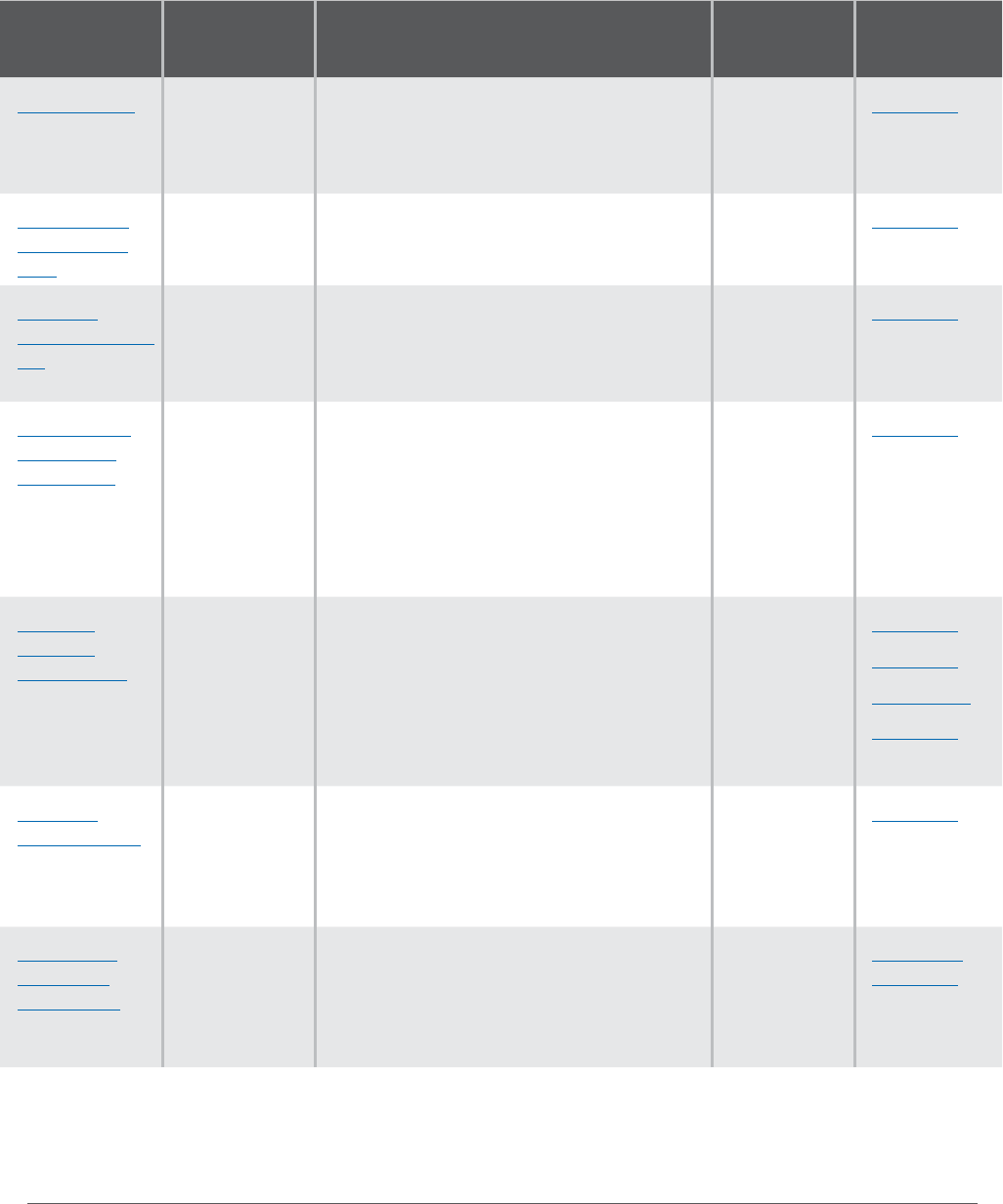
157
Revenue Guide for Washington Cities and Towns | AUGUST 2024
Revenue
source
Eligible
cities
Description Voter
approval?
RCW
Admission Tax Any city Tax of up to % of the admission charge
for various facilities and events. Revenues
may generally be used for any lawful
governmental purpose.
No ..
“Basic” Sales
Tax/First Half-
Cent
Any city Sales tax of .% for any lawful governmental
purpose; revenue shared with county.
No ..()
Brokered
Natural Gas Use
Tax
Any city Use tax upon brokered natural gas sales that
are not otherwise subject to utility tax; rate
must be equivalent to city’s utility tax rate.
Revenues are unrestricted.
No ..
Business and
Occupation
(B&O) Taxes
Any city Tax upon local businesses, usually measured
by the value of products or gross income/
proceeds. Revenues are unrestricted.
No, except
for retail
businesses if
rate exceeds
.% of gross
receipts/
income
..
Business
Licenses/
“Head Taxes”
Any city Normally business license fees are designed
to recoup administrative costs only, but some
cities generate revenue through variable
business license fees based on criteria such
as number of employees, hours worked, type
of business, or square footage. Revenues may
be used for any lawful governmental purpose.
No ..()
..()
A..
..()
Cable TV
Franchise Fees
Any city Fee upon cable television providers of up
to % of their gross revenues (minus certain
in-kind contributions) within the franchise
area. Revenues may be used for any lawful
governmental purpose.
No ..
City-County
Assistance
(ESSB 6050)
Cities with
relatively low
per capita
assessed
values
Quarterly distribution from state to qualifying
cities based on per capita property tax
receipts, per capita sales tax receipts, and
historical MVET backfill. Revenues may be
used for any lawful governmental purpose.
No ..
..
APPENDIX A – UNRESTRICTED REVENUES
The following revenue sources may be used, wholly or partially, for any lawful governmental purpose. However, note
that some of these revenue sources could be partially restricted. In addition, any revenue sources requiring voter
approval must be used in accordance with the purposes stated in the ballot measure, in which case they may be
considered restricted resources rather than unrestricted.
Table of Contents
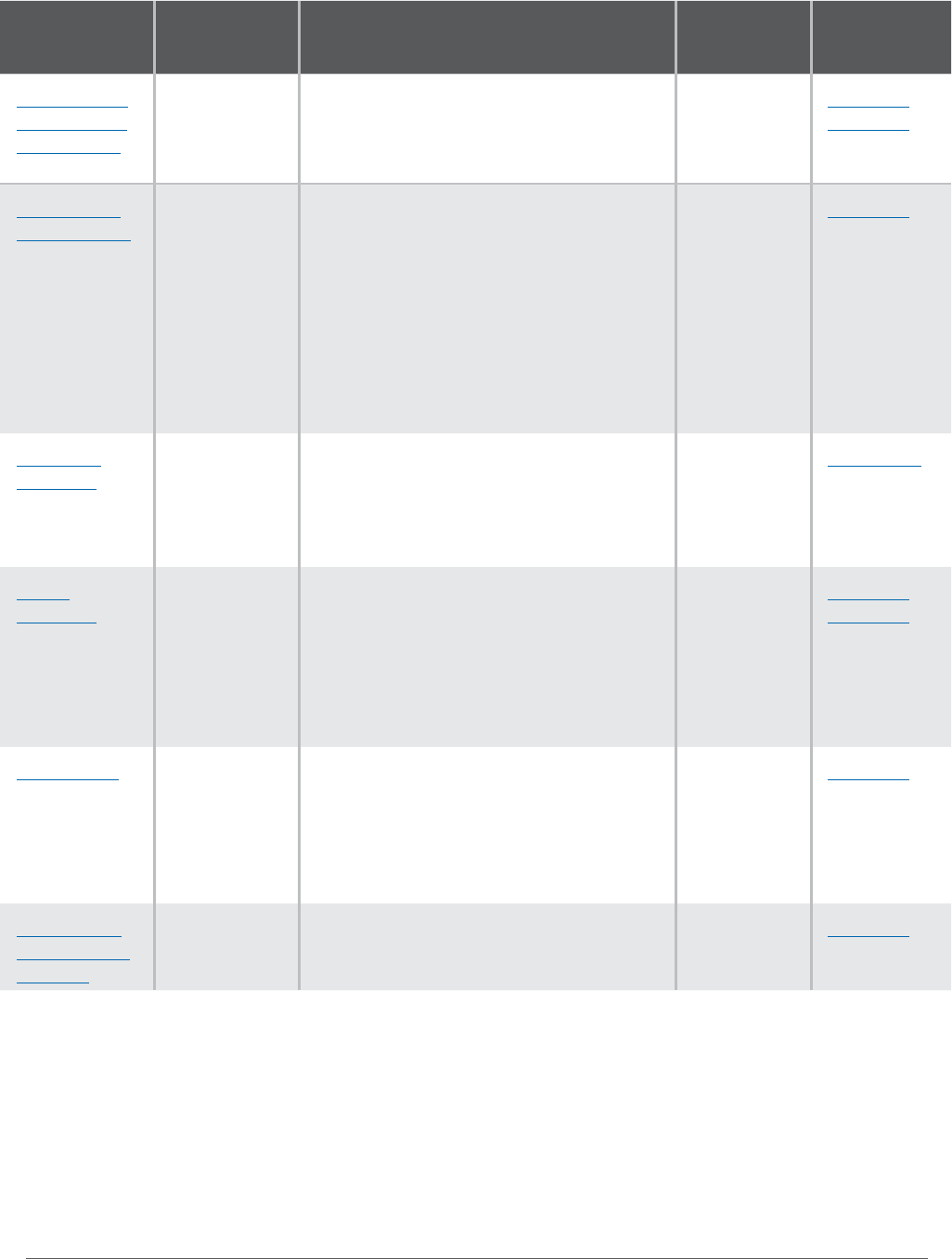
158
Revenue Guide for Washington Cities and Towns | AUGUST 2024
Revenue
source
Eligible
cities
Description Voter
approval?
RCW
Excess Levies
(Operations &
Maintenance)
Any city -year property tax levy; may be used for any
lawful governmental purpose, but revenues
must be spent in accordance with the
purpose(s) specified in the ballot measure.
Yes – %
supermajority
..,
..
Regular Levy
(General Fund)
Any city Primary source of property tax revenue
for cities; may generally be used for any
lawful governmental purpose. Maximum
levy rate varies between $. and $.
depending on whether city is annexed
to a fire/library district, participated in a
regional fire authority, and/or has a pre-
LEOFF firefighters’ pension fund. May also
potentially be increased through “banked
capacity” or levy lid lifts.
No,
except for
levy lid lifts
..()
Leasehold
Excise Tax
Any city Excise tax up to % on most leases of tax-
exempt properties in lieu of property tax;
credited against state and county leasehold
excise taxes. May be used for any lawful
governmental purpose.
No .A.
Liquor
Excise Tax
Any city Quarterly distribution from State Treasurer’s
Oce to all cities based on population.
At least % must be used for approved
drug and alcohol treatment programs and
.% for public safety programs, but
remaining .% may be used for any
lawful governmental purpose.
No ..,
..
Liquor Profits Any city Quarterly distribution from State Treasurer’s
Oce to all cities based on population.
At least % must be used for approved
drug and alcohol treatment program, but
remaining % may be used for any lawful
governmental purpose.
No ..
“Optional” or
“Second Half”
Sales Tax
Any city Sales tax up to .% for any lawful
governmental purposes; for most cities,
revenue is shared with county.
No ..()
Appendix A – Unrestricted Revenues – continued
Table of Contents
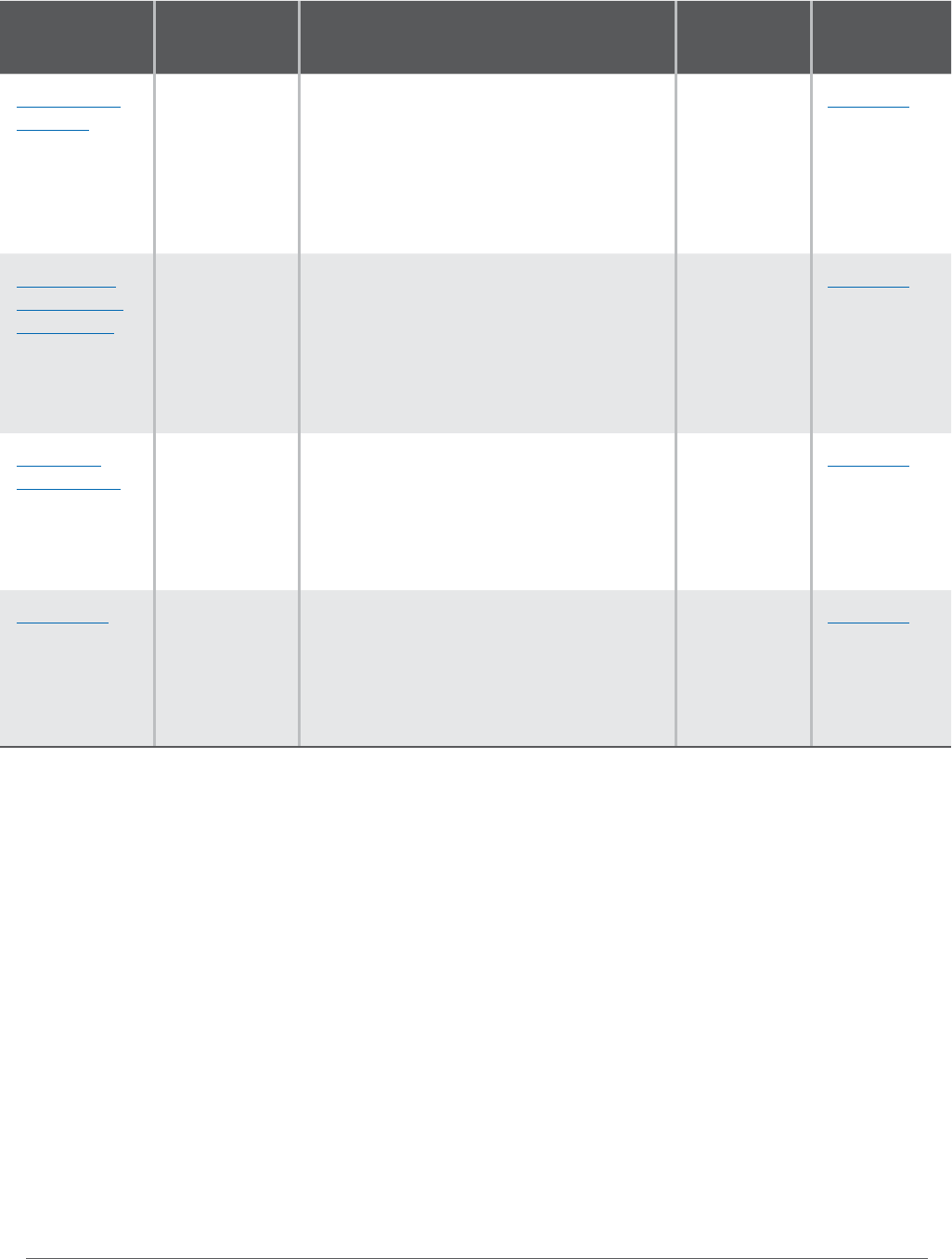
159
Revenue Guide for Washington Cities and Towns | AUGUST 2024
Appendix A – Unrestricted Revenues – continued
Revenue
source
Eligible
cities
Description Voter
approval?
RCW
Public Safety
Sales Tax
Any city, as
long as county
has not
imposed .%
public safety
sales tax
Sales tax up to .%. At least / of
revenues must be used for criminal justice
and/or fire protection purposes; remainder
is unrestricted and may be used for any
lawful governmental purpose. Counties
have similar authority up to .%. Cities
and counties share revenue.
Yes – simple
majority
..
Public Utility
District (PUD)
Privilege Tax
Cities served
by PUDs
PUD properties are exempt from property
taxes, but the state imposes an excise
tax on PUDs to compensate. Revenue is
distributed to counties, which must share
some revenues with cities. Revenues
may be used for any lawful governmental
purpose.
No ..()
Trac and
Parking Fines
Any city State Supreme Court establishes fines
for trac infractions, but revenues are
shared with city where infraction occurred.
Revenues may be used for any lawful
governmental purpose, but a portion must
be dedicated to fund local courts.
No ..()
Utility Taxes Any city Tax upon local utility providers. Maximum
non-voted rate of % of gross operating
revenues for certain utilities; rates higher
than that require voter approval. Revenues
may be used for any lawful governmental
purpose.
No,
unless rate
exceeds %
for certain
utilities
..
Table of Contents

160
Revenue Guide for Washington Cities and Towns | AUGUST 2024
Revenue
source
Eligible
cities
Description Voter
approval?
RCW
Aordable
Housing Levy
Any city Property tax levy up to years and $.
per $, AV to finance aordable housing
for very low-income households and
aordable homeownership for low-income
households.
Yes – simple
majority
..
Aordable
Housing
Sales Tax
Credit
(HB 1406)
Any city that
enacted its
HB
ordinance by
July ,
-year credit of either .% or .%
against the state sales tax, depending on
whether city has a “qualifying local tax” in
place. Revenues may be used for aordable
and supportive housing; cities under
, population may also use revenues
for rental assistance.
No ..
Housing
& Related
Services
Sales Tax
Any city,
as long as
county has not
imposed this
sales tax first
Sales tax up to .% for aordable housing
and related services, including behavioral
health facilities and treatment programs.
Optional ..
Lodging Tax Any city Most cities may impose a tax up to % on the
sale of short-term lodging less than days,
of which % is a credit against the state sales
tax. Revenues must generally be spent for
tourism promotion, but may also be used to
repay debt for aordable workforce housing
near transit stations.
No ..
and
..()
REET 2 Cities fully
planning
under Growth
Management
Act (GMA)
Additional excise tax of .% on real
estate sales; some revenues may be used
for aordable housing and homelessness
through January , .
No,
except for
voluntary
GMA cities
..()
APPENDIX B – AFFORDABLE HOUSING
Table of Contents

161
Revenue Guide for Washington Cities and Towns | AUGUST 2024
Revenue
source
Eligible cities Description
Voter
approval?
RCW
Cultural Access
Program (CAP)
Levy
Any city,
as long as
county has not
imposed this
levy first
Property tax levy up to consecutive
years for nonprofit cultural organizations.
Levy amount may not exceed .% of
taxable retail sales; may not be imposed
concurrently with CAP sales tax.
Yes – simple
majority
84.52.821,
chapter
36.160
Cultural Access
Program (CAP)
Sales Tax
Any city,
as long as
county has not
imposed this
sales tax first
Sales tax of up to .% and consecutive
years for nonprofit cultural organizations;
may not be imposed concurrently with
CAP levy.
Yes – simple
majority
82.14.525,
chapter
36.160
APPENDIX C – ARTS, SCIENCE, AND CULTURAL PROGRAMS
Table of Contents
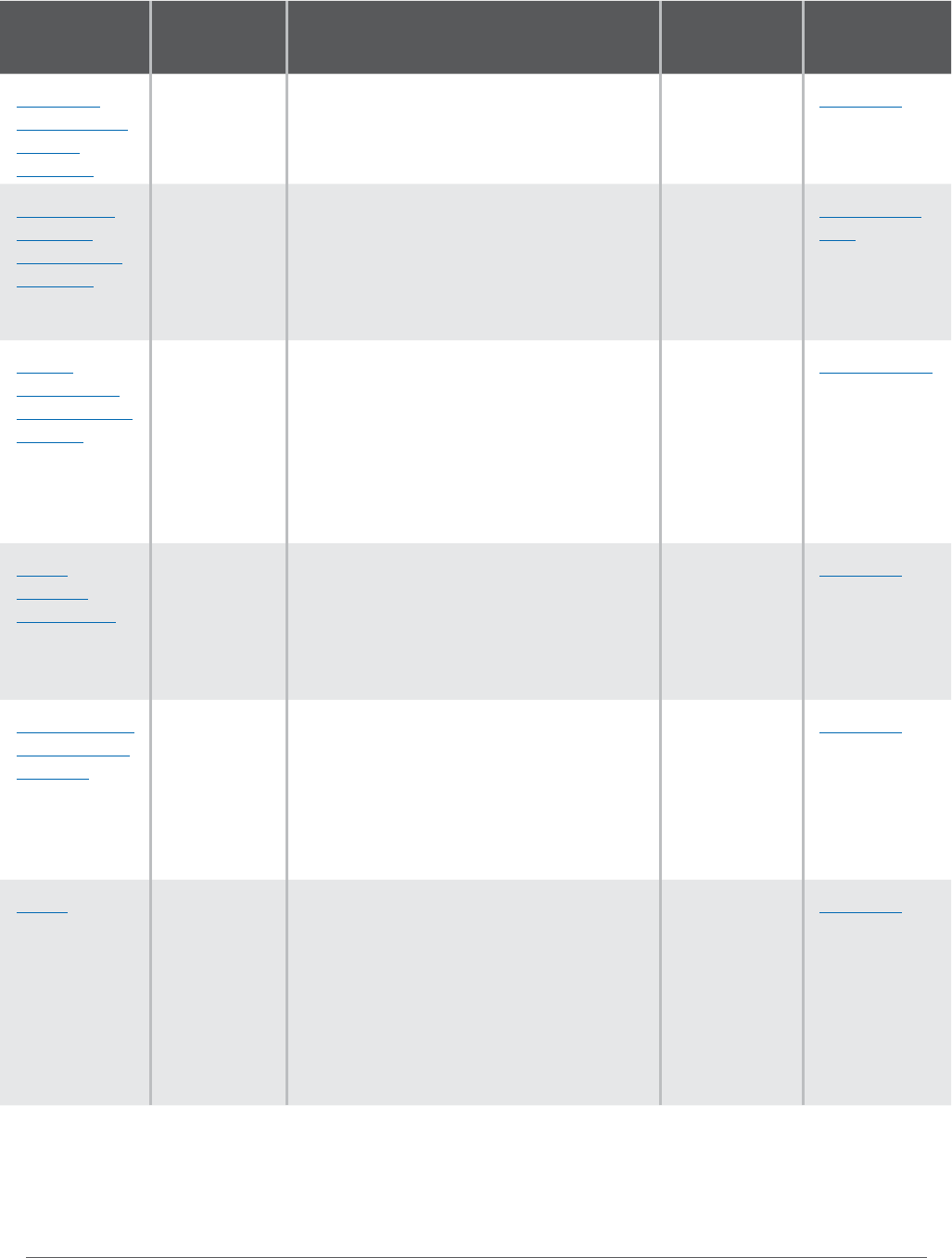
162
Revenue Guide for Washington Cities and Towns | AUGUST 2024
Revenue
source
Eligible
cities
Description Voter
approval?
RCW
G.O. Bond
Excess Levies
(Capital
Purposes)
Any city Multi-year excess property tax levy to repay
unlimited tax general obligation bonds.
Revenues are restricted to capital purposes.
As soon as debt is repaid, excess levies cease.
Yes – %
supermajority
..
Impact Fees
– Growth
Management
Act (GMA)
Cities fully
planning
under GMA
Fee assessed to property developers
to help pay for new or expanded capital
facilities directly addressing the increased
demand created by that development. May
only be imposed for streets, parks, schools,
and/or fire protection.
No .. –
.
Impact
Fees – Local
Transportation
Act (LTA)
Any city Fee assessed to property developers
to help pay for new or expanded
transportation facilities directly addressing
the increased demand created by that
development. However, the only cities
we are aware of that have imposed
transportation impact fees have done so
under GMA, not LTA.
No Chapter .
Public
Facilities
District (PFD)
Any city Any city may form a PFD to construct,
operate, or maintain “regional centers”
whose construction or operating costs
are at least $ million. Revenue sources
include sales taxes, user fees, admission
and parking taxes, and bonds.
Some
revenue
sources
require voter
approval
..
REET in Lieu of
“Second Half”
Sales Tax
None –
All cities/
towns have
imposed
.% “second
half” sales
tax
Excise tax up to .% on real estate
sales; revenues are restricted in the same
manner as REET .
No ..()
REET 1 Any city Excise tax of .% on real estate sales.
May be used for certain capital projects,
depending on city’s population and whether
it fully plans under the Growth Management
Act (GMA). For cities fully planning under
GMA, eligible projects must be listed within
the comp plan capital facilities element. May
also be used for limited O&M costs, with
additional reporting requirements.
No ..()
APPENDIX D – CAPITAL PROJECTS AND FACILITIES
Table of Contents

163
Revenue Guide for Washington Cities and Towns | AUGUST 2024
Appendix D – Capital Projects and Facilities – continued
Revenue
source
Eligible
cities
Description Voter
approval?
RCW
REET 2 Cities fully
planning
under
Growth
Management
Act (GMA)
Additional excise tax of .% on real
estate sales. May be used for certain capital
transportation, water/storm/sewer, and park
capital purposes listed in the city’s capital
facilities plan (CFP). May also be used for
limited REET purposes or capital facility
maintenance, with additional reporting
requirements. Use of revenues is somewhat
more restrictive than REET .
No,
except for
voluntary
GMA cities
..()
Table of Contents
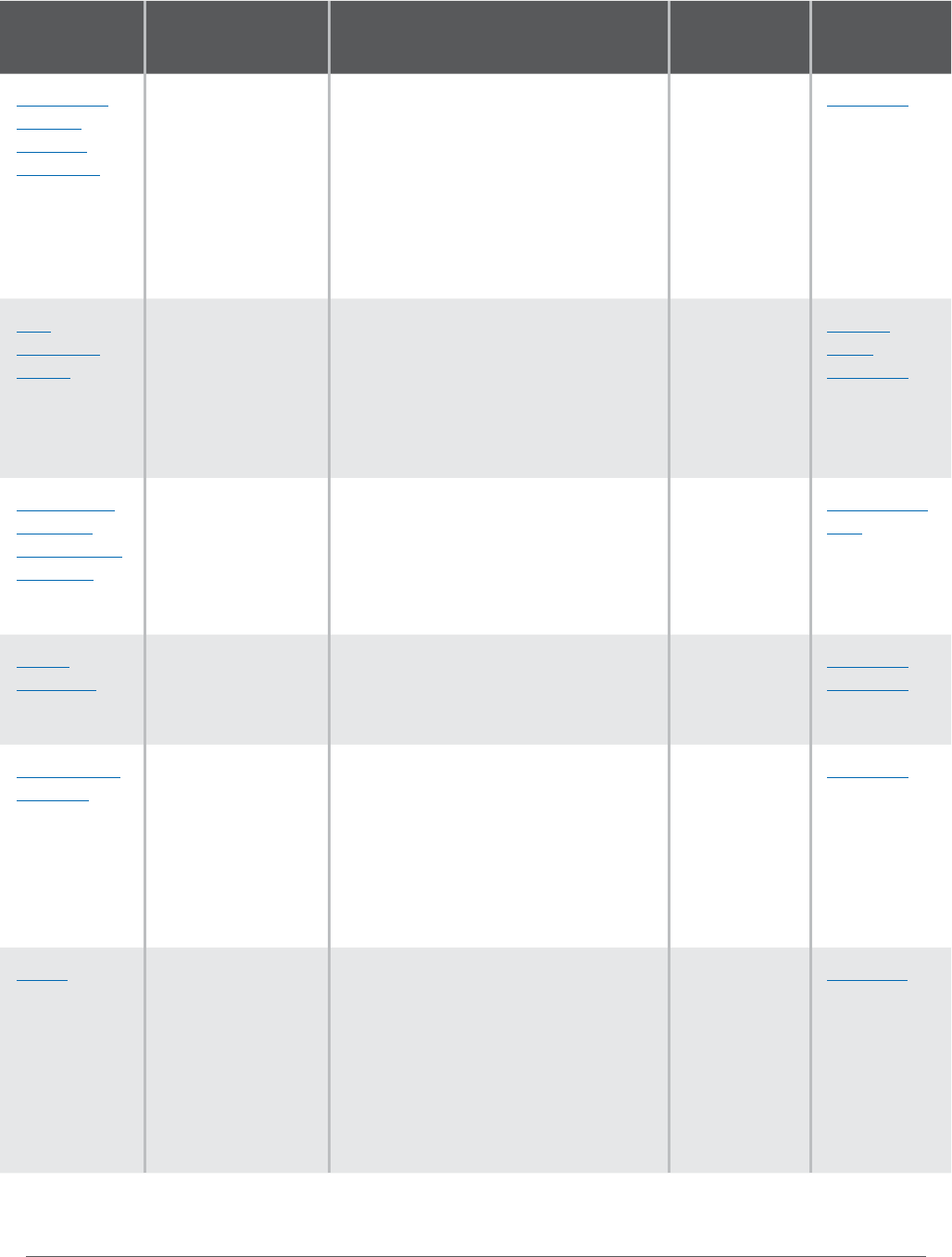
164
Revenue Guide for Washington Cities and Towns | AUGUST 2024
Revenue
source
Eligible cities Description Voter
approval?
RCW
Emergency
Medical
Services
(EMS) Levy
Any city, as long
as it is not located
within a county that
has imposed the
maximum $.
EMS levy or another
taxing district that
has imposed an
EMS levy
Property tax levy up to $. per
$, AV for emergency medical
care or services. May be imposed for
years, years, or permanently, with
diering voter approval requirements.
May also be imposed by counties, fire
districts, public hospitals, and other
taxing districts.
Yes – simple
majority
or %
supermajority
..
Fire
Protection
District
Most cities Any city may form a new fire protection
district, or any city with a population
of , or less may annex to
an existing district. Revenue source
include benefit charges and property
taxes up to $. per $, AV; may
impact city’s general fund levy rate.
Yes – simple
majority
unless
funded by
taxes/fees
requiring %
approval
chapter
.,
..
Impact Fees
– Growth
Management
Act (GMA)
Cities fully planning
under GMA
Fee assessed to property developers
to help pay for new or expanded capital
facilities directly addressing the increased
demand created by that development.
May only be imposed for streets, parks,
schools, and/or fire protection.
No .. –
.
Liquor
Excise Tax
Any city Quarterly distribution from State
Treasurer’s Oce to all cities based on
population. At least .% must be
used for public safety programs.
No ..,
..
Public Safety
Sales Tax
Any city, as long
as county has not
imposed .%
public safety sales
tax
Sales tax up to .%. At least / of
revenues must be used for criminal
justice and/or fire protection purposes;
remainder is unrestricted and may
be used for any lawful governmental
purpose. Counties have similar
authority up to .%. Cities and
counties share revenue.
Yes – simple
majority
..
REET 1 Any city Real estate excise tax up to .%
– may be used for specified capital
purposes/projects, including fire
protection facilities. For cities fully
planning under GMA, eligible projects
must be listed within the comp plan
capital facilities element. May also be
used for limited O&M costs, subject to
additional reporting requirements.
No ..()
APPENDIX E FIRE AND EMERGENCY MEDICAL SERVICES SERVICES
Table of Contents
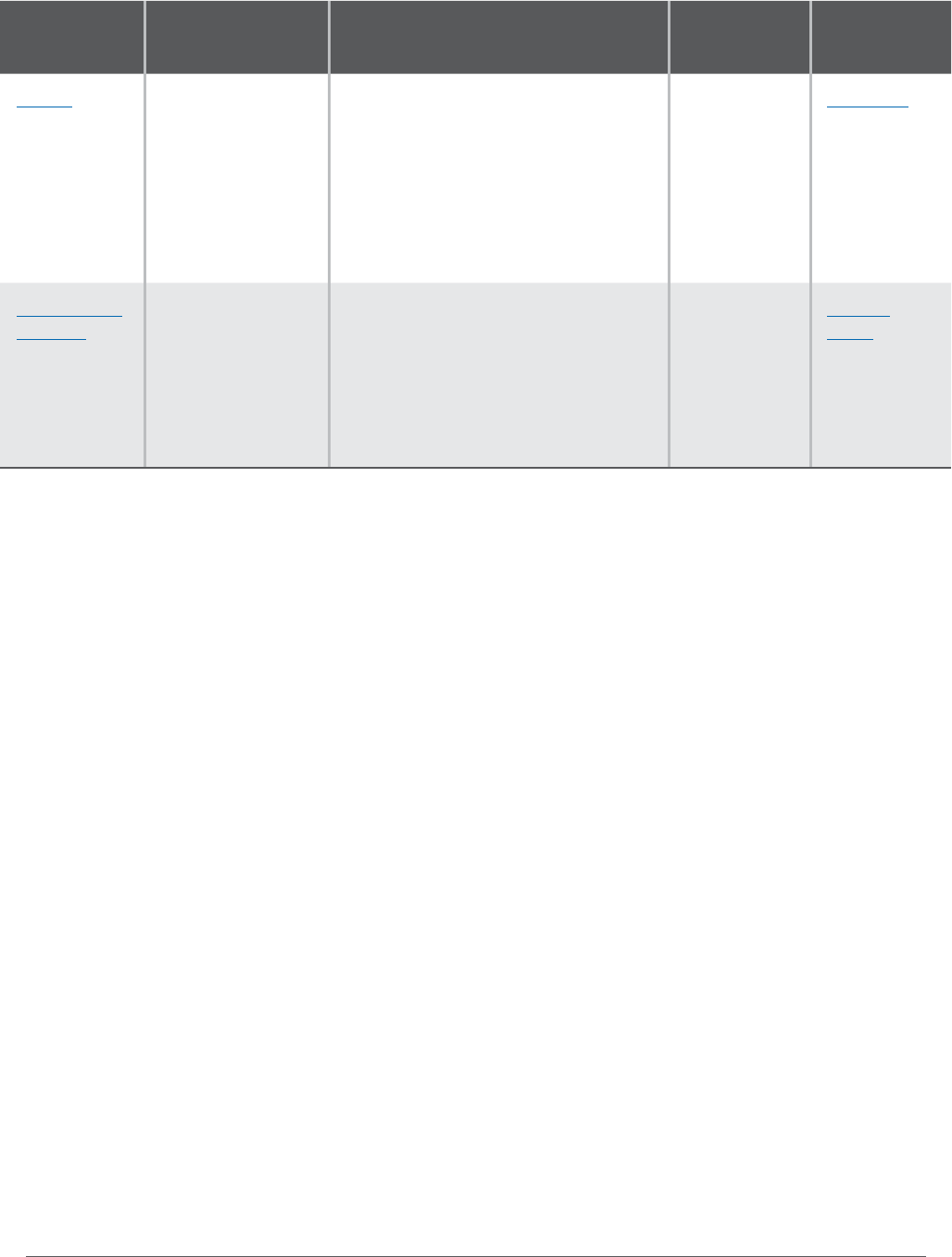
165
Revenue Guide for Washington Cities and Towns | AUGUST 2024
Appendix E – Fire and Emergency Medical Services – continued
Revenue
source
Eligible cities Description Voter
approval?
RCW
REET 2 Cities fully planning
under GMA
Additional real estate excise tax up
to .%. Fire protection facilities
are not an outright permitted use for
REET funds. However, fire protection
facilities are eligible under REET , and
some REET funds may be used for
REET purposes subject to additional
reporting requirements.
No,
except for
voluntary
GMA cities
..()
Regional Fire
Authority
Any city Any city may join with another fire
protection jurisdiction to form a regional
fire authority. Revenue sources include
benefit charges and property taxes up
to $. per $, AV; will impact
city’s general fund levy rate.
Yes – simple
majority
unless
funded by
taxes/fees
requiring %
approval
chapter
.
Table of Contents
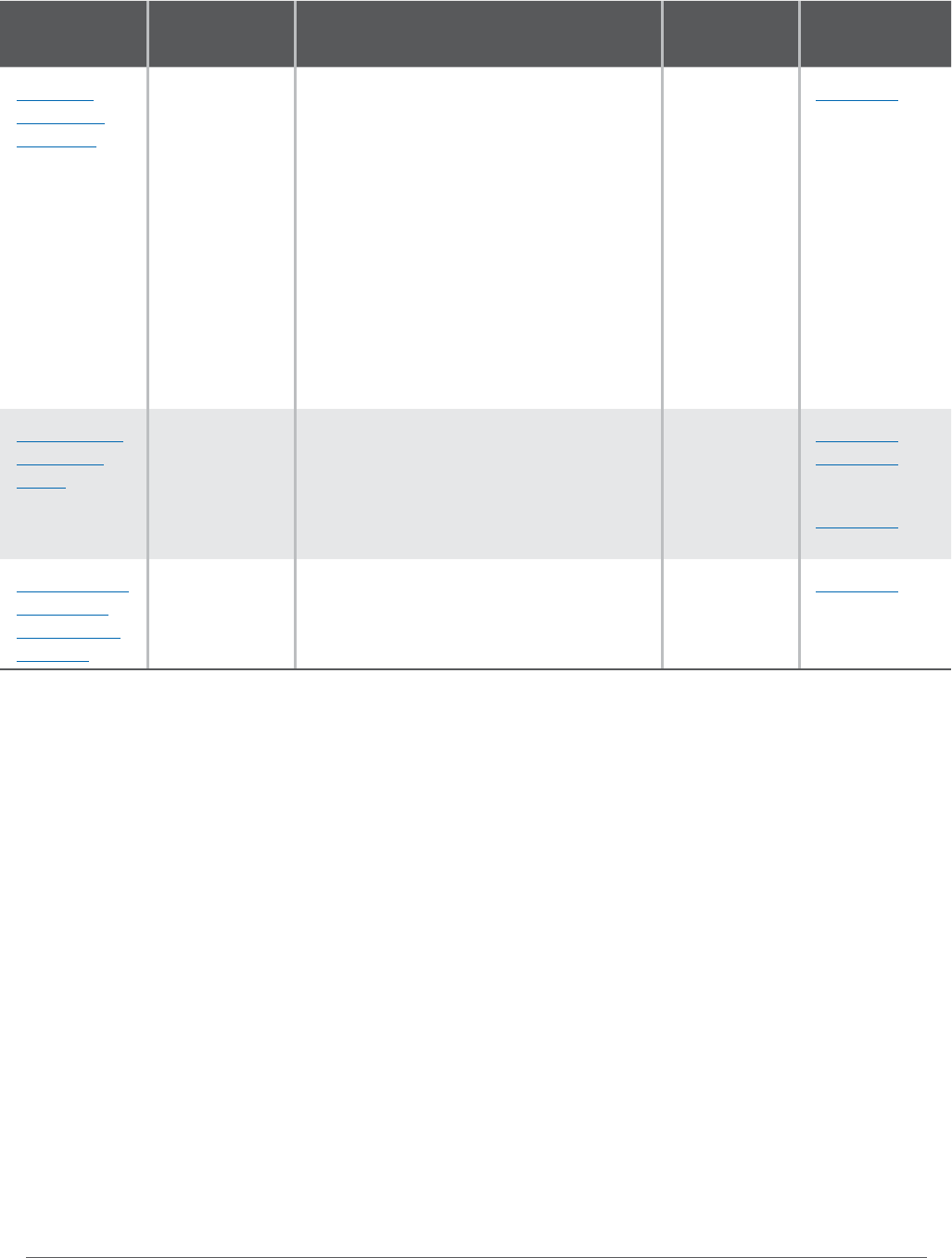
166
Revenue Guide for Washington Cities and Towns | AUGUST 2024
Revenue
source
Eligible cities Description Voter
approval?
RCW
Cannabis
(Marijuana)
Excise Tax
Cities that do
not prohibit
cannabis or
have at least
one cannabis
retailer
Quarterly distribution from State
Treasurer’s Oce () to cities that do
not prohibit cannabis businesses and
() to cities where cannabis retailers are
physically located.
No clear guidance on use of revenues,
but stated intent of I- is that cannabis
legalization will “[allow] law enforcement
resources to be focused on violent and
property crimes [and generate] new state
and local tax revenue for education, health
care, research, and substance abuse
prevention.”
No ..()(g)
Liquor Profits
and Liquor
Excise
Any city Quarterly distribution from State
Treasurer’s Oce to all cities based on
population. At least % must be used for
approved drug and alcohol treatment
programs.
No ..,
..
(Liquor excise)
..
(Liquor profits)
Mental Health
& Chemical
Dependency
Sales Tax
Tacoma; other
cities no
longer eligible
Sales tax up to .% for mental health
and drug treatment purposes. Mostly
imposed by and distributed to counties.
No ..
APPENDIX F MENTAL HEALTH AND SUBSTANCE ABUSE
Table of Contents
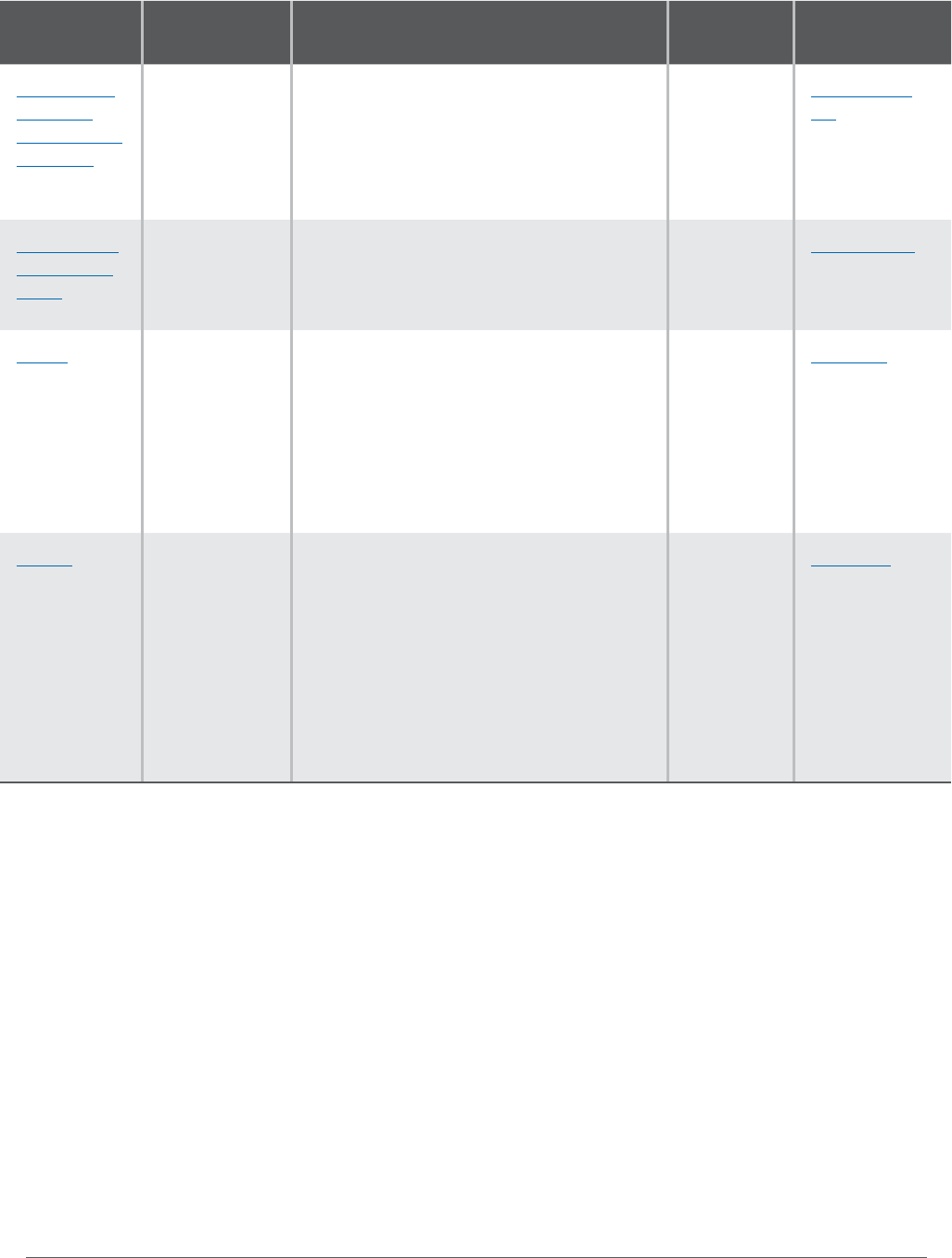
167
Revenue Guide for Washington Cities and Towns | AUGUST 2024
Revenue
source
Eligible cities Description Voter
approval?
RCW
Impact Fees
– Growth
Management
Act (GMA)
Cities fully
planning under
GMA
Fee assessed to property developers
to help pay for new or expanded capital
facilities directly addressing the increased
demand created by that development. May
only be imposed for streets, parks, schools,
and/or fire protection.
No 82.02.050 –
.110
Metropolitan
Park District
(MPD)
Any city Any city may form an MPD for park and
recreation facilities. Revenue sources
include additional property taxes up to
$. per $, AV.
Yes –
simple
majority
chapter 35.61
REET 1 Any city Real estate excise tax up to .% – may be
used for specified capital purposes/projects,
including parks and recreational facilities.
For cities fully planning under GMA, eligible
projects must be listed within the comp plan
capital facilities element. May also be used
for limited maintenance costs, subject to
additional reporting requirements.
No 82.46.010(2)
REET 2 Cities fully
planning
under Growth
Management
Act (GMA)
Additional real estate excise tax up to
.% – may be used for “capital projects”
listed within the comp plan capital facilities
element, including limited parks capital
projects. Use of REET revenues for parks
is more restrictive than REET . May also
be used for limited maintenance costs
and REET purposes (including broader
definition of parks and recreation), subject
to additional reporting requirements.
No,
except for
voluntary
GMA cities
82.46.035(2)
APPENDIX G PARKS AND RECREATION
Table of Contents
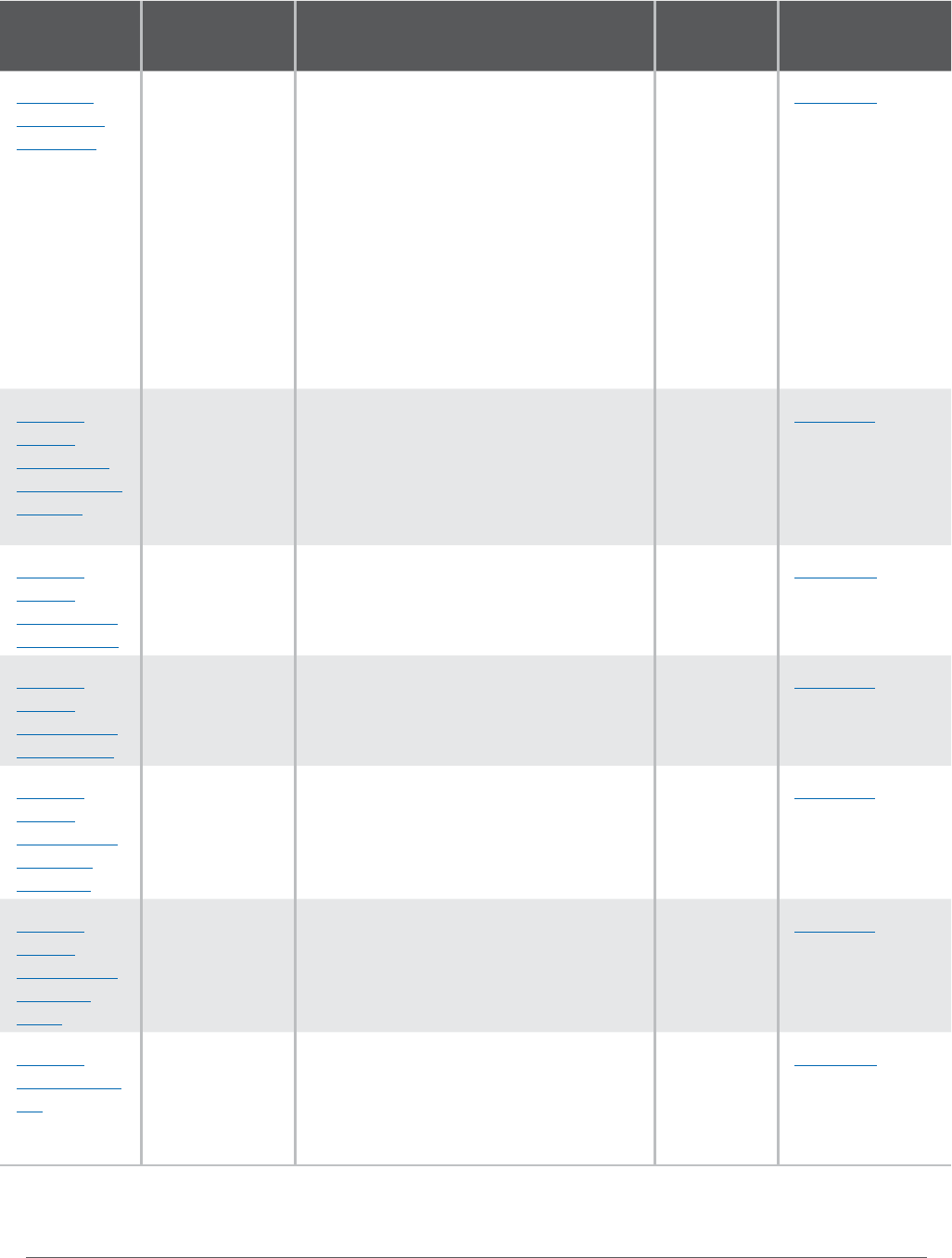
168
Revenue Guide for Washington Cities and Towns | AUGUST 2024
Revenue
source
Eligible cities Description Voter
approval?
RCW
Cannabis
(Marijuana)
Excise Tax
Cities that do
not prohibit
cannabis or
have at least
one cannabis
retailer
Quarterly distribution from State Treasurer’s
Oce () to cities that do not prohibit
cannabis businesses and () to cities where
cannabis retailers are physically located.
No clear guidance on use of revenues,
but stated intent of I- is that cannabis
legalization will “[allow] law enforcement
resources to be focused on violent and
property crimes [and generate] new state
and local tax revenue for education,
health care, research, and substance
abuse prevention.”
No ..()(g)
Criminal
Justice
Distribution
– Contracted
Services
Cities that
contract for
a majority
of their law
enforcement
services
Quarterly distribution from state to be
used for criminal justice purposes.
No ..()(a)(i)
Criminal
Justice
Distributions
– High Crime
Cities with high
crime rates
Quarterly distribution from state to be
used for criminal justice purposes.
No ..
Criminal
Justice
Distributions
– Population
All cities Quarterly distribution from state to all
cities based on population, to be used for
criminal justice purposes.
No ..()(a)(ii)
Criminal
Justice
Distributions
– Special
Programs
All cities Quarterly distribution from state to
all cities; revenues must be used for
innovative law enforcement, at-risk
children and child abuse victims, or
domestic violence victims.
No ..()(a)(ii)
Criminal
Justice
Distributions
– Violent
Crime
Cities with high
violent crime
rates
Quarterly distribution from state to be
used for criminal justice purposes.
No ..()(a)(i)
Criminal
Justice Sales
Tax
Any county
(not cities)
Sales tax of .% – revenues must
be used for criminal justice purposes.
May only be imposed by counties, but
revenue is shared with all cities within
the county on a population basis.
No ..
APPENDIX H POLICE AND CRIMINAL JUSTICE
Table of Contents

169
Revenue Guide for Washington Cities and Towns | AUGUST 2024
Appendix H – Police and Criminal Justice – continued
Revenue
source
Eligible cities Description Voter
approval?
RCW
Gambling Tax Any city
that allows
gambling
Cities that allow gambling may tax the
proceeds. Maximum tax rates depend
upon type of gambling activity. Revenues
must be used “primarily for the purpose
of public safety.”
No ..
Liquor
Excise Tax
Any city Quarterly distribution from State
Treasurer’s Oce to all cities based on
population. At least .% must be
used for public safety programs.
No ..,
..
Public Safety
Sales Tax
Any city,
as long as
county has not
imposed .%
public safety
sales tax
Sales tax up to .%. At least / of
revenues must be used for criminal justice
and/or fire protection purposes; remainder
is unrestricted and may be used for any
lawful governmental purpose. Counties
have similar authority up to .%. Cities
and counties share revenue.
Yes –
simple
majority
..
REET 1 Any city Real estate excise tax up to .% – may
be used for specified capital purposes/
projects, including law enforcement
facilities and judicial facilities. For cities
fully planning under GMA, eligible projects
must be listed within the comp plan capital
facilities element. May also be used for
limited maintenance costs, subject to
additional reporting requirements.
No ..()
REET 2 Cities fully
planning
under Growth
Management
Act (GMA)
Additional real estate excise tax up to
.%. Law enforcement facilities and
judicial facilities are not outright permitted
uses for REET funds. However, law
enforcement and judicial facilities are
eligible under REET , and some REET
funds may be used for REET purposes
subject to additional reporting requirements.
No,
except for
voluntary
GMA cities
..()
Trac Fines Any city State Supreme Court establishes fines
for trac infractions, but revenues are
shared with city where infraction occurred.
Revenues may be used for any lawful
governmental purpose, but a portion must
be dedicated to fund local courts.
No ..()
Table of Contents
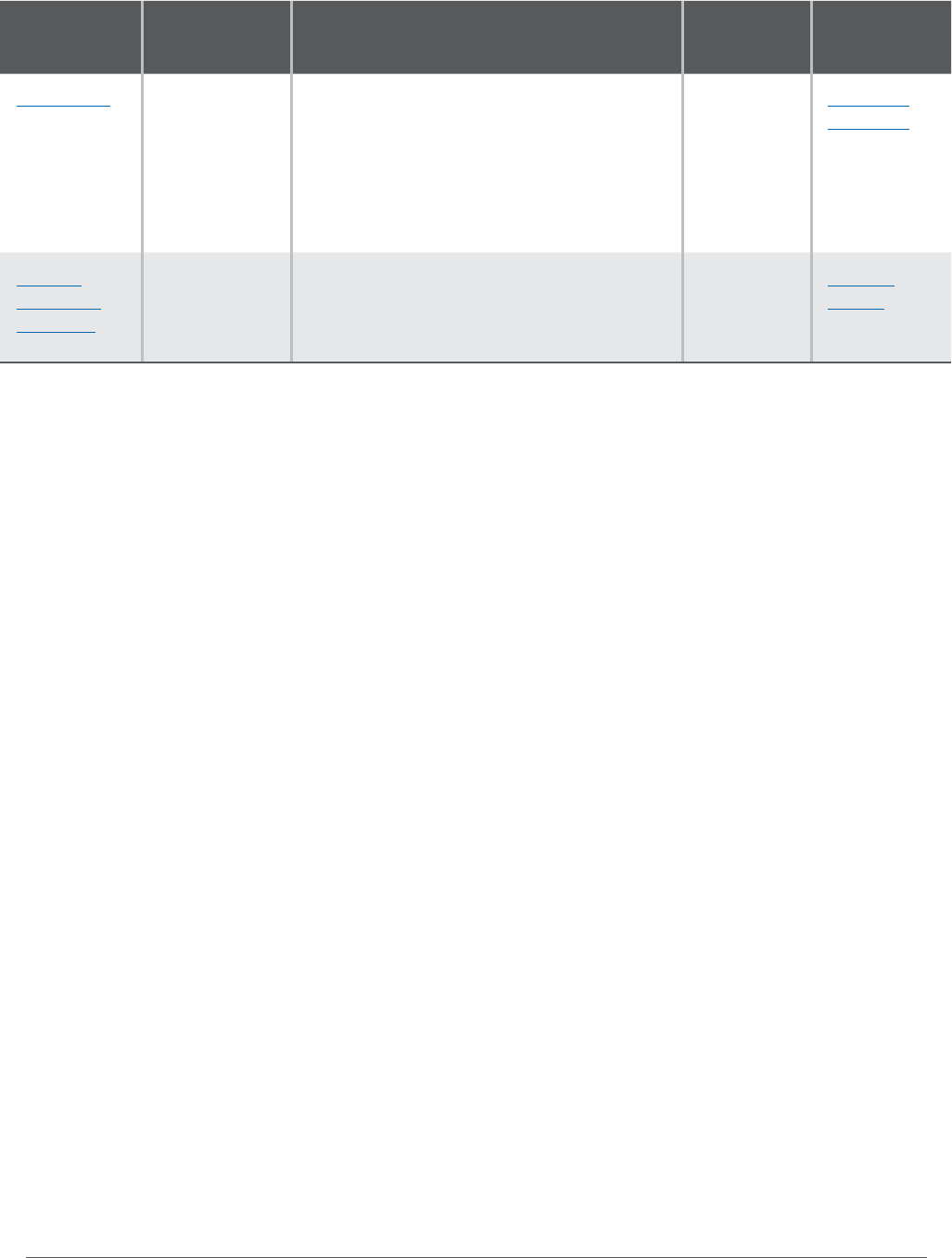
170
Revenue Guide for Washington Cities and Towns | AUGUST 2024
Revenue
source
Eligible cities Description Voter
approval?
RCW
Lodging Tax Any city Tax up to % on the sale of short-term lodging
less than days, of which % is a credit
against the state sales tax. Revenues must
generally be spent for tourism promotion.
Cities of , or more population must
establish lodging tax advisory committee
(LTAC) to guide use of revenues.
No ..,
..()
Tourism
Promotion
Area Fees
Any city Nightly per-room fee on lodging businesses
on lodging businesses with or more rooms;
must be used for tourism promotion that
increases the number of tourists to the area.
No Chapter
.
APPENDIX I – TOURISM PROMOTION
Table of Contents
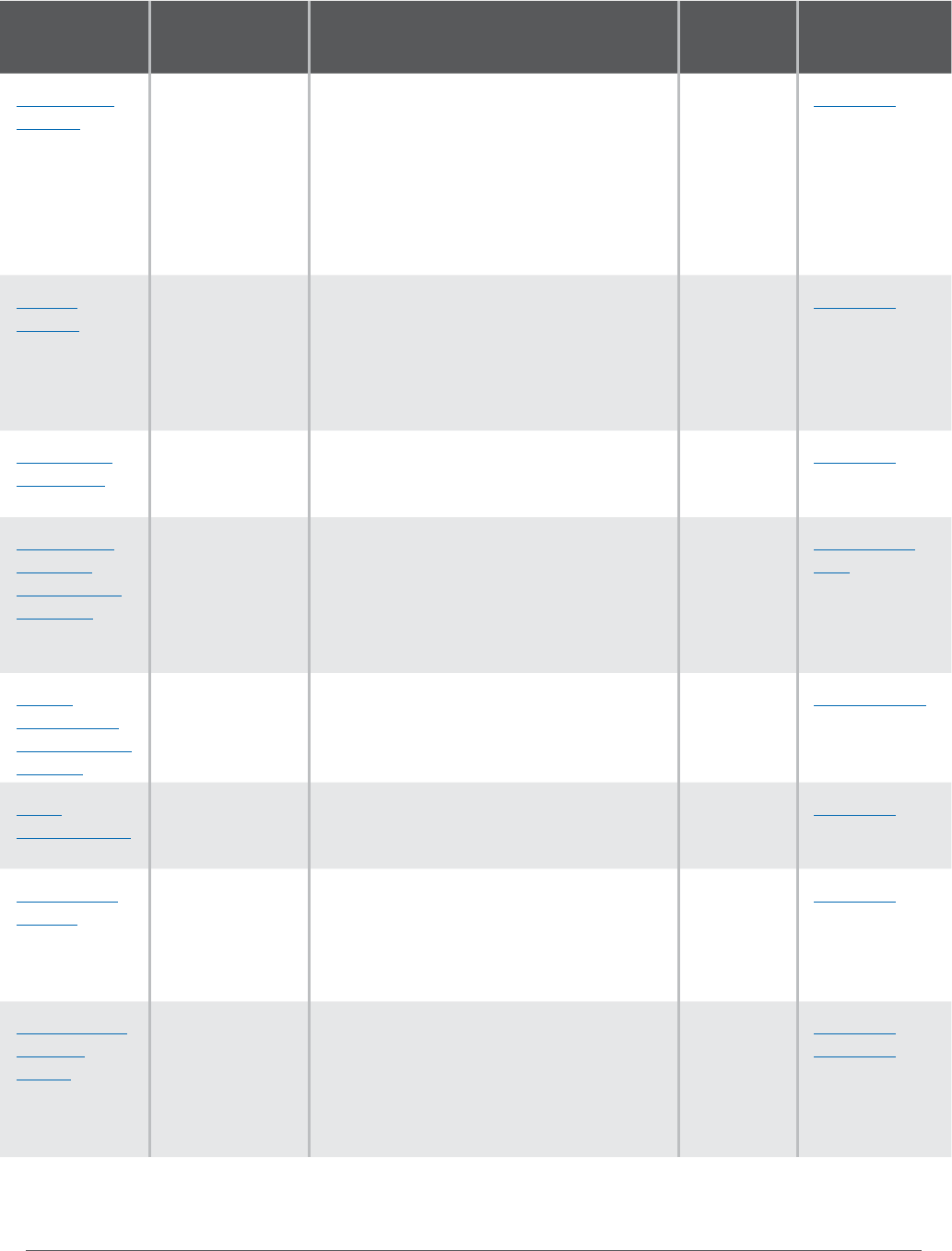
171
Revenue Guide for Washington Cities and Towns | AUGUST 2024
Revenue
source
Eligible cities Description Voter
approval?
RCW
Border Area
Fuel Tax
Any city within
miles of
a Canadian
border crossing,
or any TBD
encompassing
a Canadian
border crossing
Local gas tax up to cent per gallon on
top of other federal, state, or local gas
taxes. Revenues must be used solely for
border area jurisdiction street maintenance
and construction.
Yes –
simple
majority
..
Capron
Refunds
Cities in San
Juan and Island
counties
Refunds of state gas taxes and motor
vehicle license fees for cities in San Juan
and Island counties to compensate for
their lack of state highways and state
highway investment. Must be used for same
purposes as motor vehicle fuel tax.
No ..
Commercial
Parking Tax
Any city Tax upon commercial parking businesses.
Revenues must be used for transportation
purposes.
No ..
Impact Fees
– Growth
Management
Act (GMA)
Cities fully
planning under
GMA
Fee assessed to property developers
to help pay for new or expanded capital
facilities directly addressing the increased
demand created by that development. May
only be imposed for streets, parks, schools,
and/or fire protection.
No .. –
.
Impact
Fees – Local
Transportation
Act (LTA)
Any city Fee assessed to property developers to
help pay for transportation improvements
directly addressing the increased demand
created by that development.
No Chapter .
Local
Household Tax
Cities providing
transit service
Excise tax up to $ per month per household
for public transportation purposes; may not be
imposed concurrently with transit sales tax.
No ..
Local Option
Gas Tax
Any county
(not cities)
Any county may impose a countywide gas tax
of % of the state gas tax rate, in addition
to existing federal, state, or local gas taxes.
Revenues are shared with cities and must be
used for transportation/highway purposes.
Yes –
simple
majority
..
Motor Vehicle
Fuel Tax
(MVFT)
All cities Monthly distribution from state to all cities
based on population. Revenues must be used
for designated street, road, and highway
purposes; must use at least .% for
pedestrian, equestrian, or bicycle trails unless
such amount would be $ or less per year.
No ..,
..
APPENDIX J – TRANSPORTATION
Table of Contents
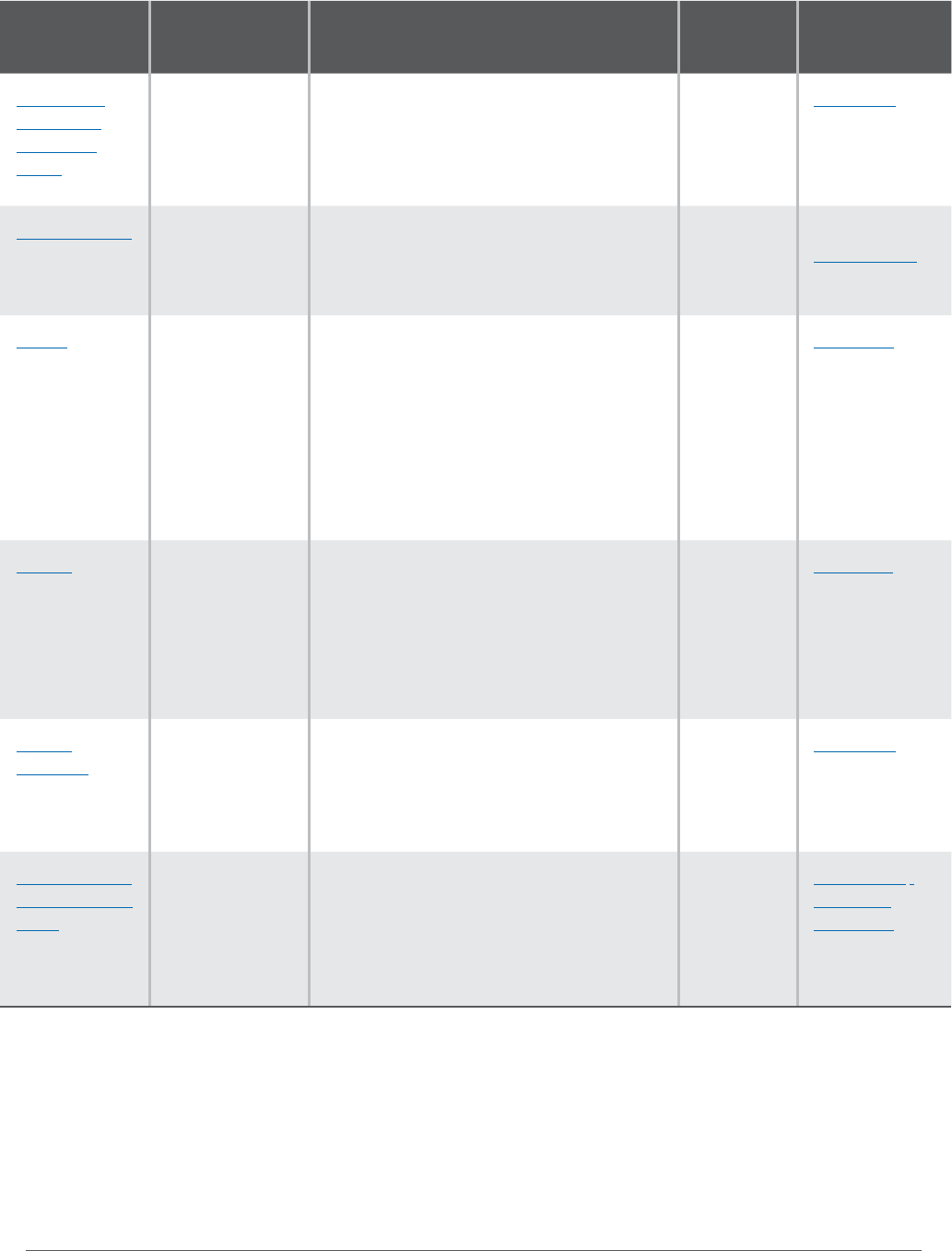
172
Revenue Guide for Washington Cities and Towns | AUGUST 2024
Revenue
source
Eligible cities Description Voter
approval?
RCW
Multimodal
Funds and
Increased
MVFT
All cities Quarterly distribution from state to all cities
based on population. Increased MVFT
must be spent for same purposes as motor
vehicle fuel tax; multimodal funds may be
spent for any transportation purpose.
No ..
Parking Meters Any city Parking meter fees may be used for
administrative costs, parking studies, and
acquisition and maintenance of o-street
parking facilities.
No WAC:
--
REET 1 Any city Real estate excise tax up to .% – may
be used for specified capital purposes/
projects, including transportation capital
projects. For cities fully planning under
GMA, eligible projects must be listed within
the comp plan capital facilities element.
May also be used for limited maintenance
costs, subject to additional reporting
requirements.
No ..()
REET 2 Cities fully
planning under
GMA
Additional real estate excise tax up to
.% – may be used for “capital projects”
listed within the comp plan capital facilities
element, including transportation capital
projects. May also be used for limited
maintenance costs, subject to additional
reporting requirements.
No,
except for
voluntary
GMA cities
..()
Transit
Sales Tax
Cities providing
transit service
Sales tax up to .% for public transportation
purposes. Few cities provide transit service
directly, so typically this sales tax authority is
used by public transportation benefit areas
(PTBAs) or other transit providers.
Yes –
simple
majority
..
Transportation
Benefit District
(TBD)
Any city Special taxing district to generate revenue
for transportation projects included in a
local, regional, or state transportation plan.
Most common TBD revenue sources are
sales taxes and vehicle license fees, but
some other options are available.
Some
revenue
sources
require
voter
approval
..,
..()(a),
..()
Appendix J – Transportation – continued
Table of Contents
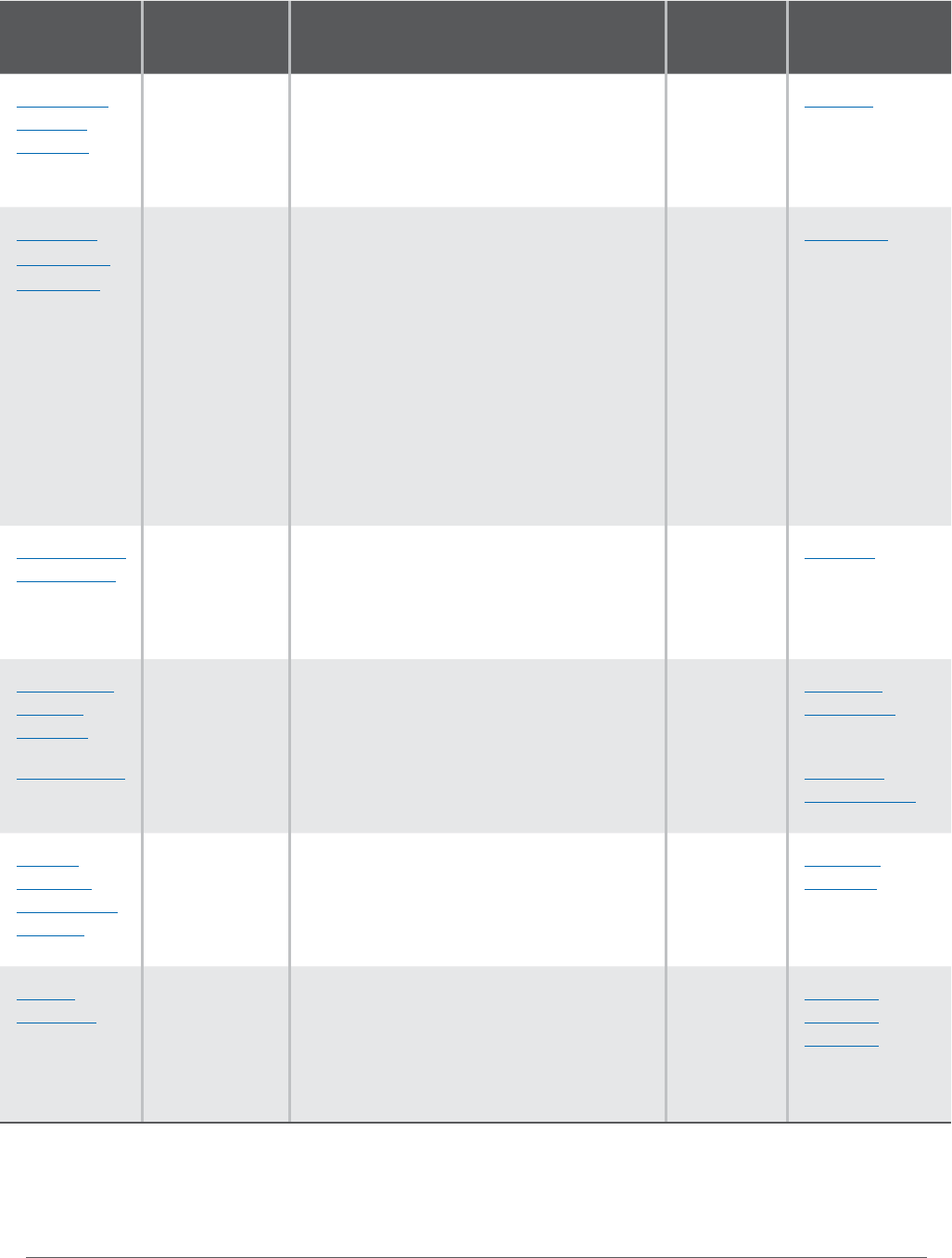
173
Revenue Guide for Washington Cities and Towns | AUGUST 2024
Revenue
source
Eligible cities Description Voter
approval?
RCW
Annexation
Services
Sales Tax
Certain cities
in King,
Pierce, and
Snohomish
counties
Credit against state sales tax for certain
cities that annexed territory prior to January
, , to help defray the costs of
providing municipal services to the area.
No 82.14.415
Cannabis
(Marijuana)
Excise Tax
Cities that do
not prohibit
cannabis or
have at least
one cannabis
retailer
Quarterly distribution from State Treasurer’s
Oce () to cities that do not prohibit
cannabis businesses and () to cities where
cannabis retailers are physically located.
No clear guidance on use of revenues,
but stated intent of I- is that cannabis
legalization will “[allow] law enforcement
resources to be focused on violent and
property crimes [and generate] new state
and local tax revenue for education, health
care, research, and substance abuse
prevention.”
No
69.50.540(2)(g)
Fire Insurance
Premium Tax
Cities with a
pre-LEOFF fire
pension fund
Annual distribution from State Treasurer’s
Oce to cities with firefighters’ pension
funds, based on their proportionate share
of firefighters. Revenues must be used for
firefighters’ pension fund.
No 41.16.050
Investments
(Interest
Earnings)
Any city Any city may invest excess monies to
generate additional income for one or
more funds.
No 35.39.034,
35A.40.050
Refund Levies Any city Property tax levies to pay for property tax
administrative refunds or refunds due to
judgments.
No 84.69.020,
Chapter 84.68
Surplus
Transfers
from Utilities
and LIDs
Cities with a
utility or LID
surplus
Cities may be able to transfer surplus
funds from a local improvement district
(LID) or utility to the general fund, but only
under certain circumstances. Cities should
generally not have utility surpluses.
No 35.37.020,
35.27.510
Timber
Excise Tax
Cities with
timber
assessed
value
Credit up to % against state timber excise
tax. Imposed by counties, which share
revenue with other taxing districts based
on timber sales, timber assessed value,
and levy rates. Eligible cities will receive a
distribution for all of their levies.
No 84.33.041,
84.33.051,
84.33.081
APPENDIX K – MISCELLANEOUS REVENUES
Table of Contents

174
Revenue Guide for Washington Cities and Towns | AUGUST 2024
Recommended Resources
Below are additional resources from other organizations that provide further explanation of local government
revenues and distributions.
Revenue Sources Generally
Washington Department of Revenue:
• Statistics & Reports – Comprehensive website tool to create interactive sales and use tax, property tax, and
other local government tax reports.
Property Taxes
Washington Department of Revenue:
• Property Tax Levies Operations Manual – Very comprehensive and detailed manual for administering
property taxes.
• Ballot Measure Requirements – Overview of voted property tax levies, including types of voted levies,
the levy lid, election dates, and ballot title requirements.
Sales Taxes and Other Excise Taxes
Washington Department of Revenue:
• Local Tax Reference Guide – Summaries for all local sales and use taxes, including lodging tax, credits against
the state sales tax, and brokered natural gas use tax, as well as E-911 excise taxes and rental car taxes.
• Tax Reference Manual – General information and history for selected state and local excise taxes;
addresses state sales taxes but not local sales taxes.
• Local Sales and Use Tax Distribution – Annual summaries of sales tax distributions by type and
jurisdiction.
State Distributions to Local Governments
Washington State Fiscal Website:
• State Spending: Distributions by Local Entities – Lists state shared revenues for each jurisdiction for recent
state fiscal years. Click on the icon next to the distribution source name for a detailed description and
history of that revenue stream.
• Distributions to Local Entities – Interactive revenue distribution reports for local government entities from
2012 to present by distribution source, by local government entity, or source totals. Distribution amounts
reported are based upon the state fiscal period of July 1 to June 30. Under “Reports and Tools,” click on
“Local Tax Distribution.”
Washington State Treasurer’s Oce:
• Local Government Revenue Distributions – Brief descriptions, contact information, and distribution data for
each local distribution source.
Table of Contents

PUB--
1.800.933.6772
MRSC.org
facebook.com/MRSCWA
linkedin.com/company/mrsc
@MRSC_WA
OFFICE 225 Tacoma Ave S., Tacoma, WA 98405
MAILING 1712 6th Ave, Suite 100, PMB 1330, Tacoma, WA 98405
